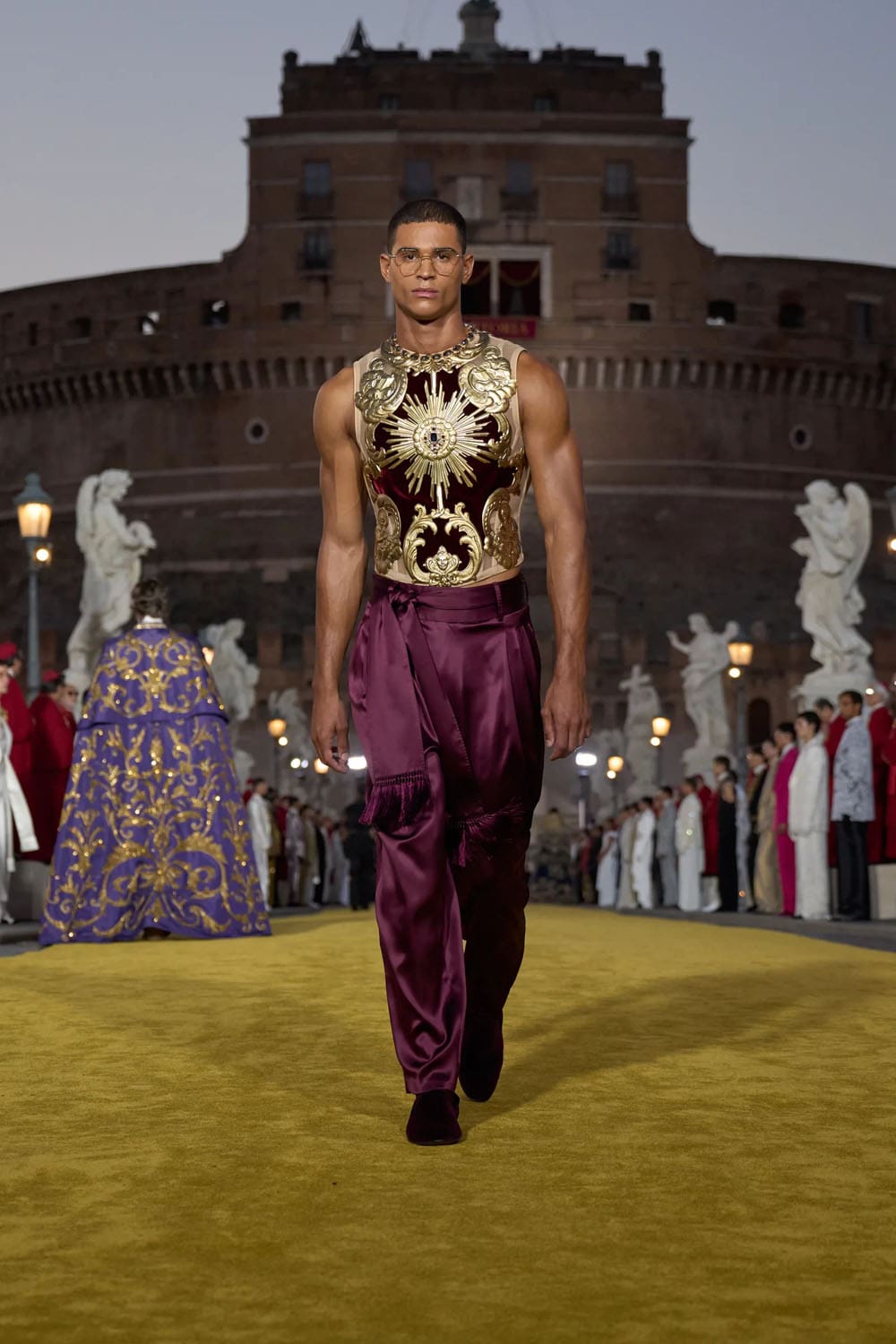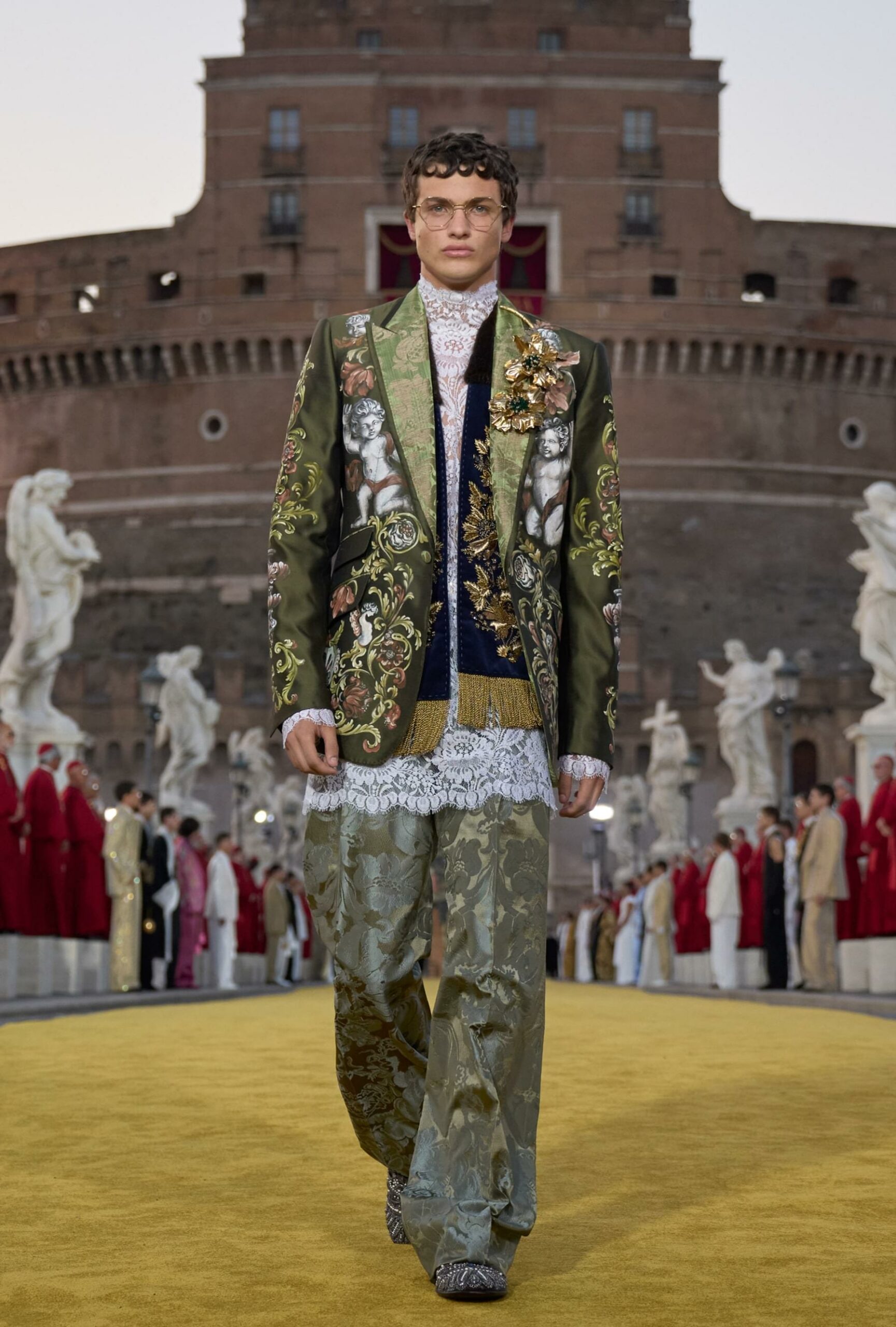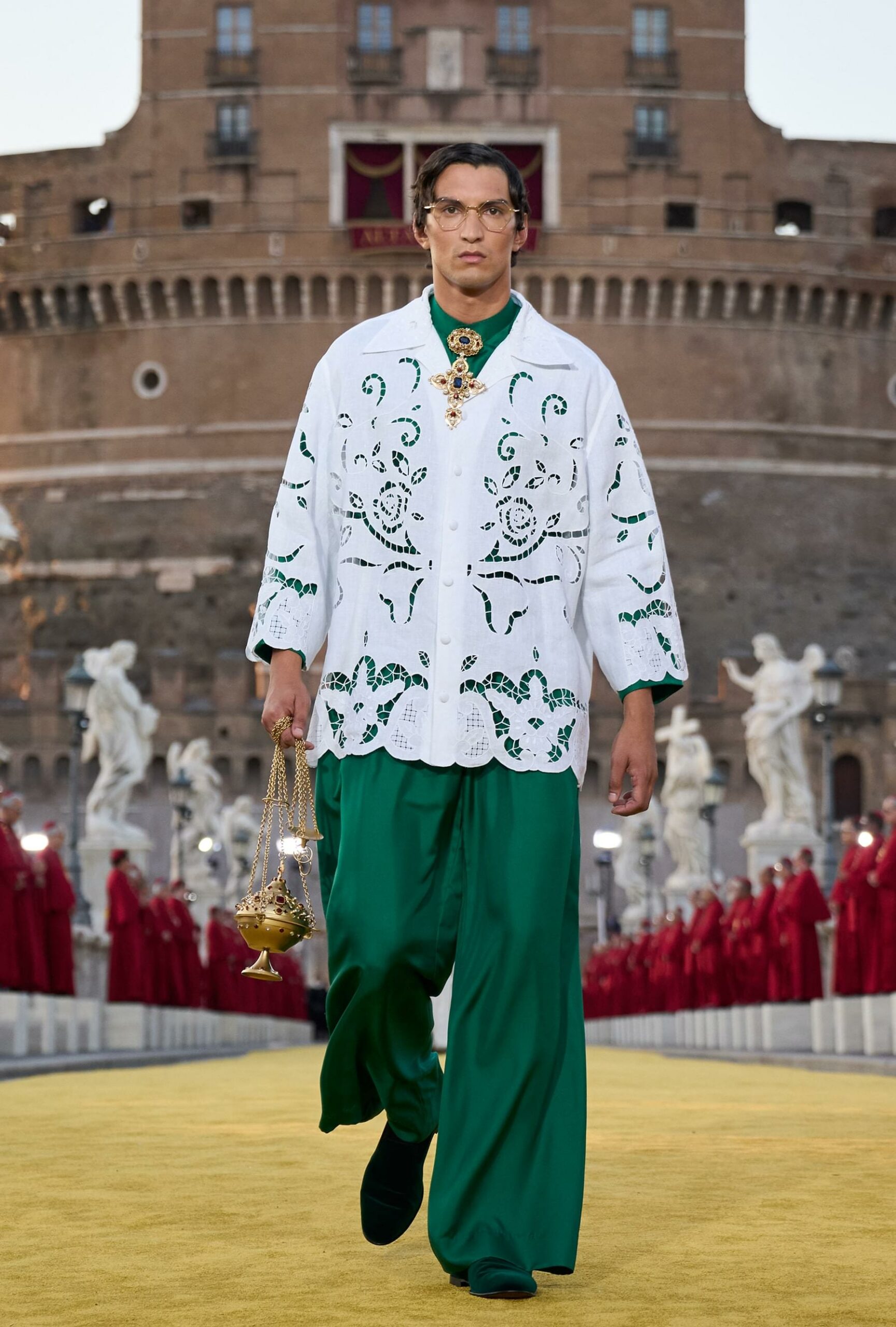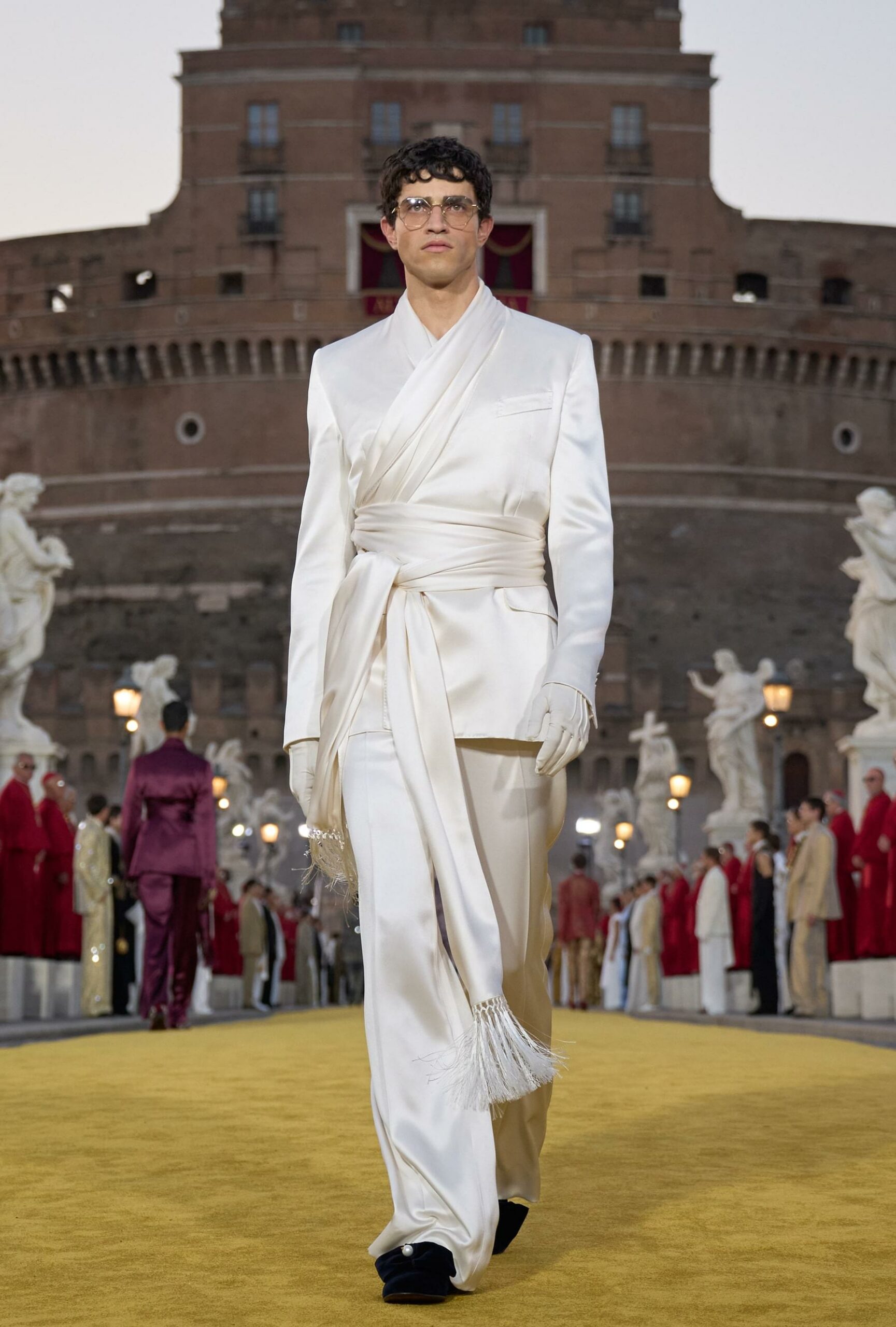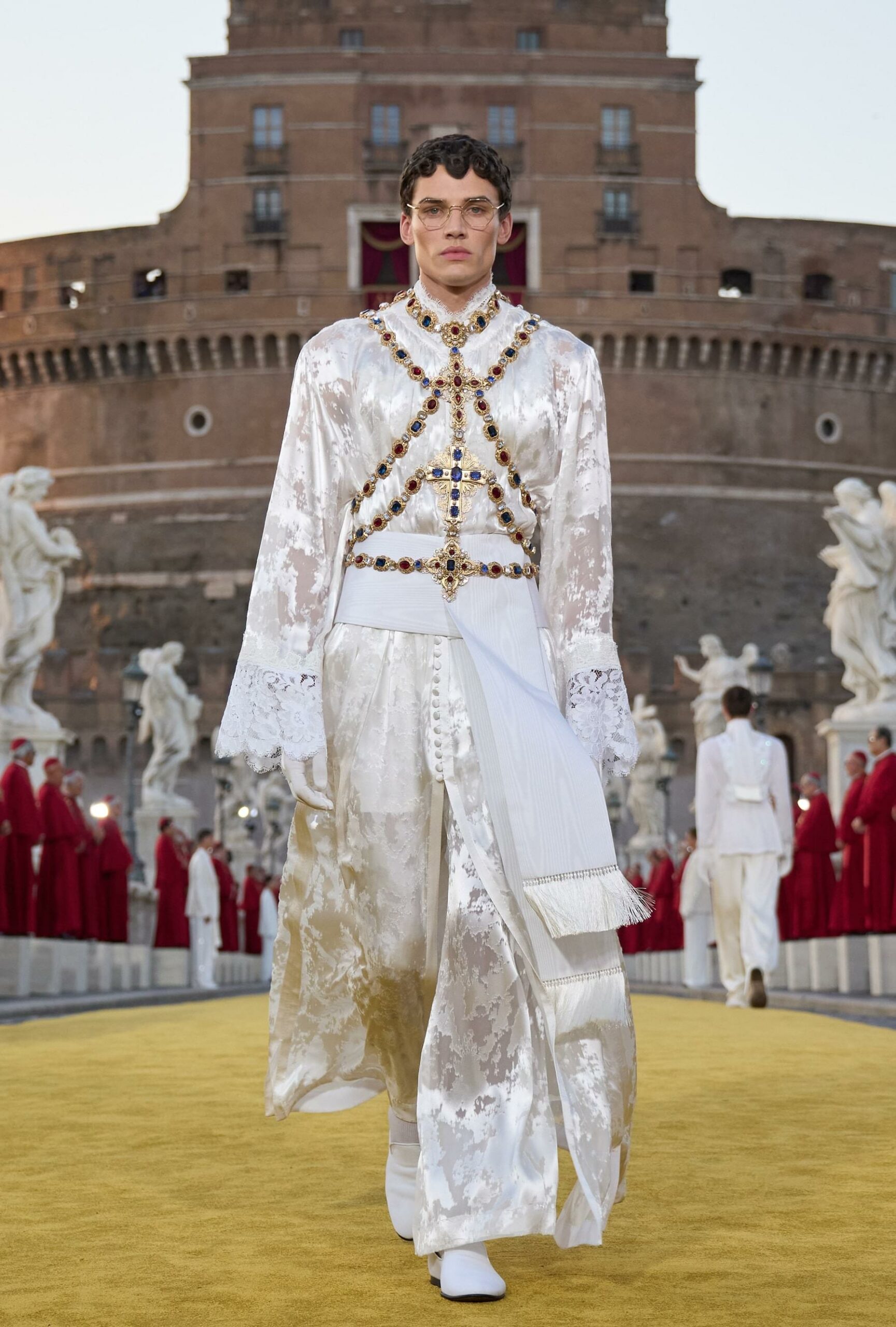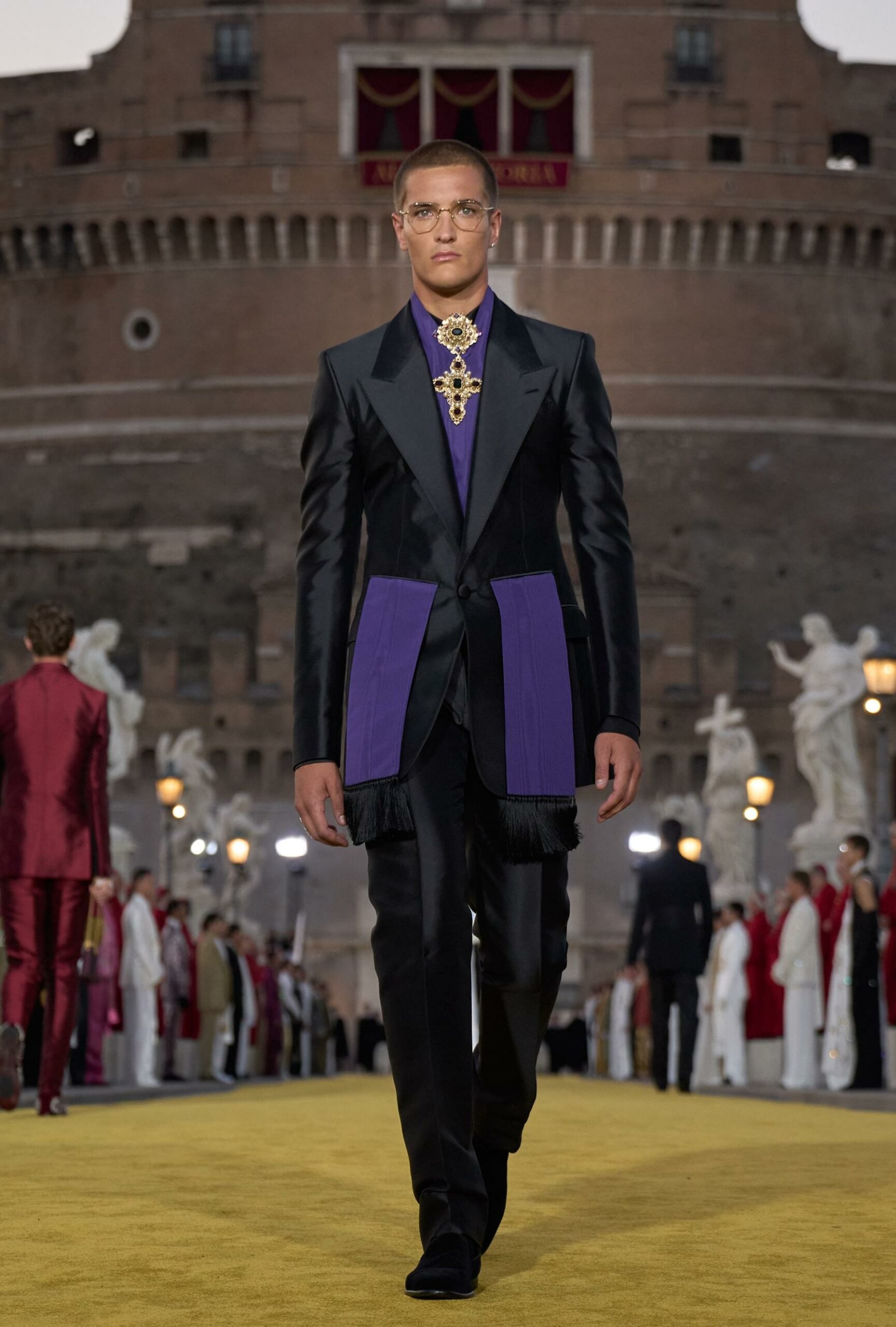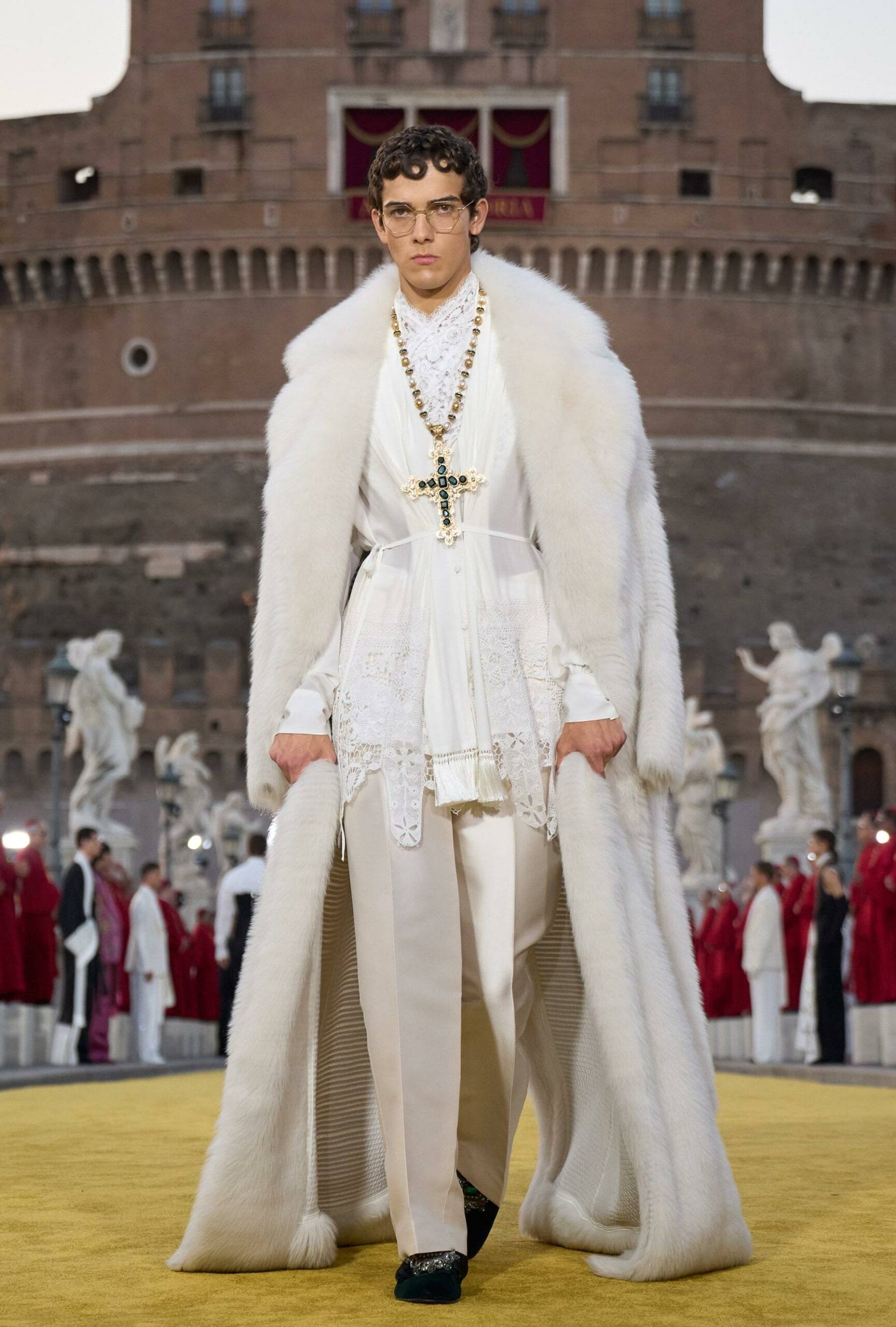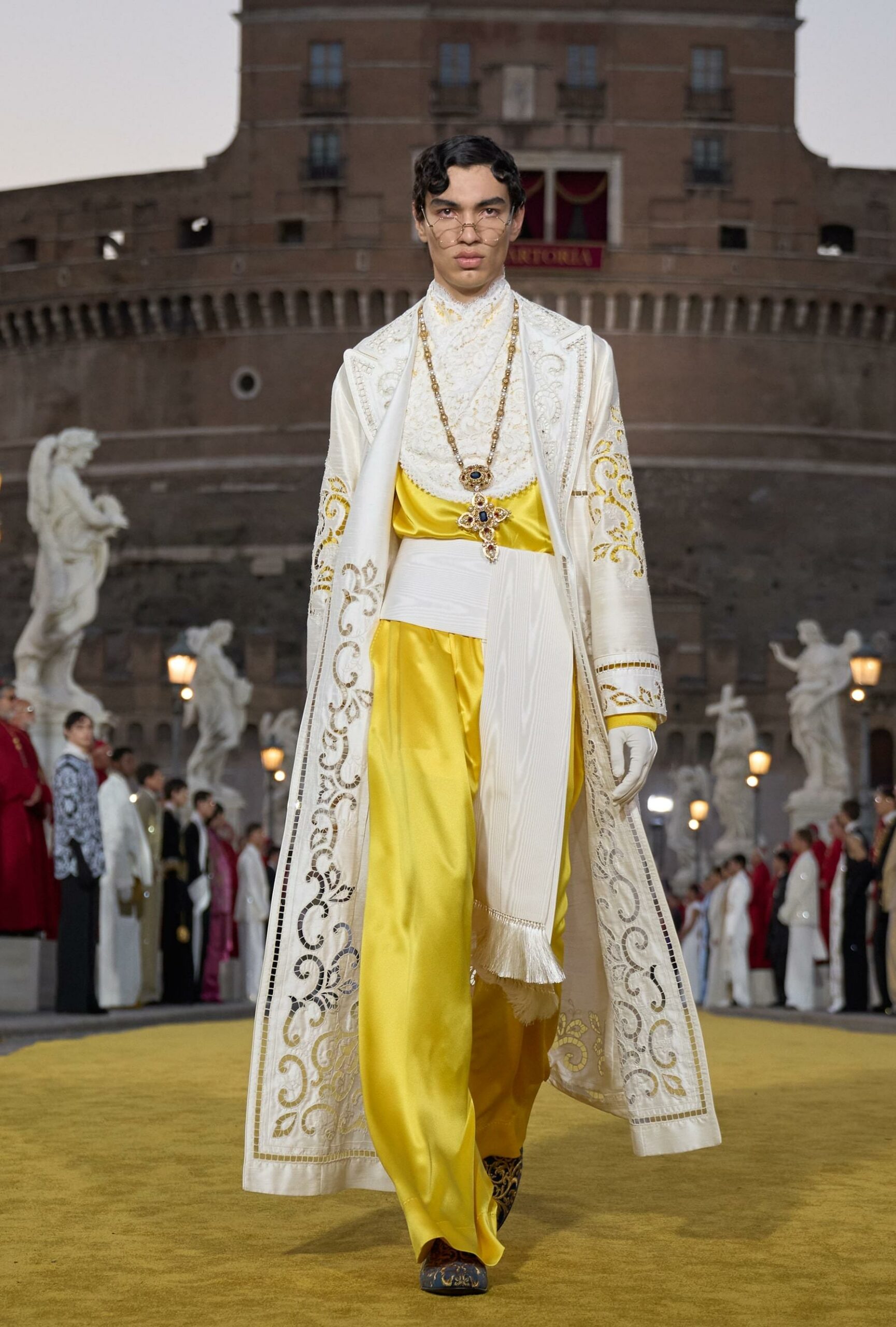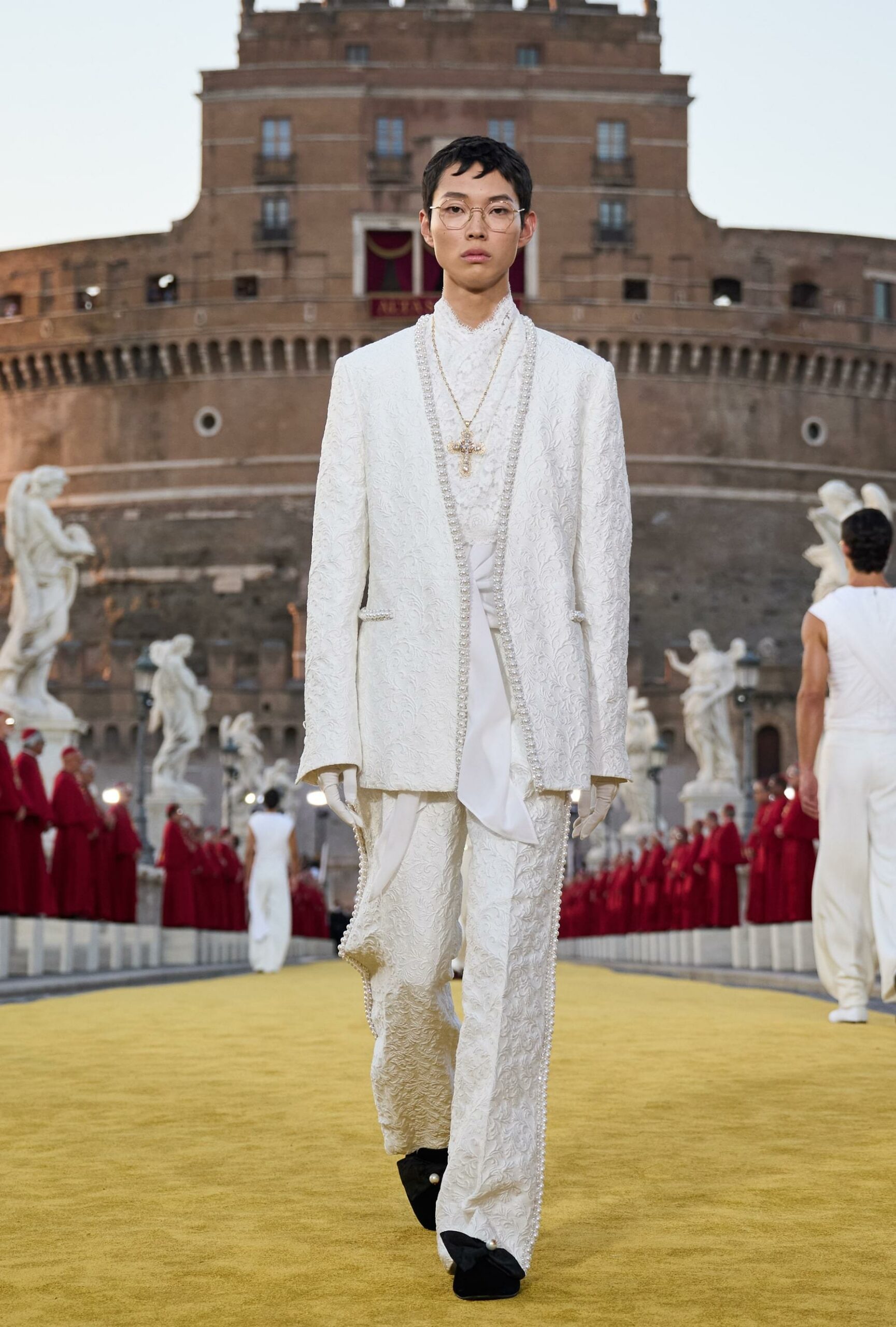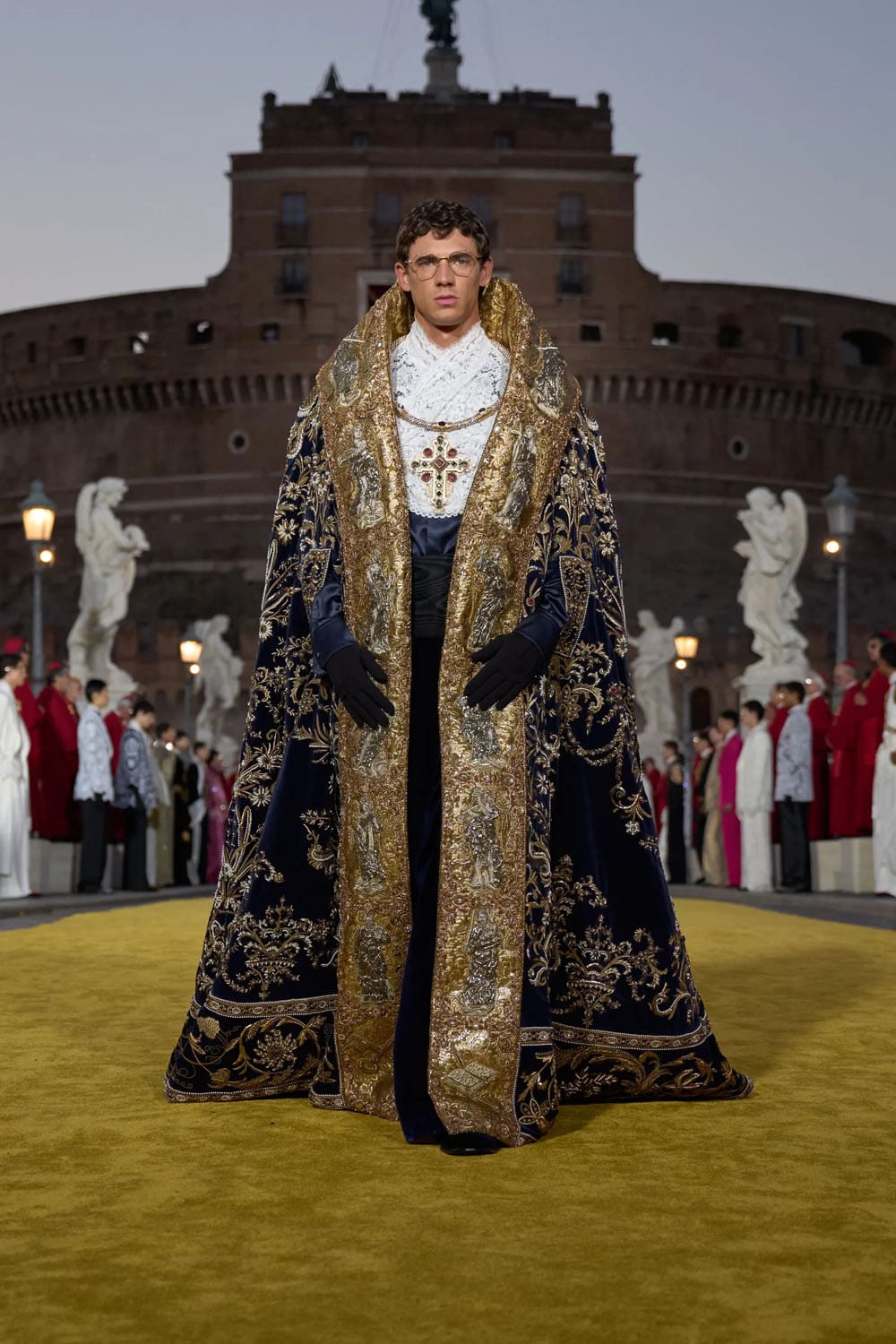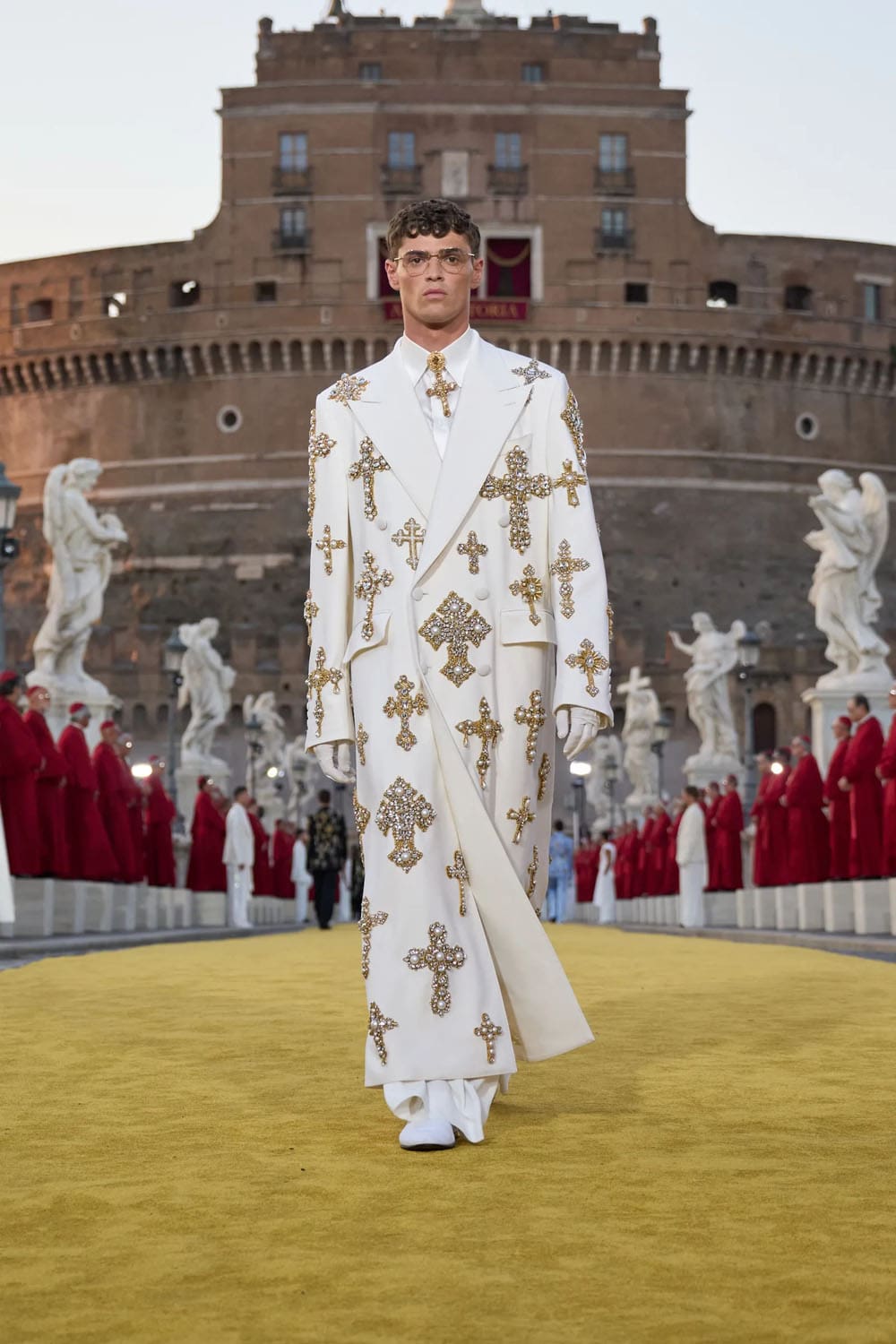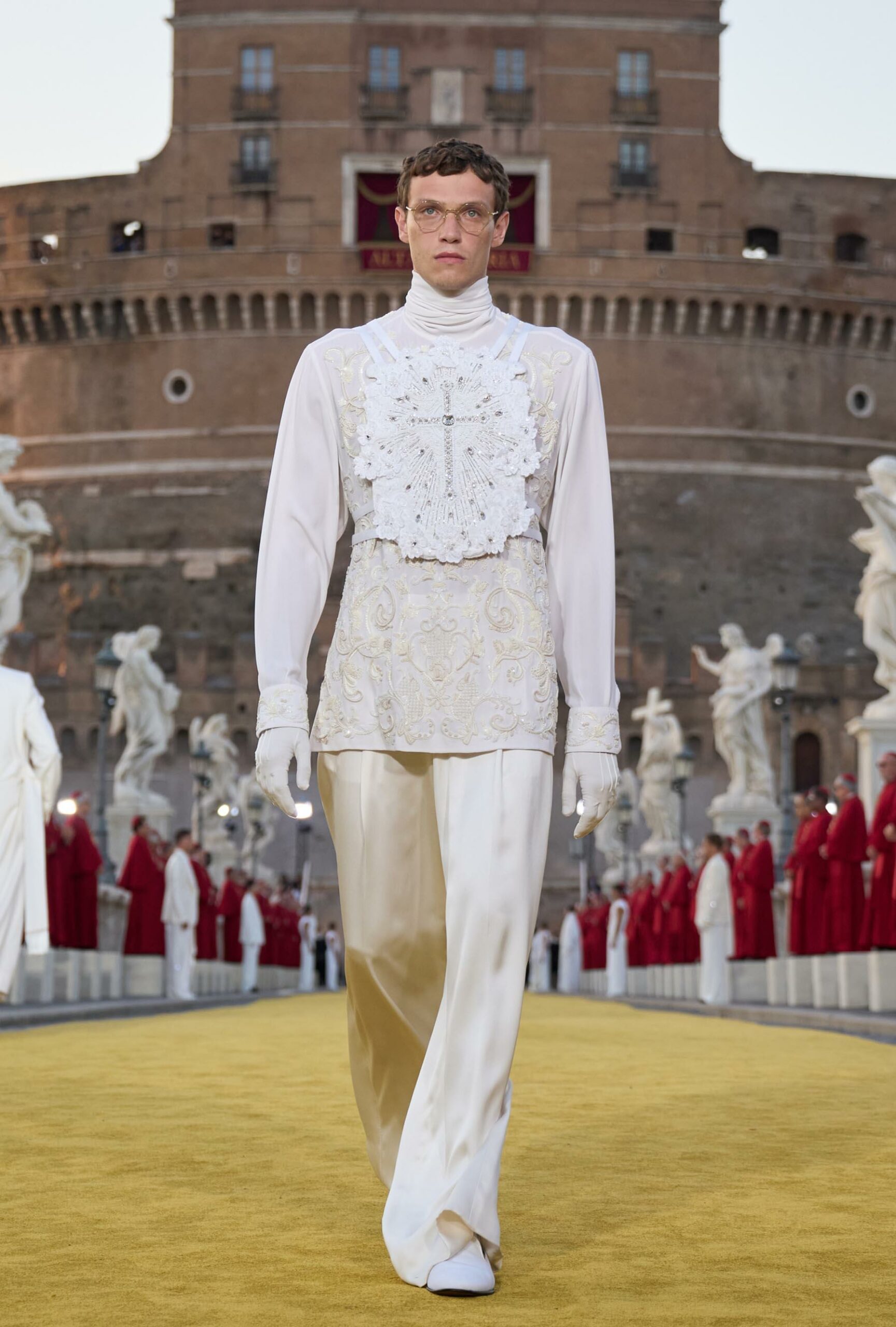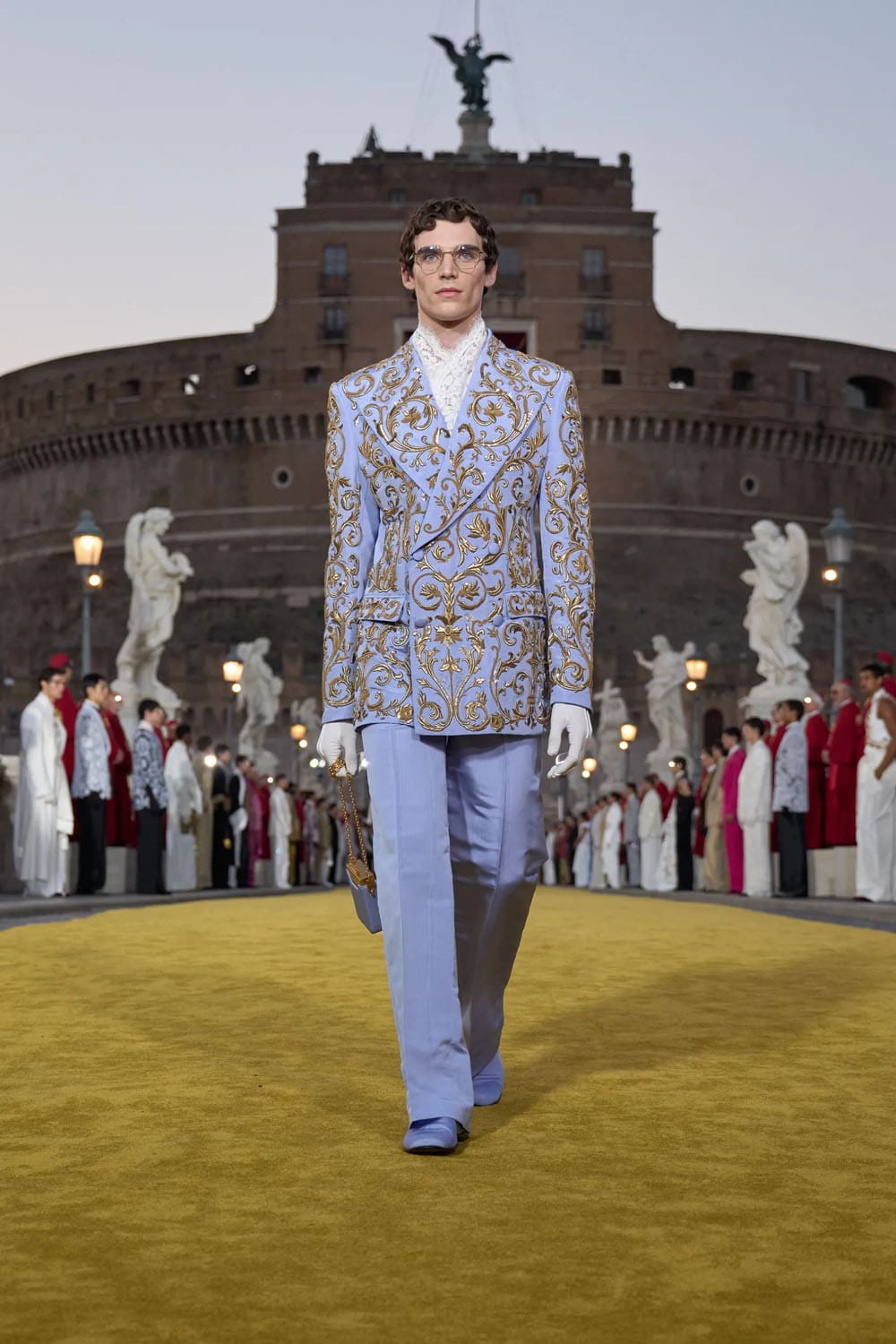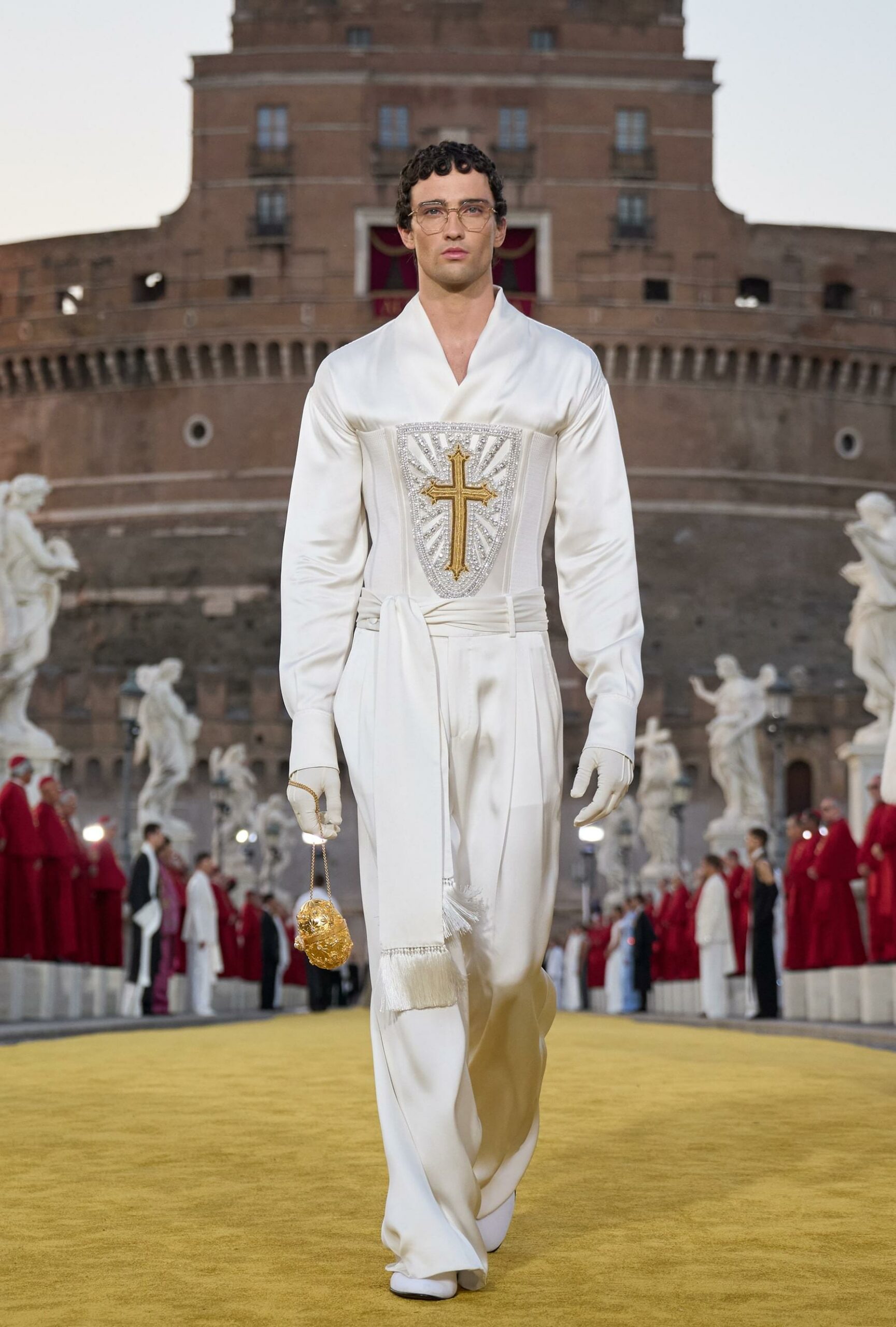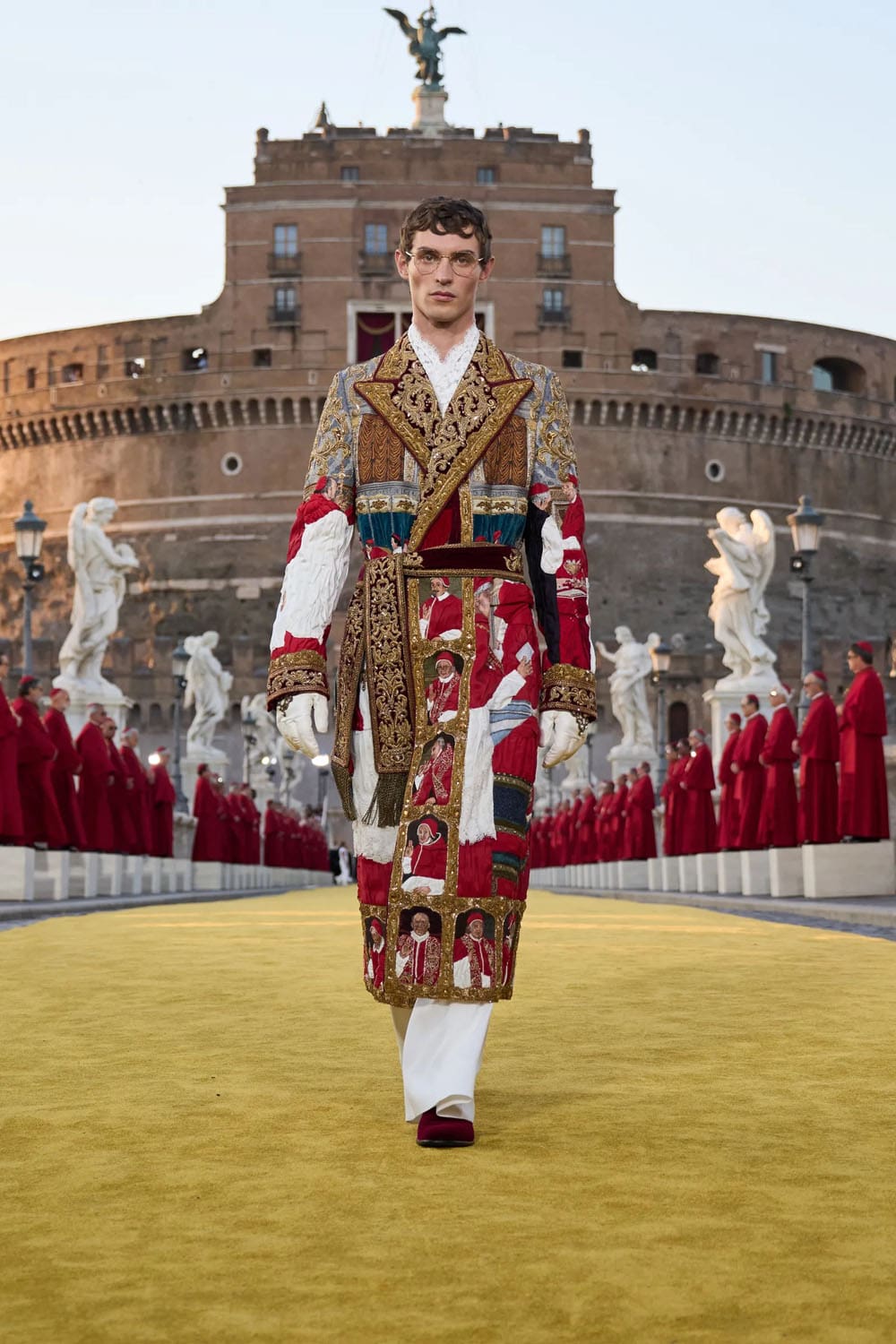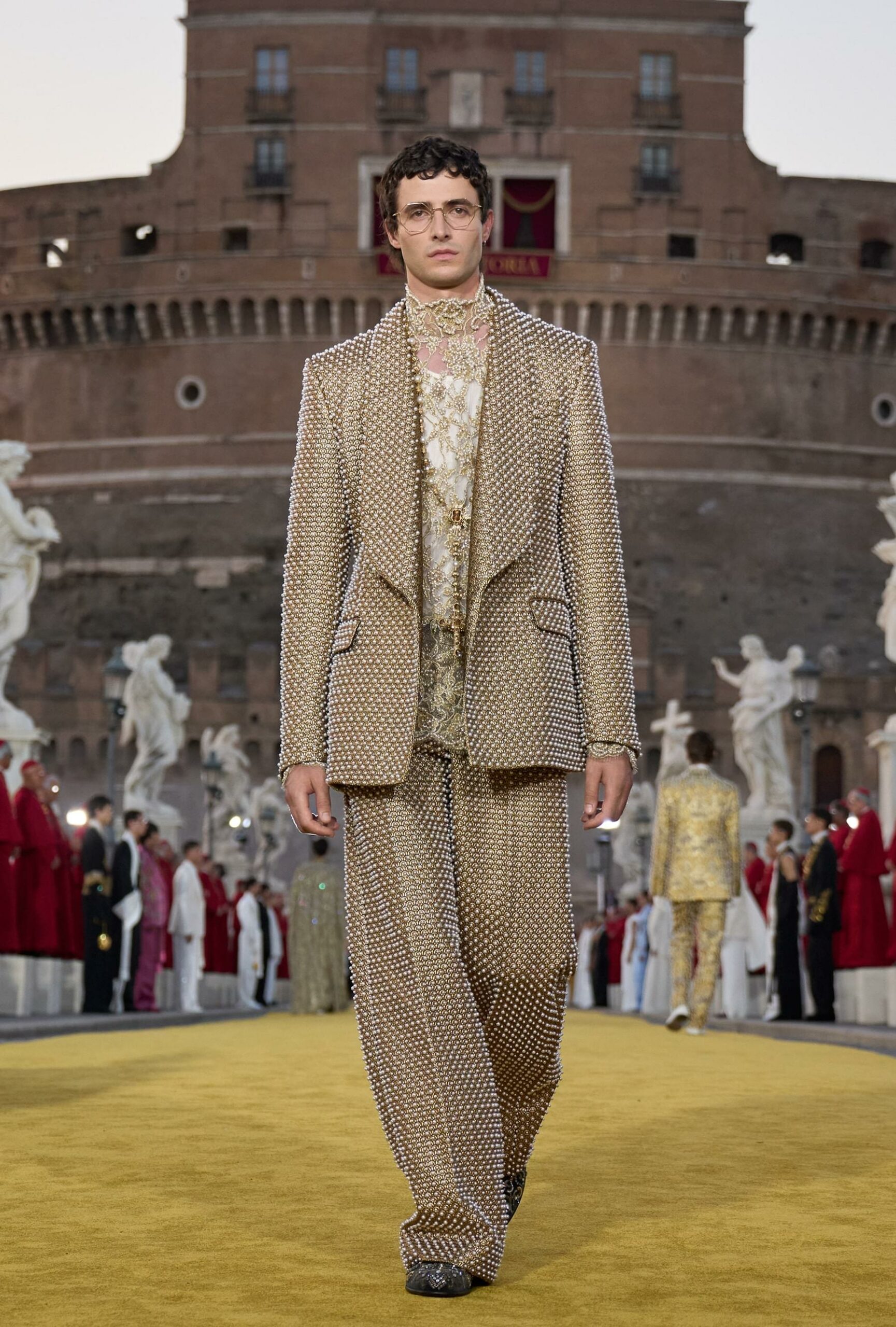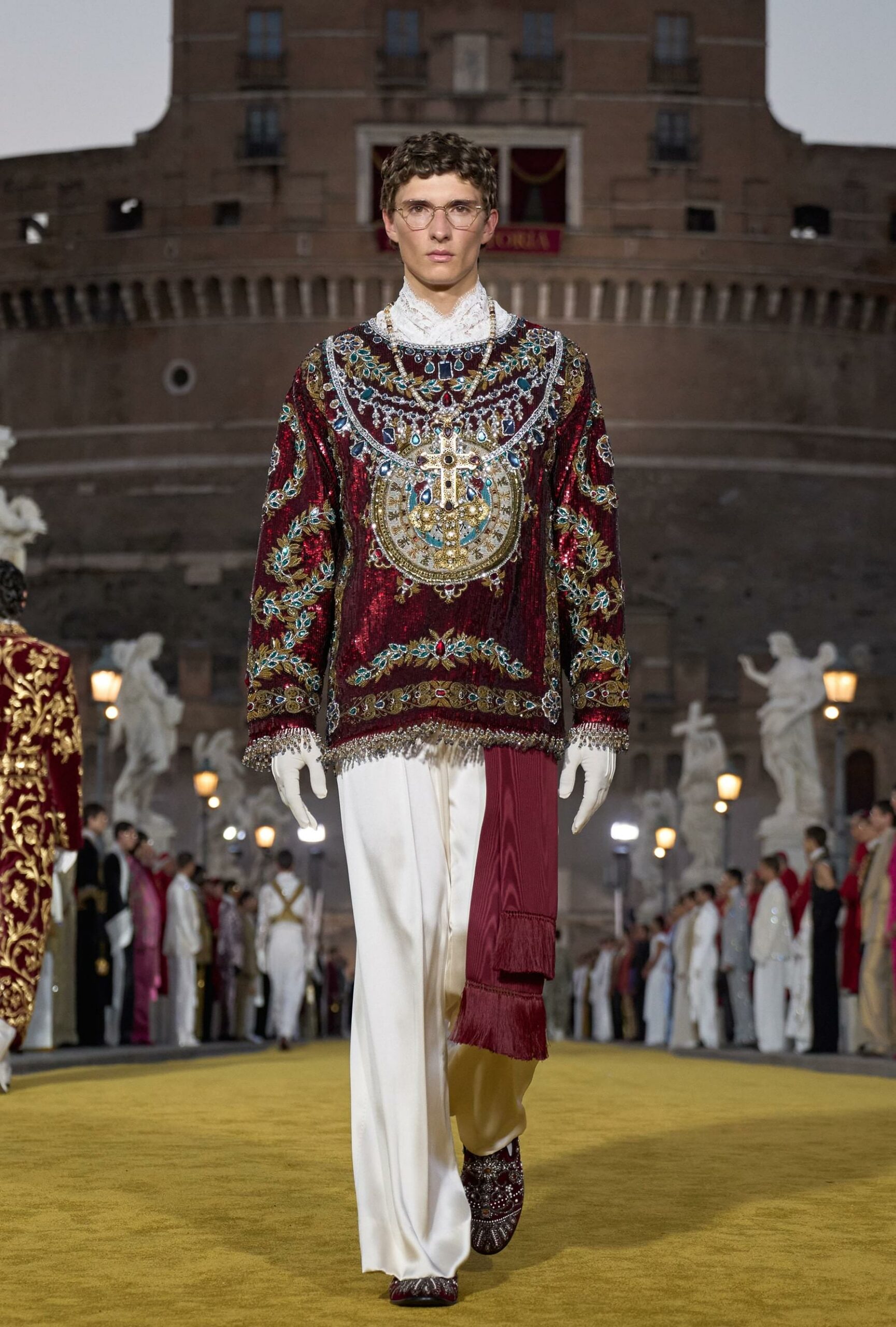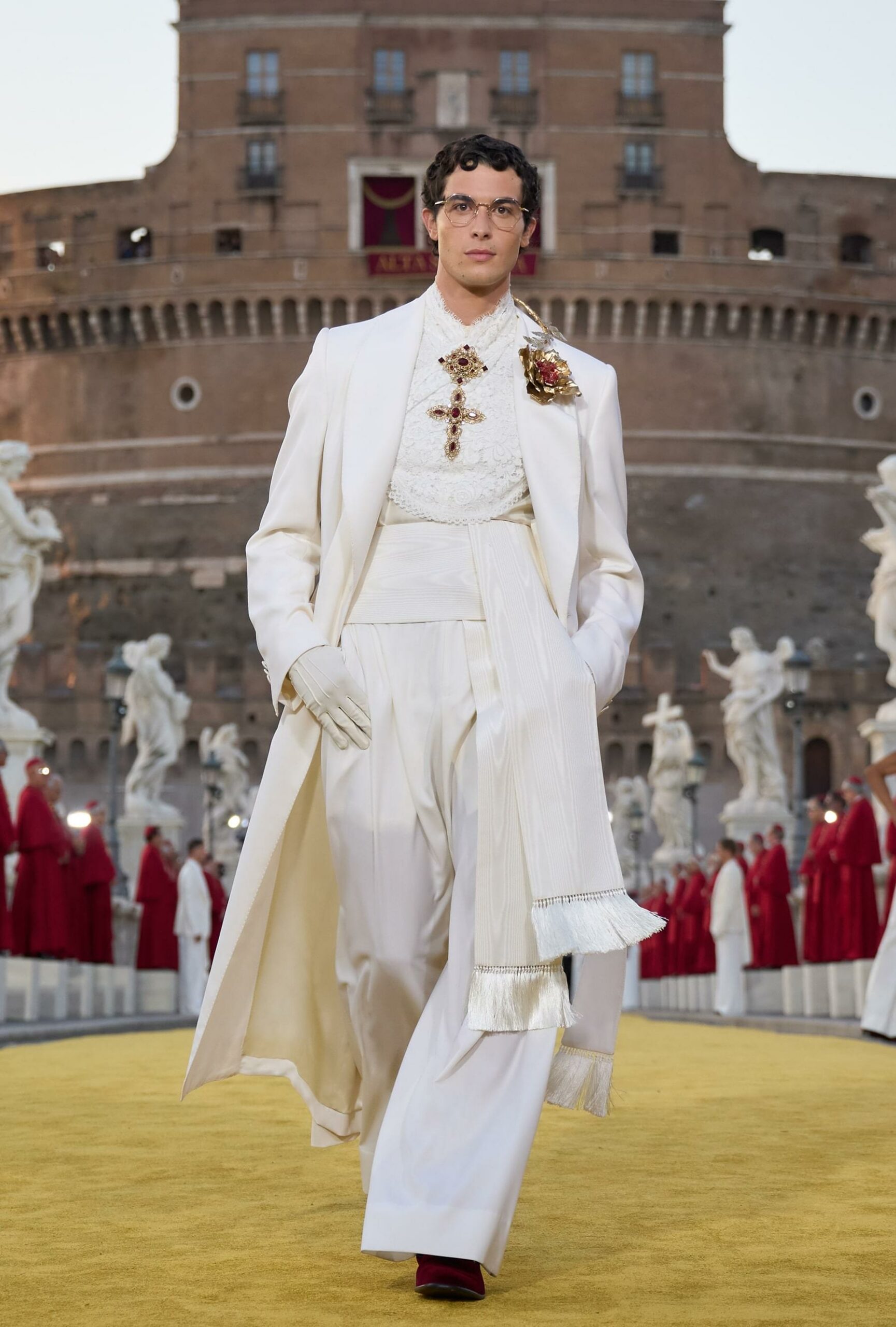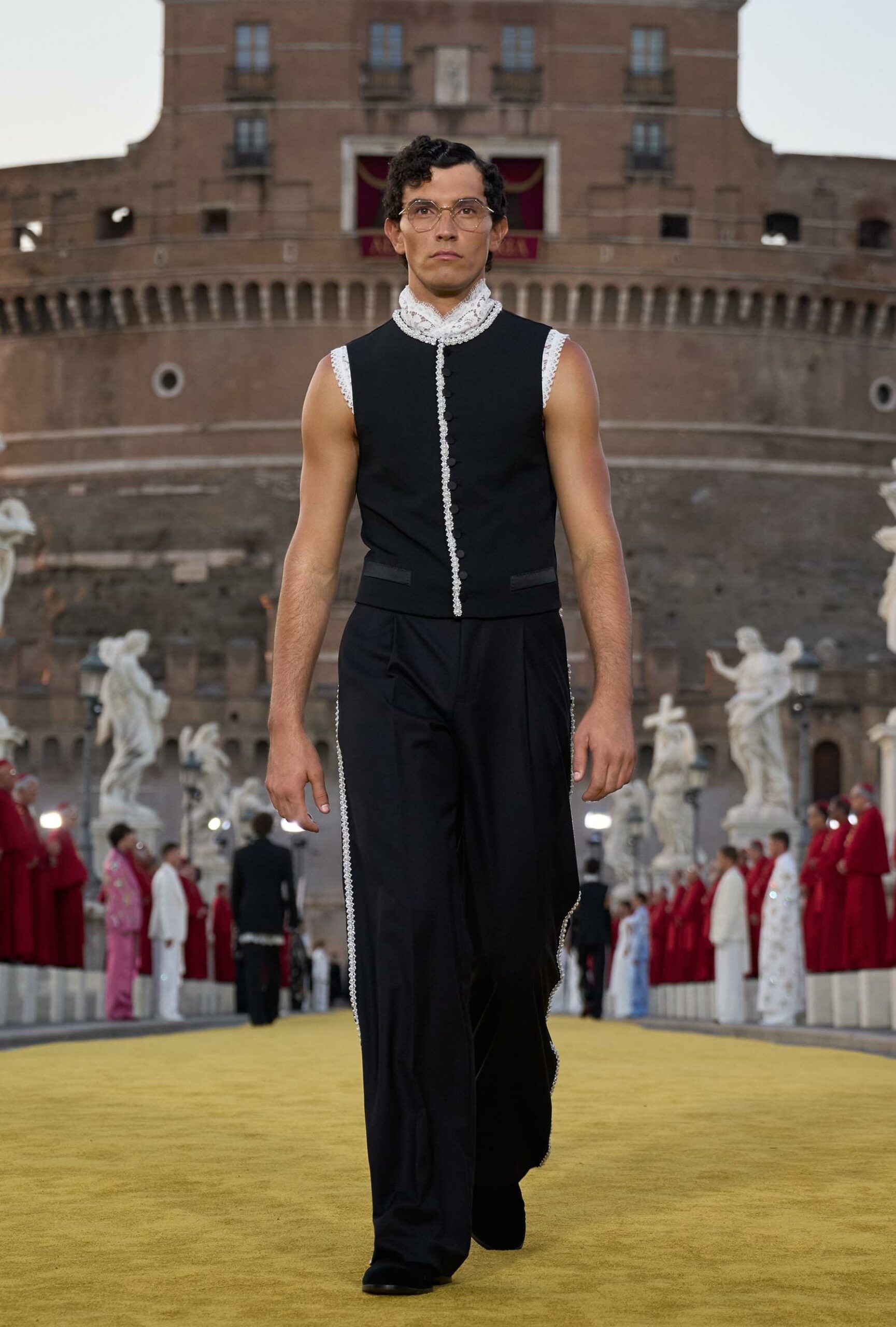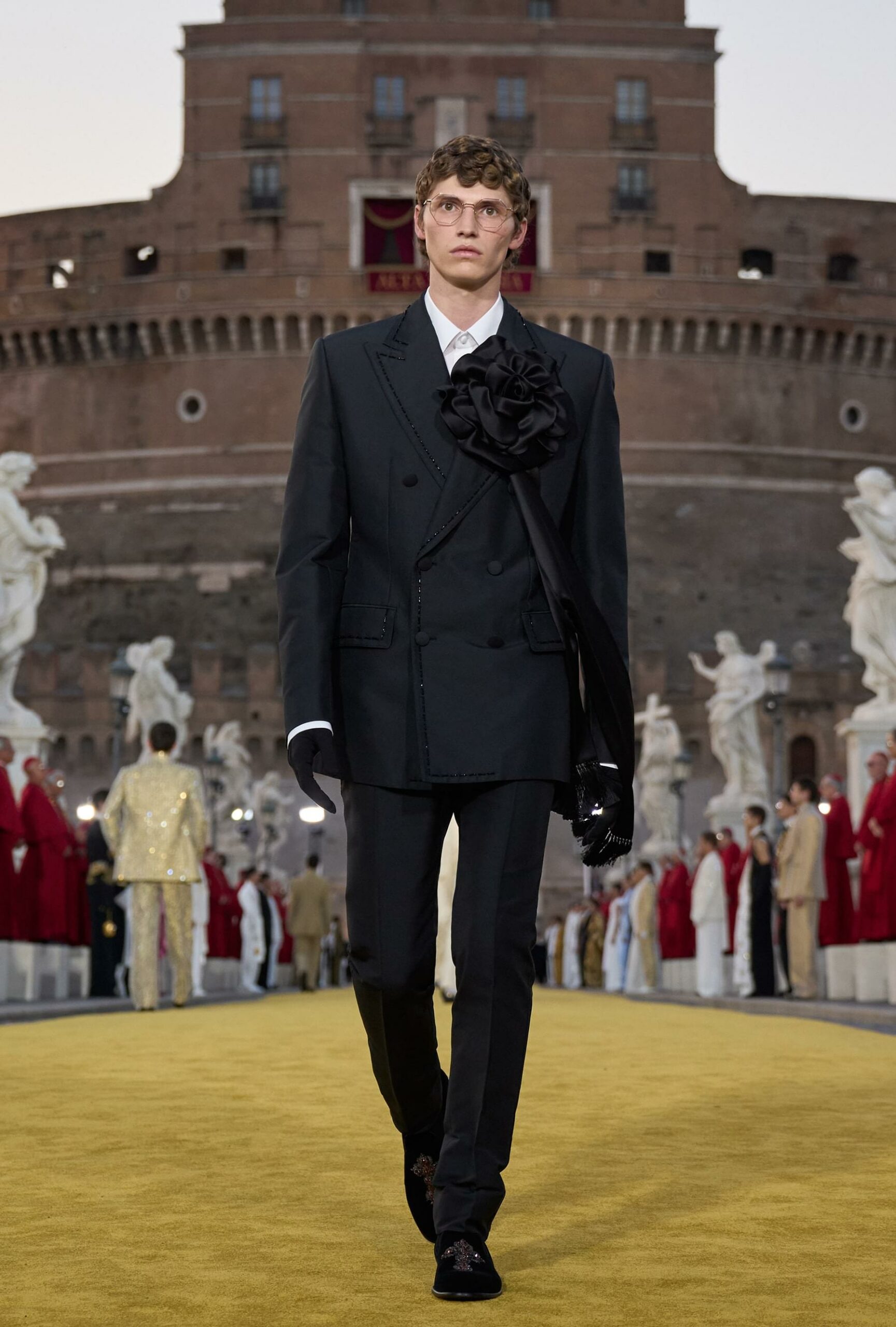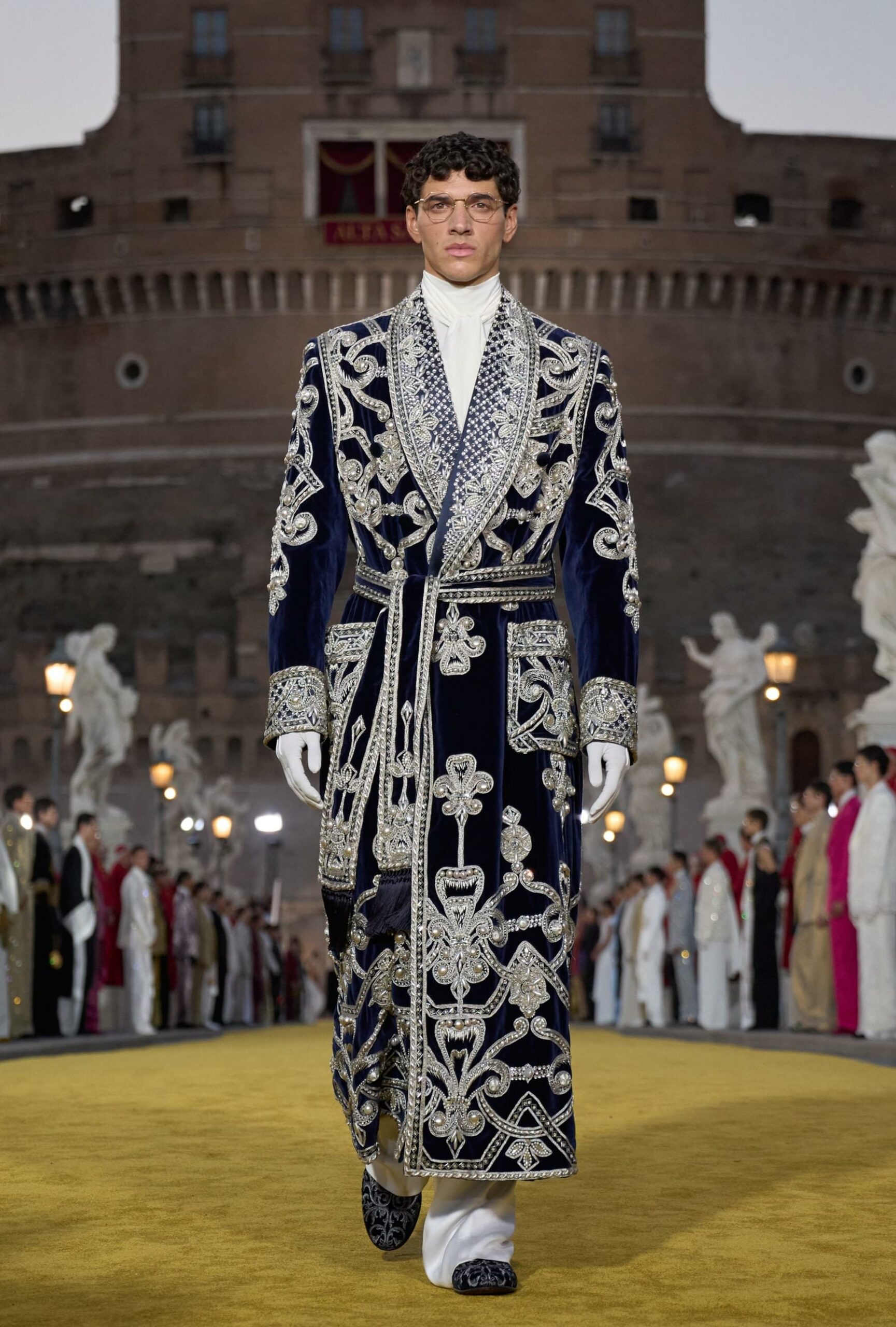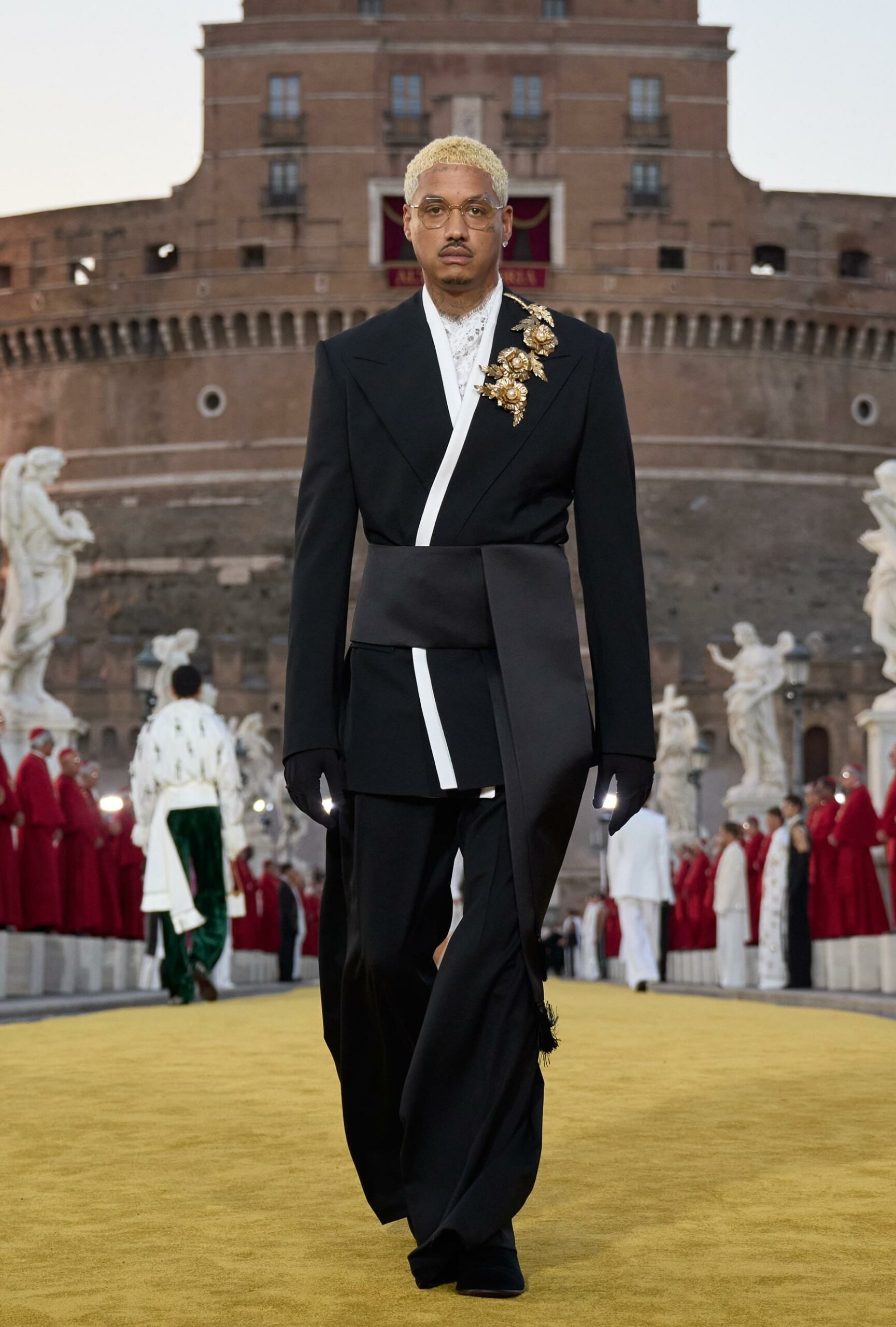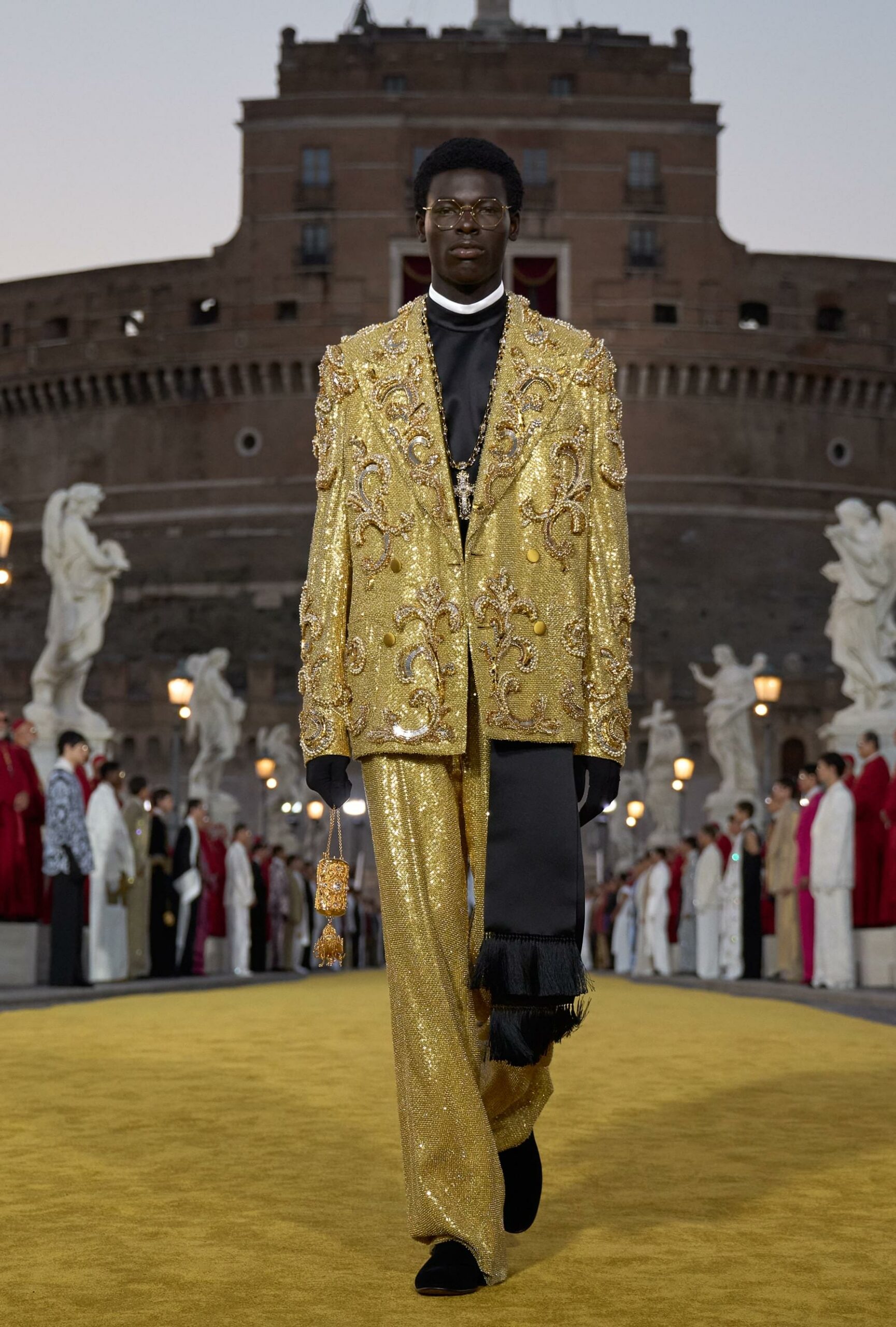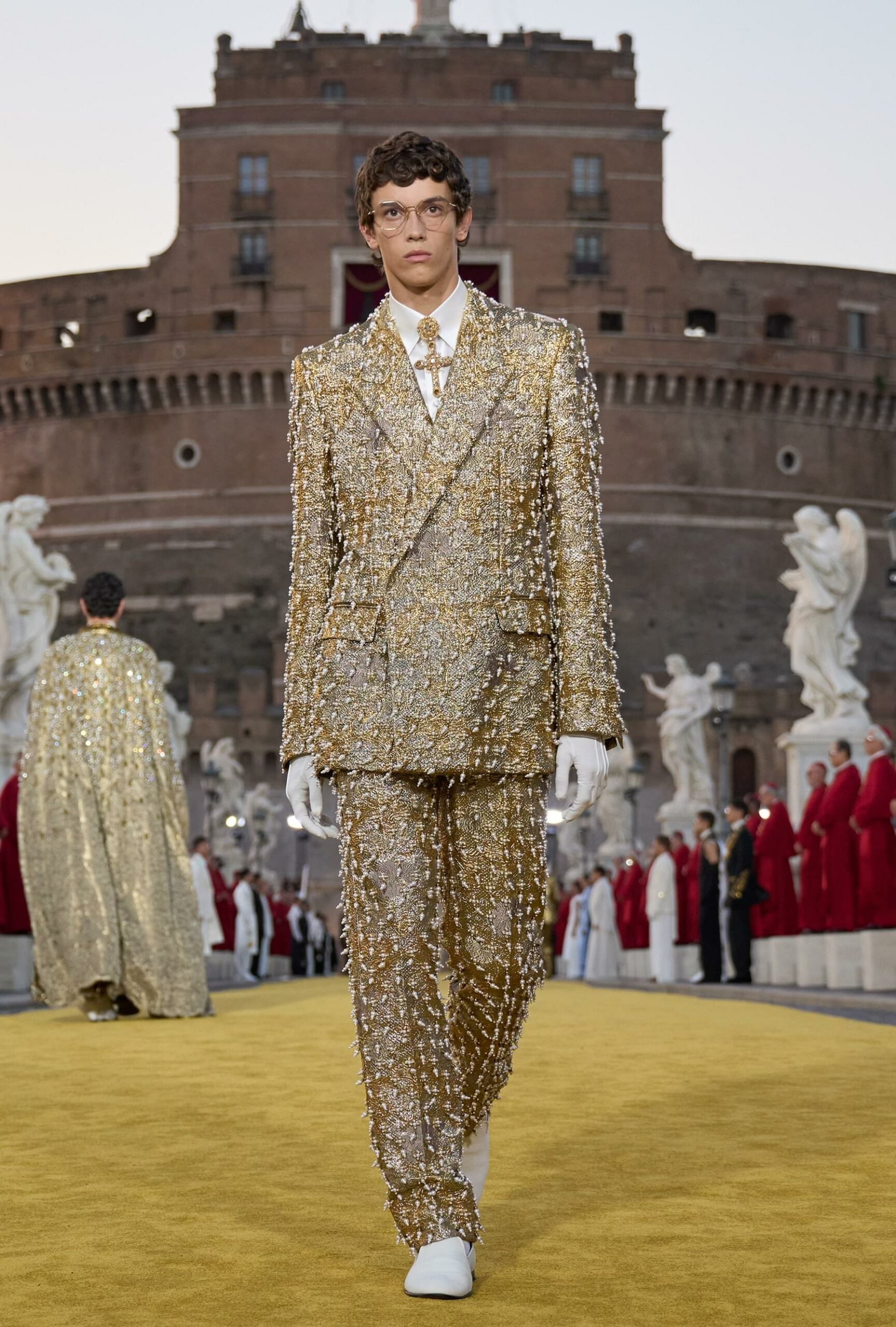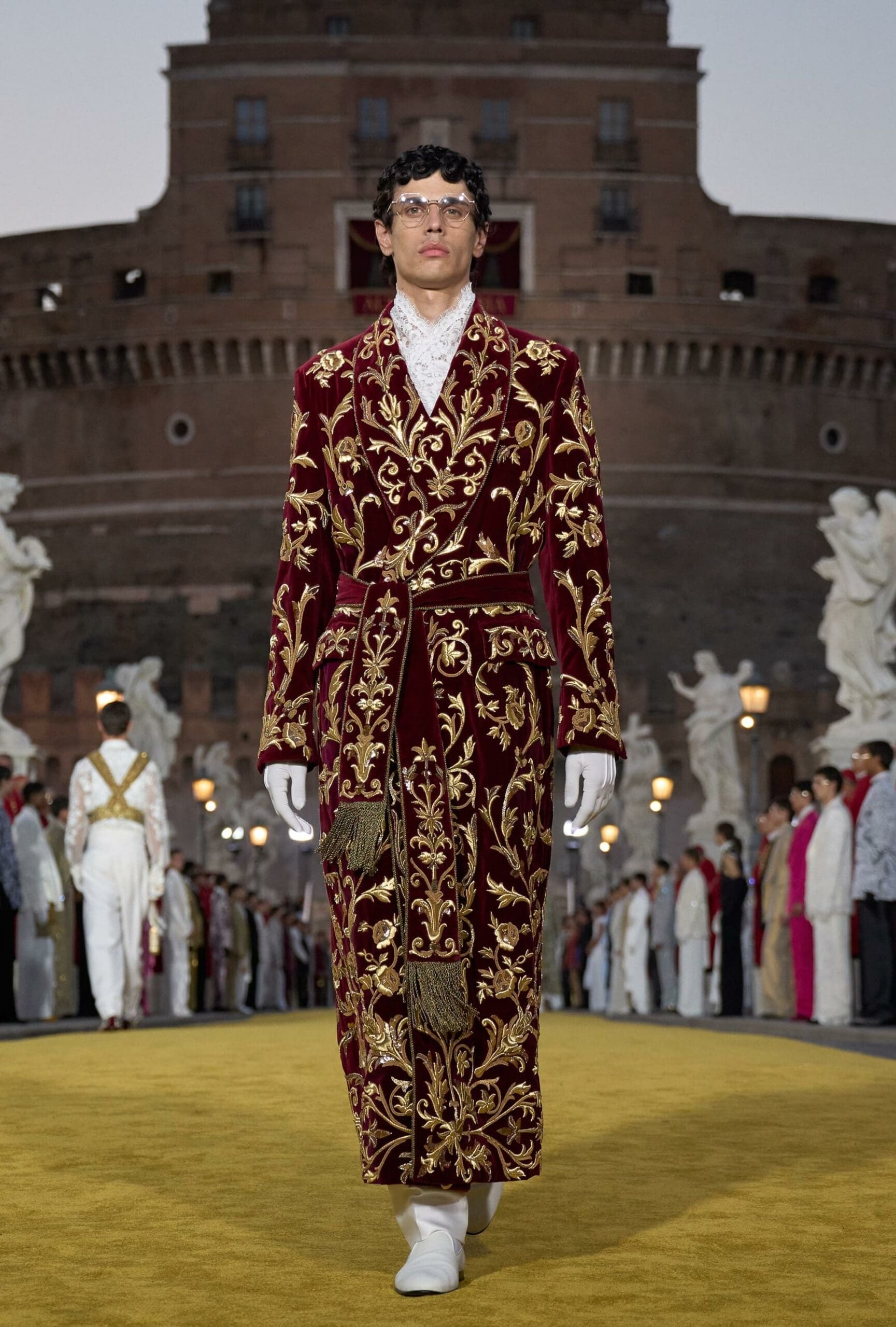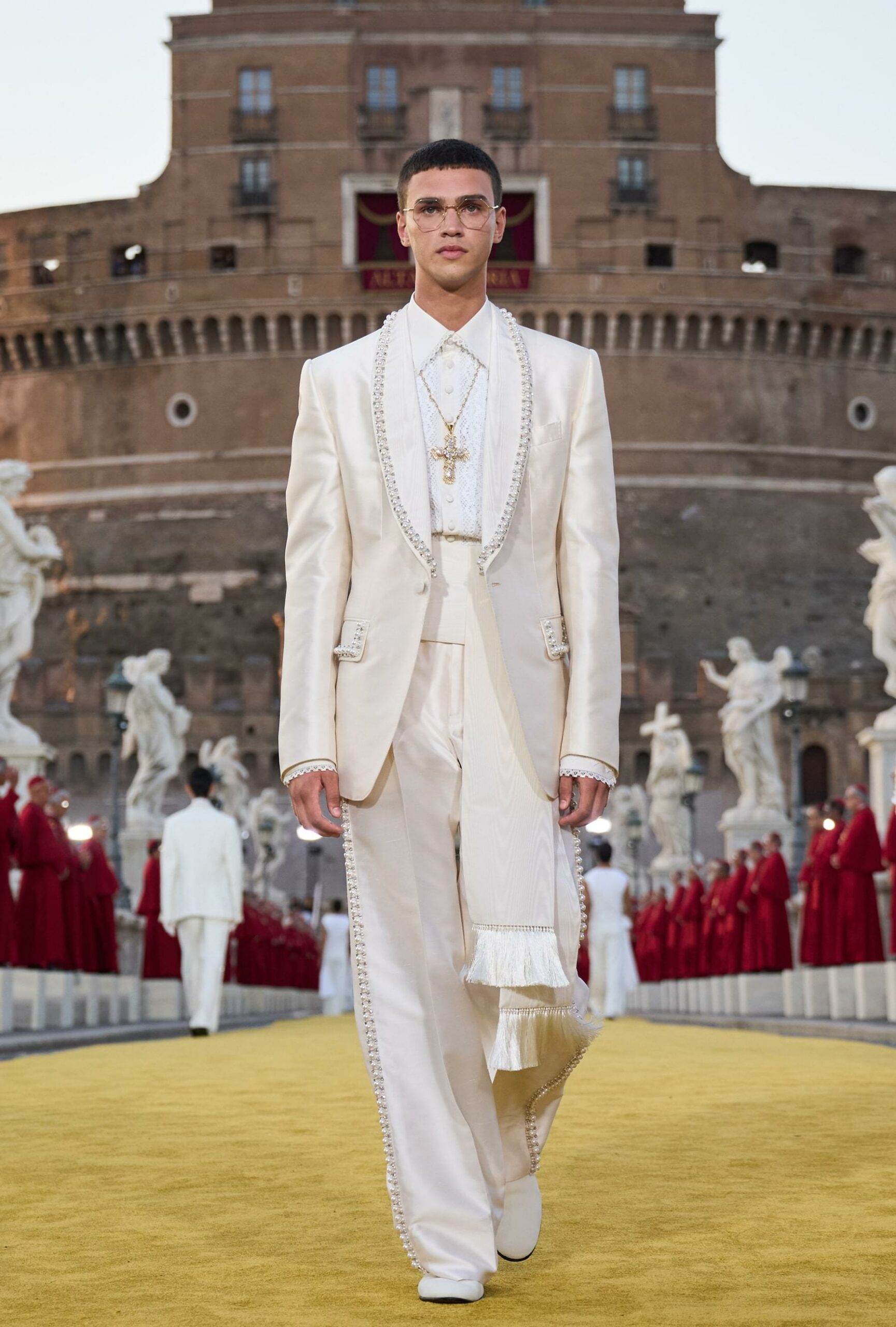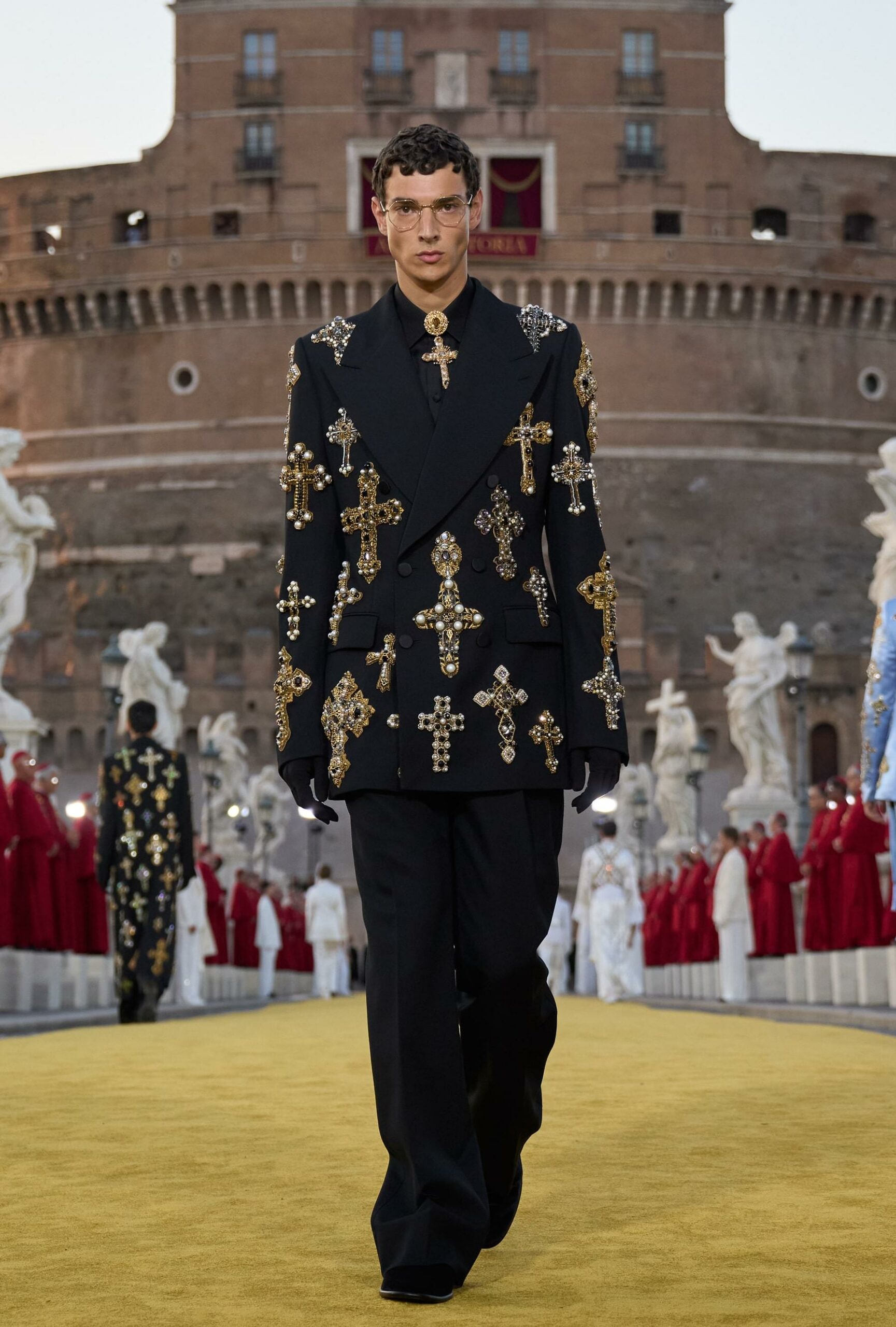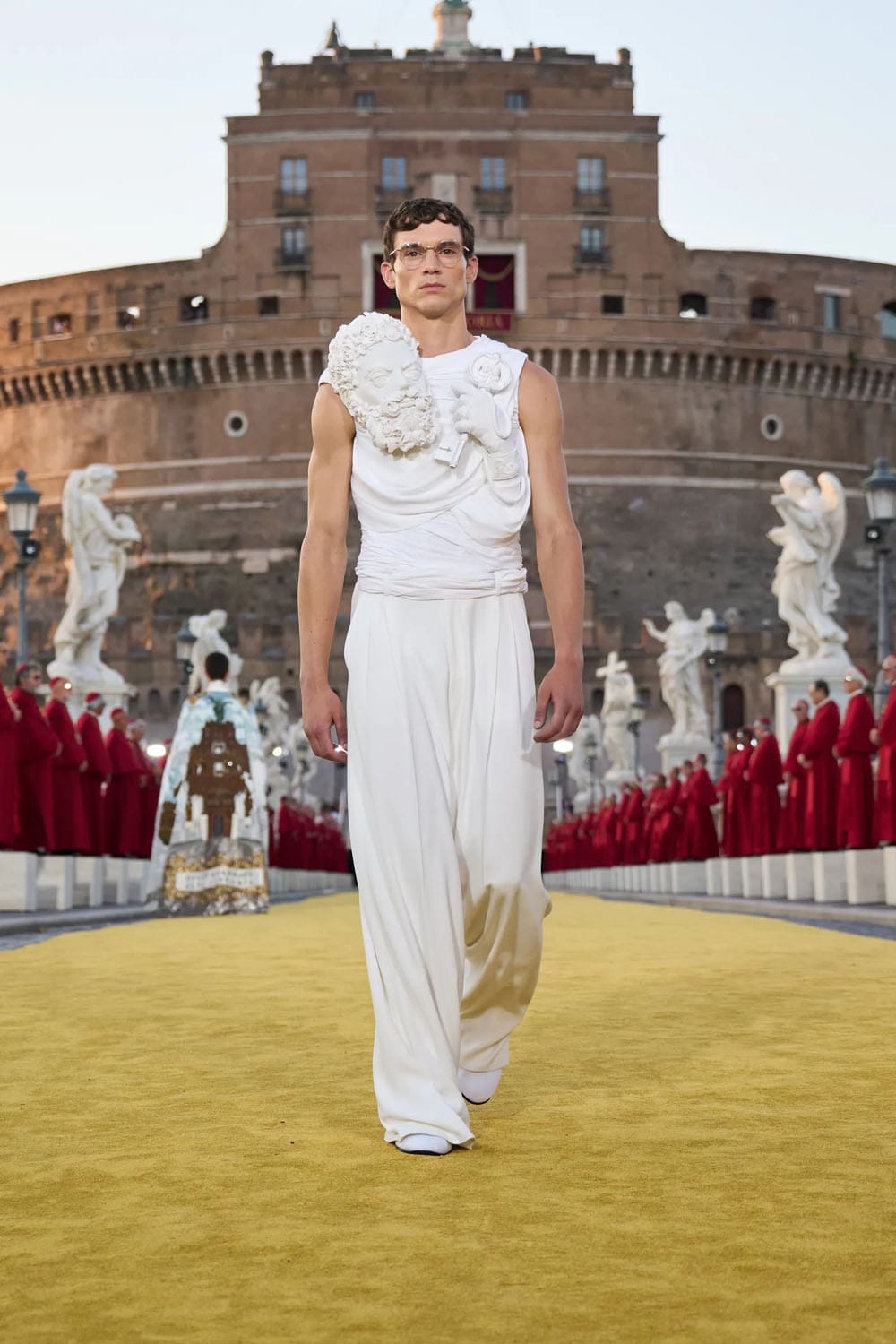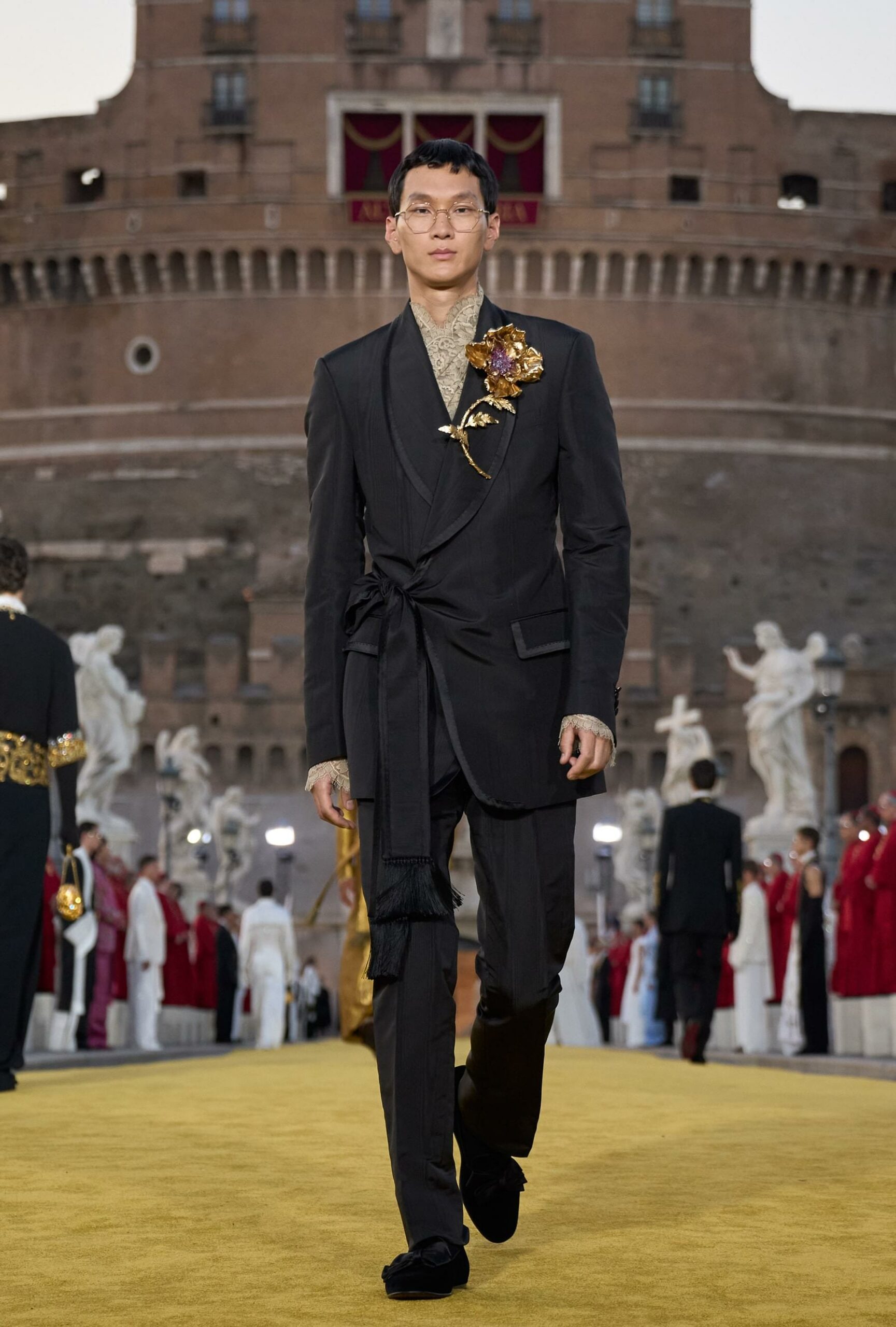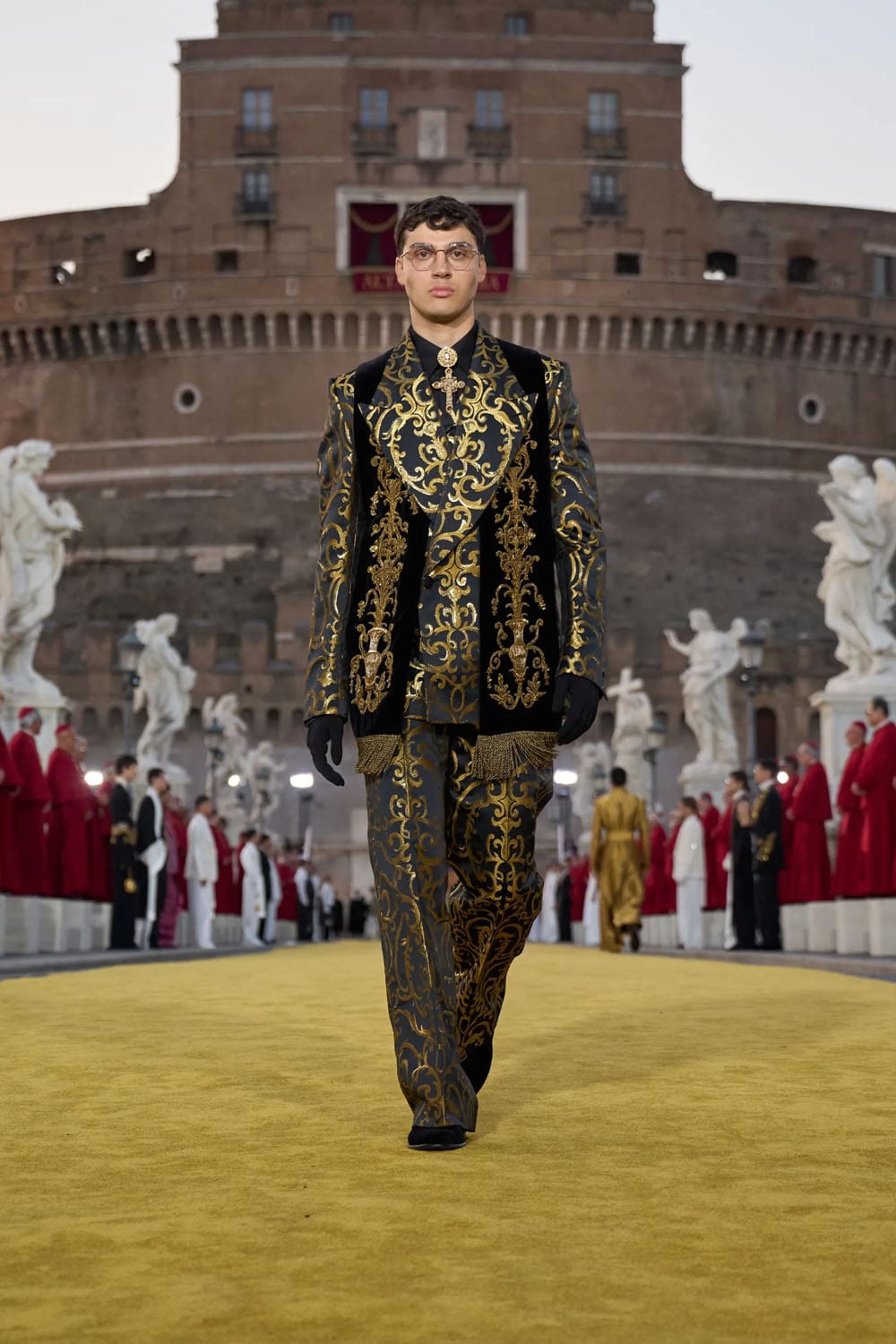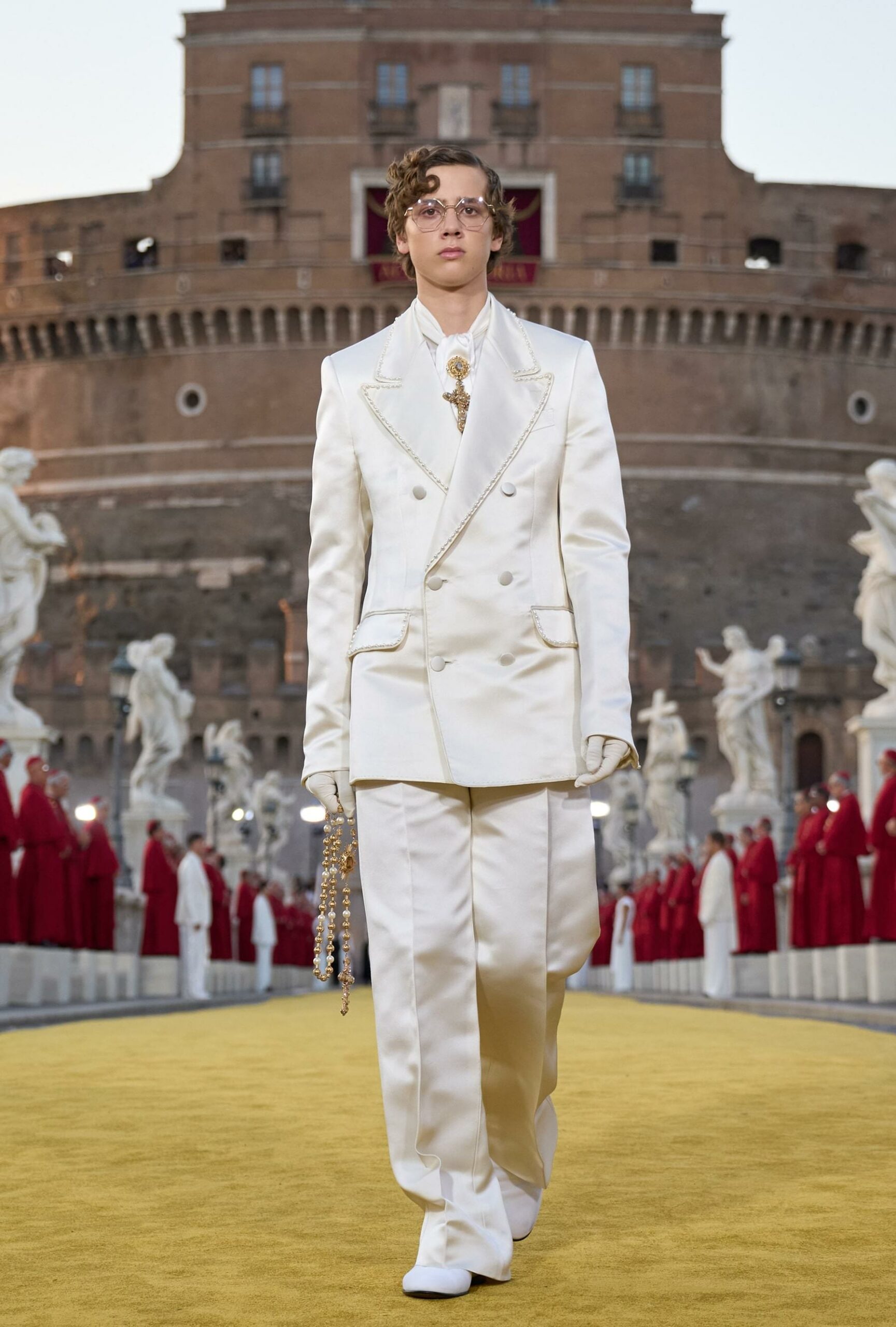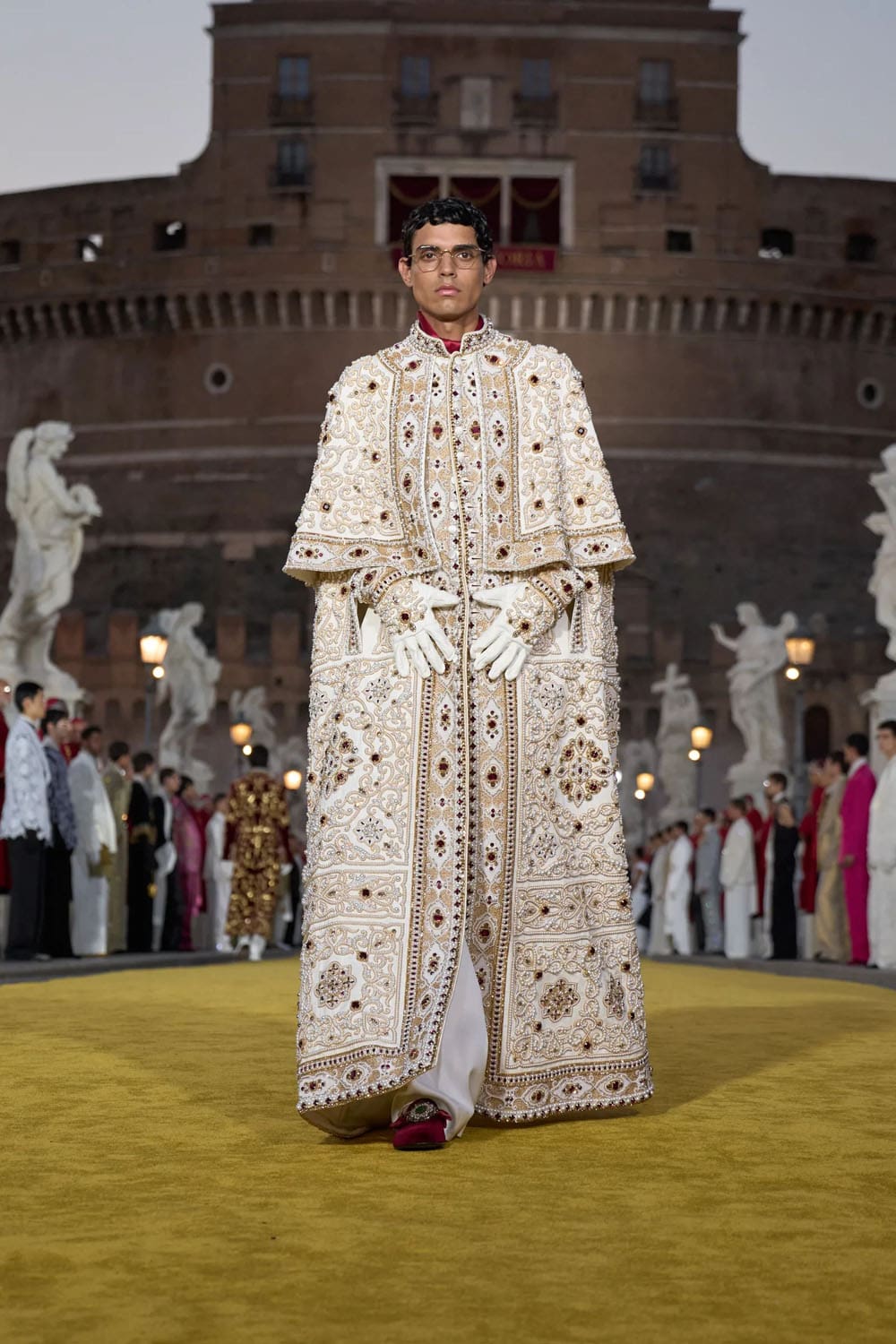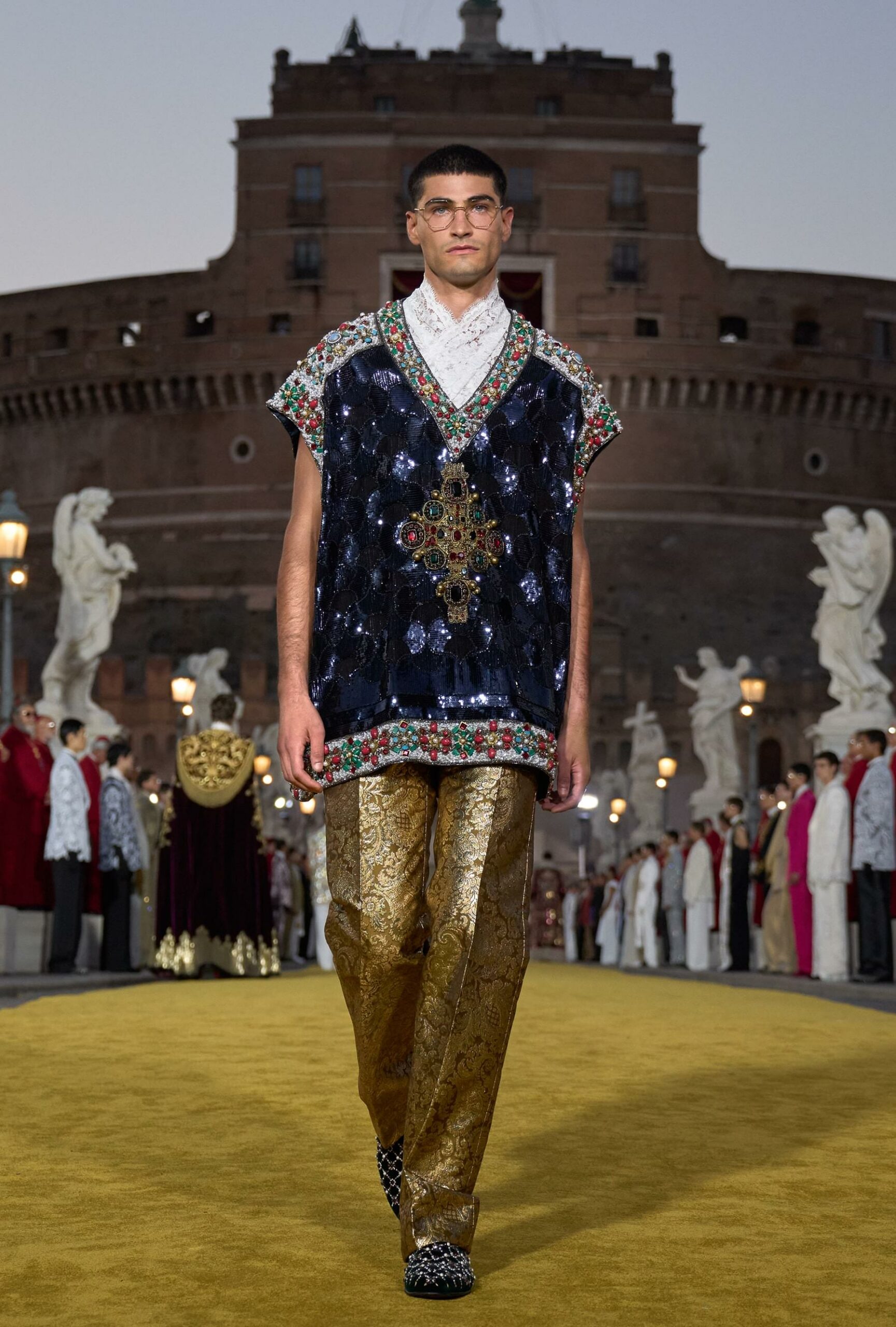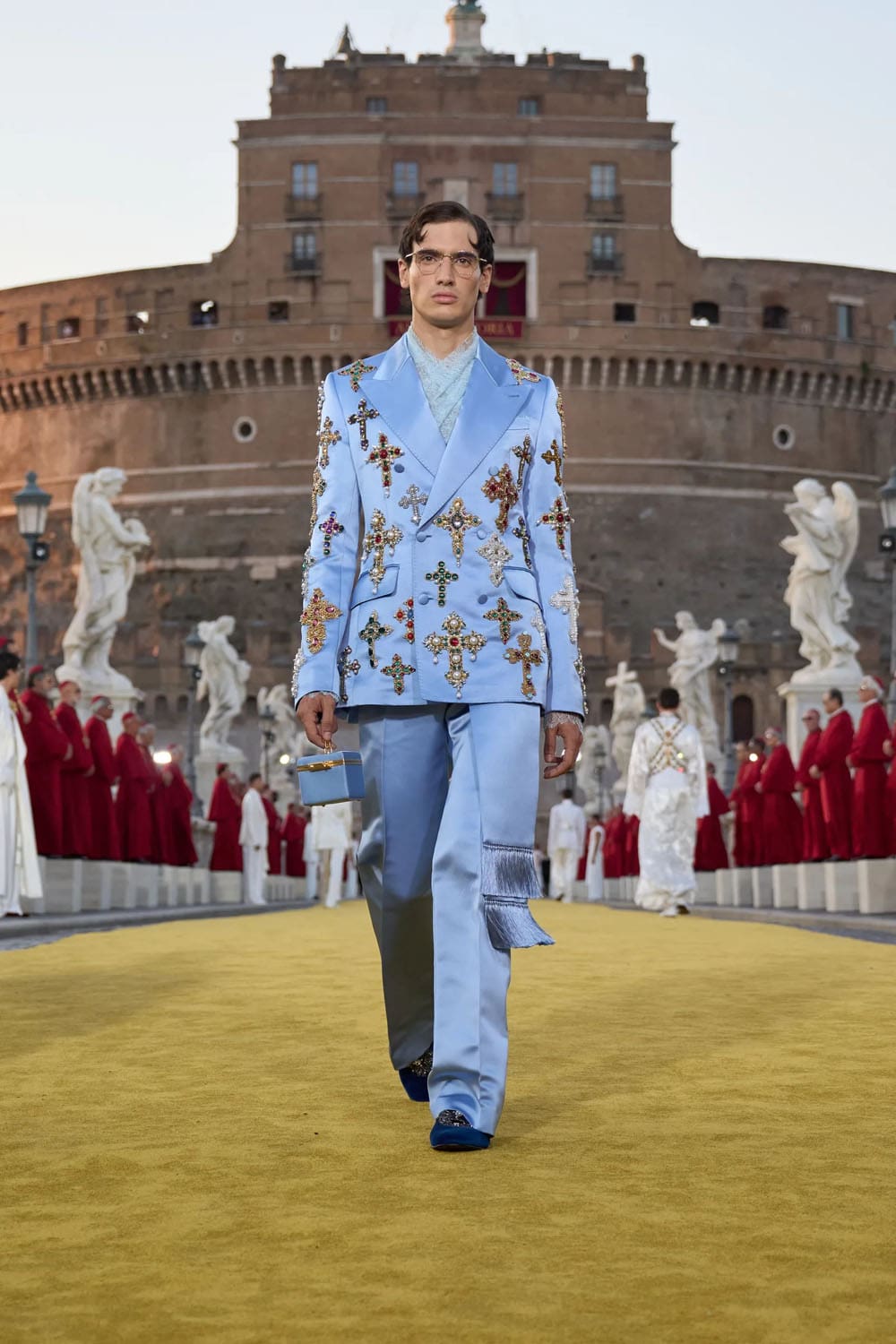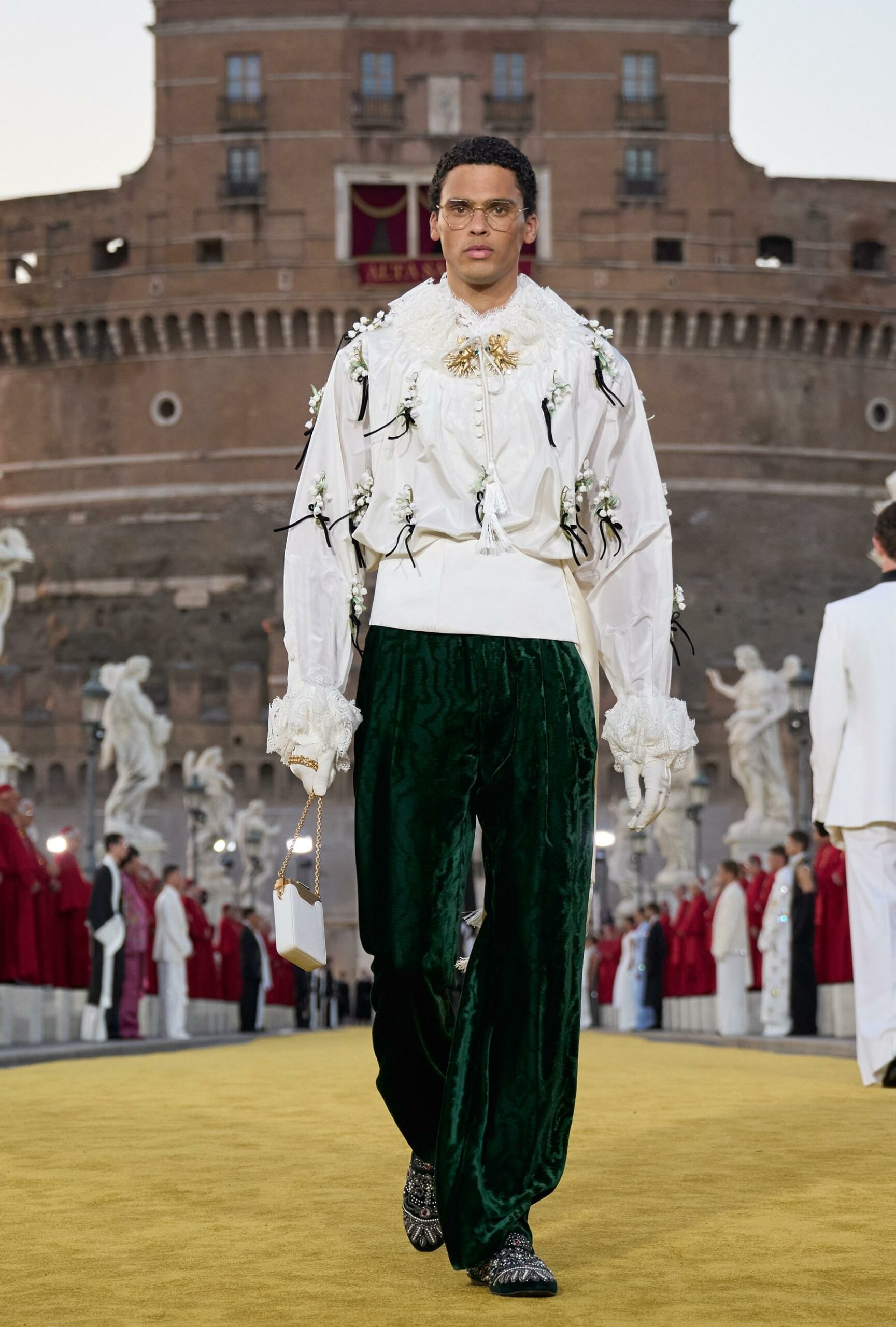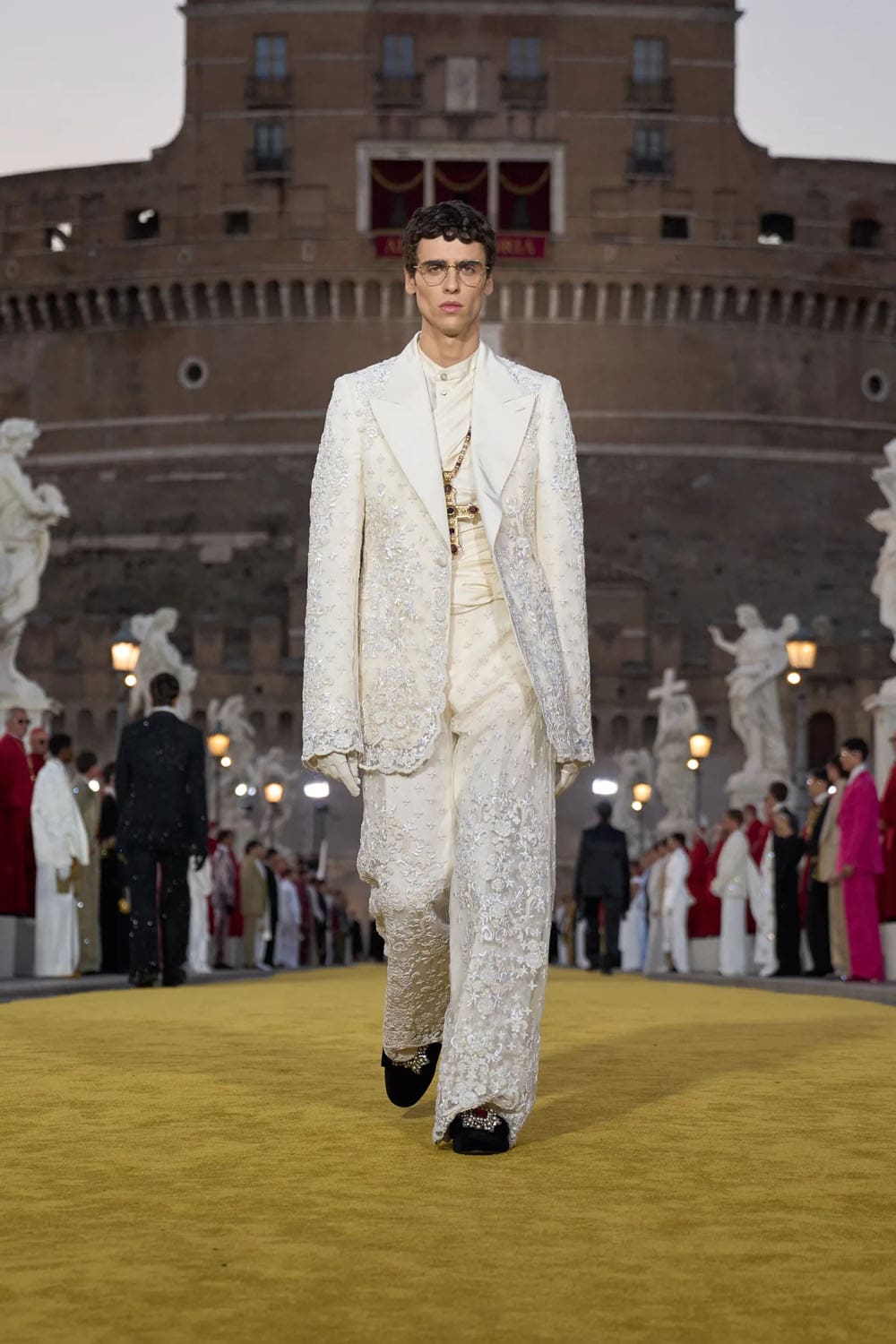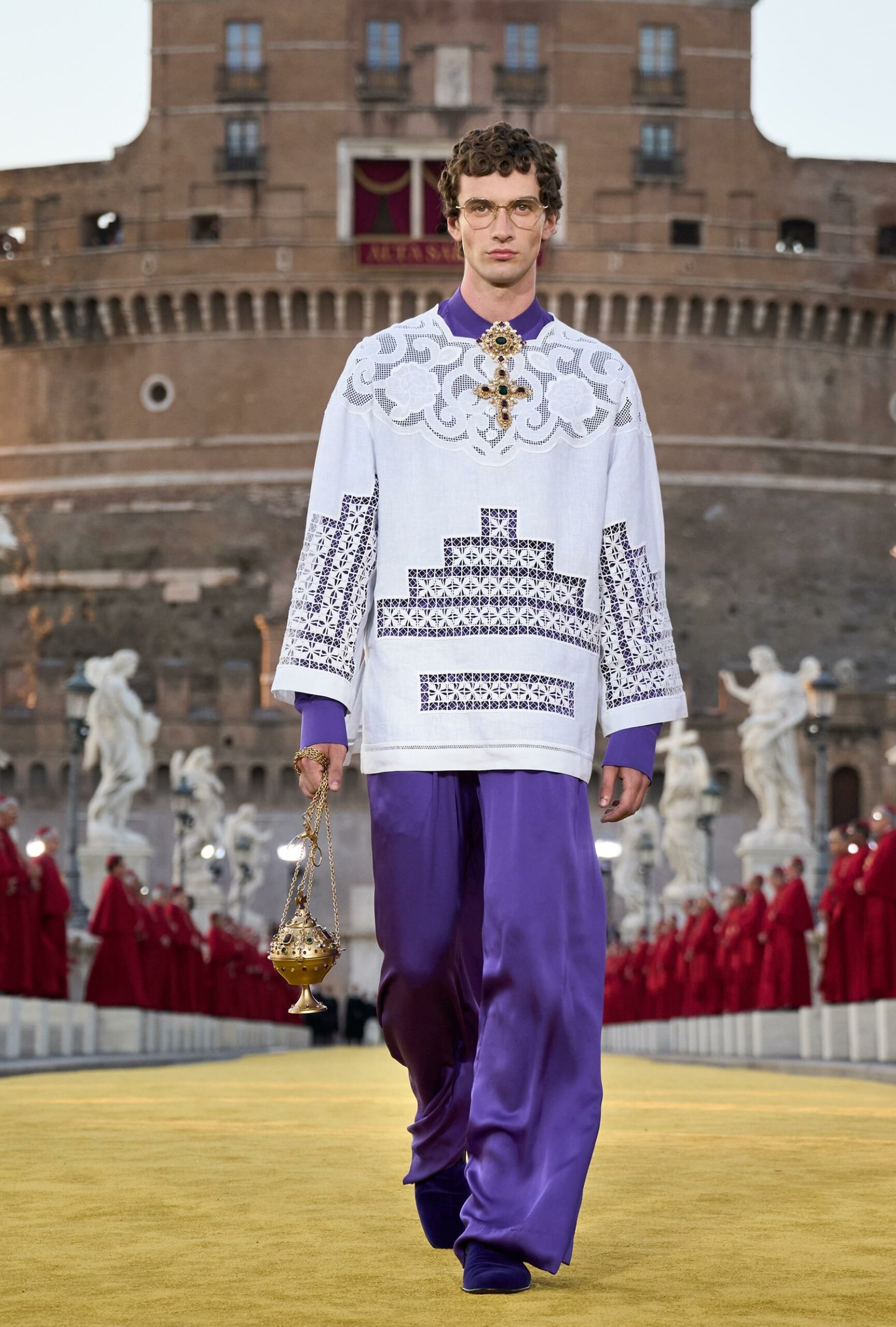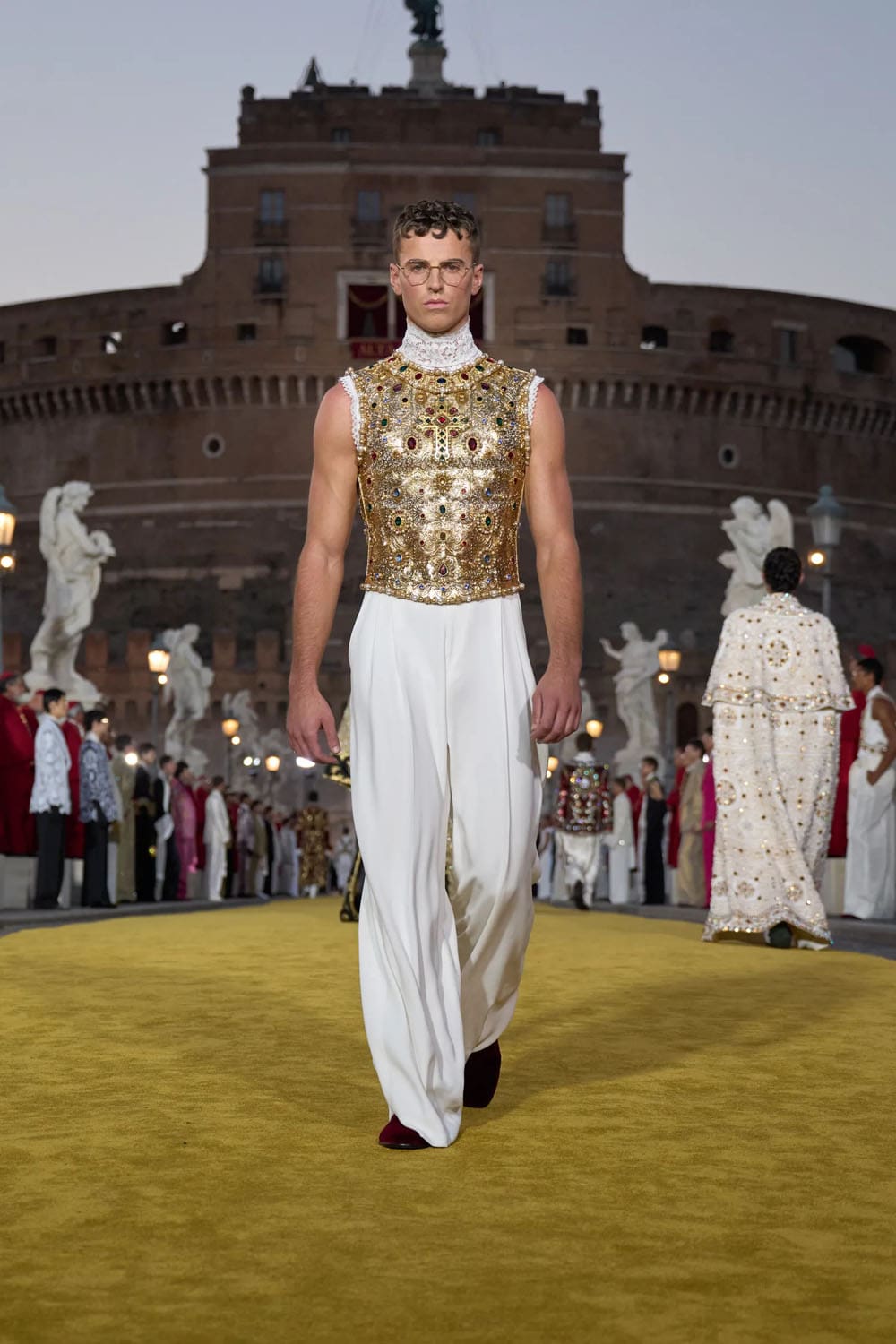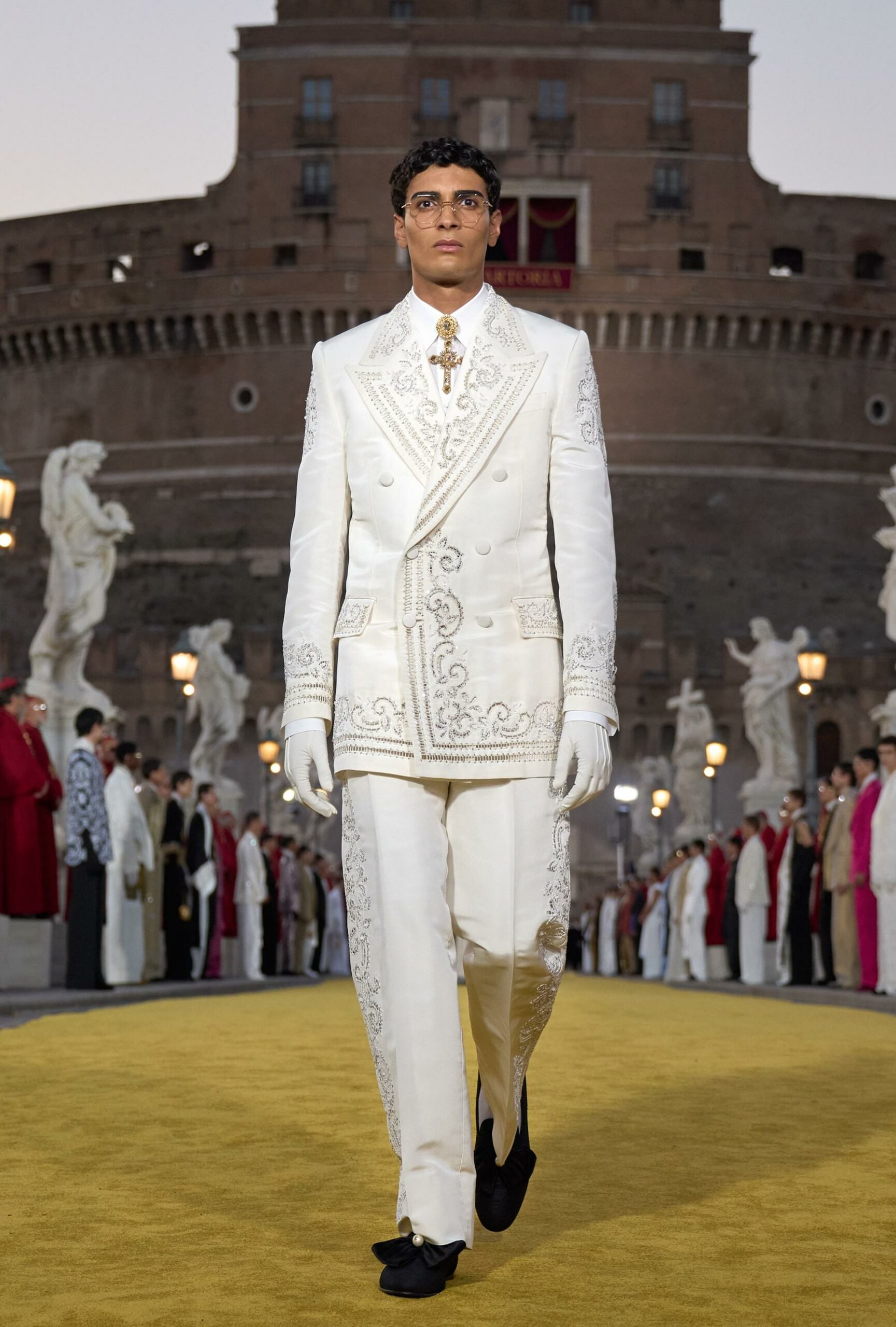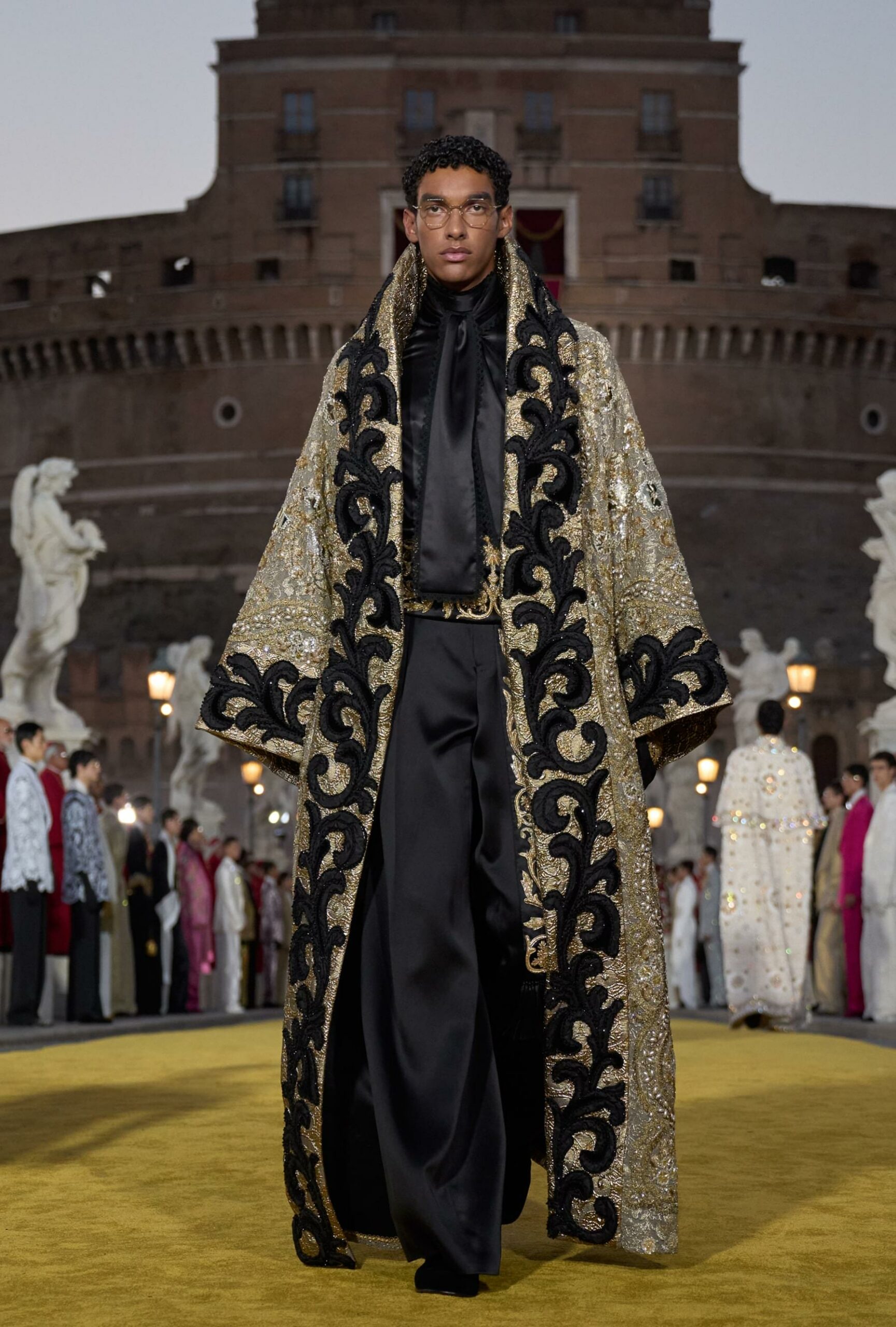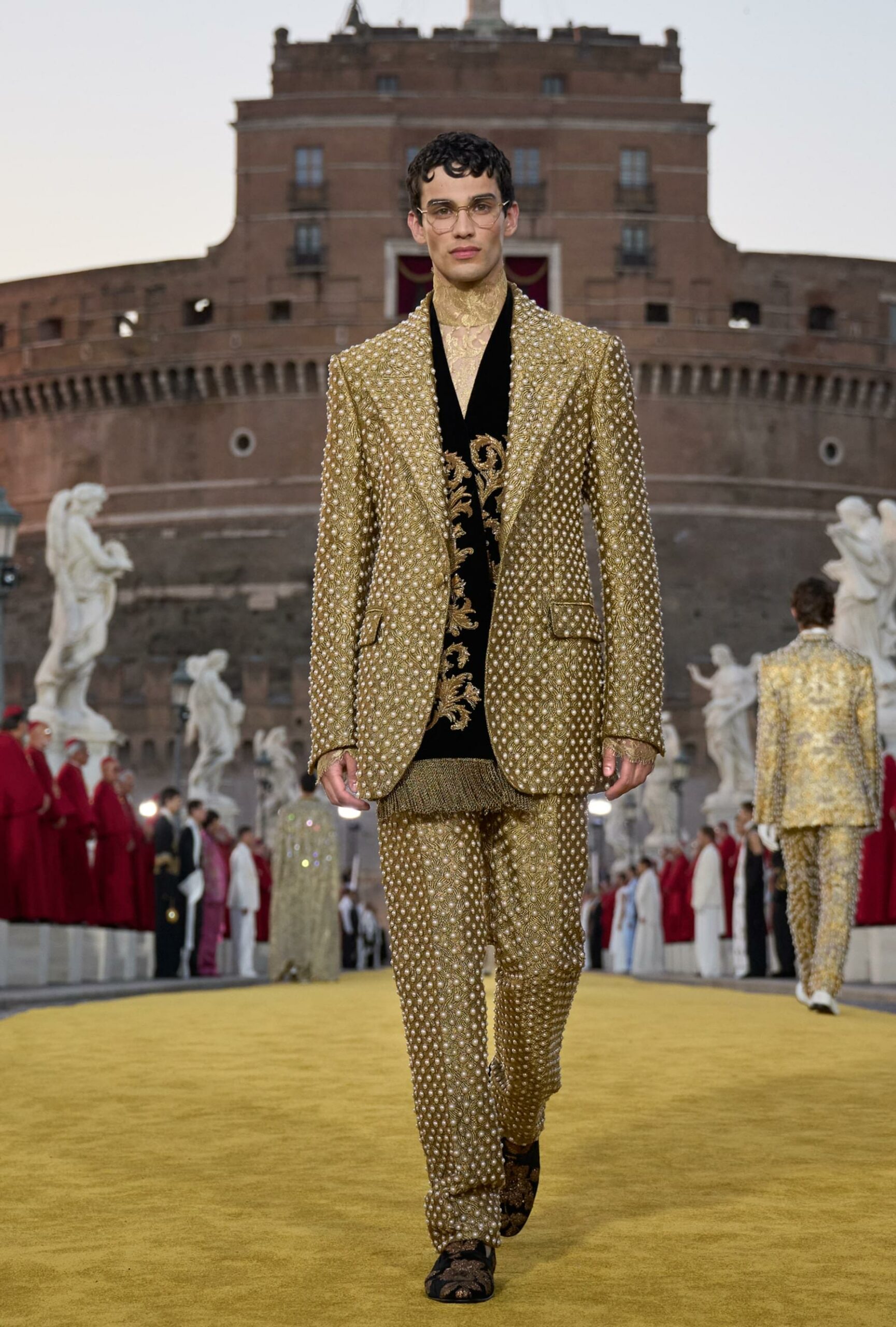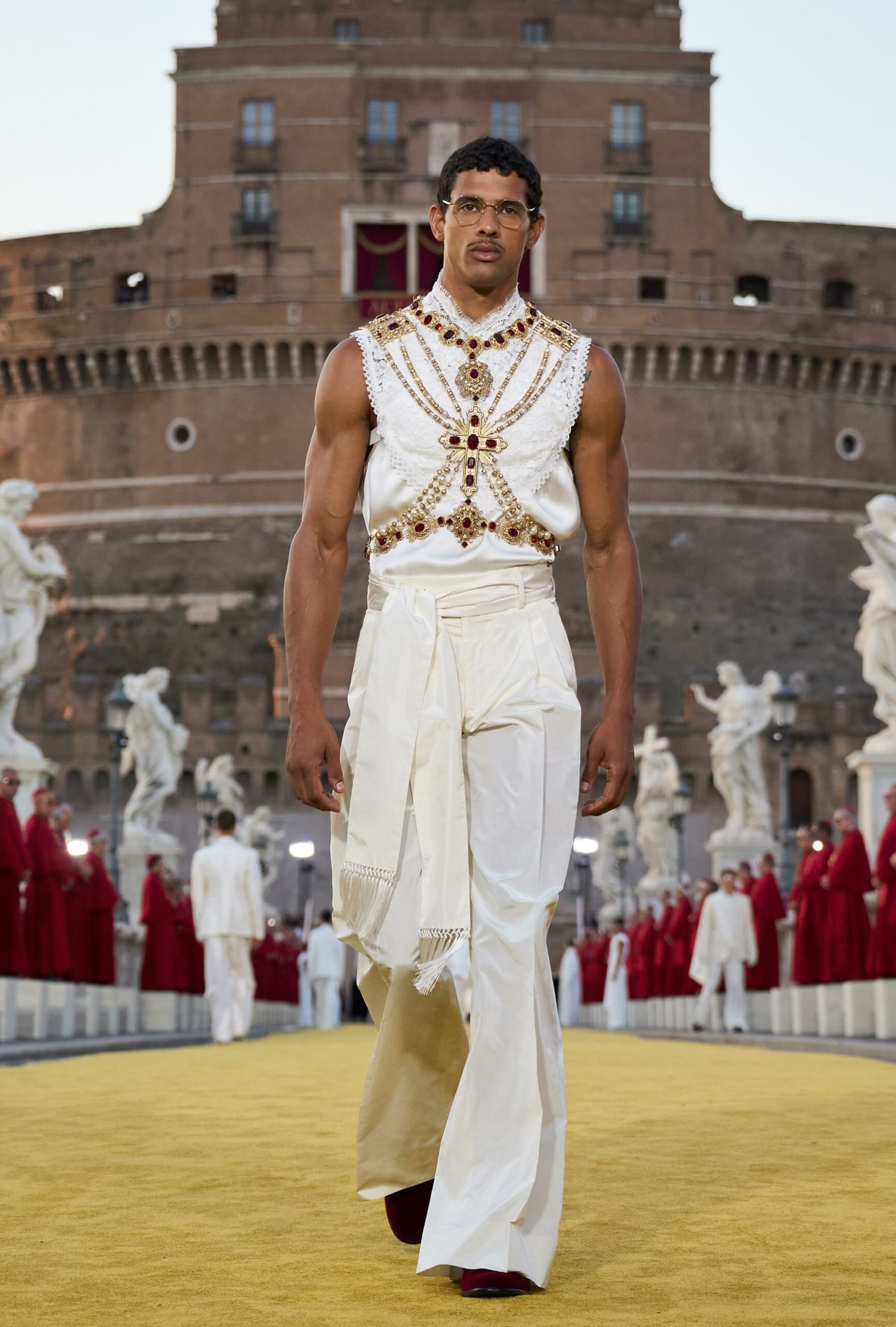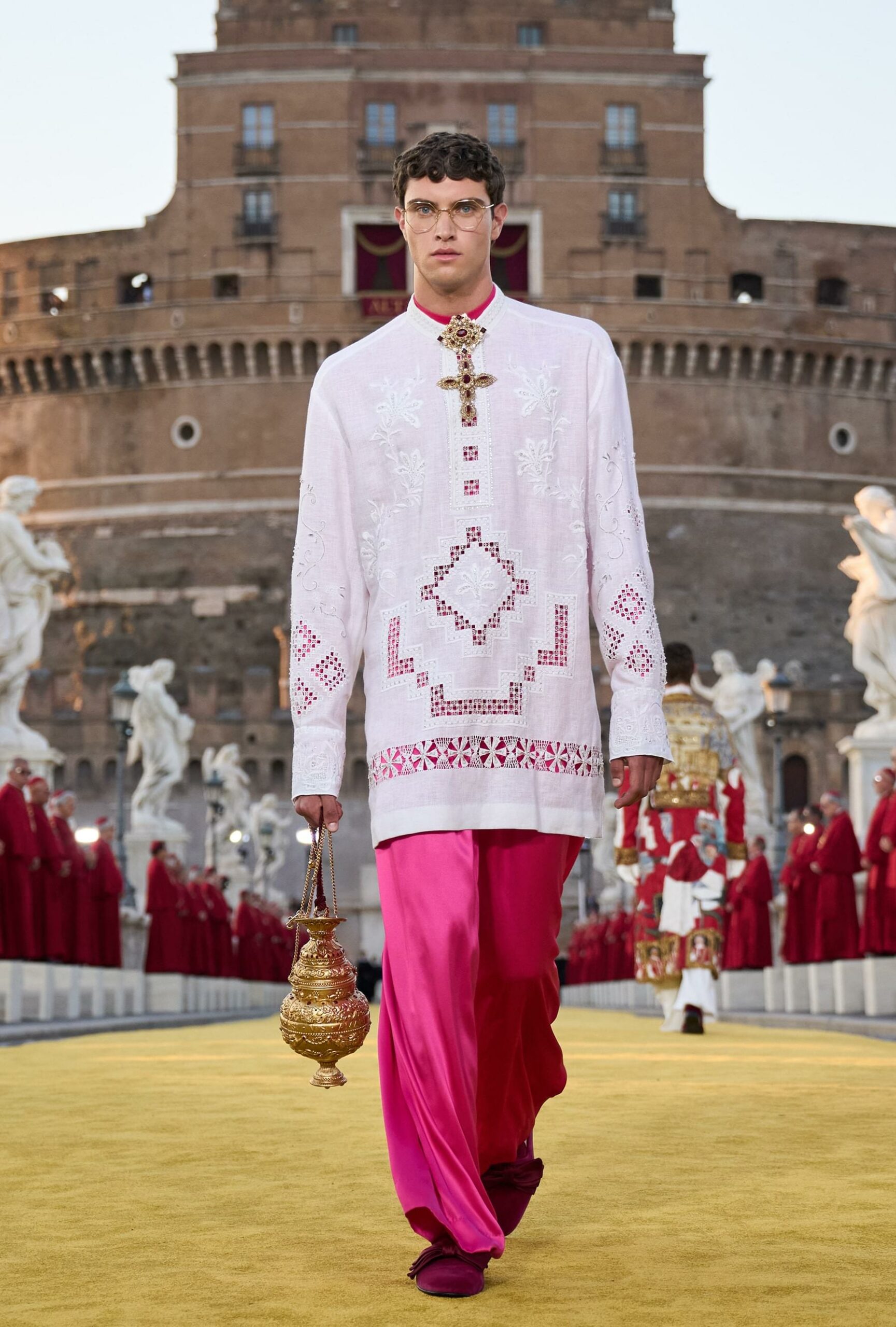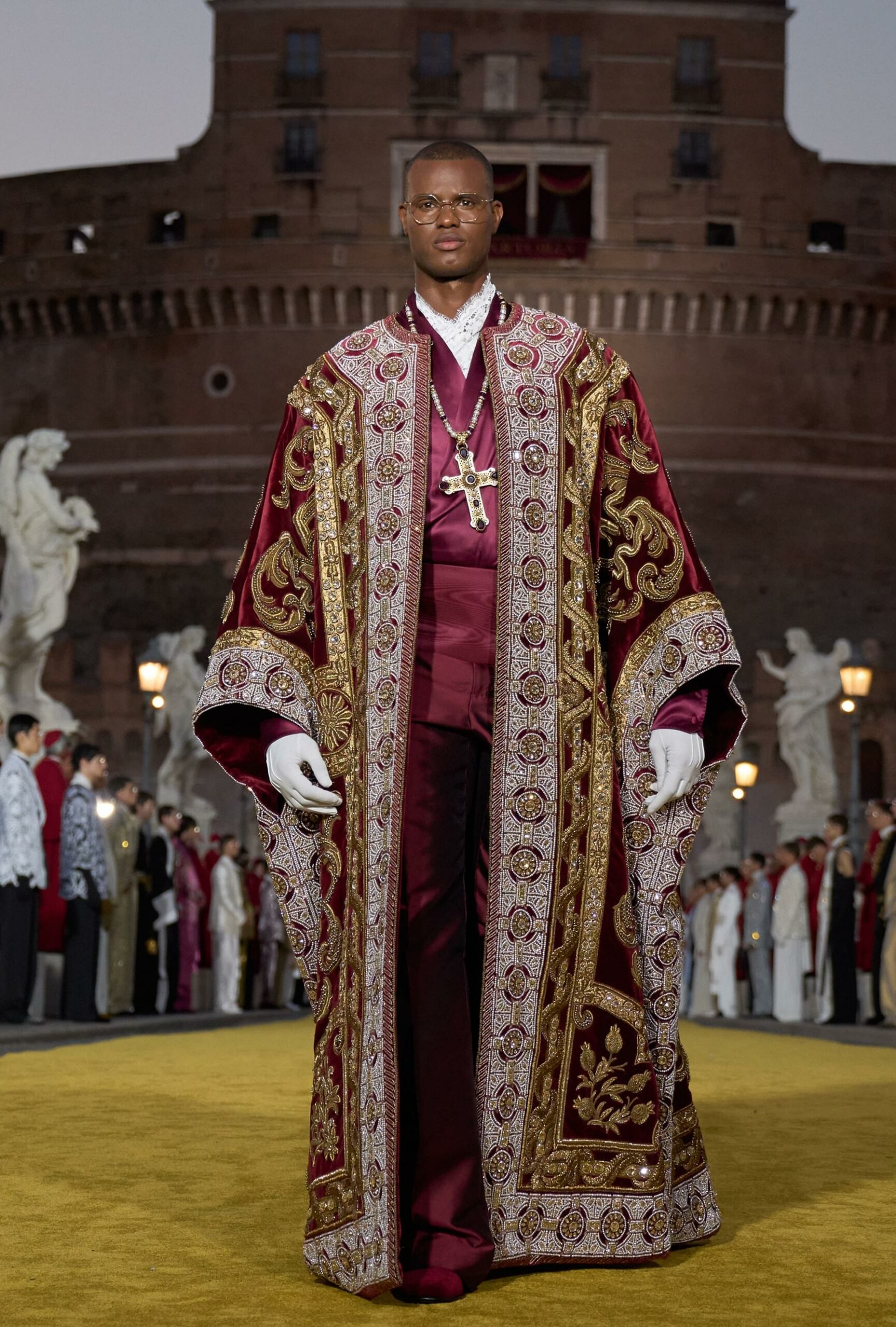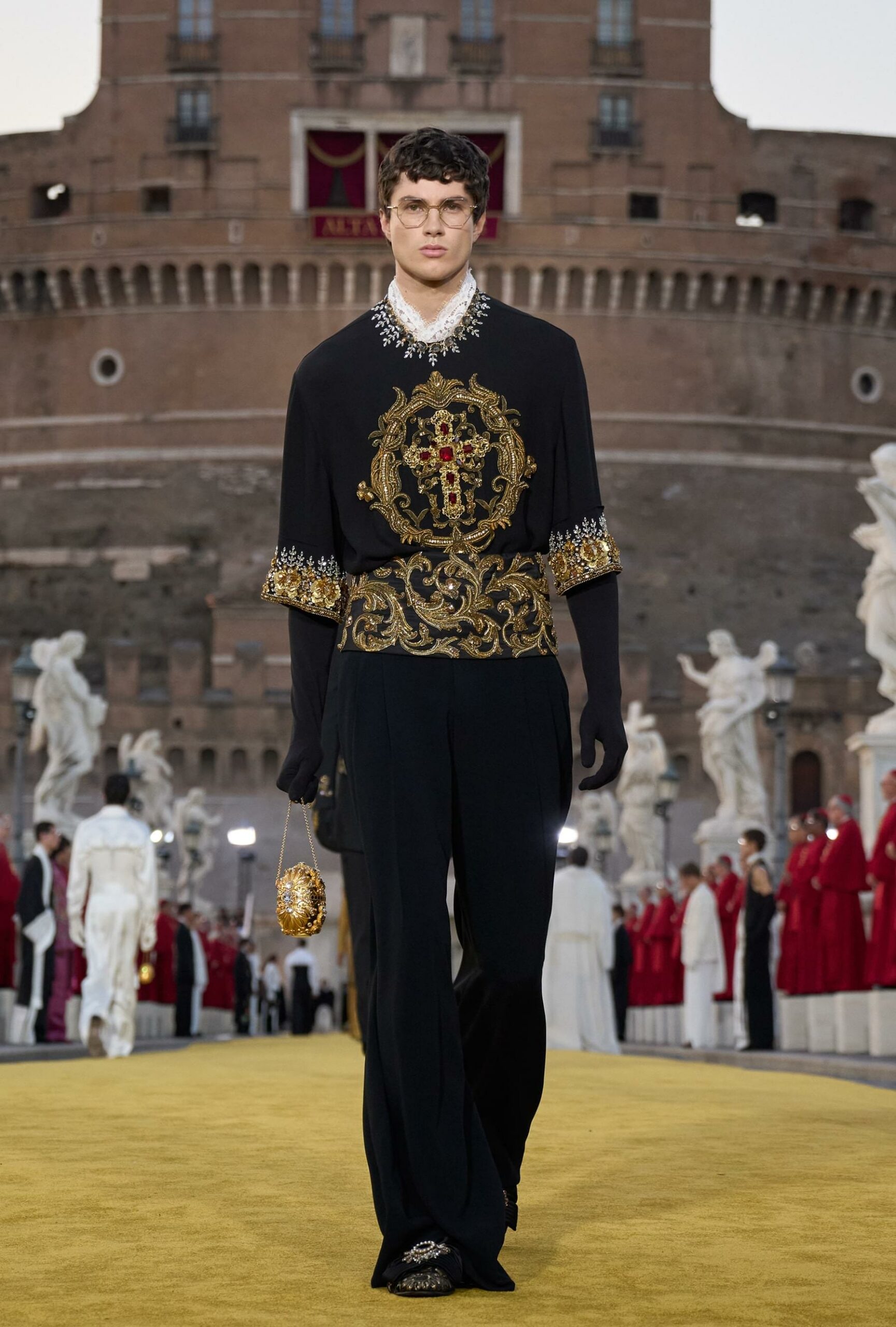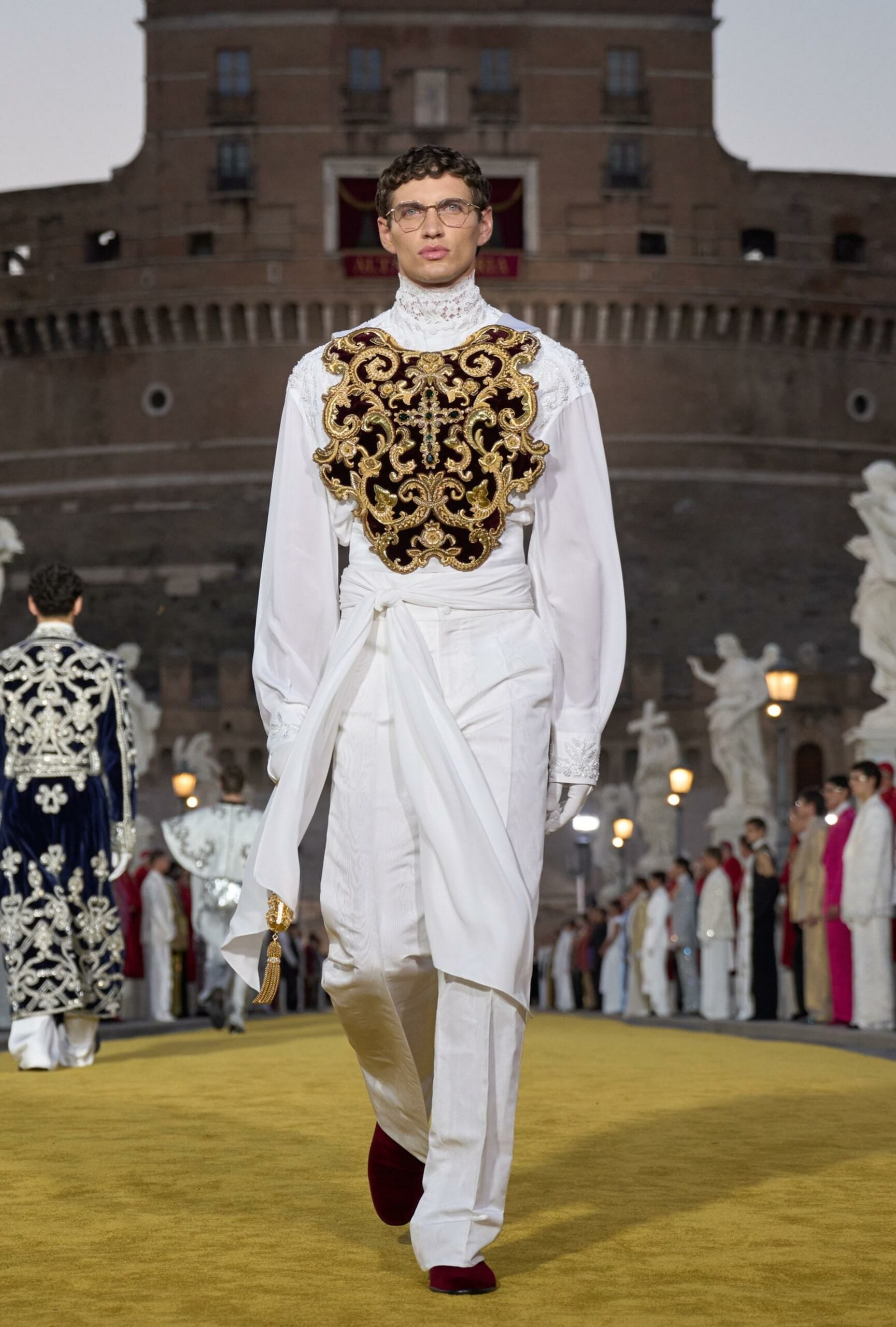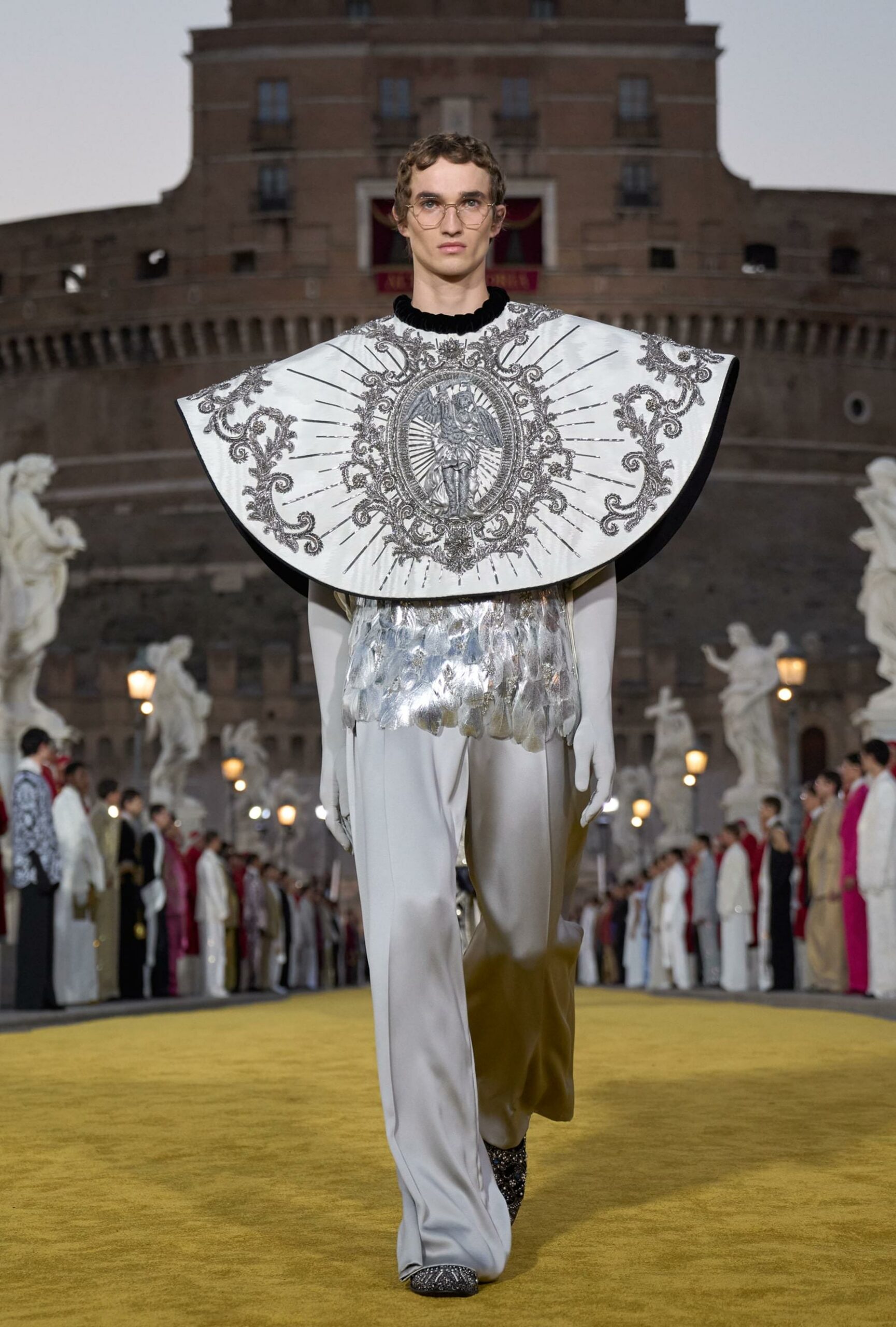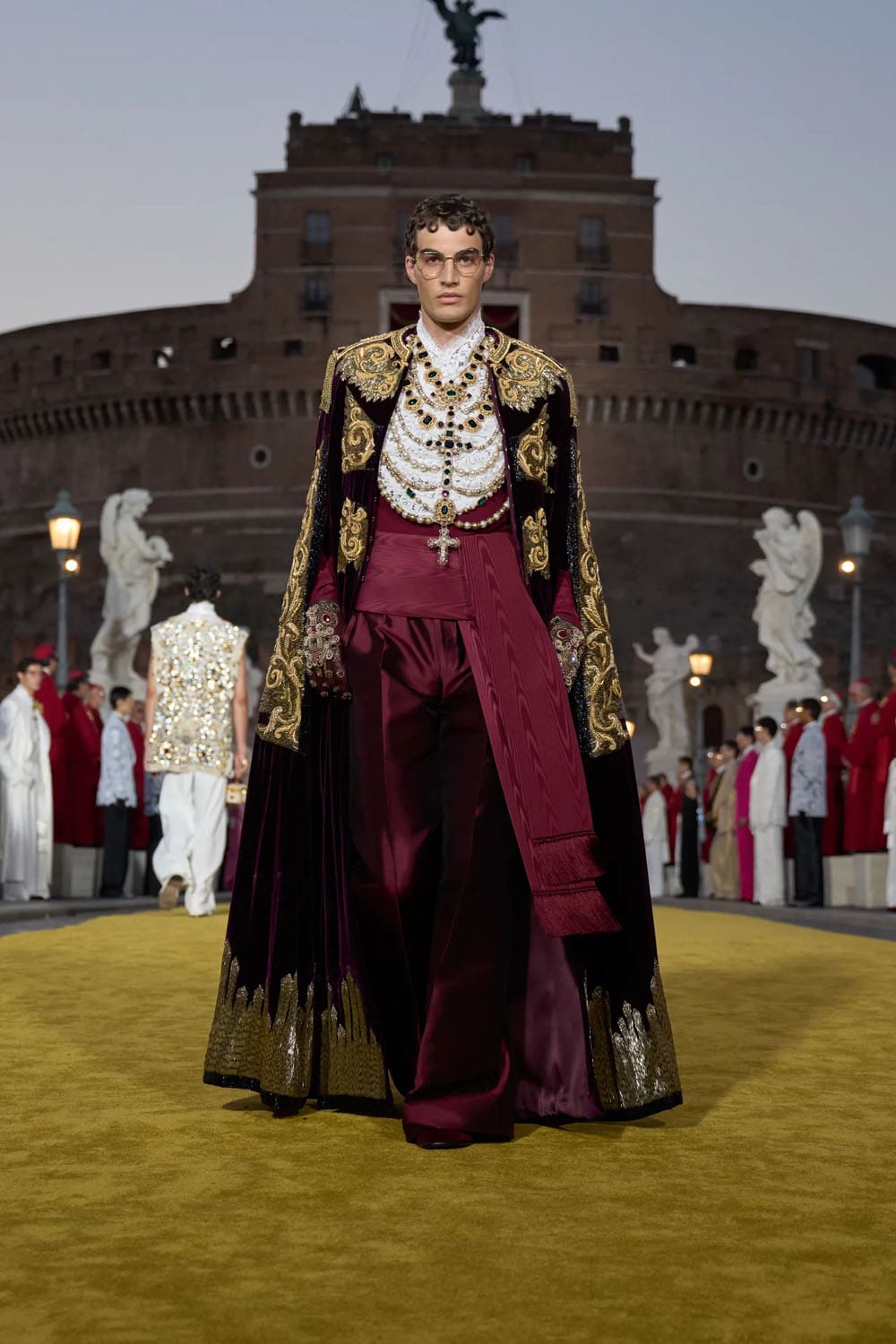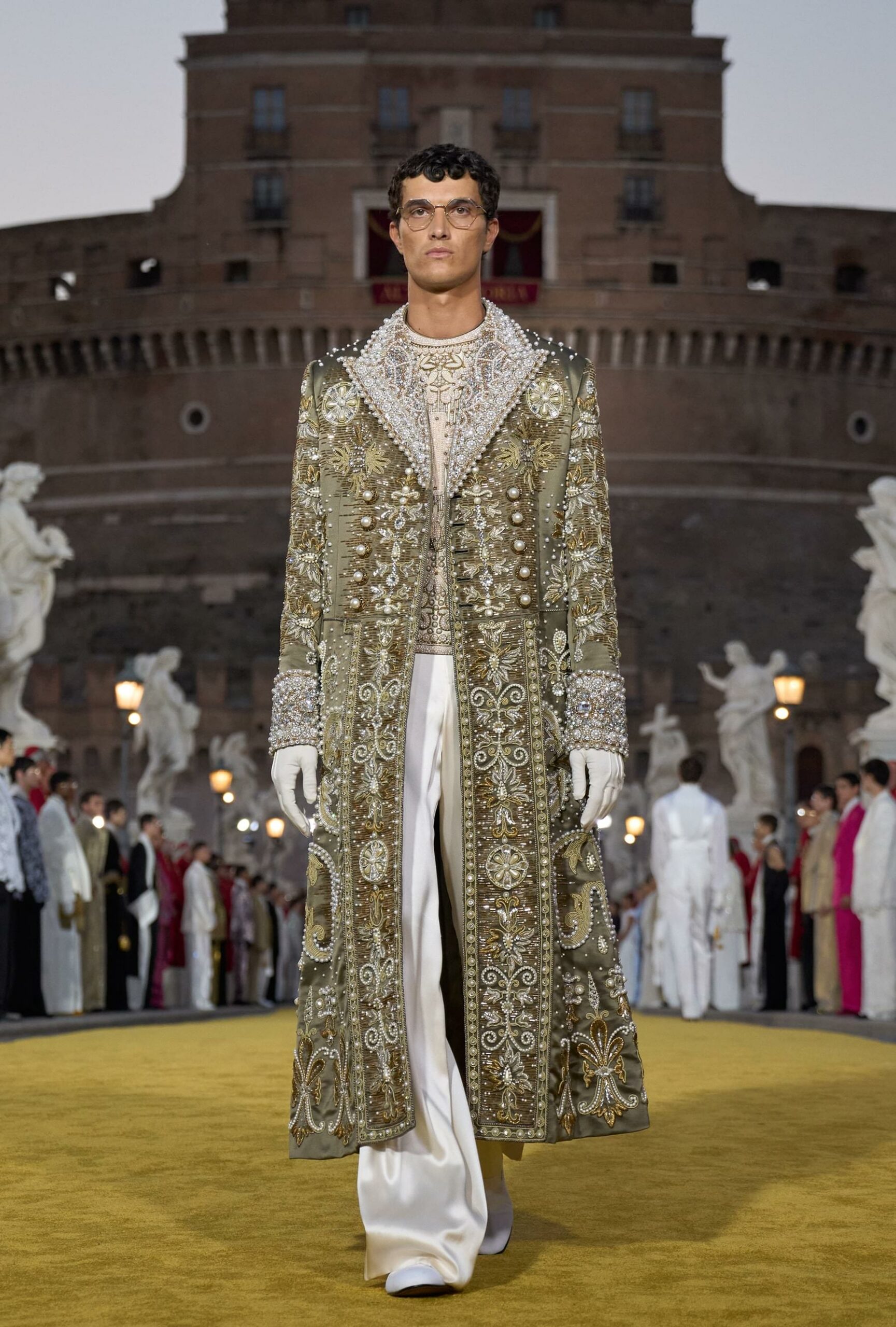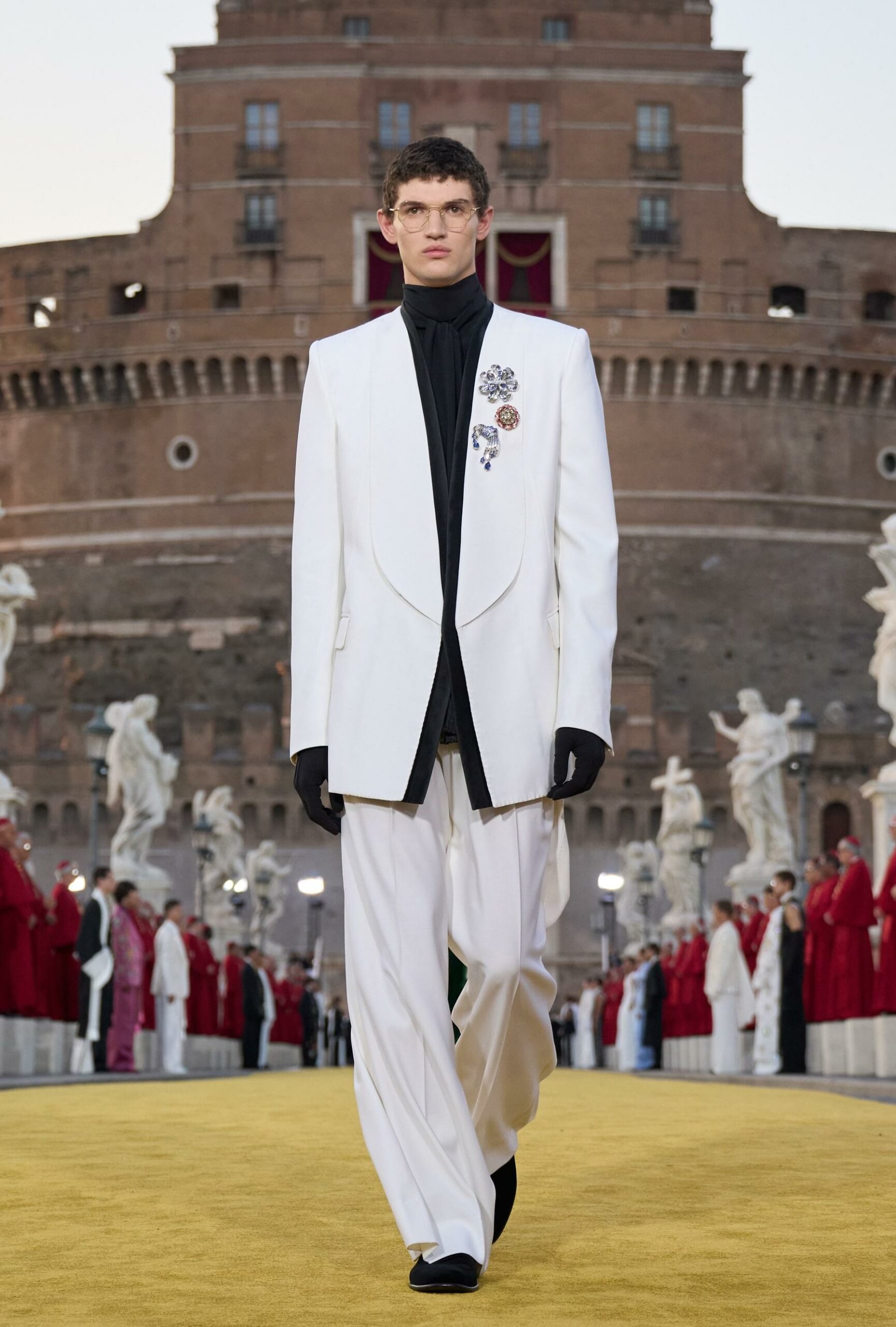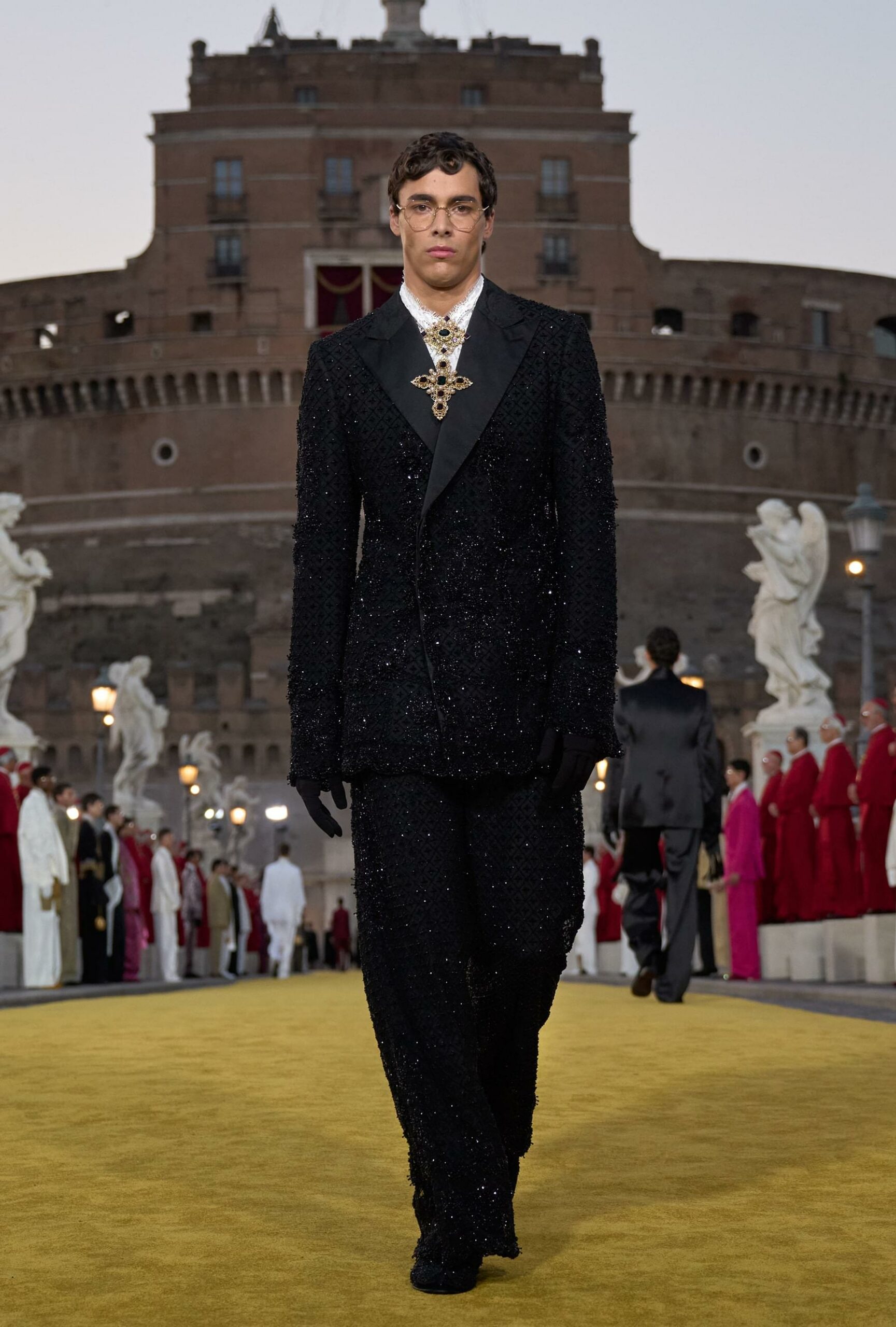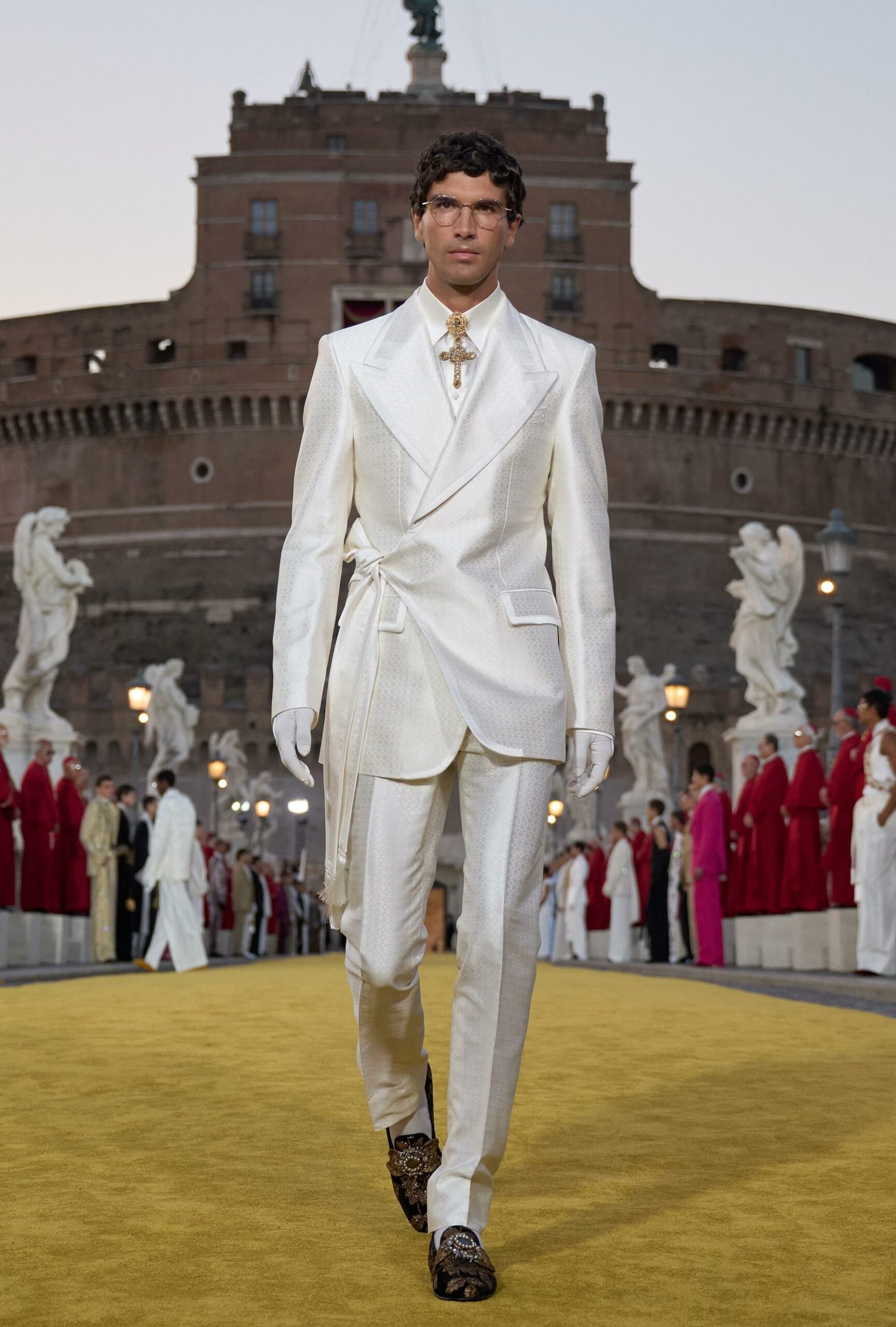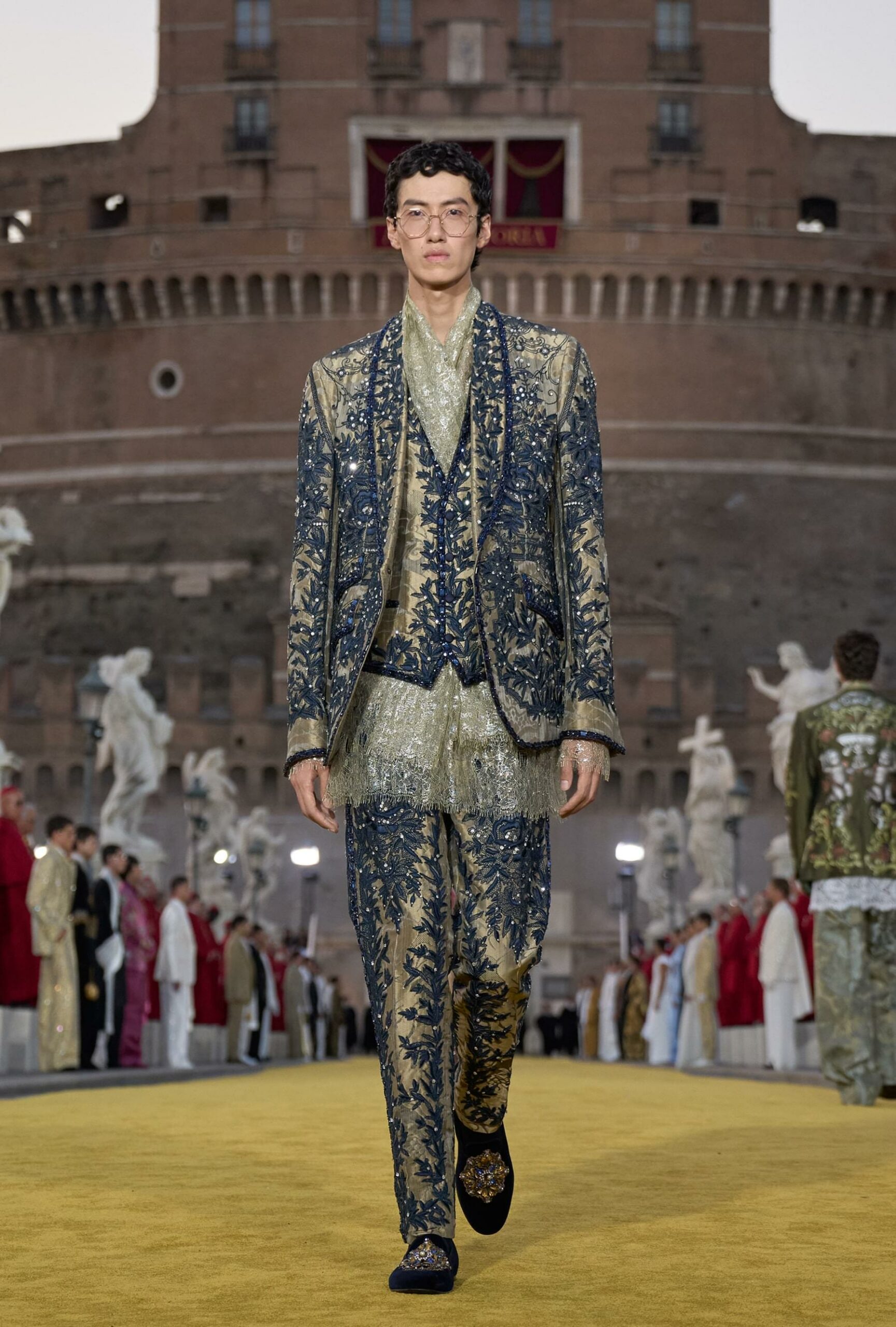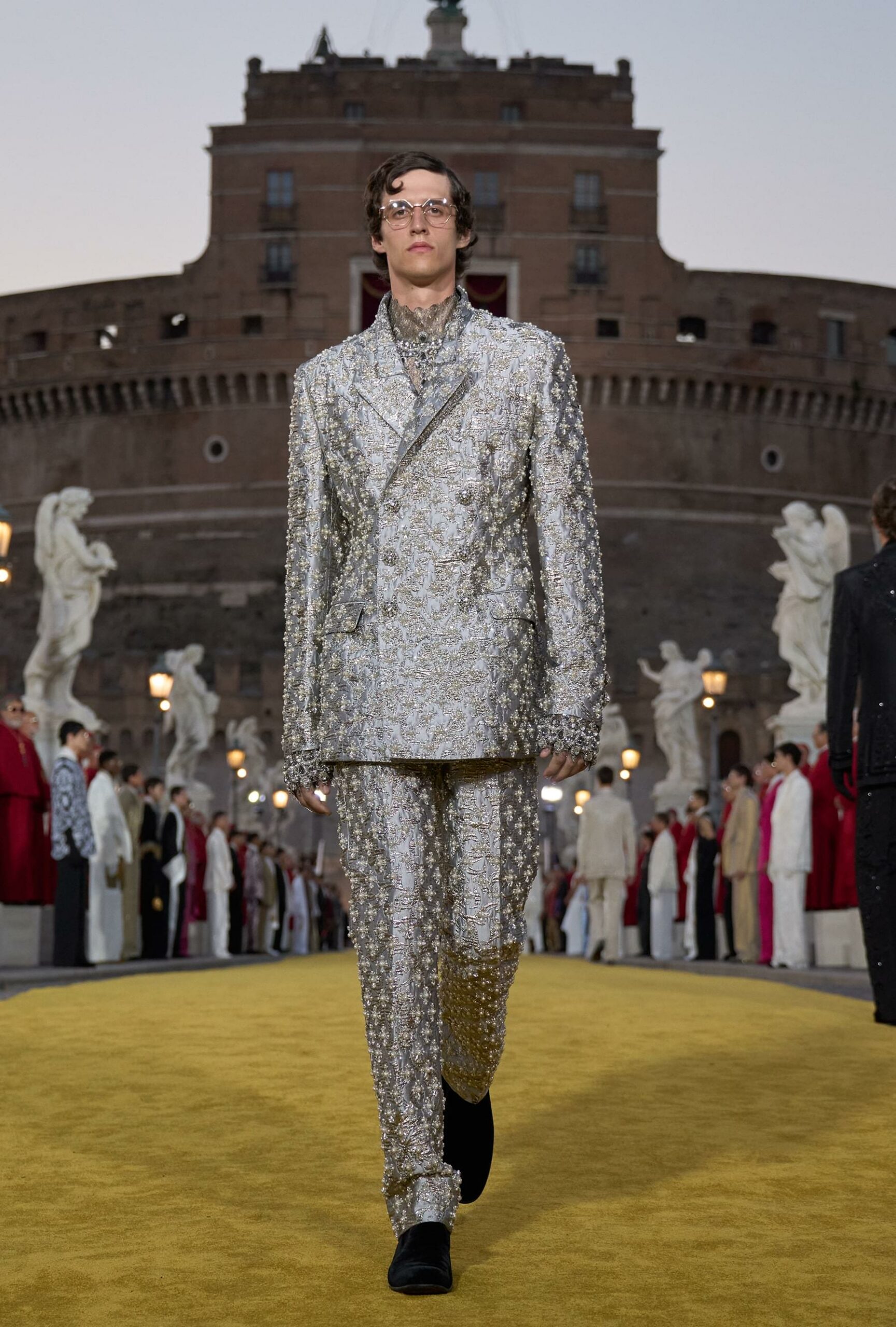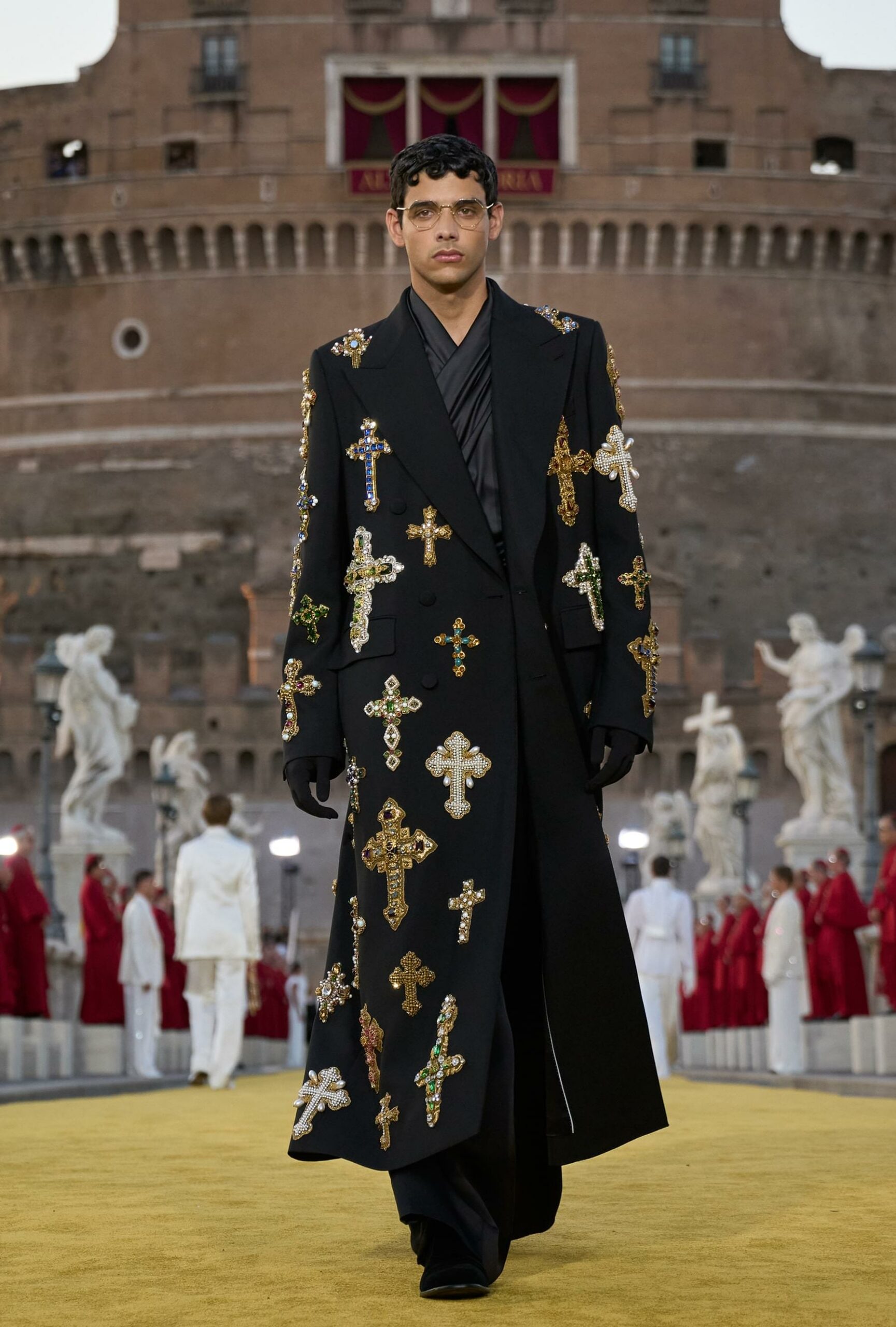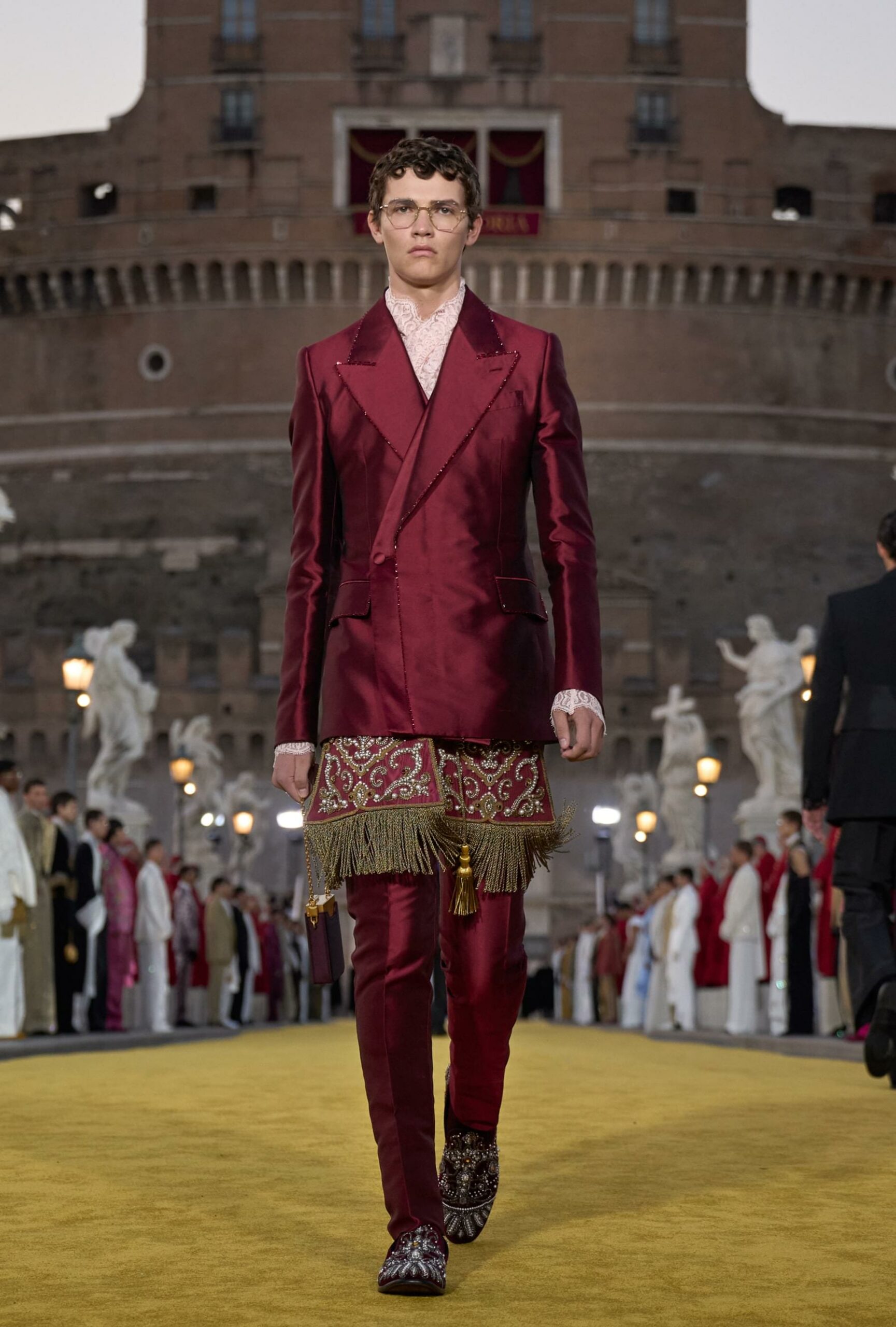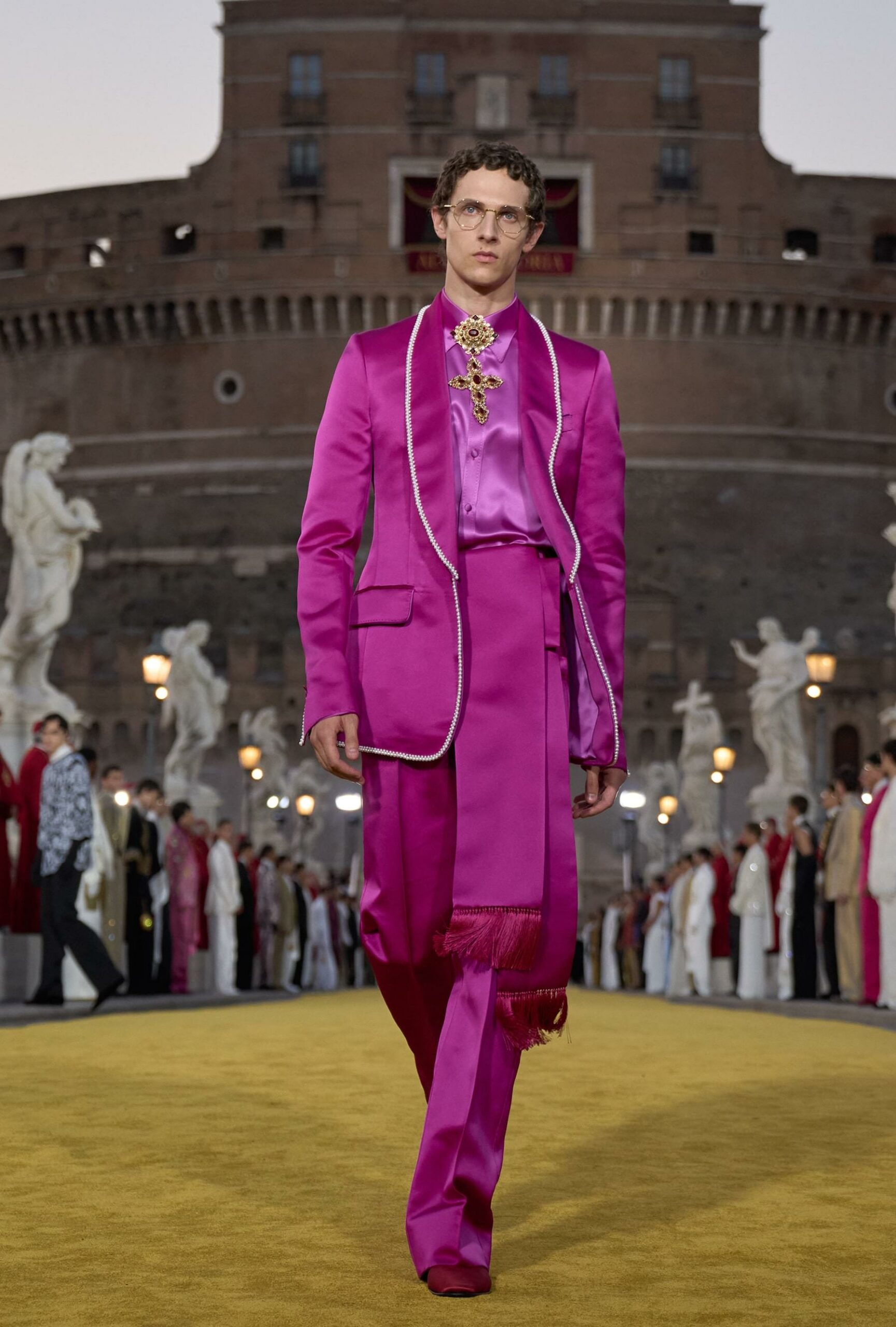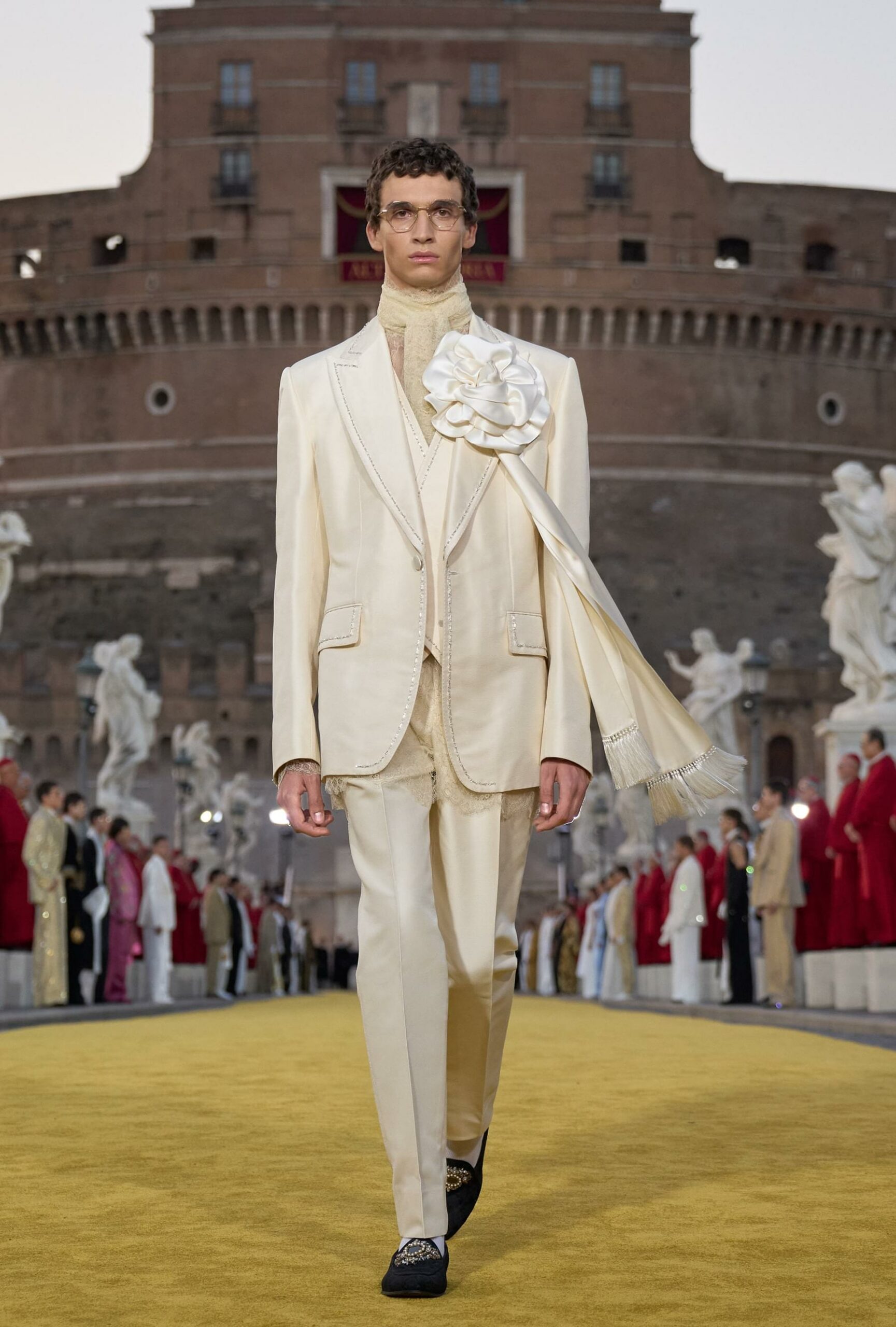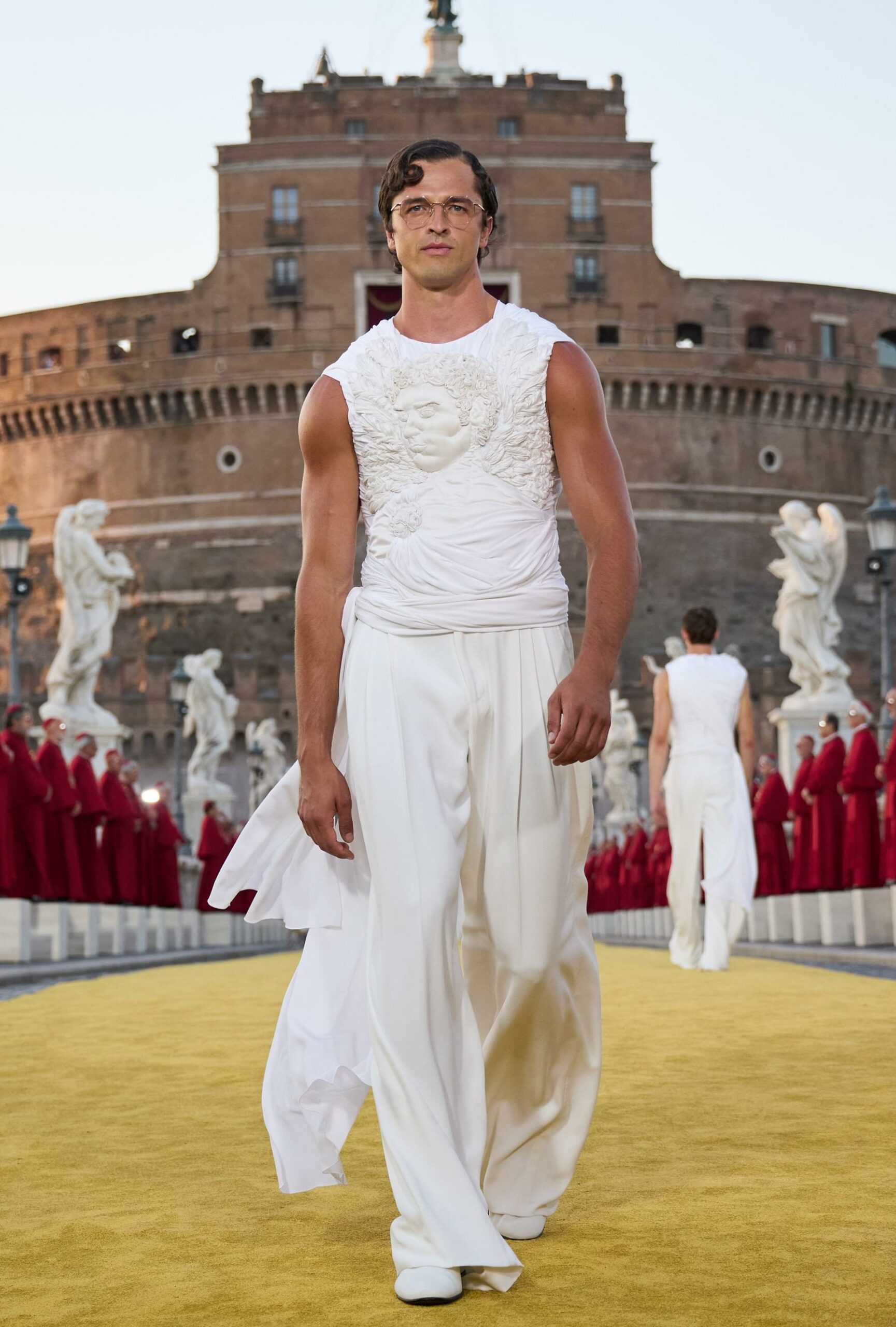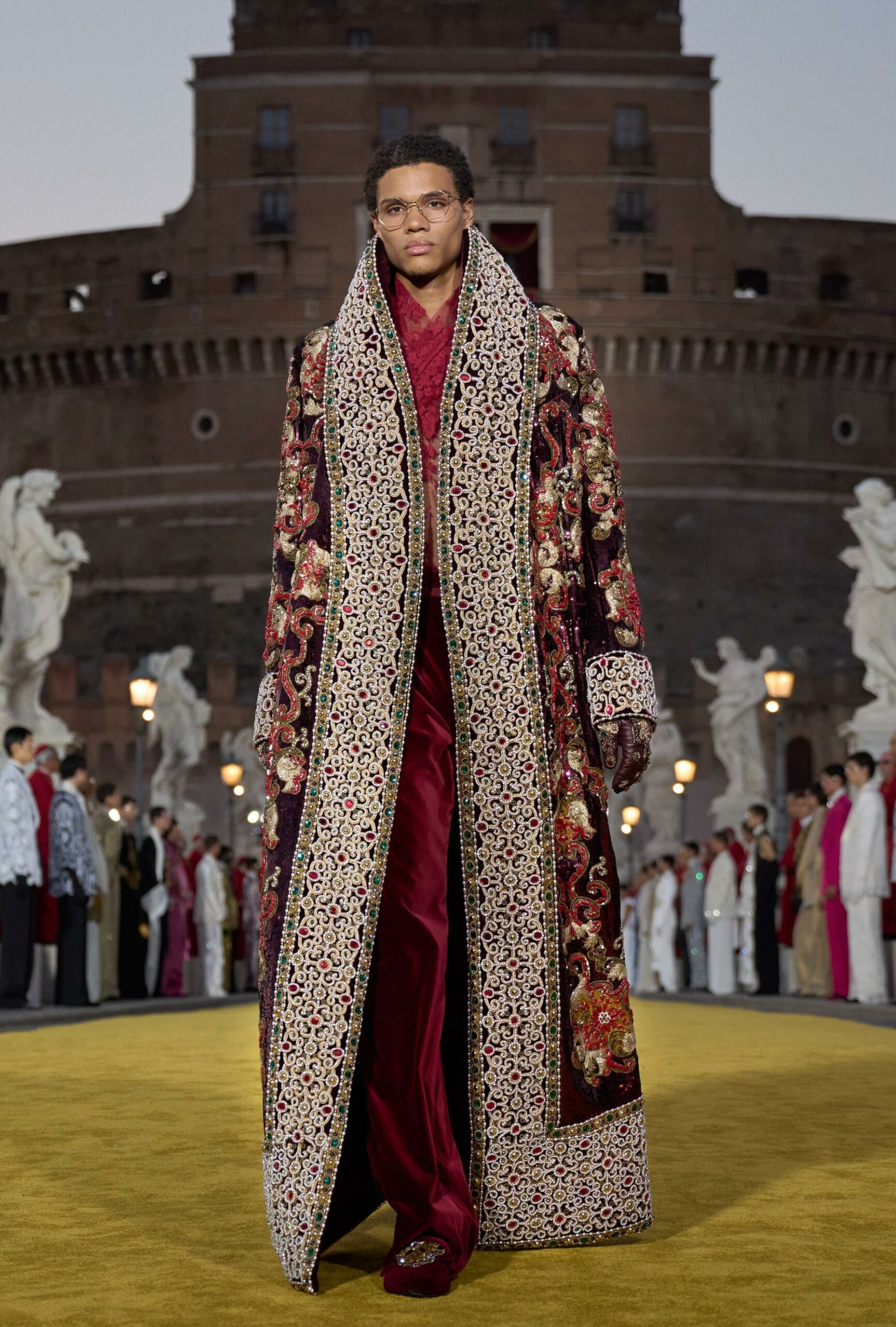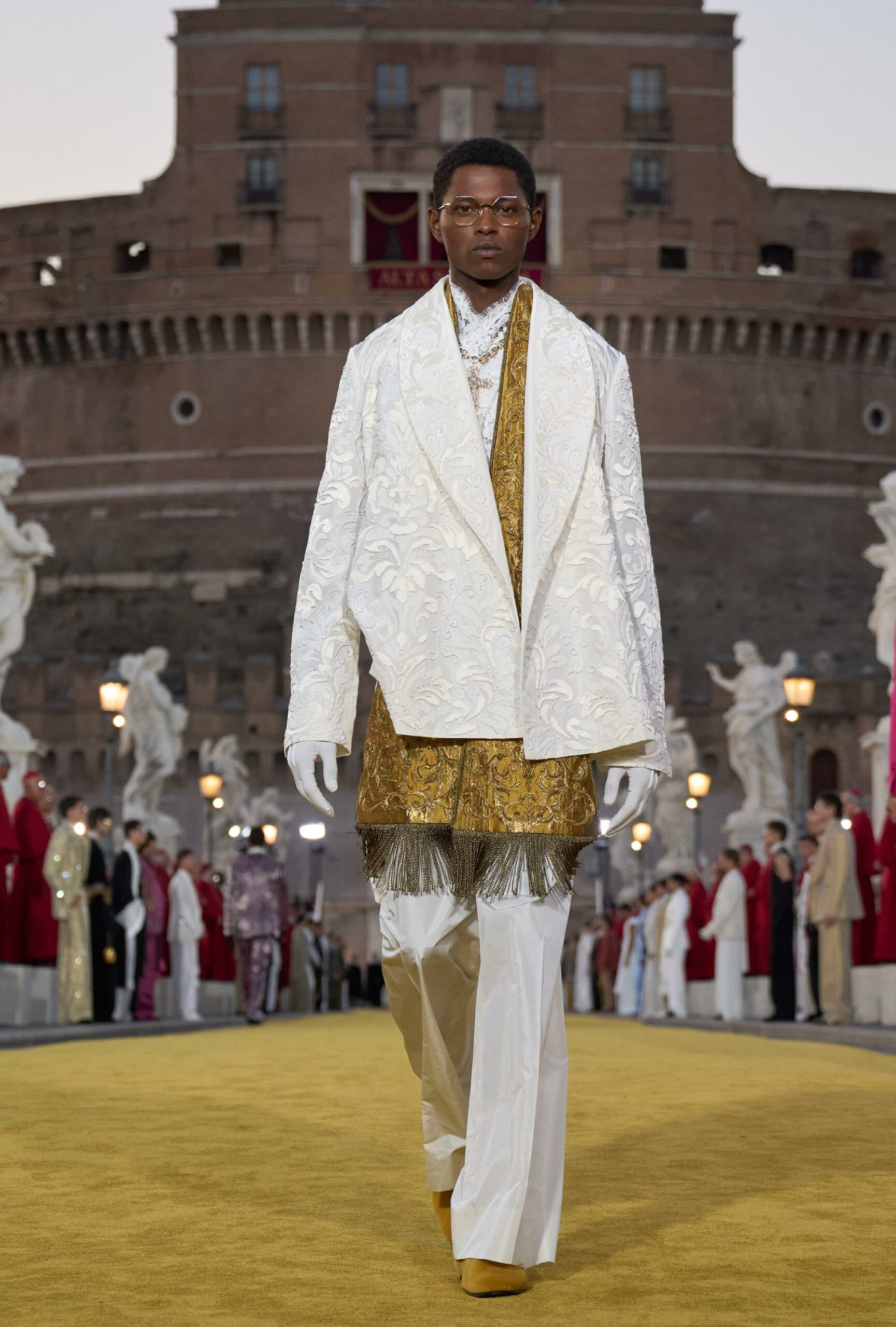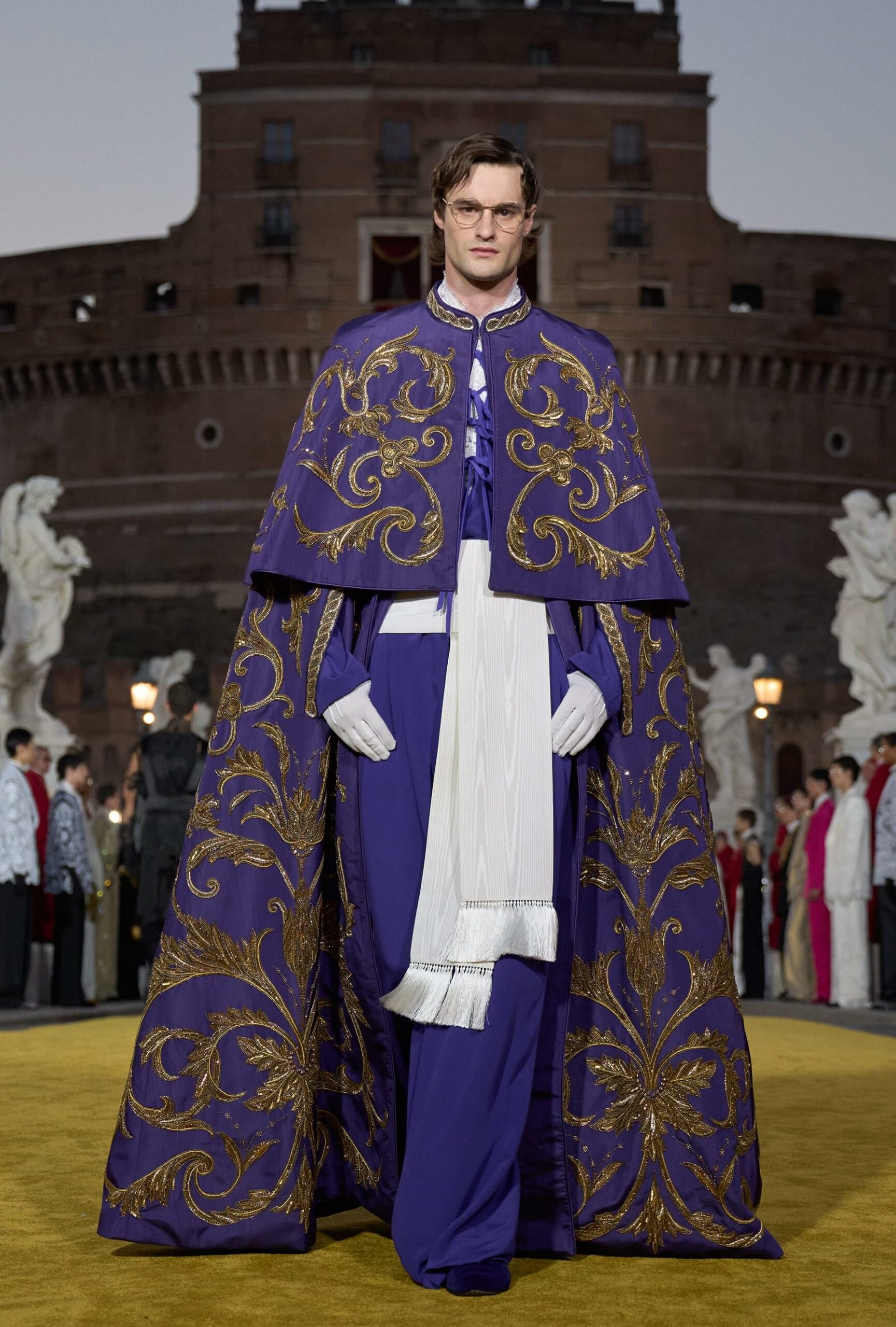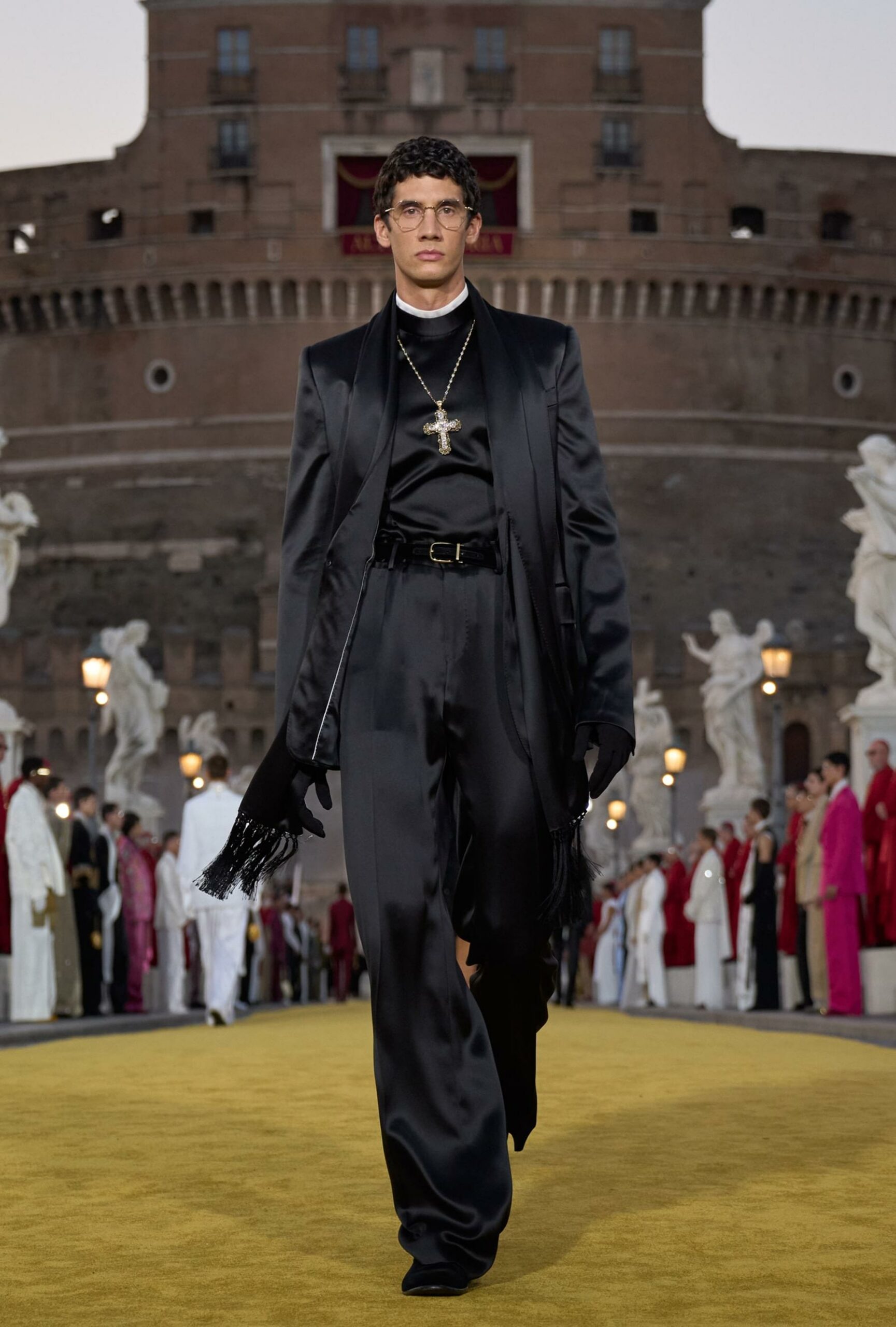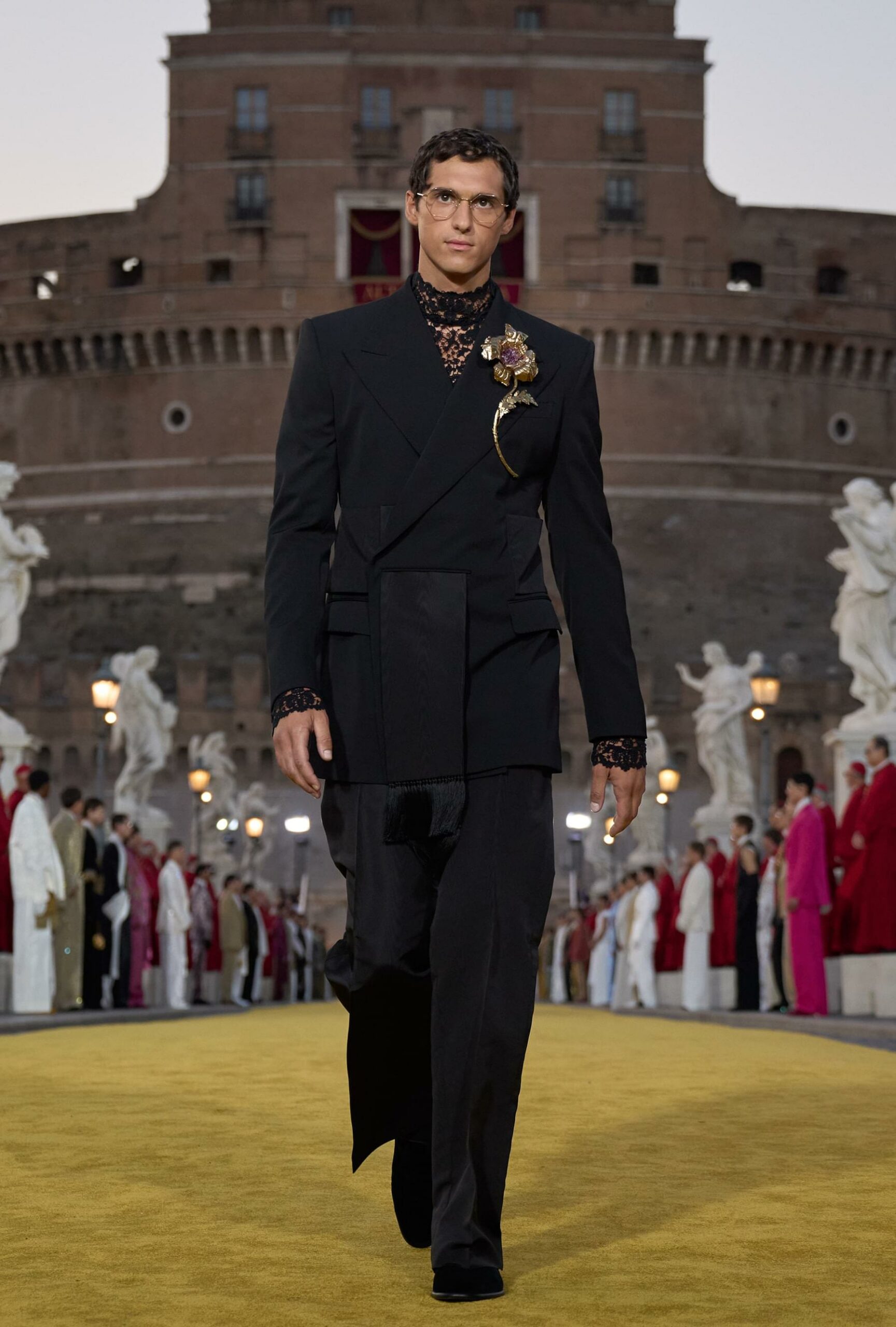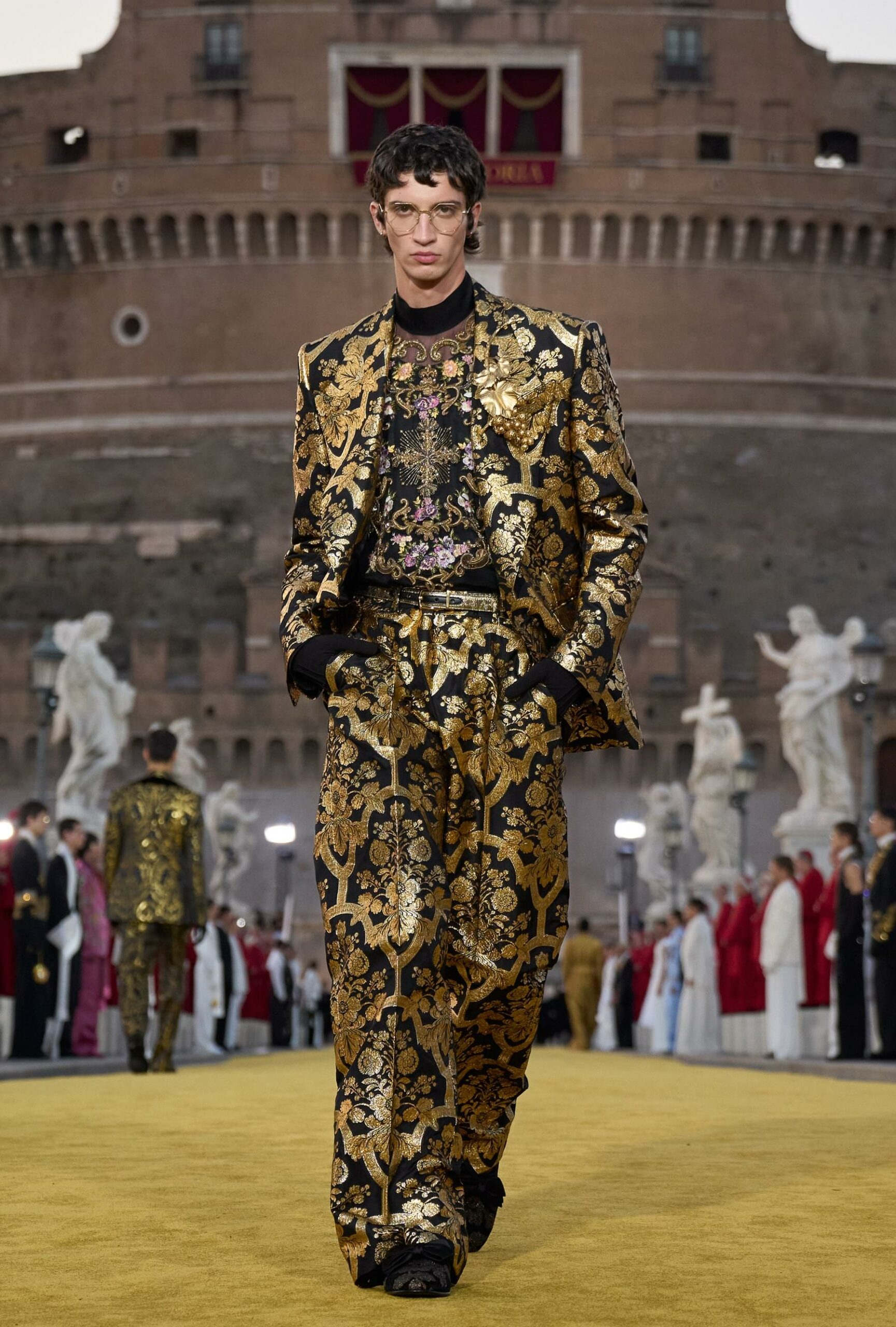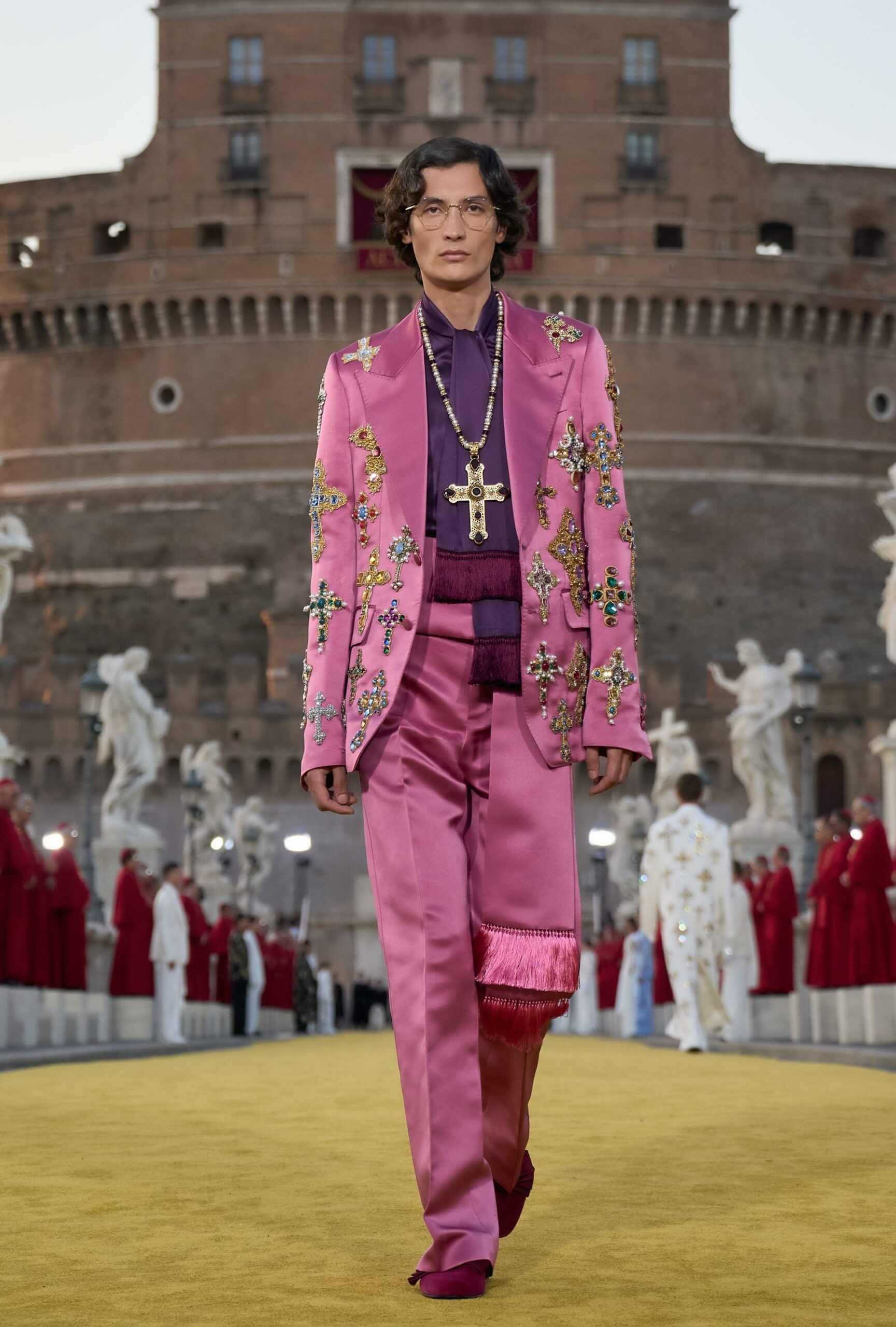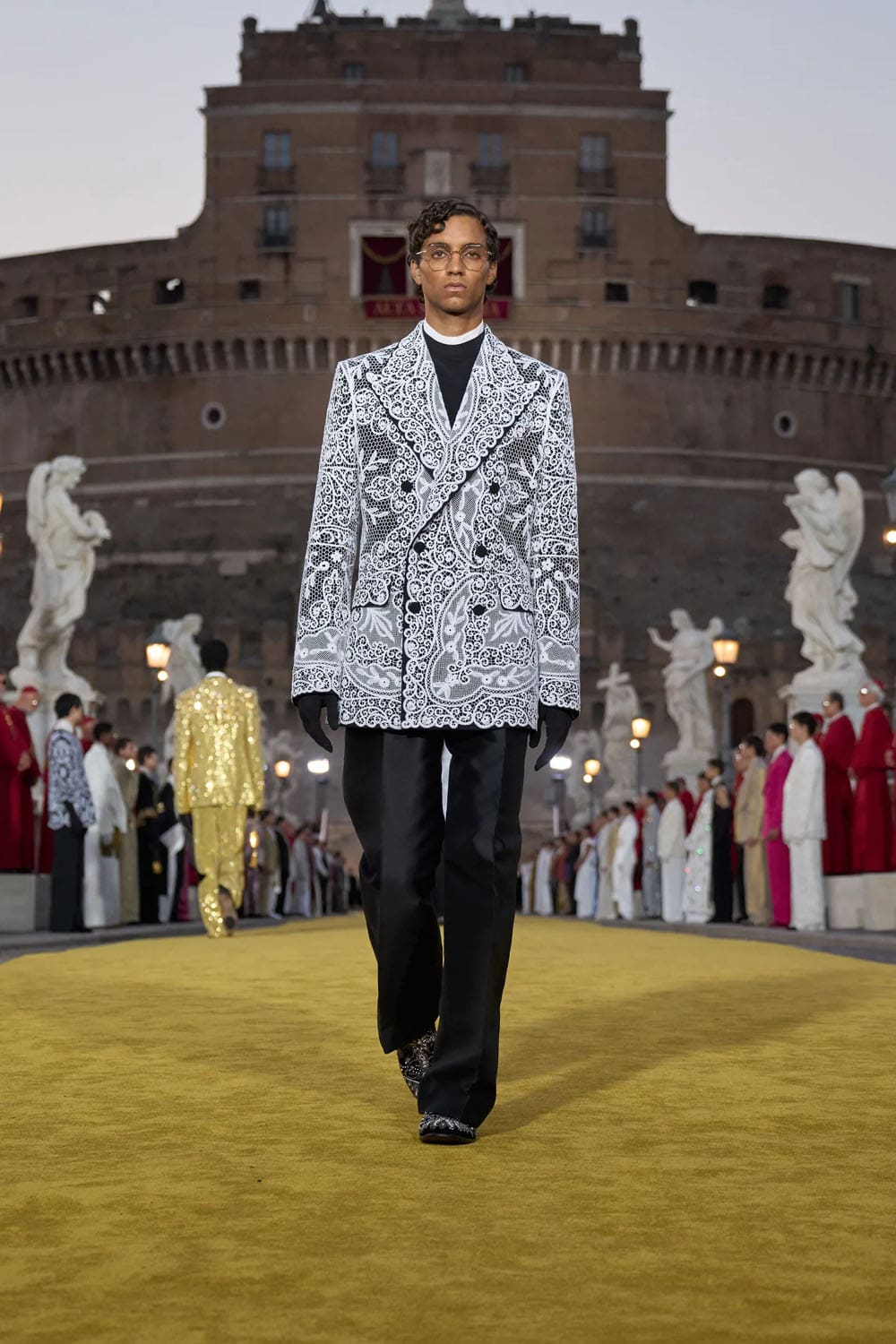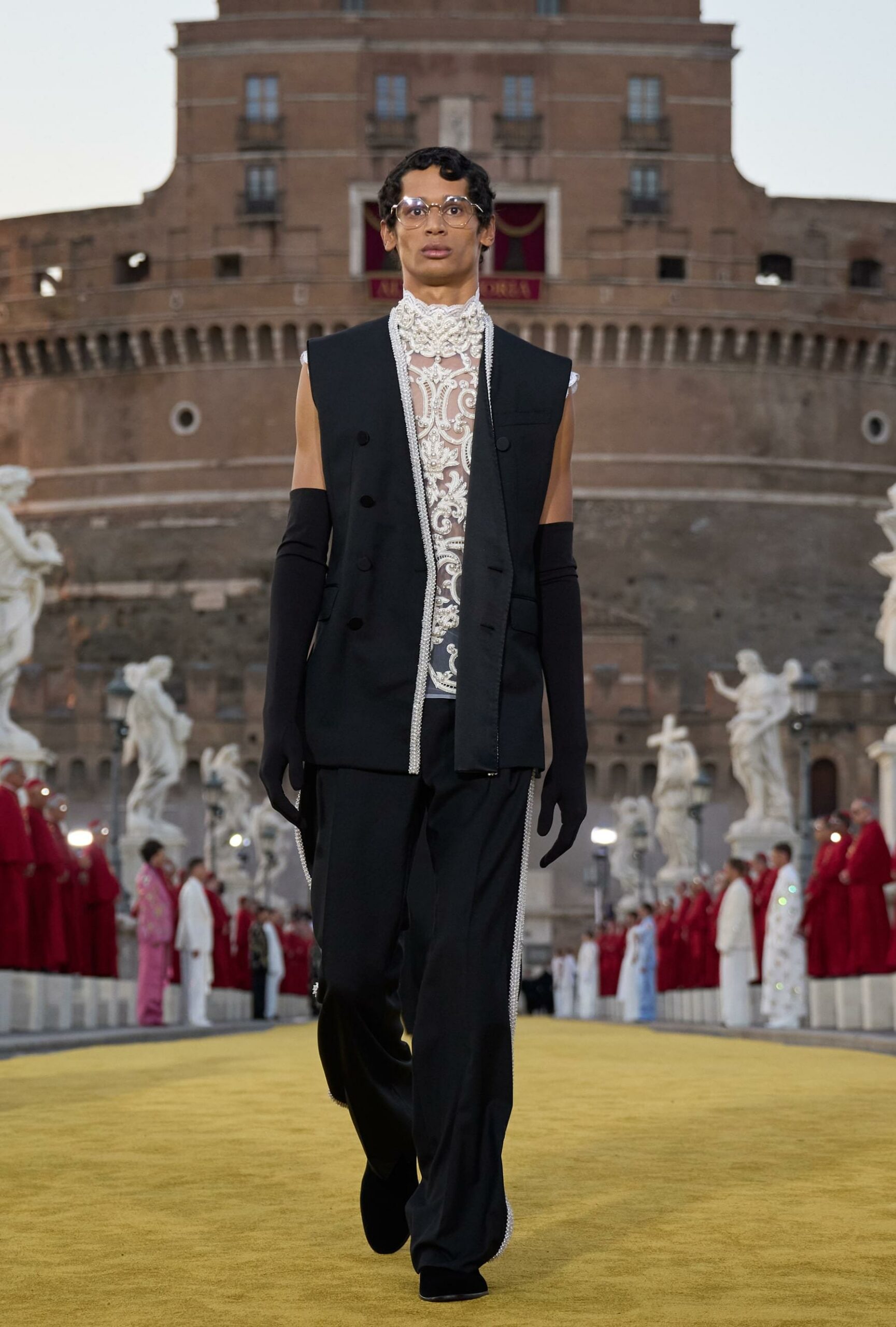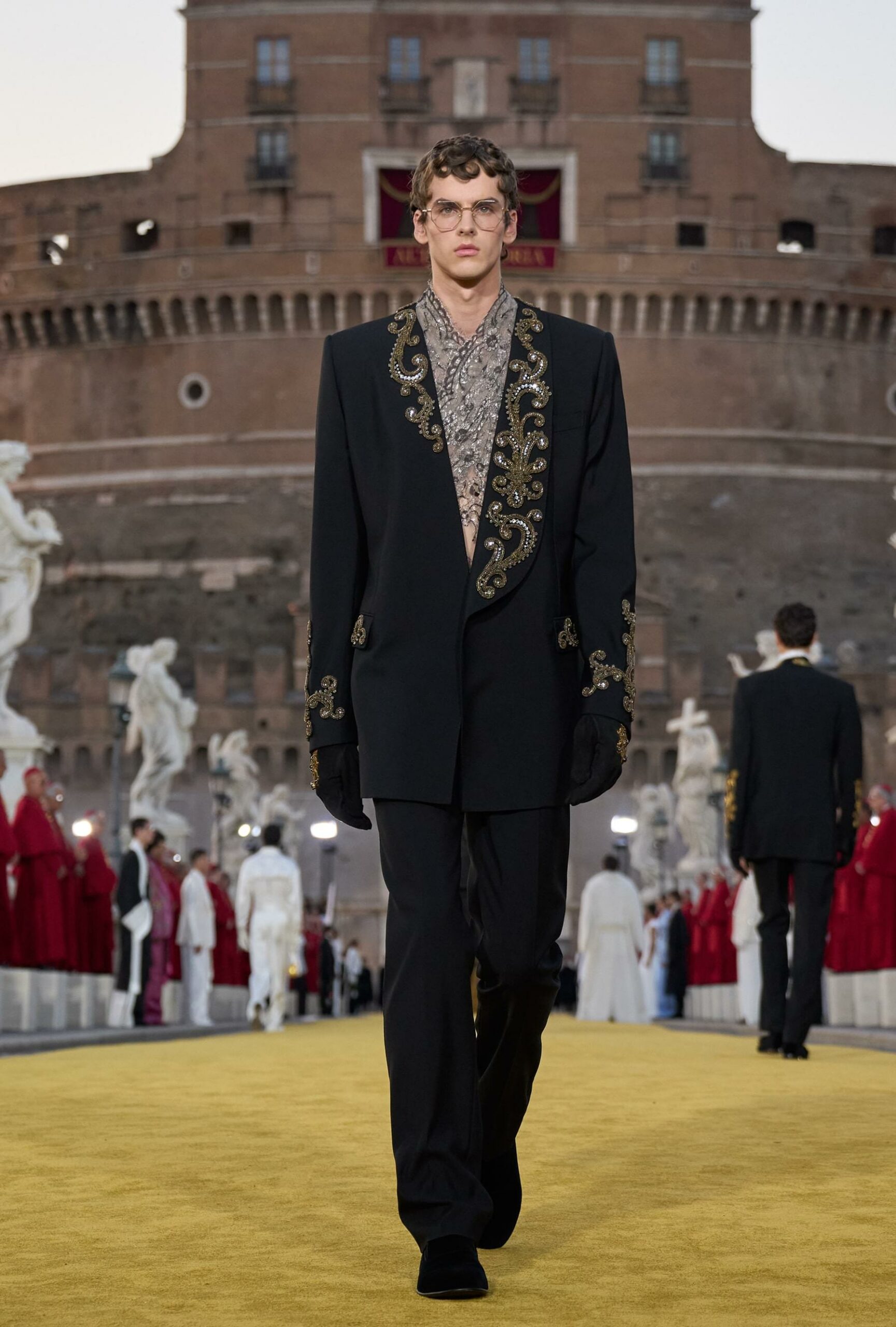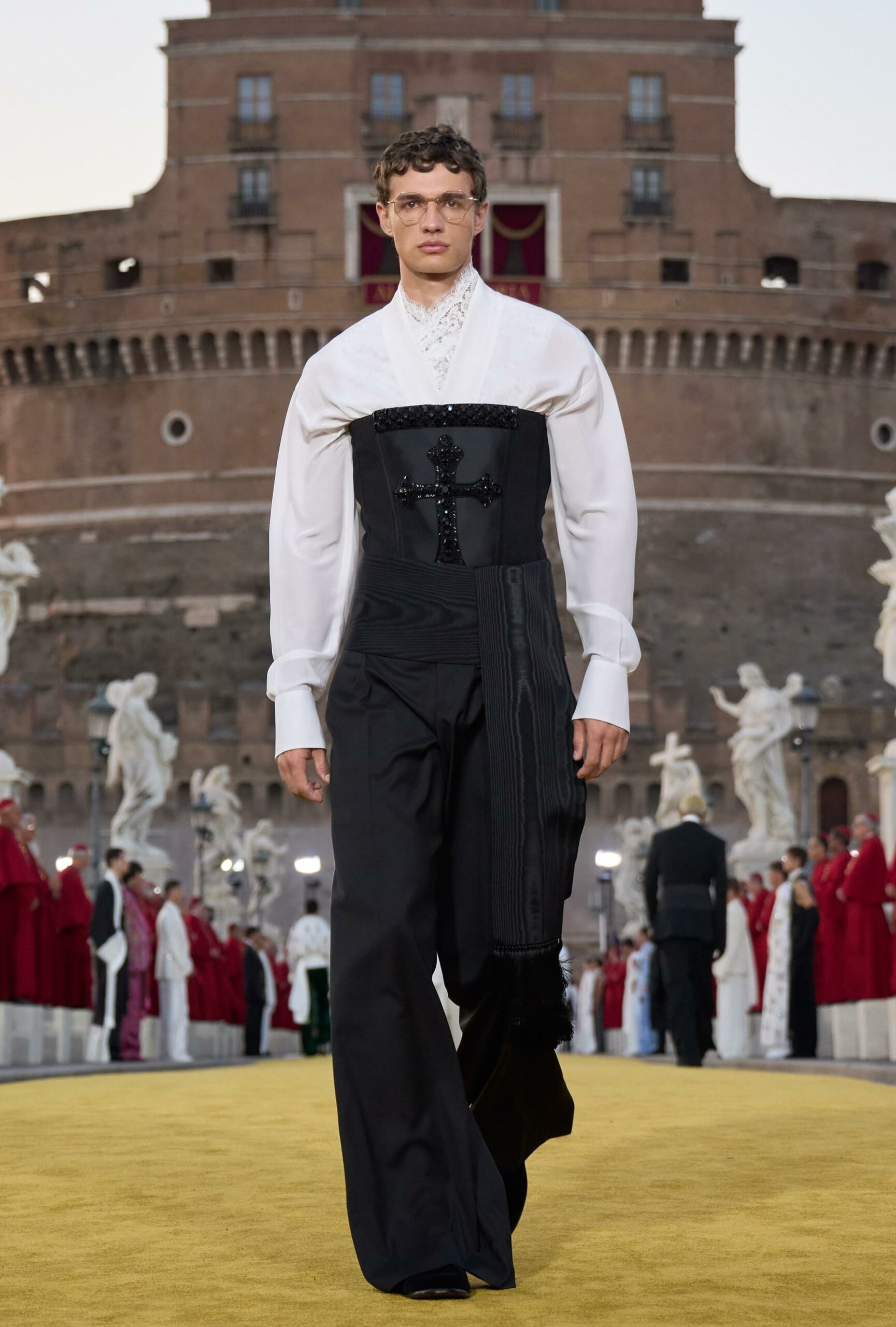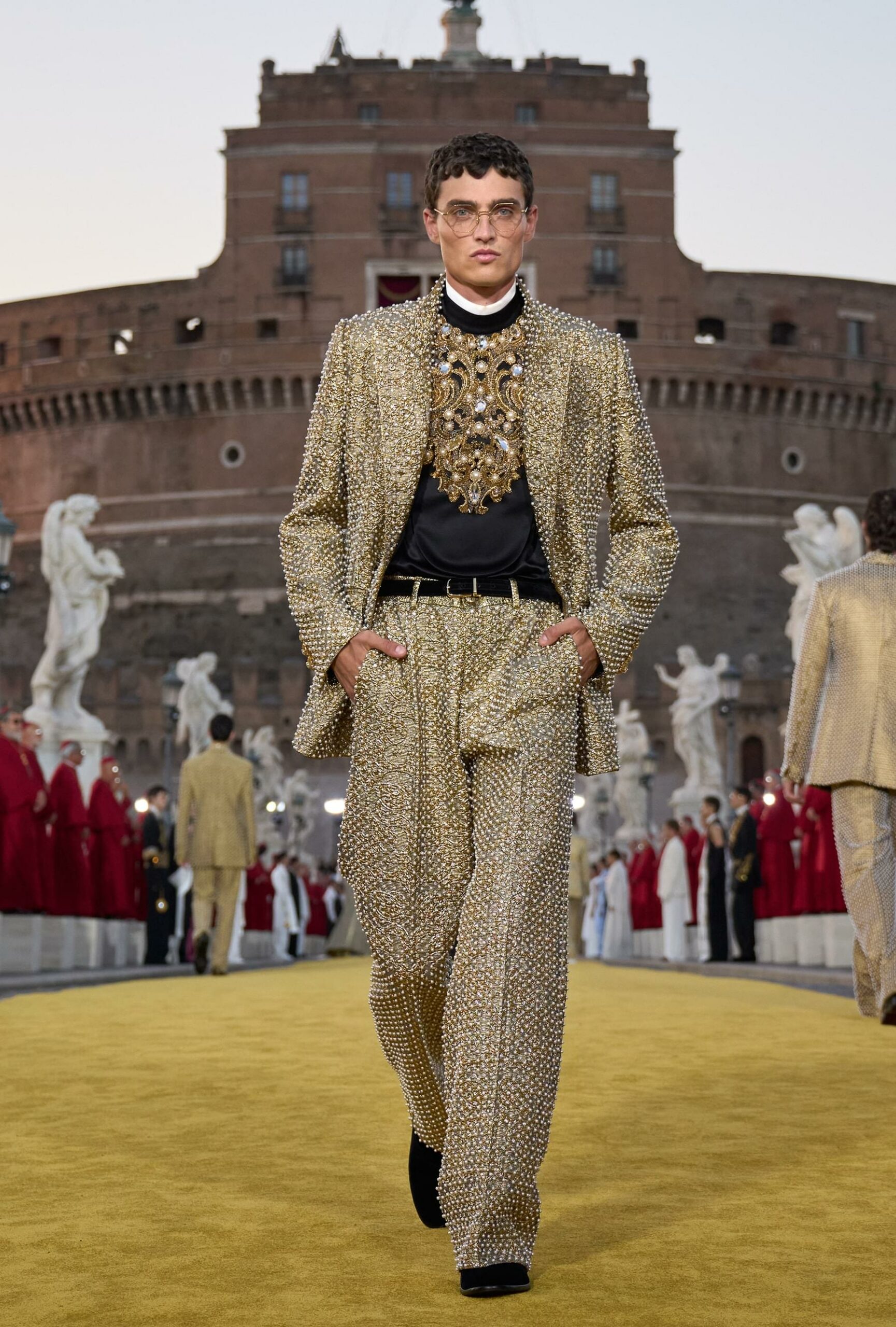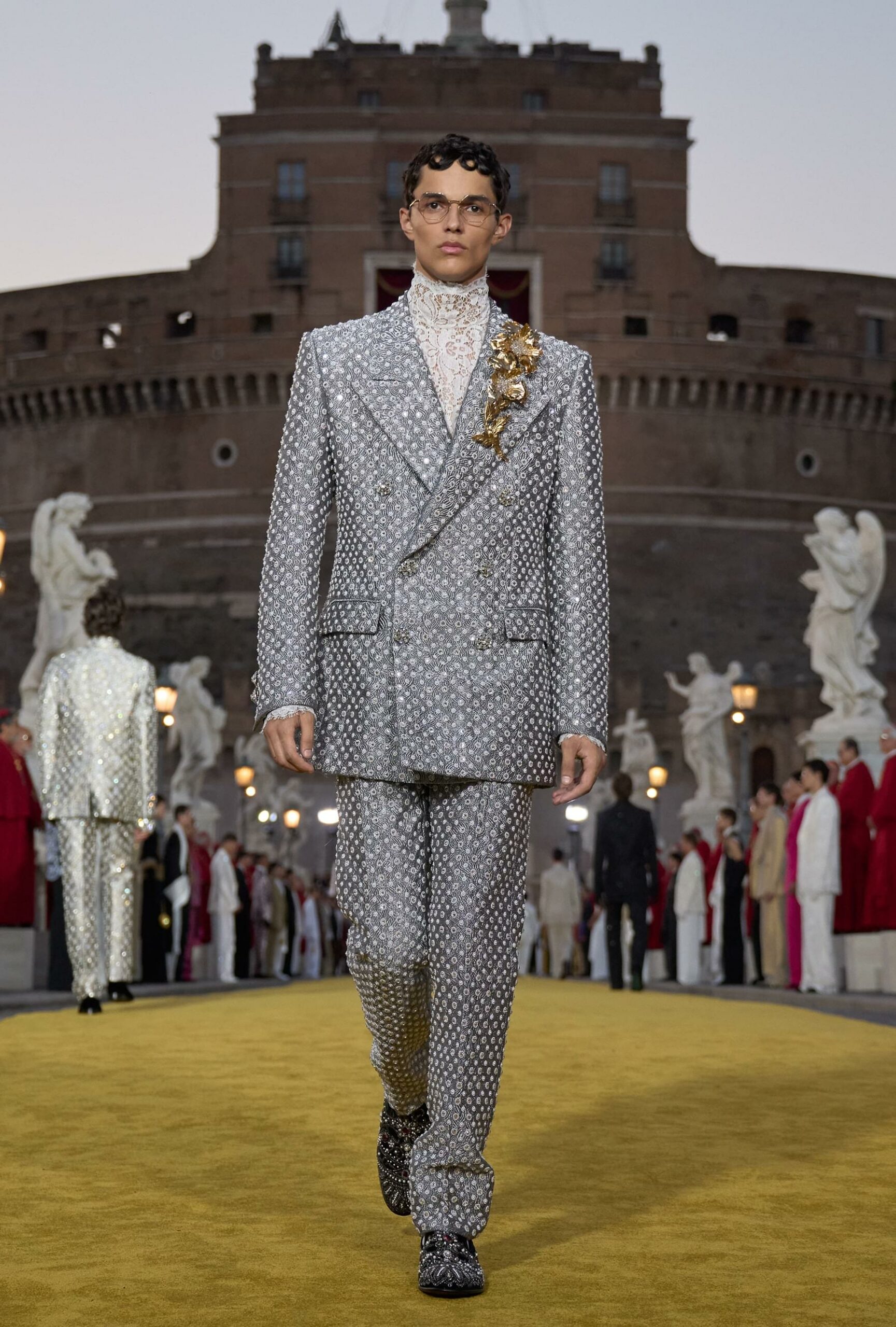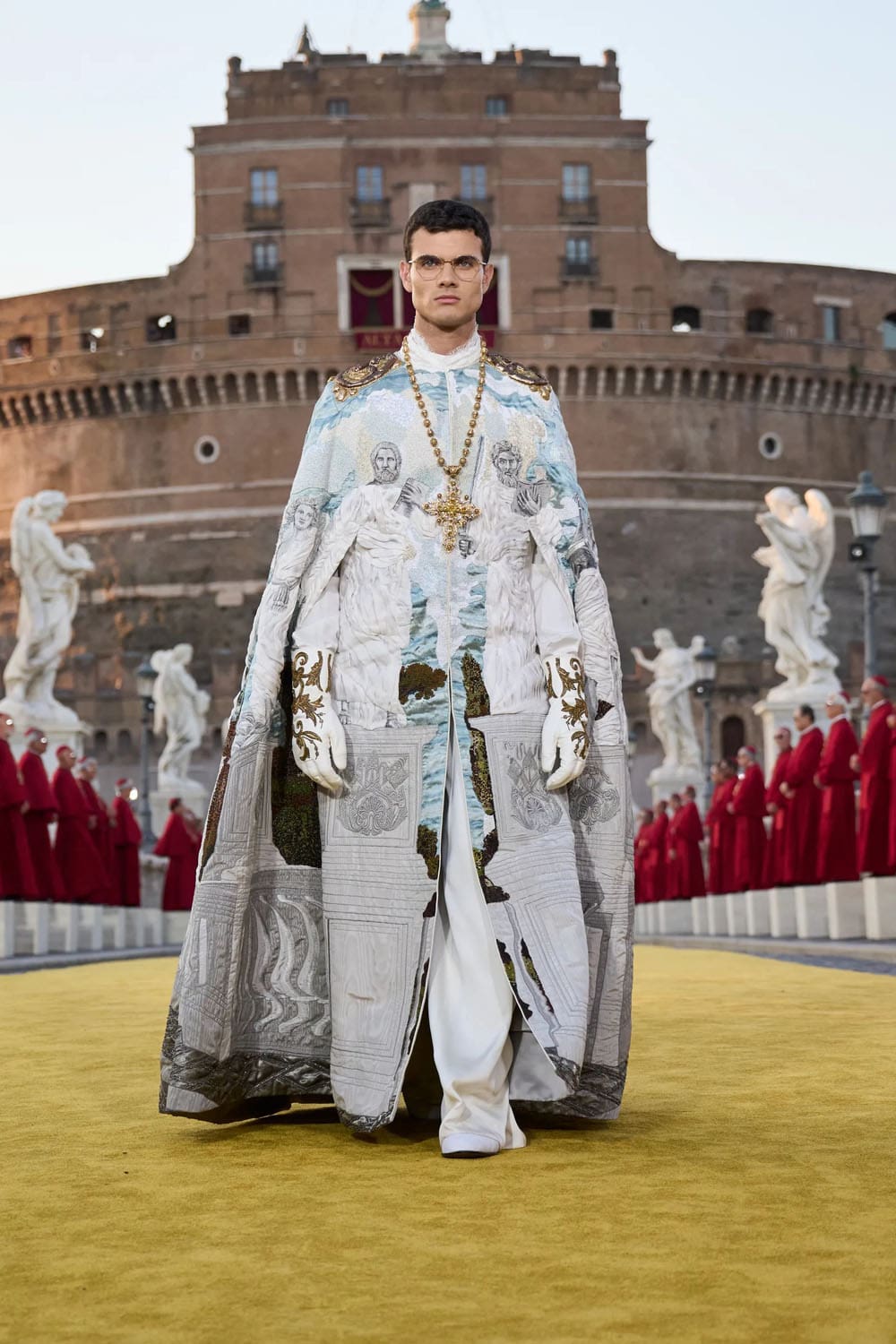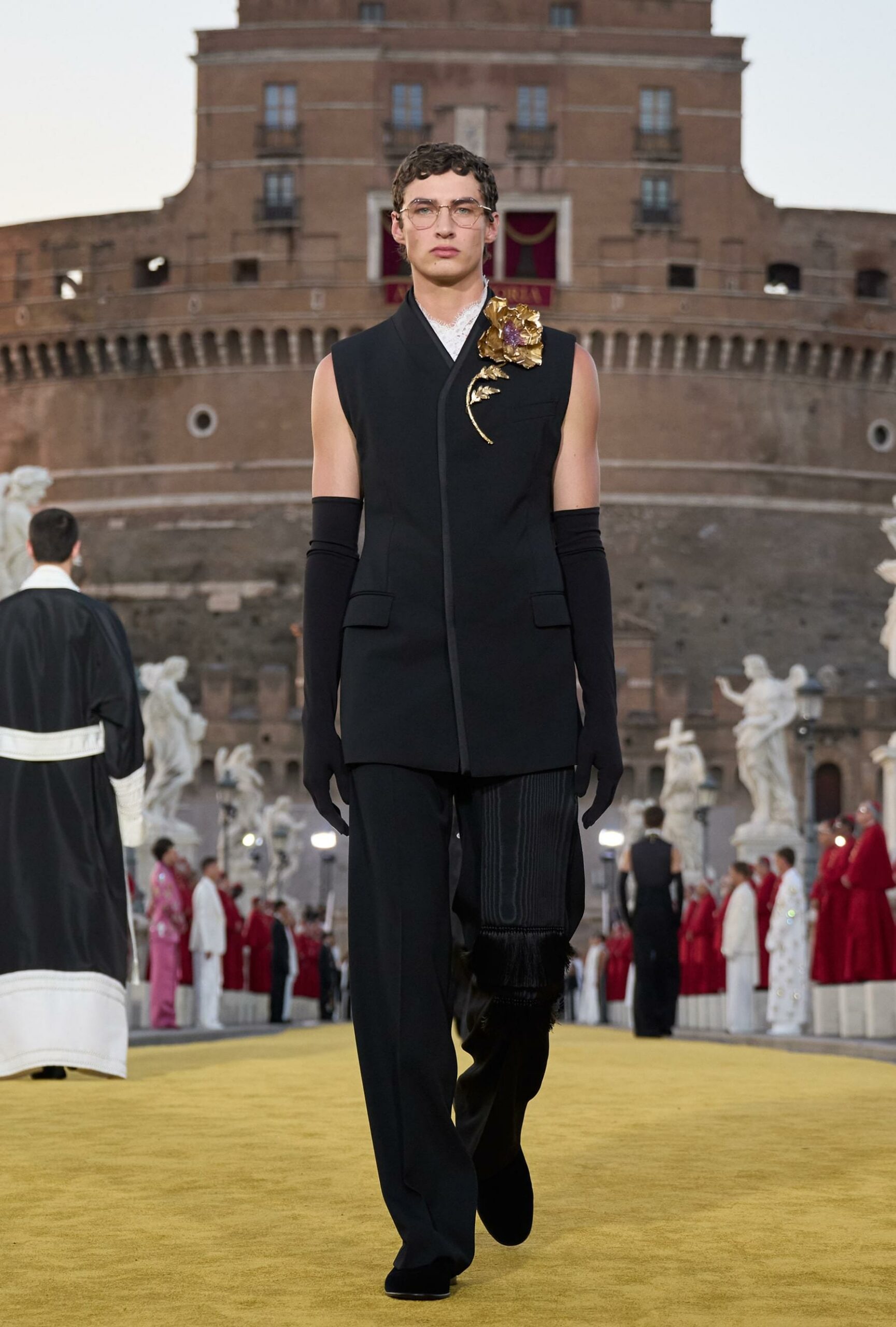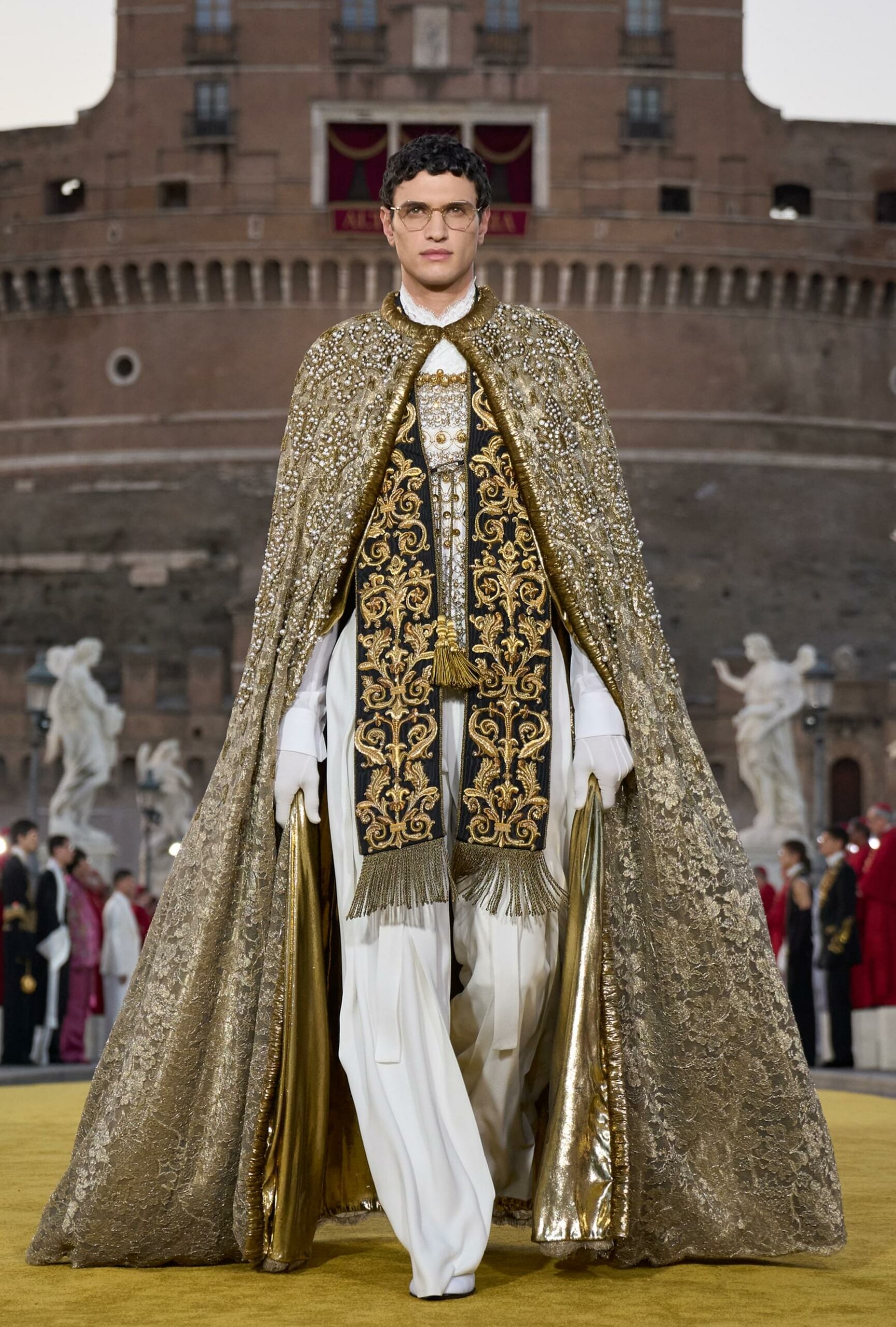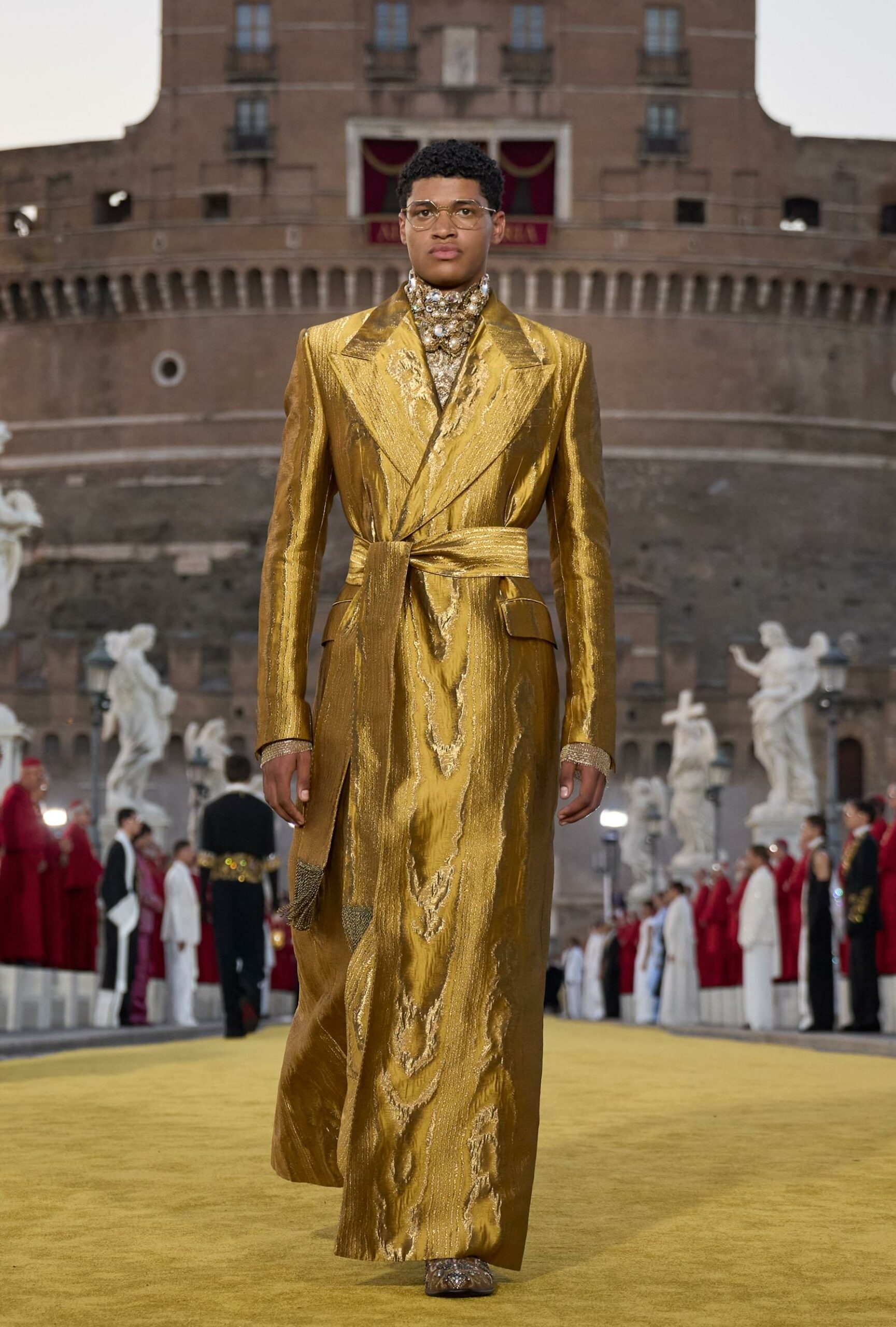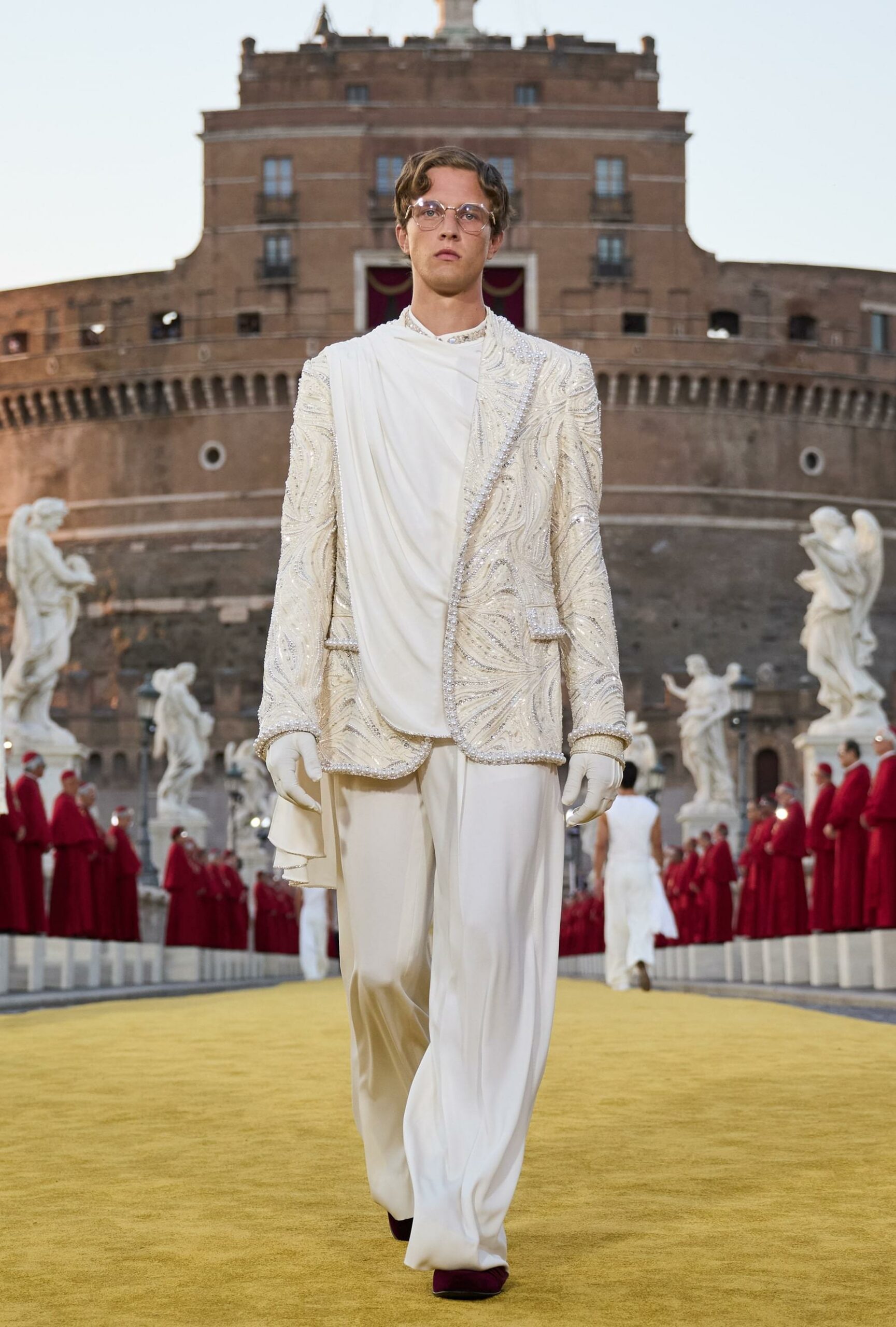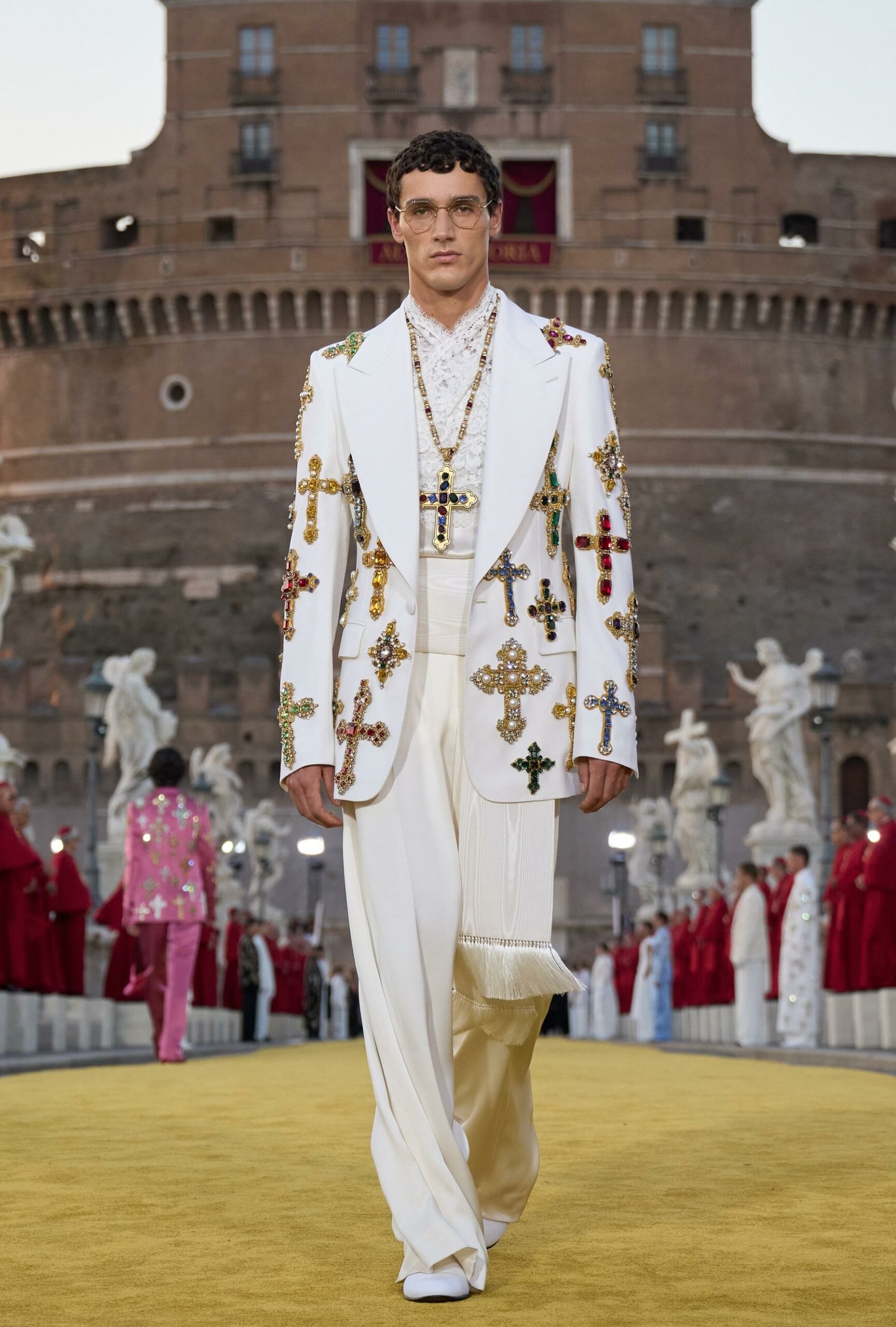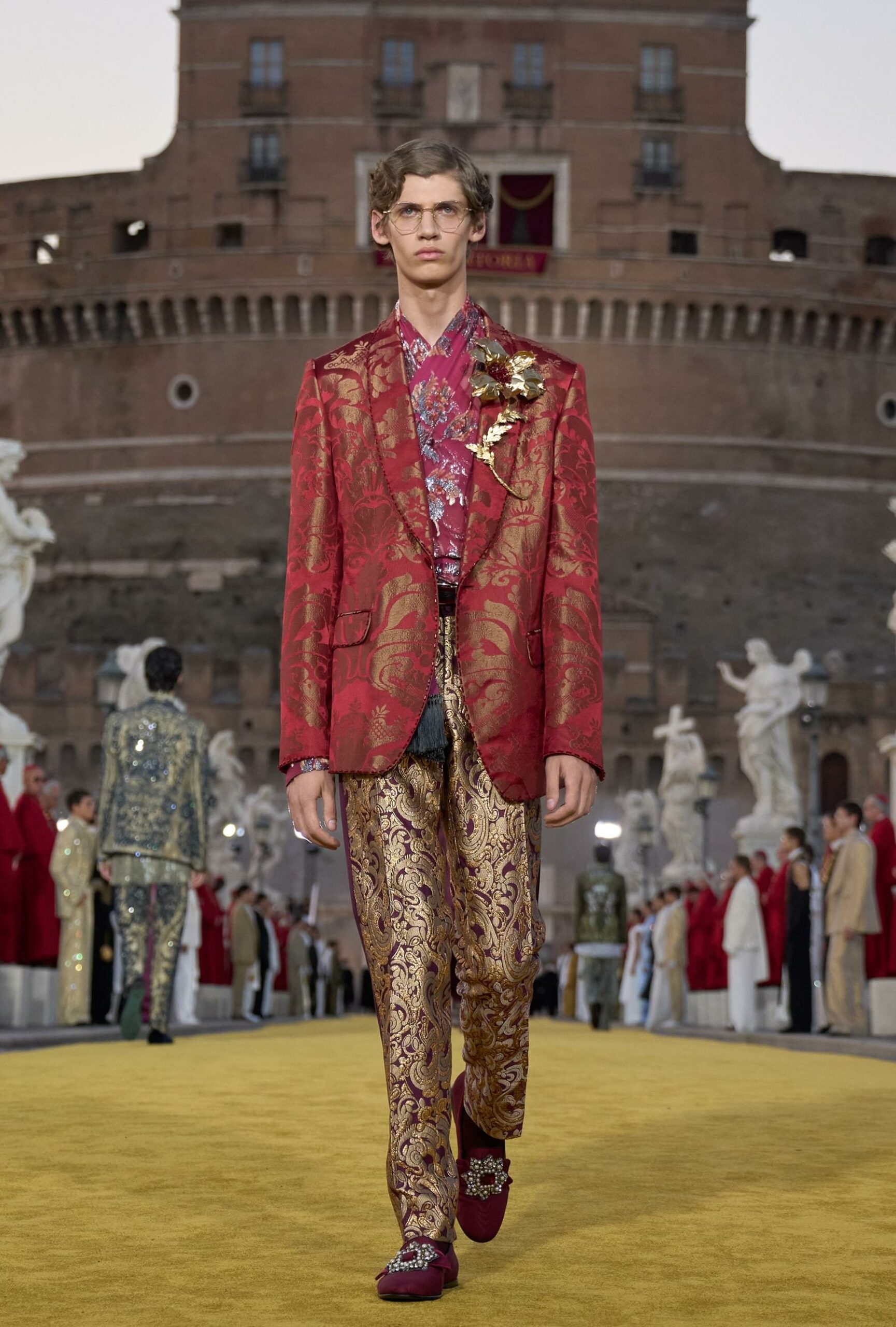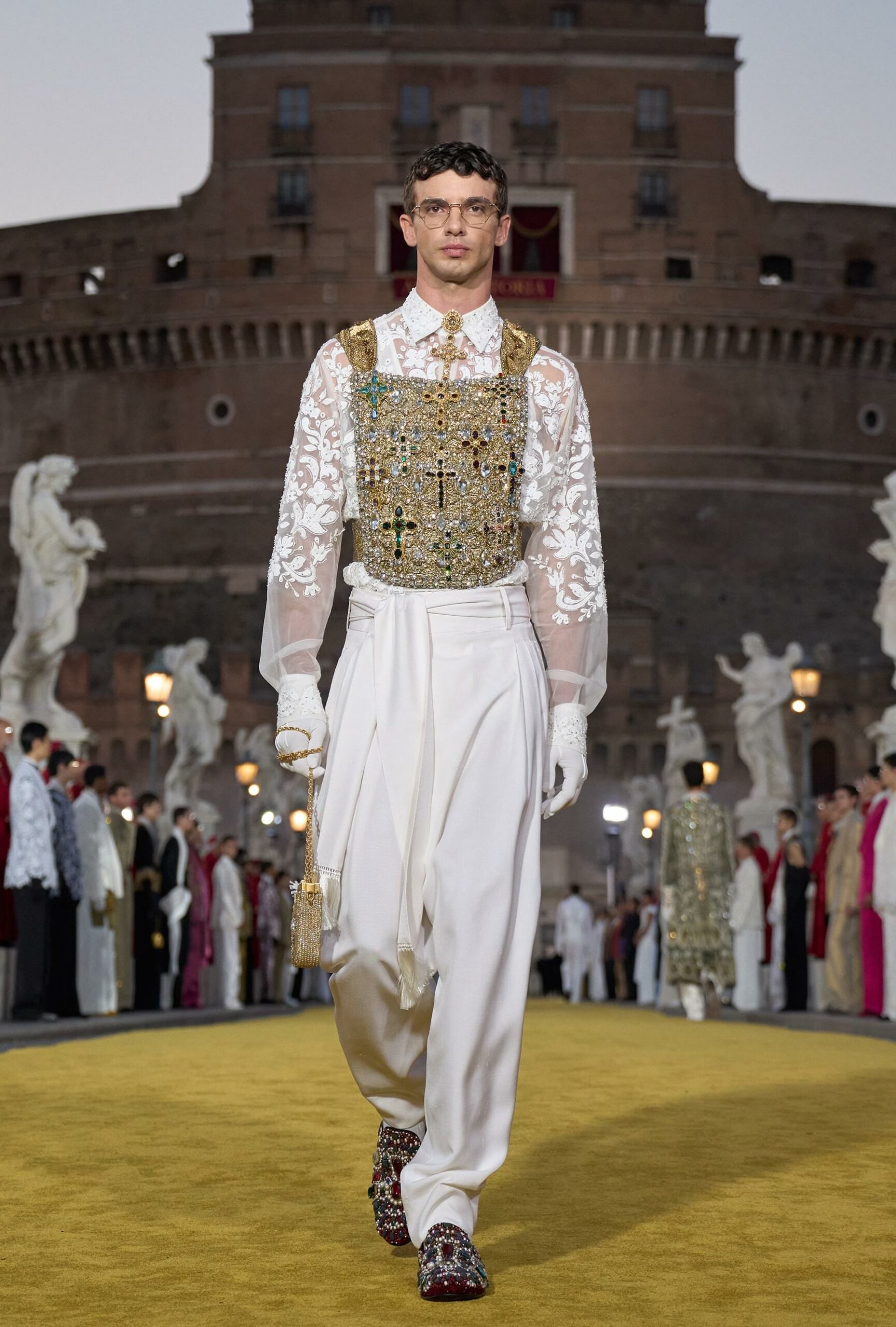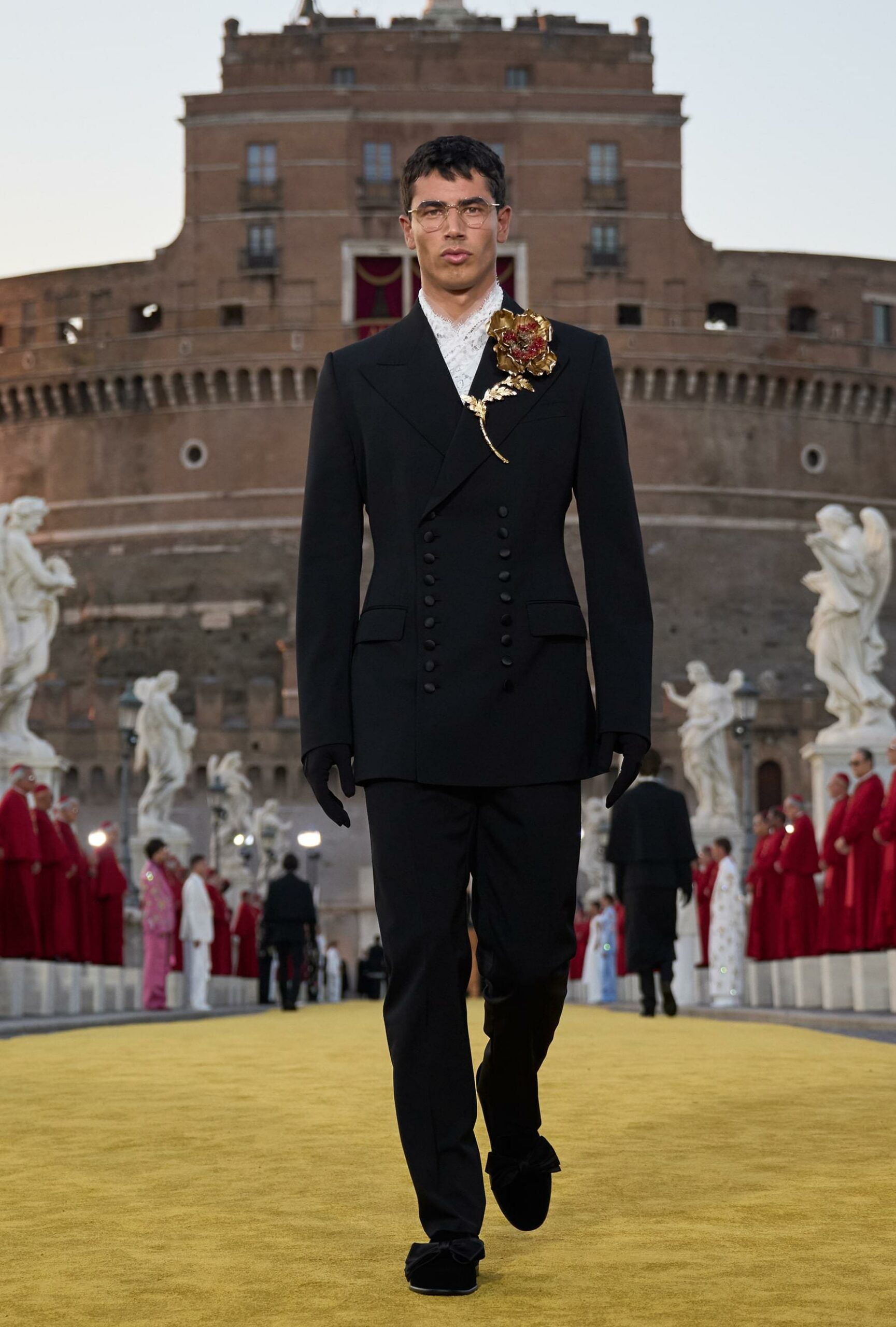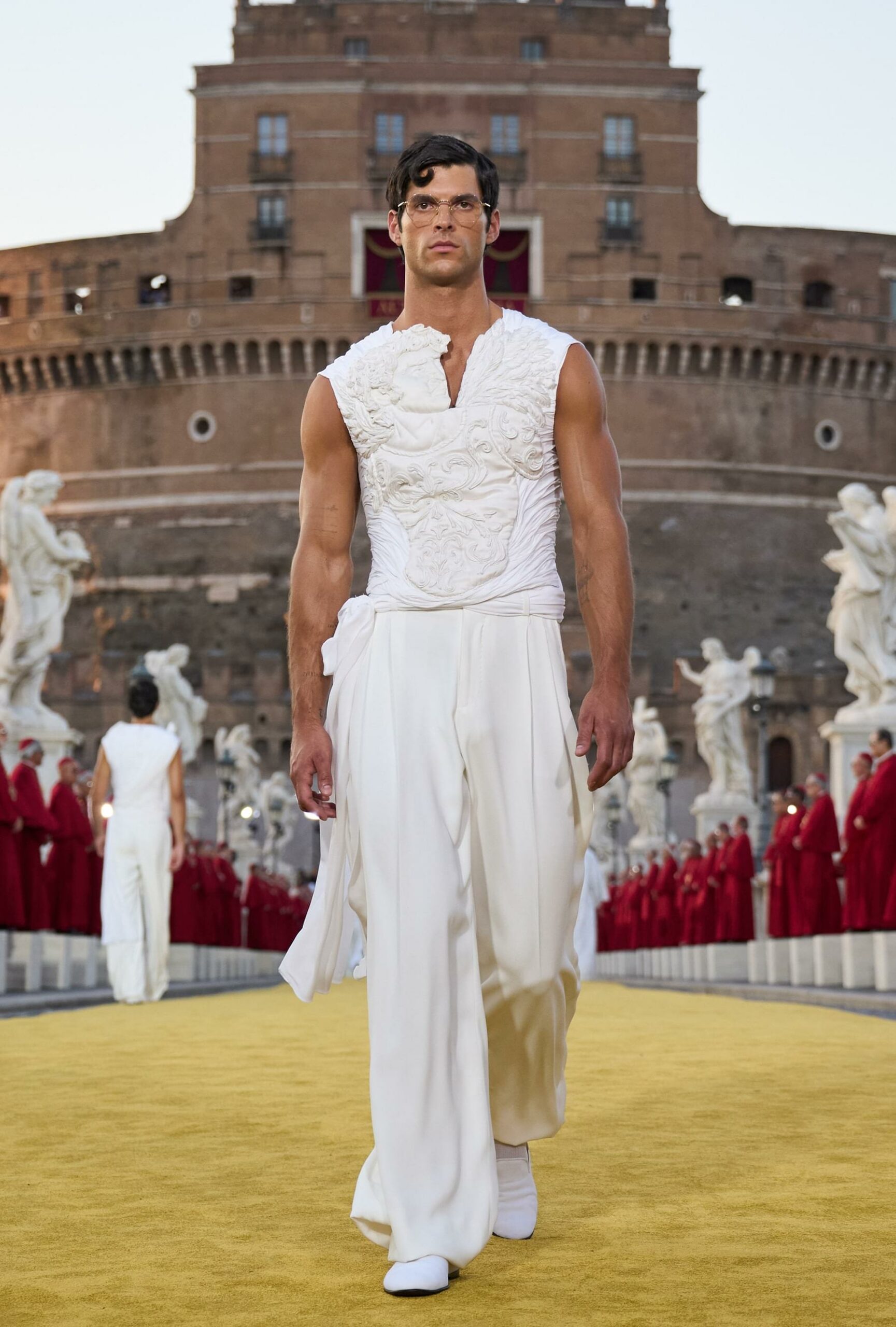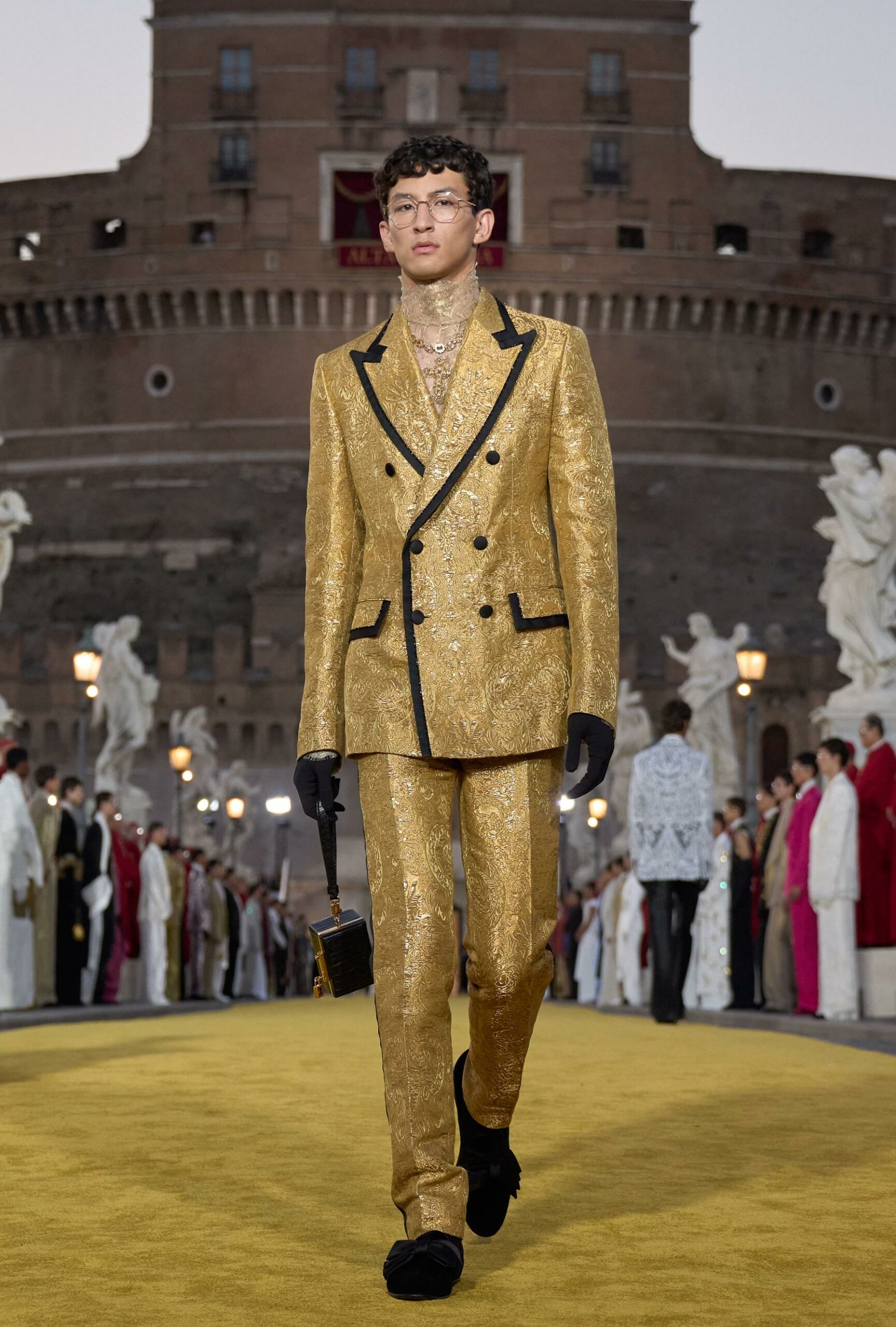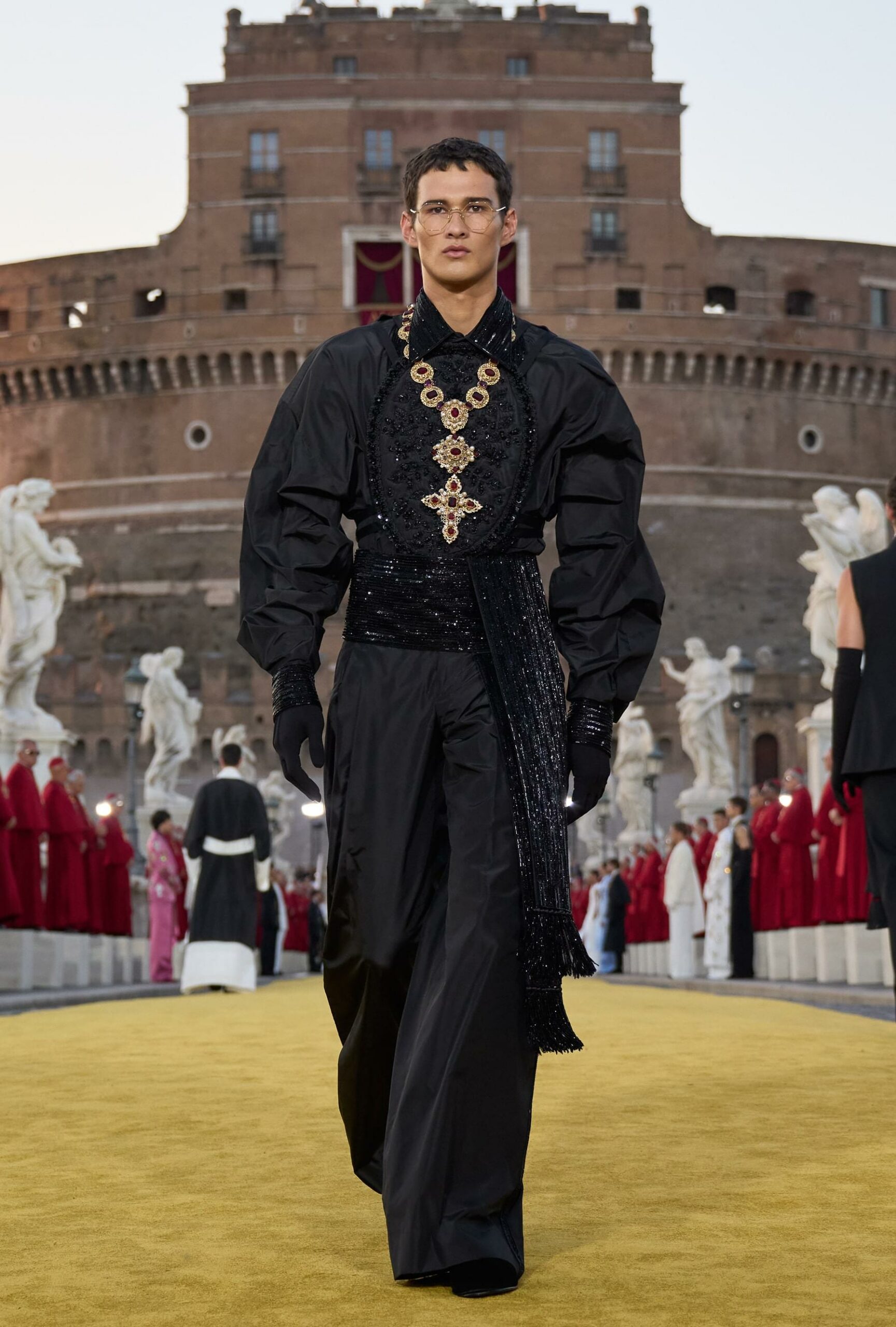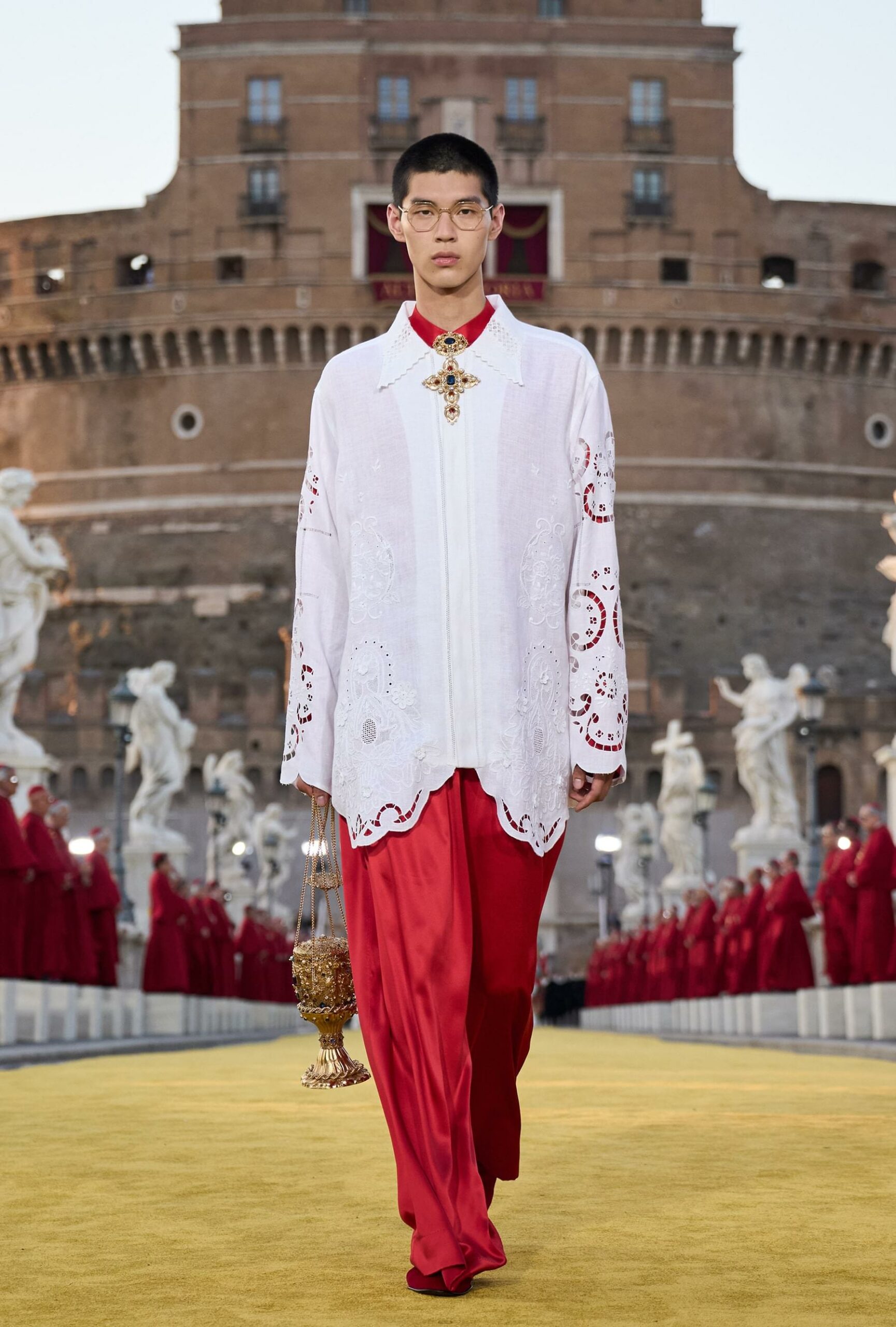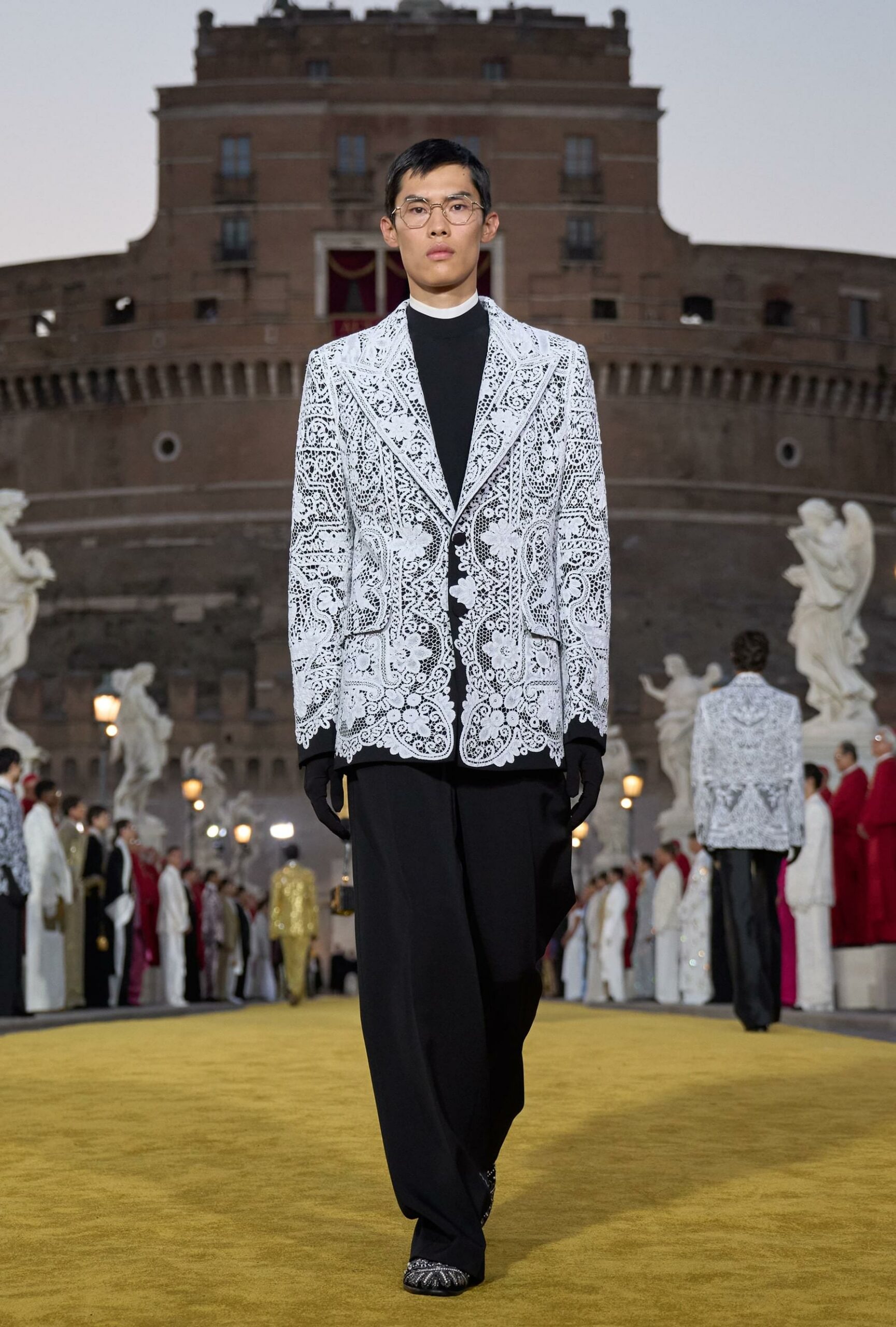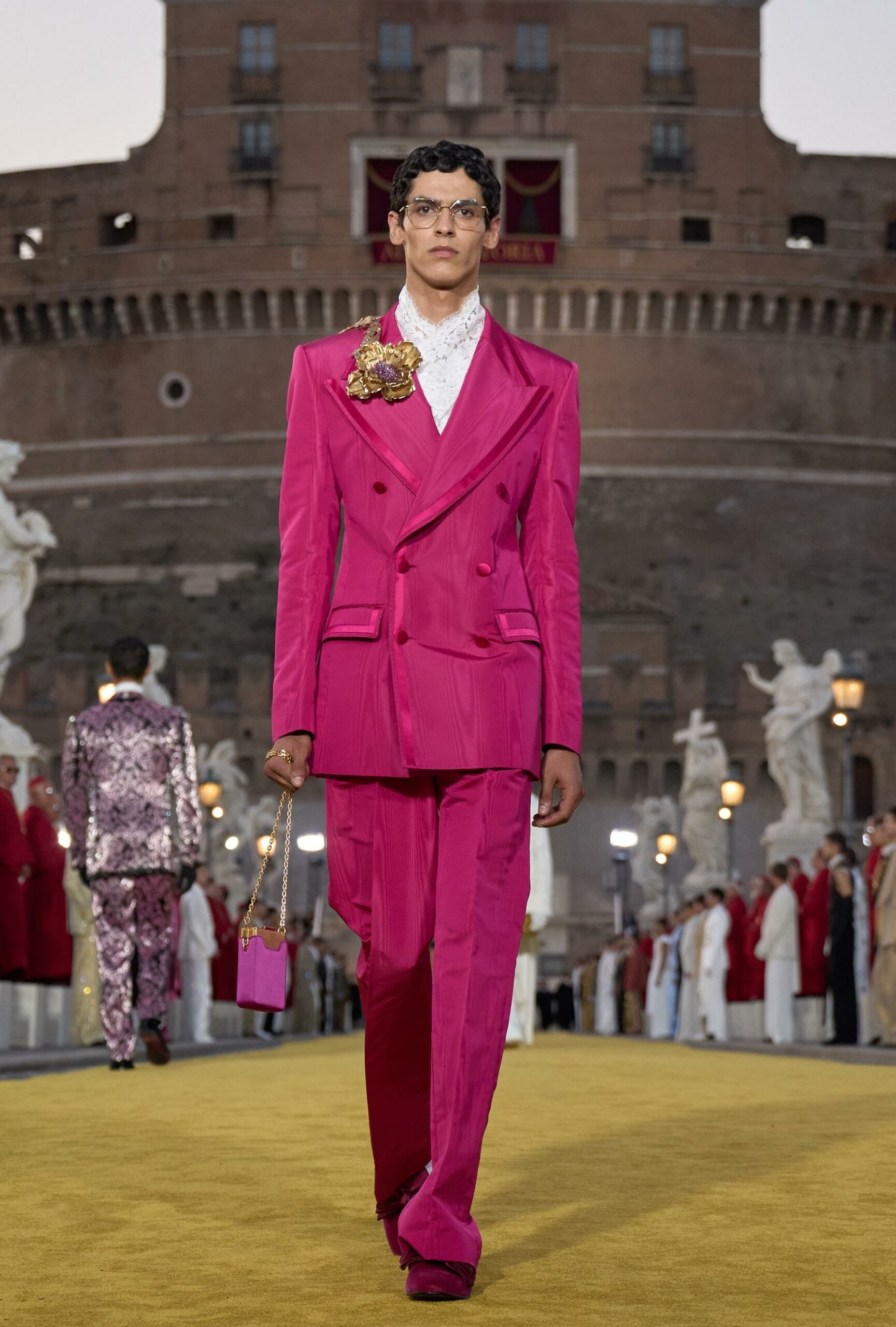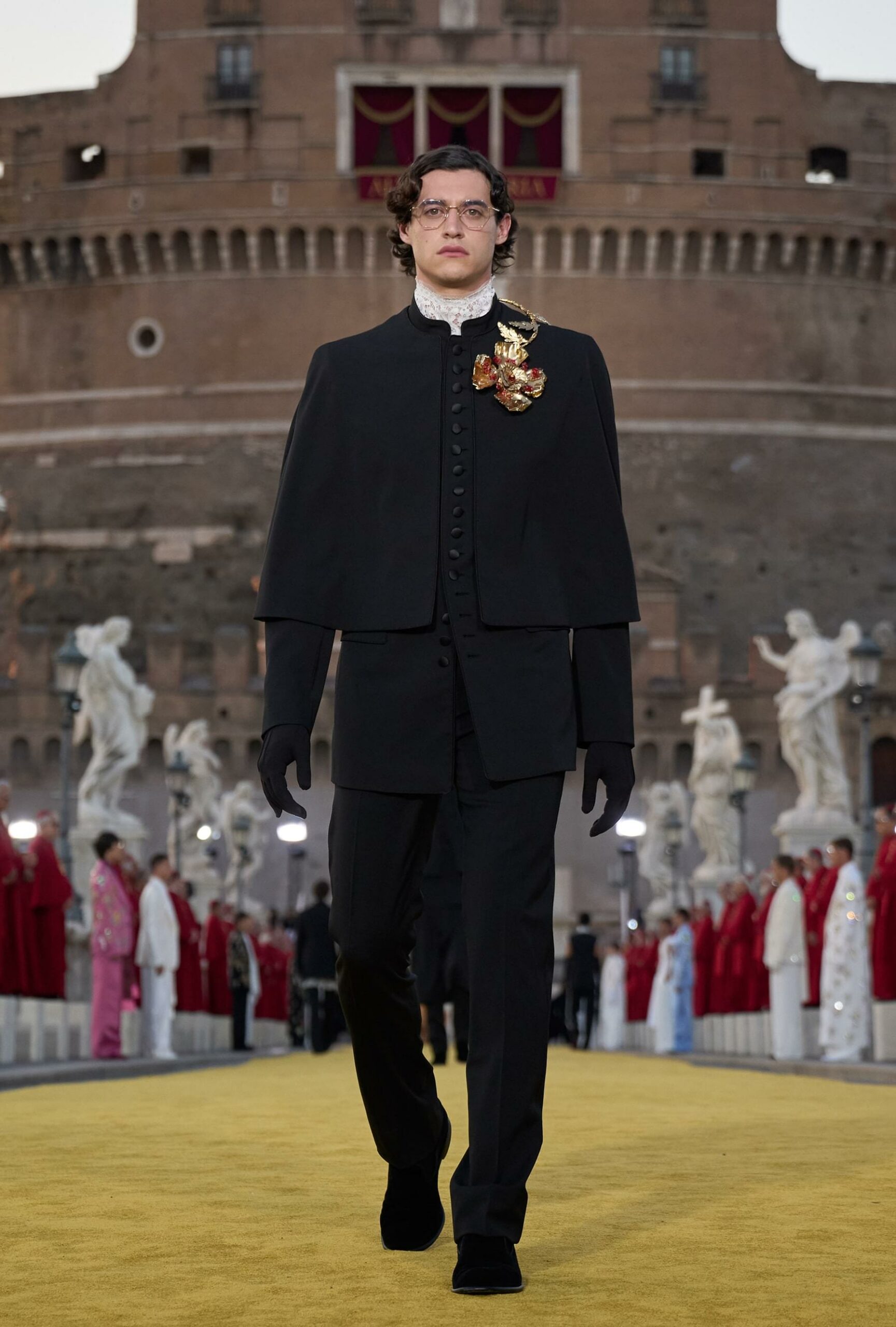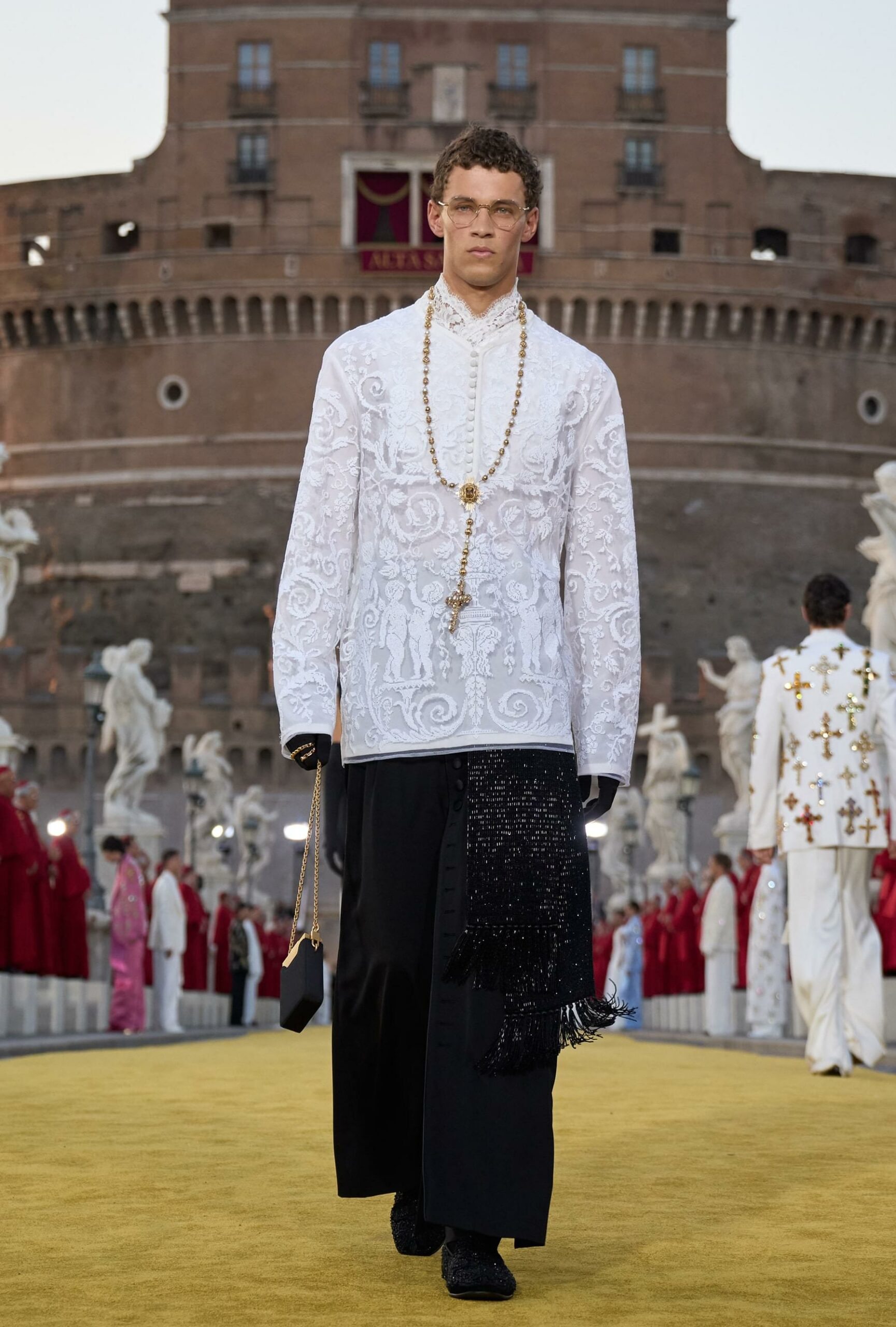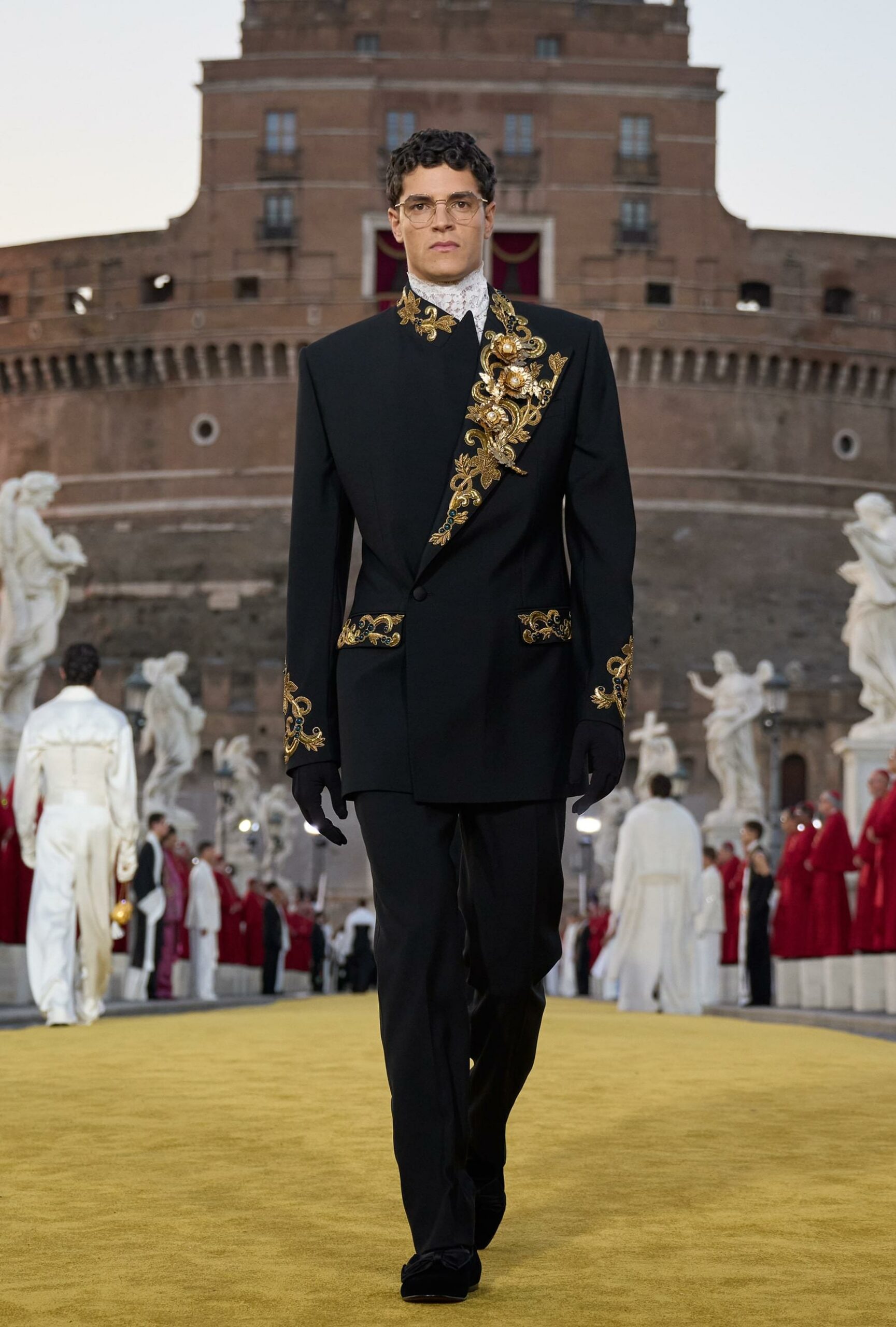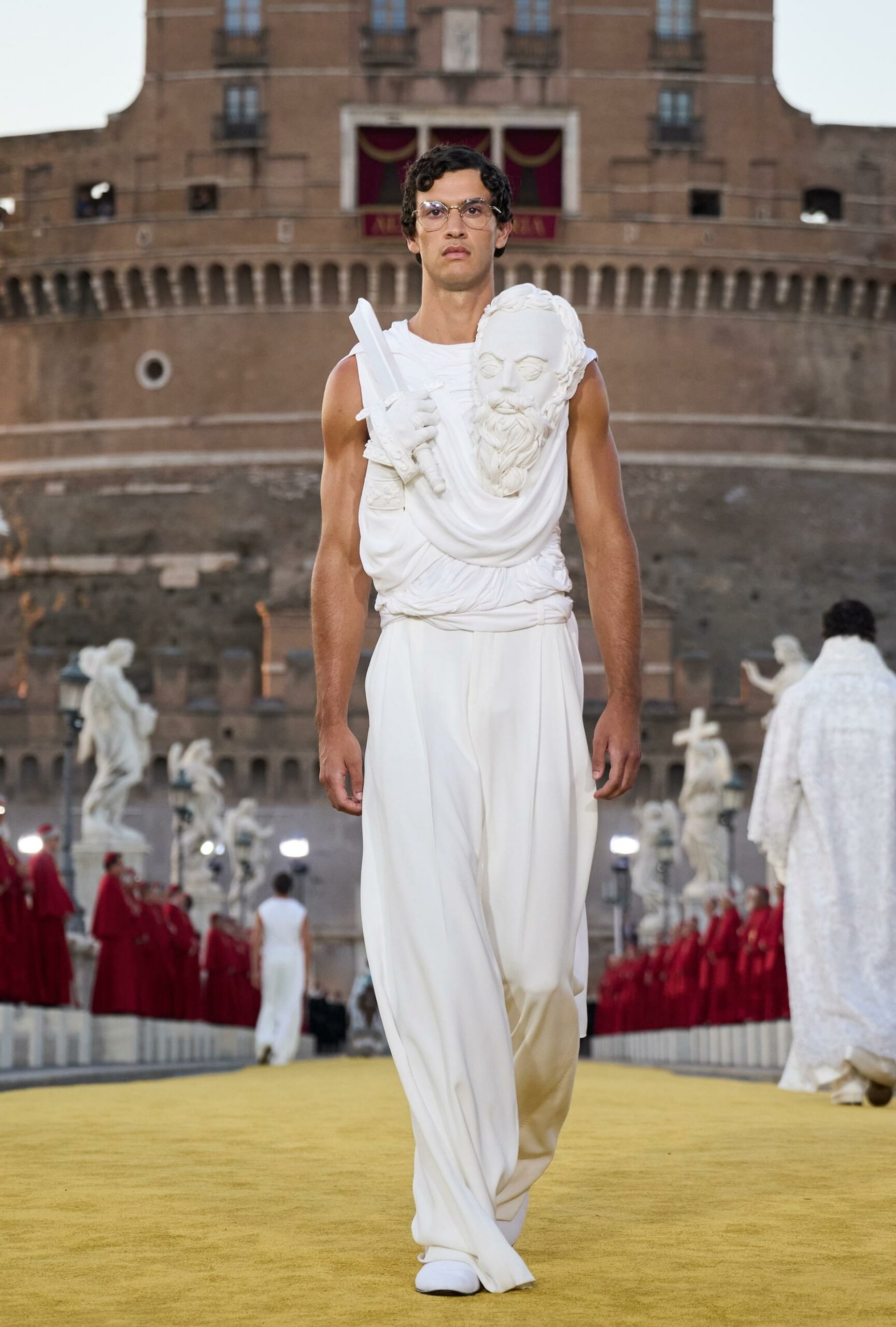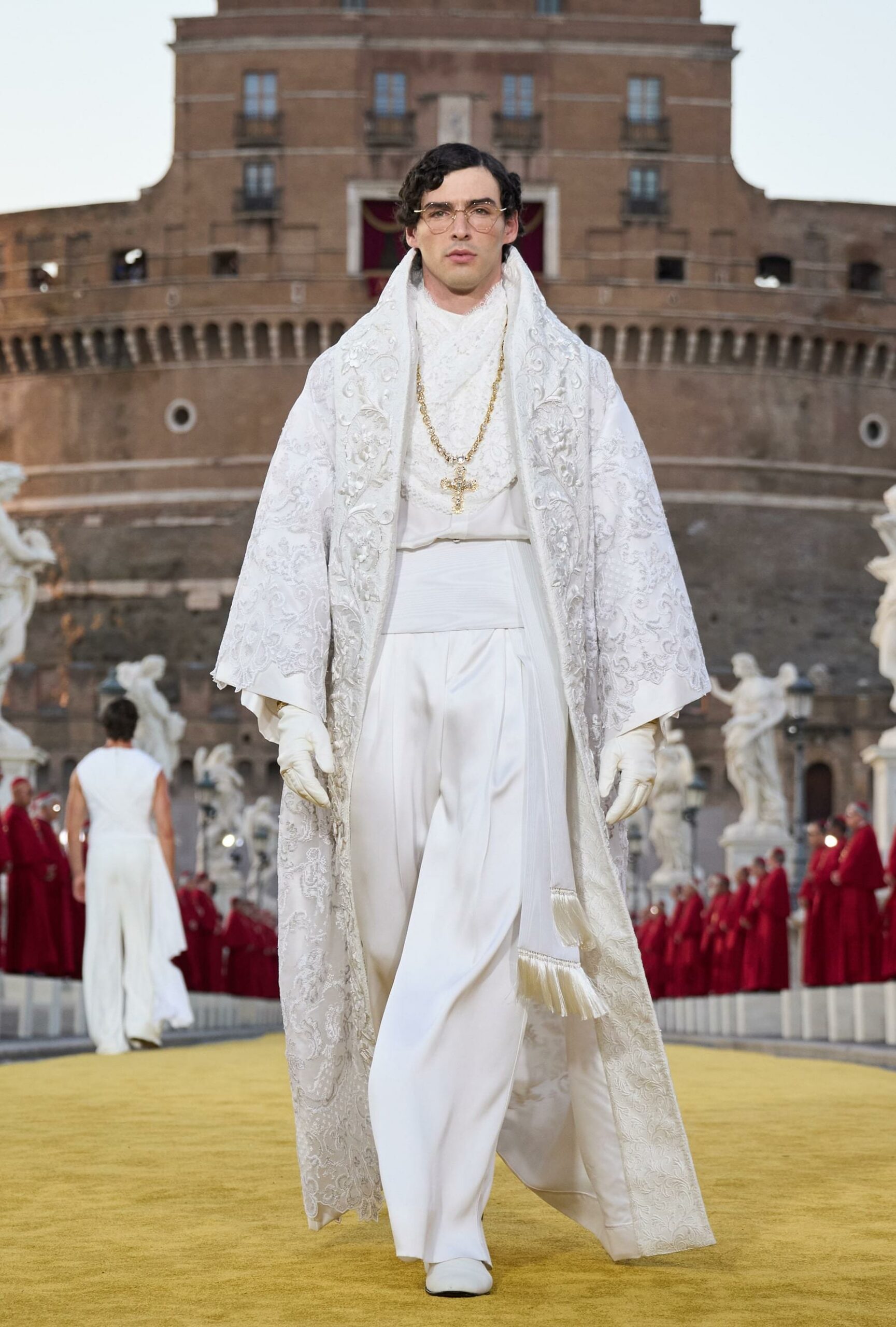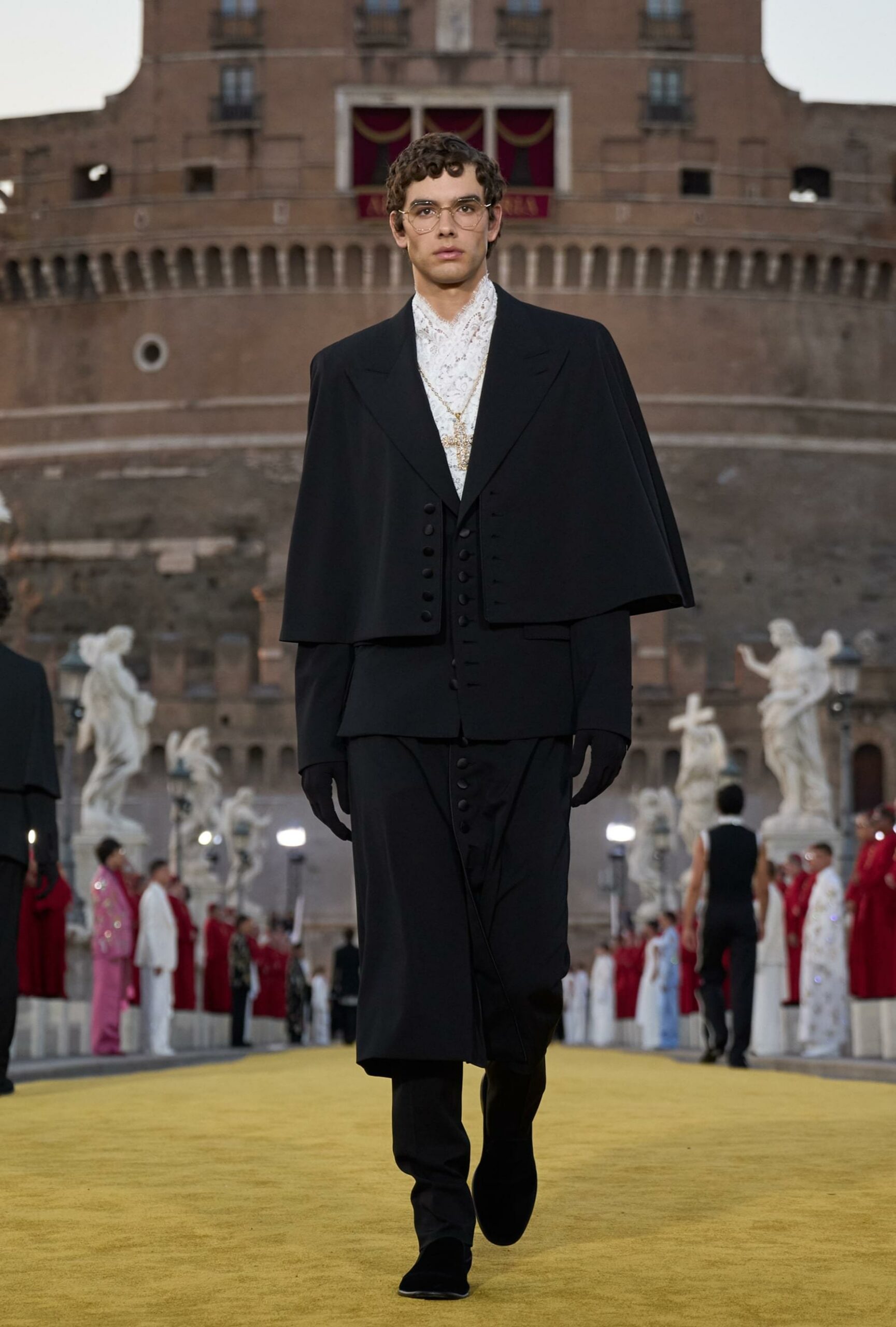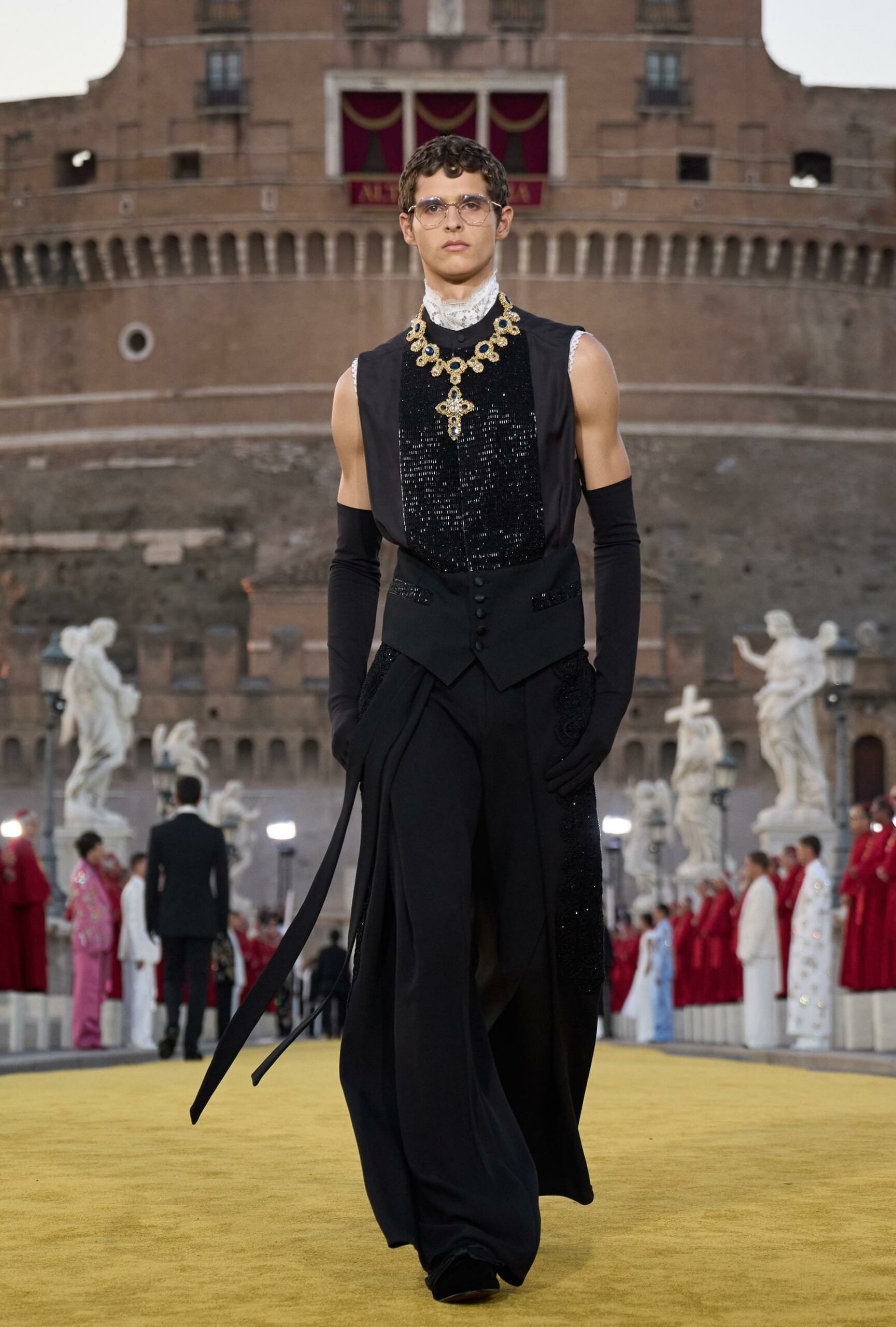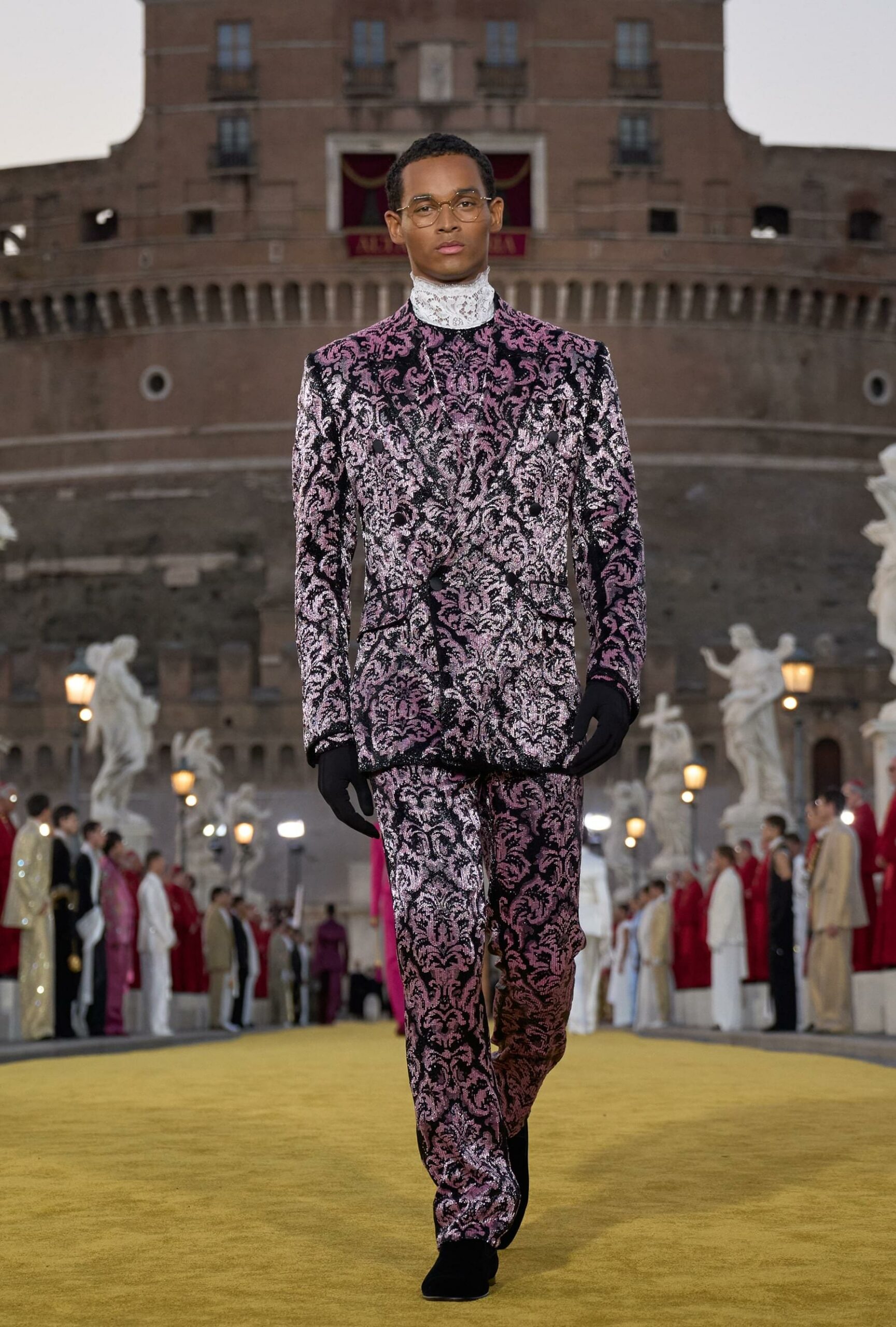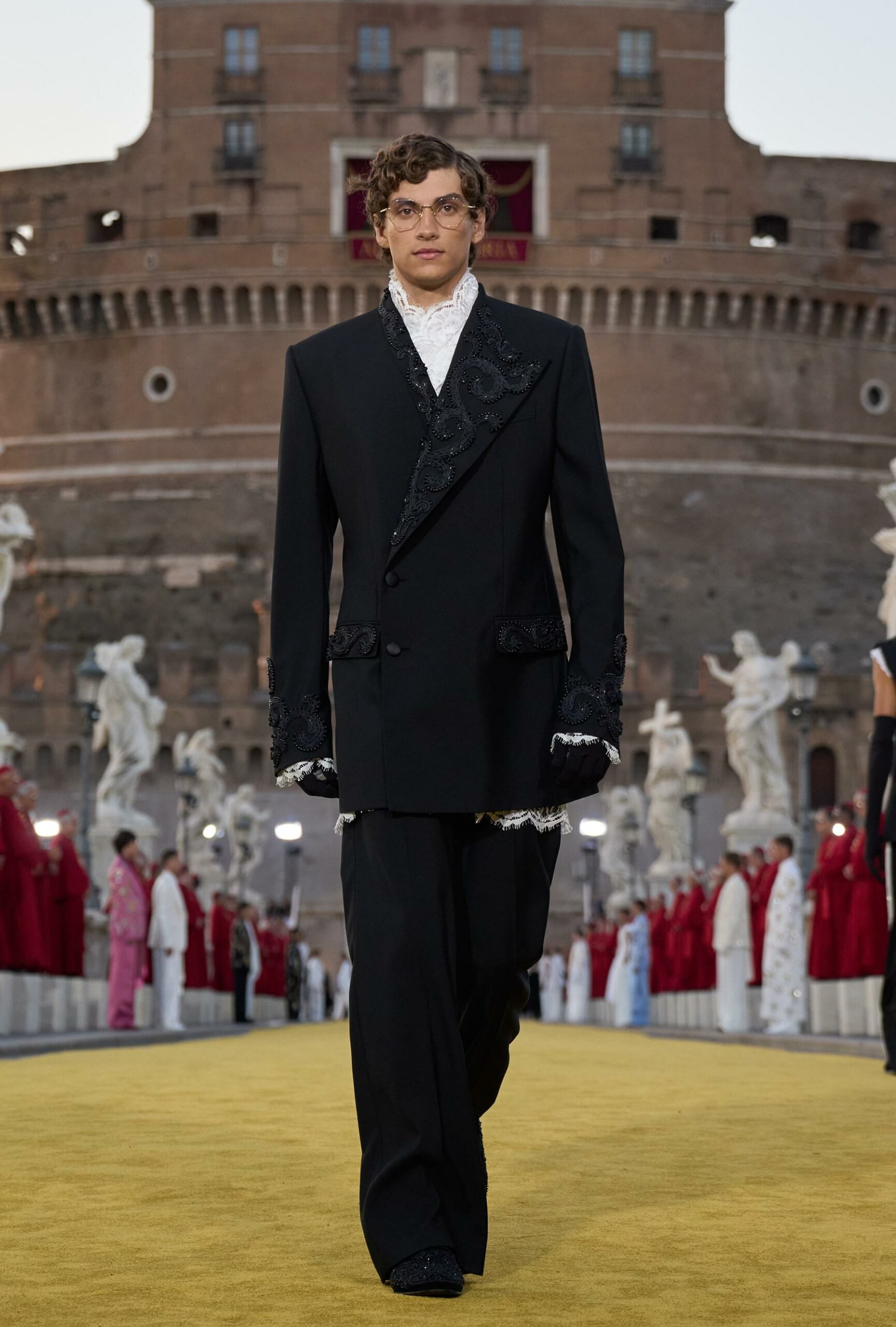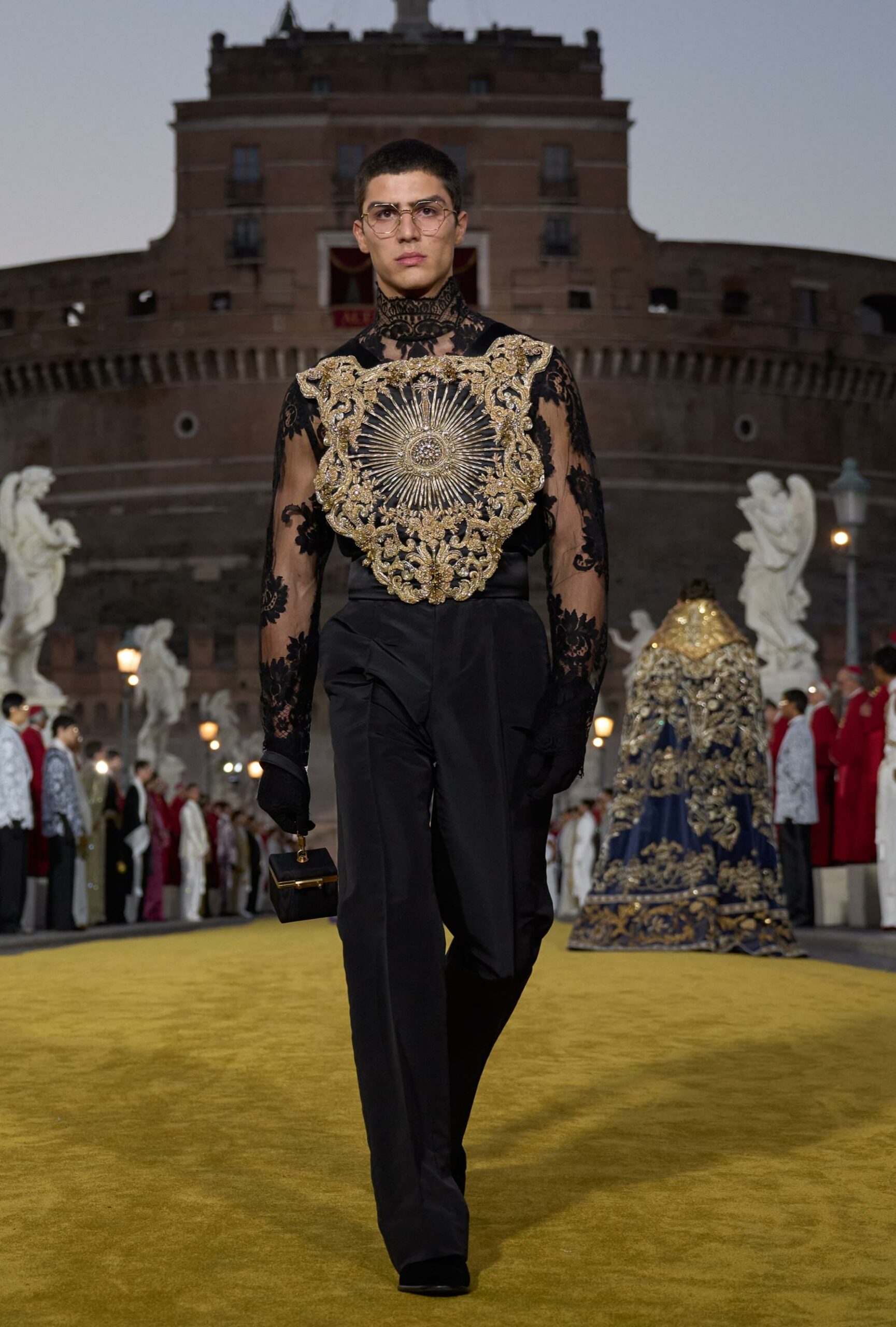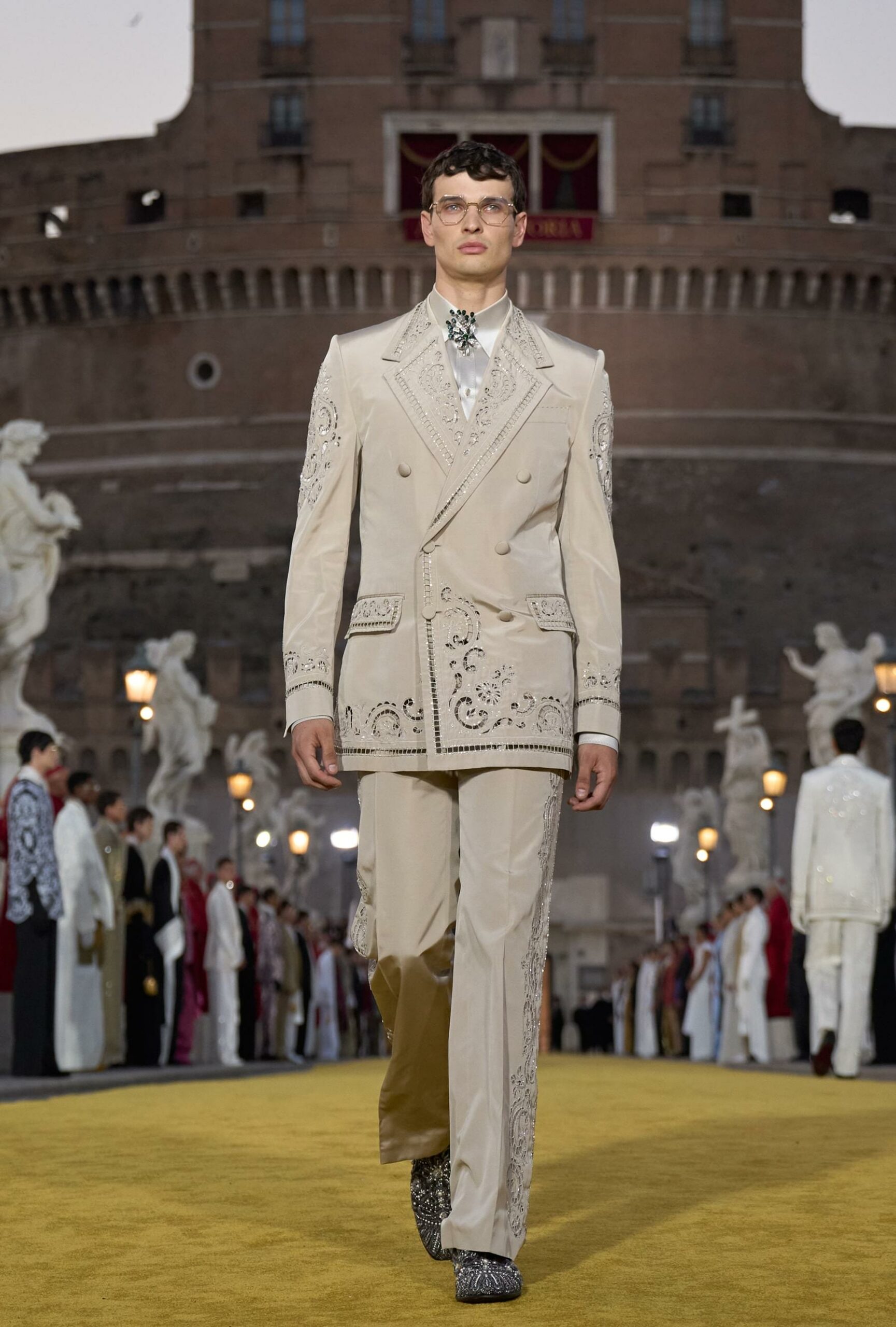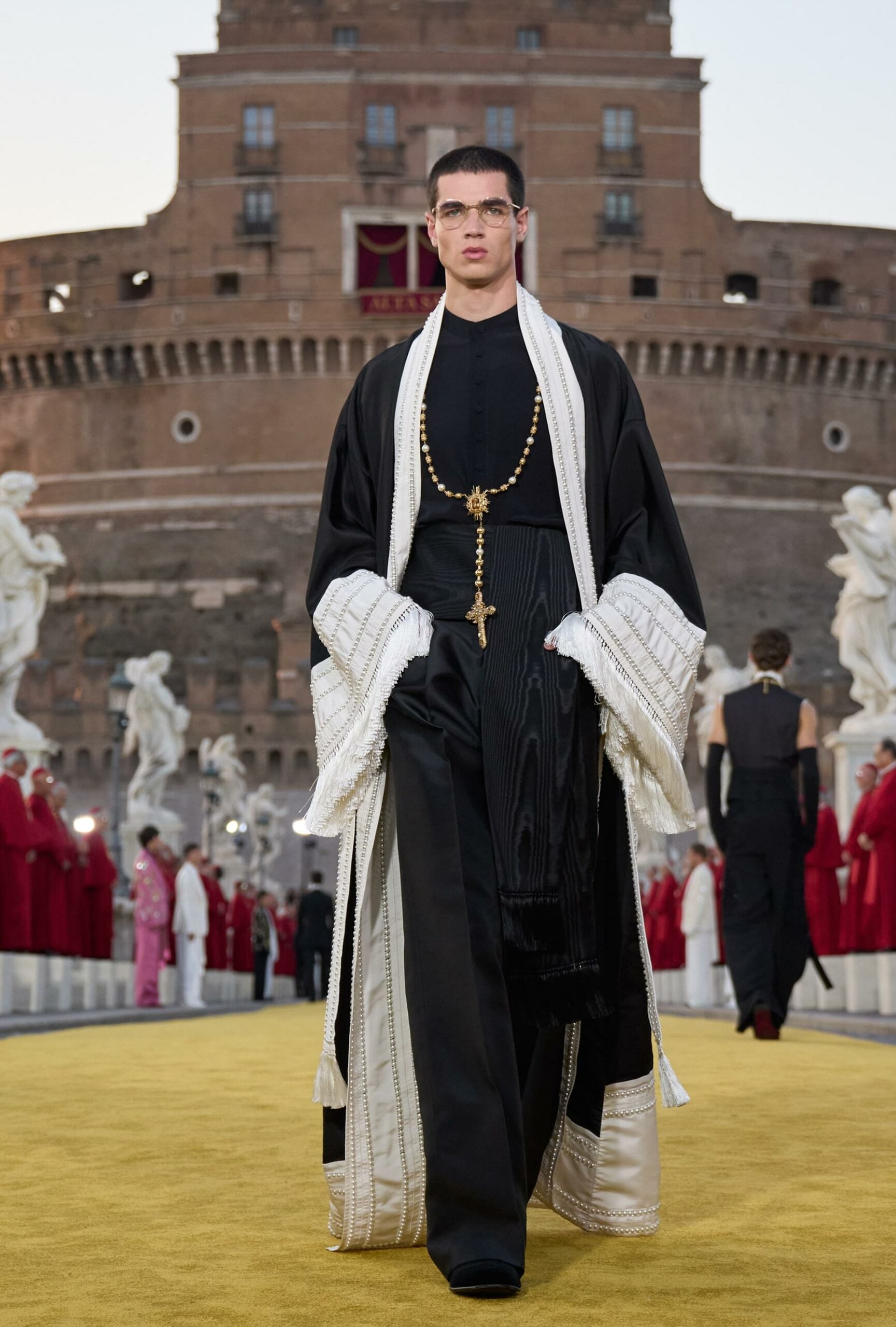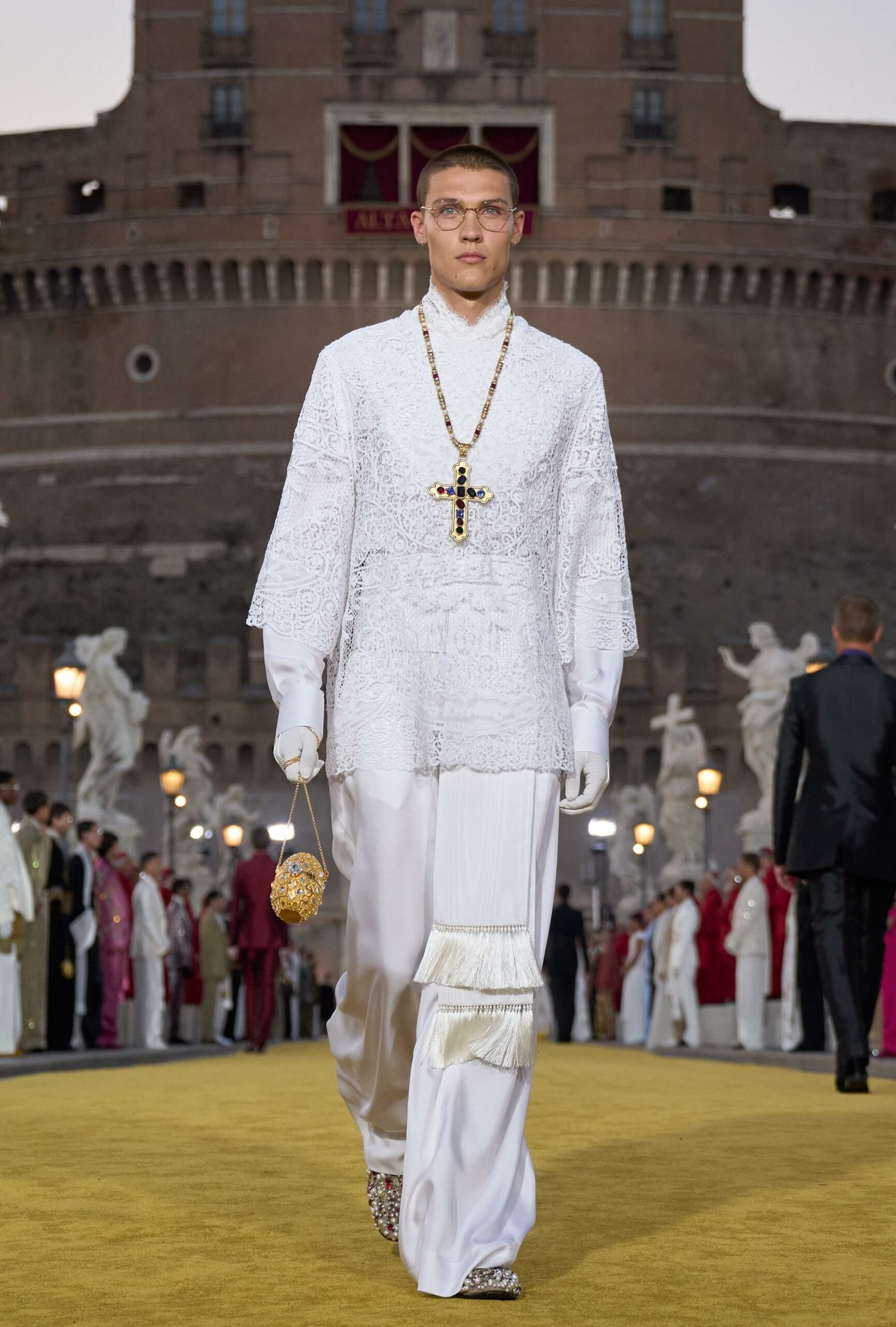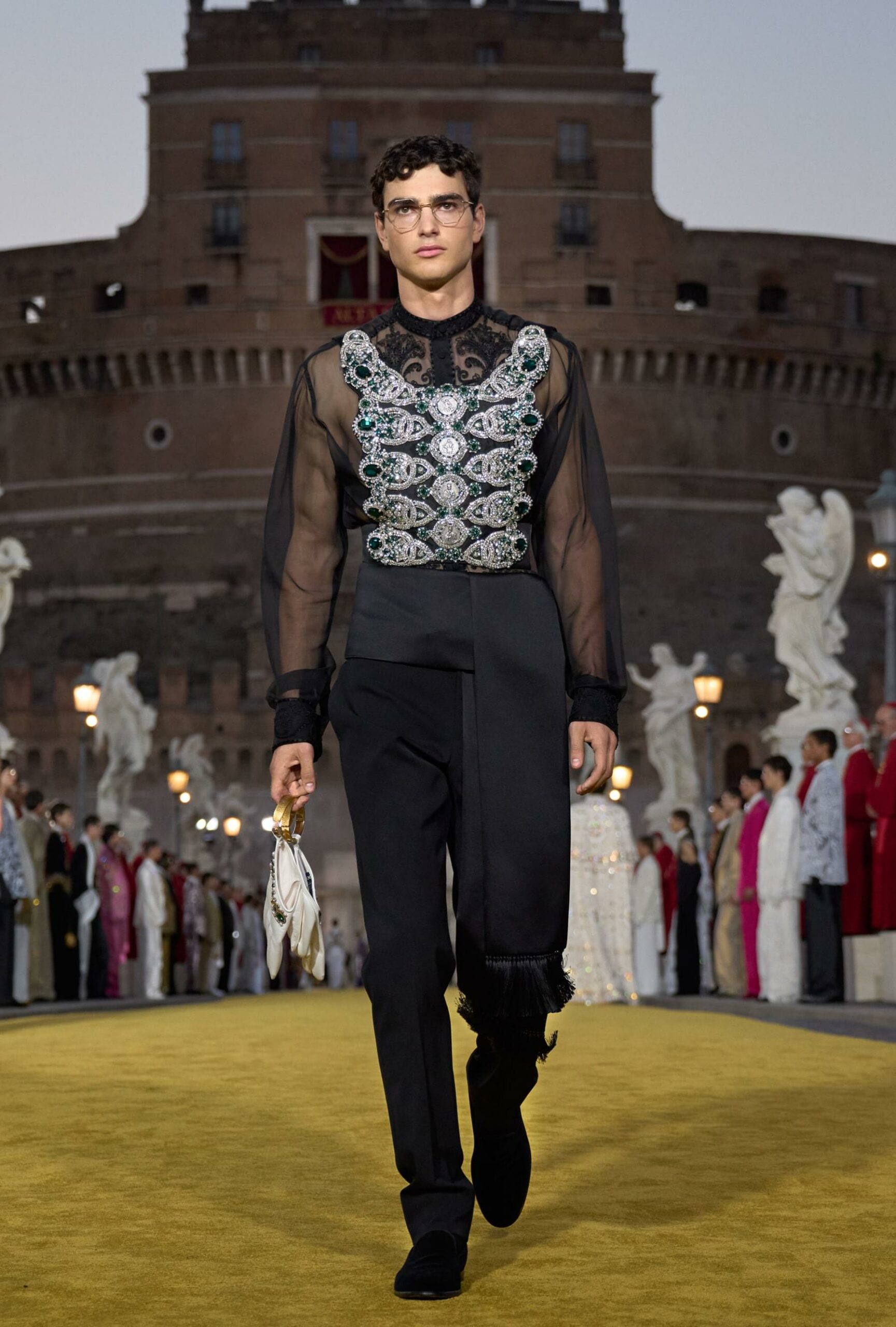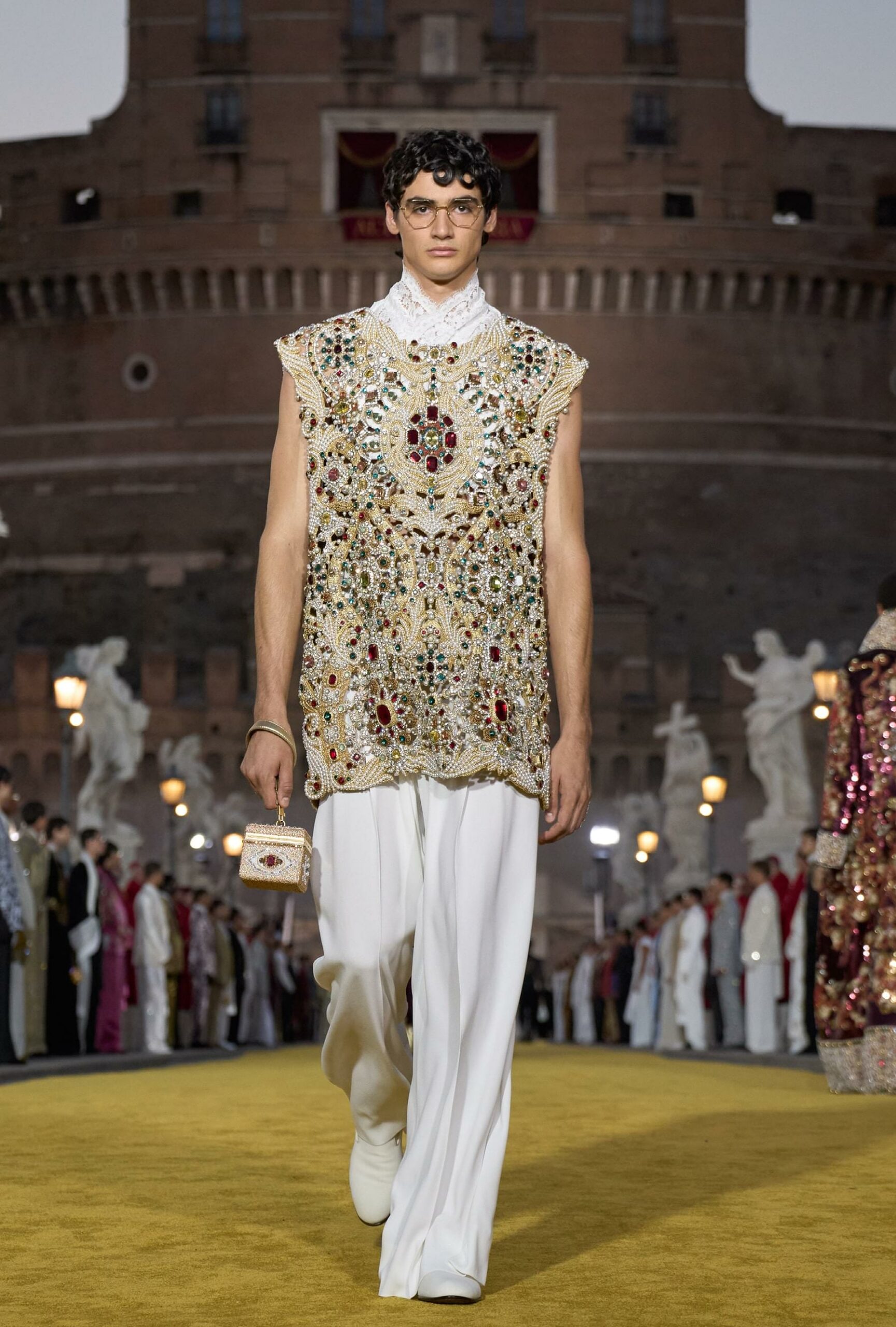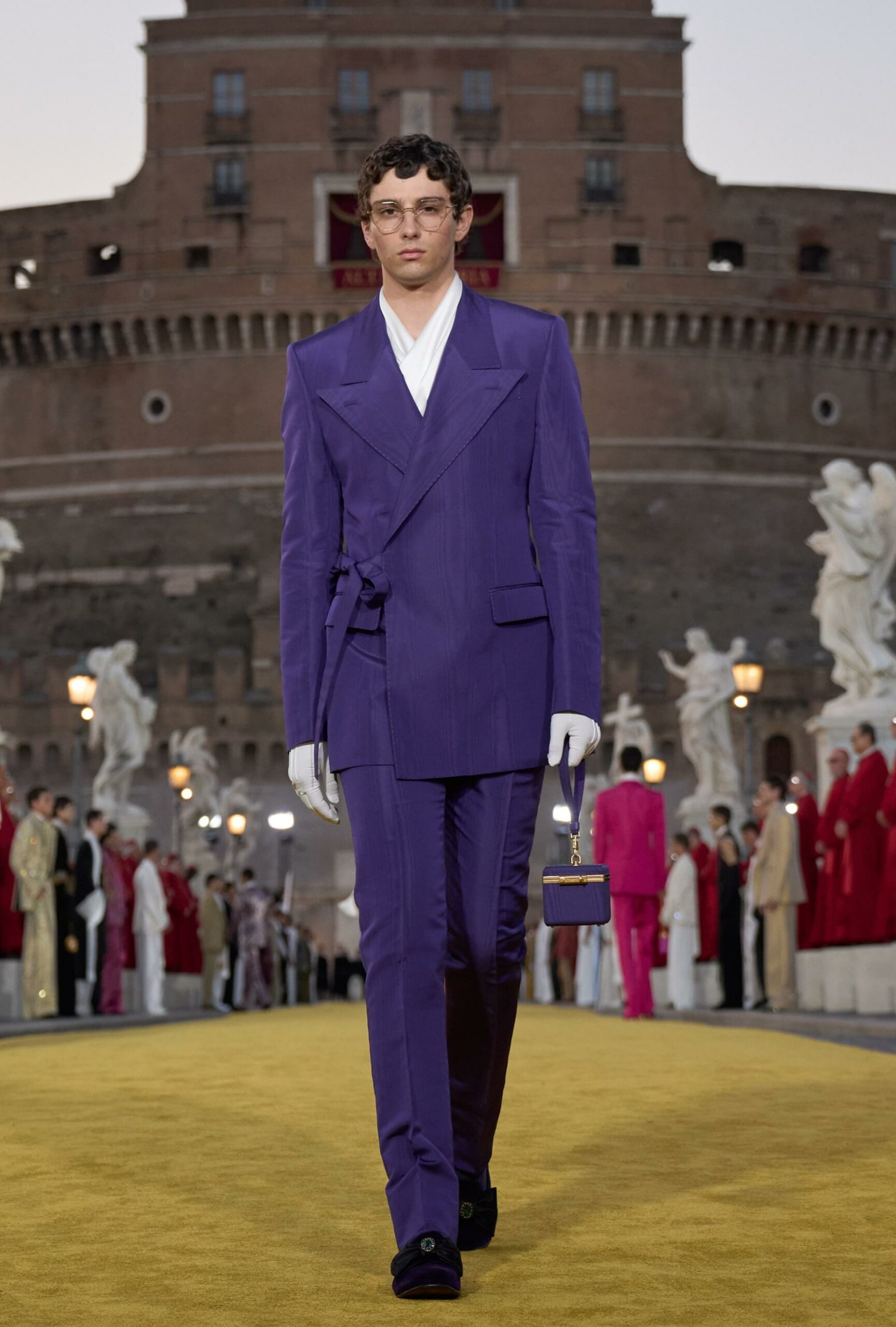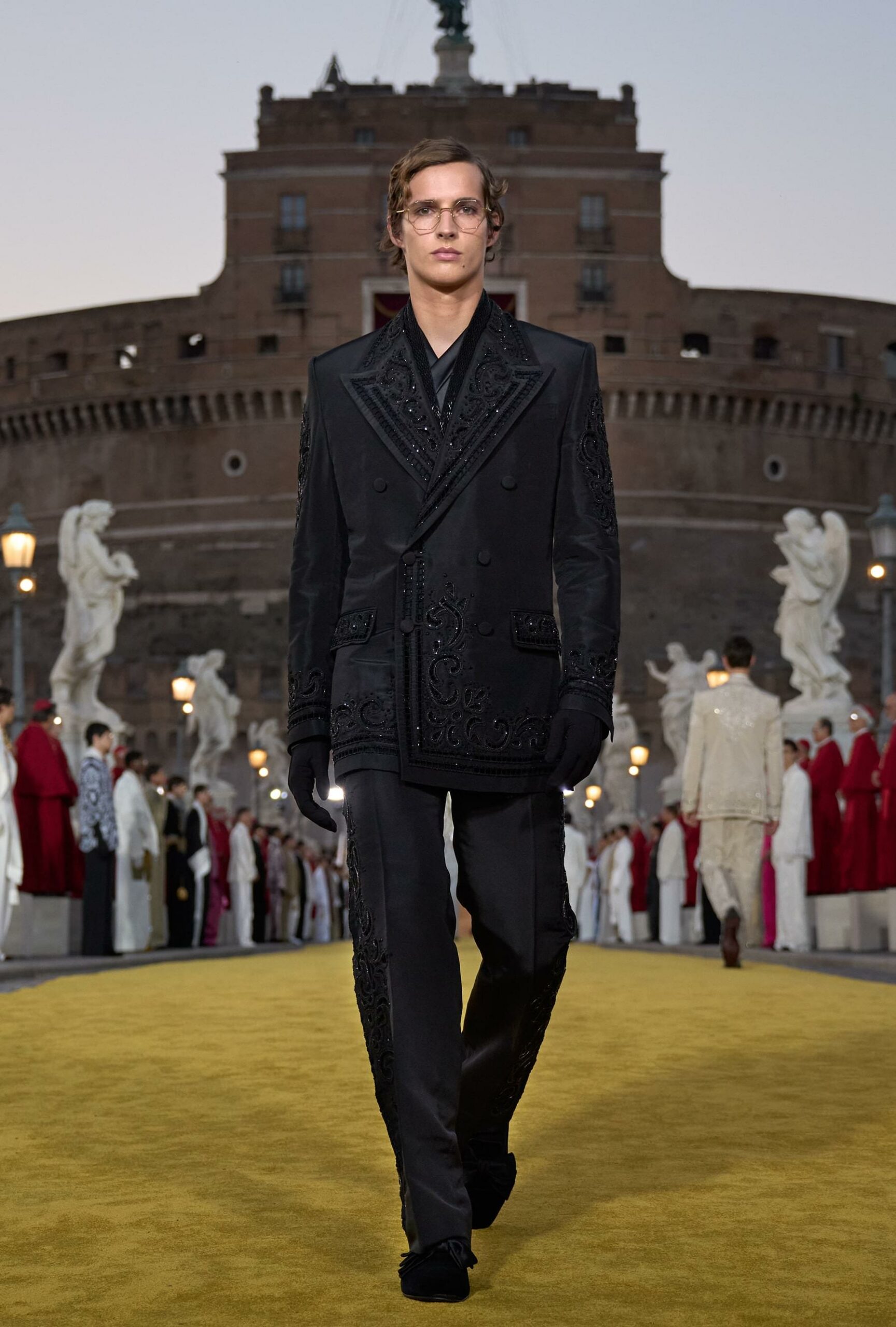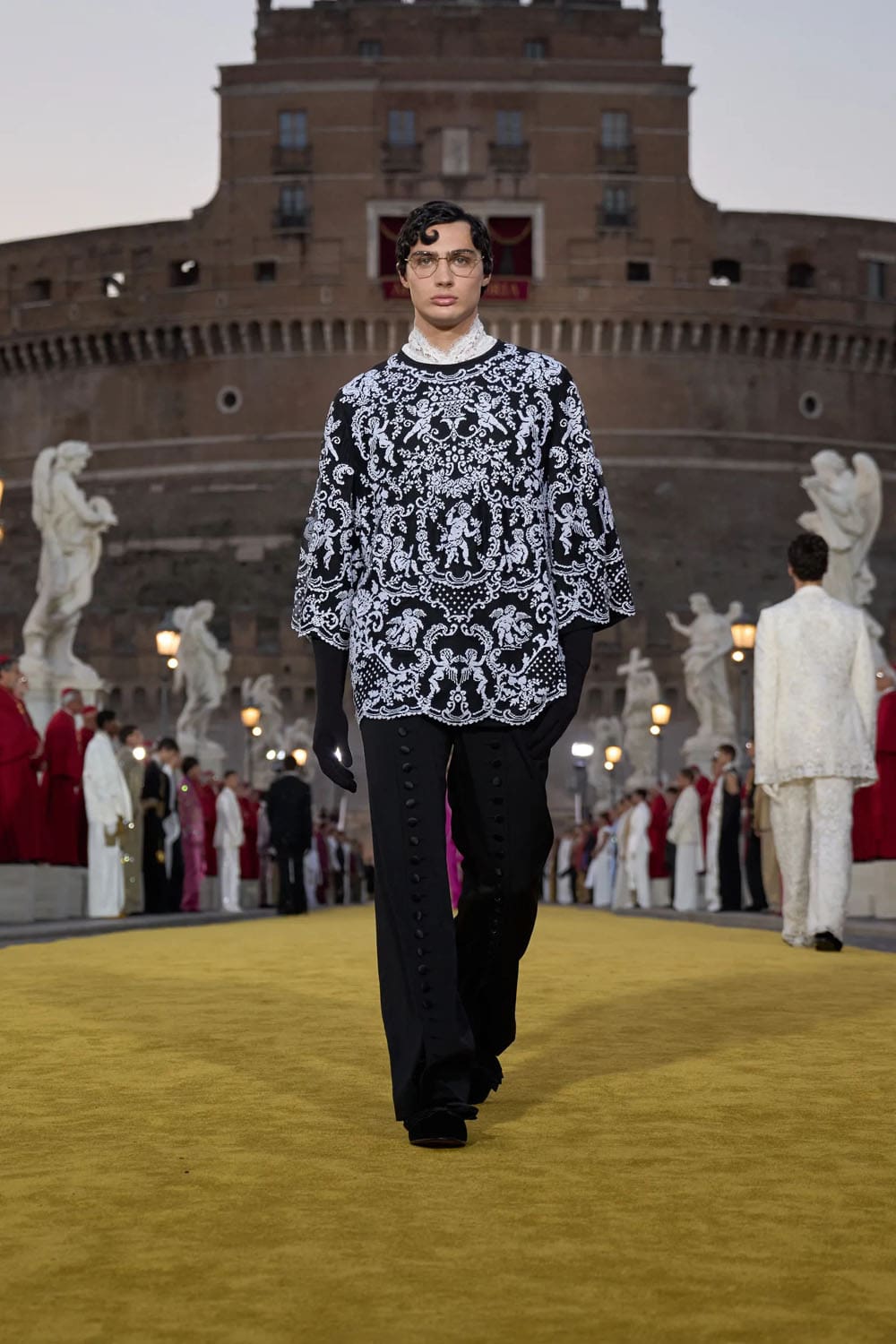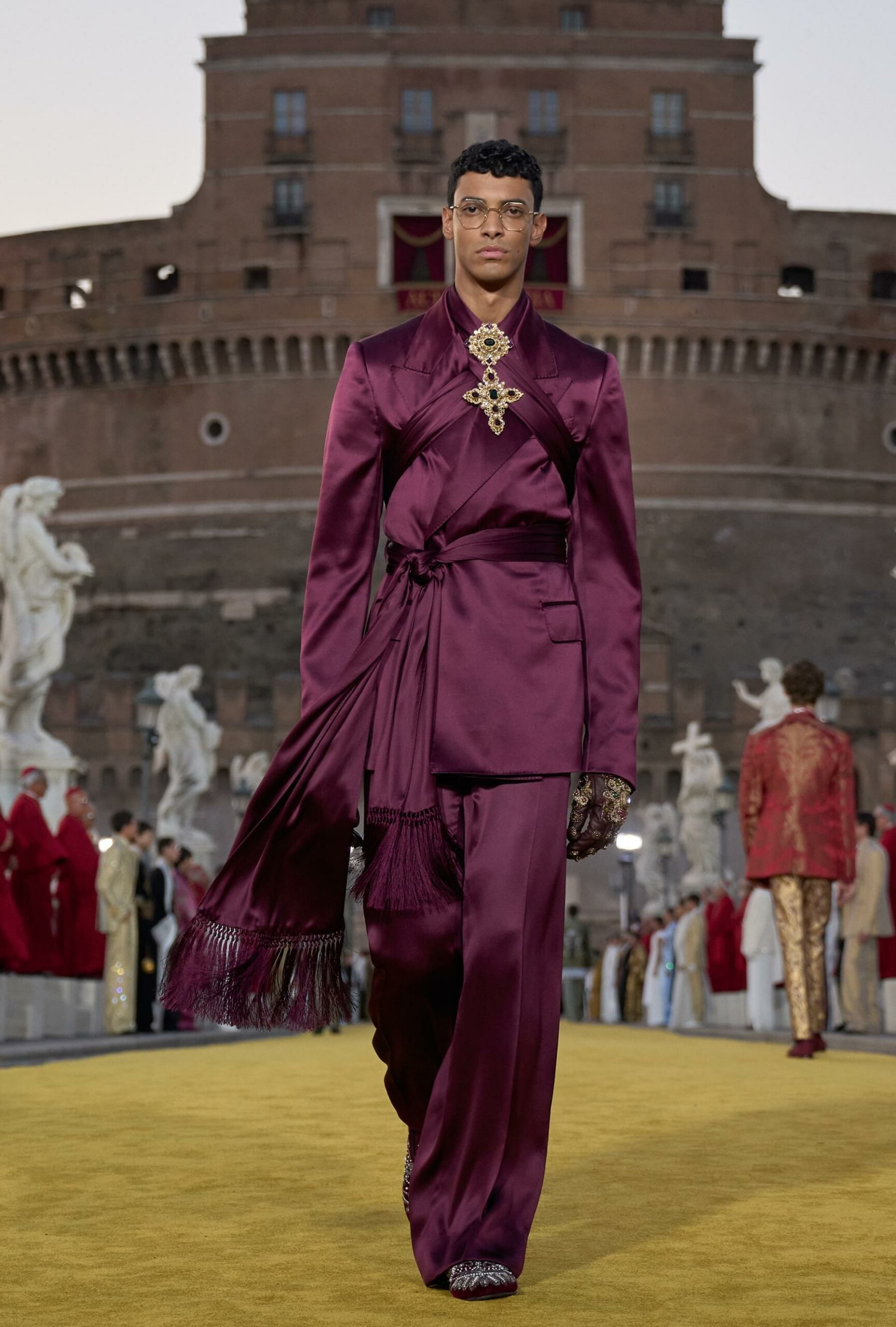Dolce & Gabbana Alta Sartoria 2025 Roma “The Sacred Spectacle of Dolce & Gabbana on Ponte Sant’Angelo”. Story by Eleonora de Gray, Editor-in-Chief of RUNWAY MAGAZINE. Photo / Video Courtesy: Dolce Gabbana / Marco Pionato.
“Protect the brocade! The fashion designers are coming!” … And the Earth — despite what some say — is most certainly round
Some say that Dolce & Gabbana’s Alta Sartoria show deserves a place in the Guinness Book of Records for its cultural and spiritual arrogance. The same some, presumably, who also believe the Earth is flat, the sun was made to orbit their insecurities, and embroidery should only be practiced under papal supervision. One can almost hear the Gregorian chant of panic echoing from the 13th century: “Protect the brocade! The fashion designers are coming!”
And some say, with great theatrical sincerity, that when fashion dares to touch a cross or trace the line of a cassock, it becomes mockery — desecration by silk. But these are the same minds who once accused Galileo of dismantling Heaven with a telescope. The same who trembled when embroidery left the altar and appeared on the sleeve of a merchant. Who declared that perspective in painting was sorcery. Progress, to them, is always profanity when it arrives wrapped in beauty.
What they call trivialization is, in fact, transmutation. Marsilio Ficino, writing under the patronage of the Medici, taught that the visible world was a reflection of divine order — and that beauty was a form of spiritual ascent. He would’ve understood a jeweled cross on a modern garment not as parody, but as anamnesis: a remembrance of sacred form in contemporary hands.
To dismiss this as “costume” is to confess ignorance — not of faith, but of culture. These garments do not parody vestments. They preserve their grammar. They do not strip meaning; they translate it. Only those still clinging to moth-eaten categories confuse symbolism with sin, and couture with heresy.
Some say a cross on a corset signals the collapse of civilization. One imagines the panic: theological fainting spells, rosaries clutched like emergency oxygen masks, bishops diving behind confessionals as if tulle were weaponized. Somewhere, surely, a Vatican subcommittee is convening in candlelight to investigate the liturgical impact of brocade. After all, today it’s Saint Peter’s face embroidered in gold — tomorrow, a mannequin in red velvet might be mistaken for a cardinal, and a stiletto heel might kick open the pearly gates. As if a crystal cross might break into Gregorian chant and summon the apocalypse in F-sharp.
History is full of such moments. The monks who locked away scrolls lest painters use too much lapis. The priests who banned lace for being too suggestive. The elders who warned that perspective in art was a gateway to sorcery. And now — corsets. That’s the new enemy. Corsets with crosses. Heaven forbid a symbol walk into the 21st century wearing tailored wool and a sense of purpose. If a sacred shape dares to exist outside a stained-glass window, some say it should be burned—or worse, reviewed.
Fashion has always served as a kind of vernacular theology: what you wear is what you believe, what you fear, what you remember. In medieval Europe, clothing defined your rank before your words did. In Renaissance Rome, garments communicated allegiance, lineage, and even philosophical standing.
Marsilio Ficino, the philosopher-priest of the Medici court, saw beauty as a path to the divine. He argued that form — even in dress — could lift the soul toward higher truths. To Ficino, a garment adorned with stars and gold thread was not vain, but aspirational.
Pico della Mirandola declared that man had no fixed form — that we dress ourselves not just in fabric, but in meaning. To clothe oneself in sacred symbols is not theft — it is declaration.
Even Nicholas of Cusa, cardinal and polymath, insisted that mystery and reason could coexist — that the divine could be found in proportion, in shape, in harmony. Were he alive today, he might have found it in a Dolce & Gabbana cape.
And so, some still say these garments are too bold, too sacred, too ornate for a fashion show.
But others — those who read, those who remember — see instead a continuation of visual theology.
A whispered sermon in silk.
A procession of cloth, not heresy.
Because this is not blasphemy. This is semiotics. This is ritual.
And the Earth — despite rumors — is most certainly round.
Dolce Gabbana Alta Sartoria 2025 Haute Priests
Beneath the twilight of the Roman sky, between the ancient stones of Castel Sant’Angelo and the gentle curve of the Tiber, Dolce & Gabbana staged a procession—not of cardinals, nor of kings, but of men cloaked in memory, majesty, and mastery.
The Ponte Sant’Angelo, erected by Emperor Hadrian in 134 AD as a path to his own mausoleum, became—once again—a bridge between the mortal and the eternal. For one night only, its history was rekindled in light: the fortress glowed like a film set, extras from Cinecittà whispered through the arches in cardinal red, and above all, Alta Sartoria took its place as Rome’s most sacred rite of elegance.
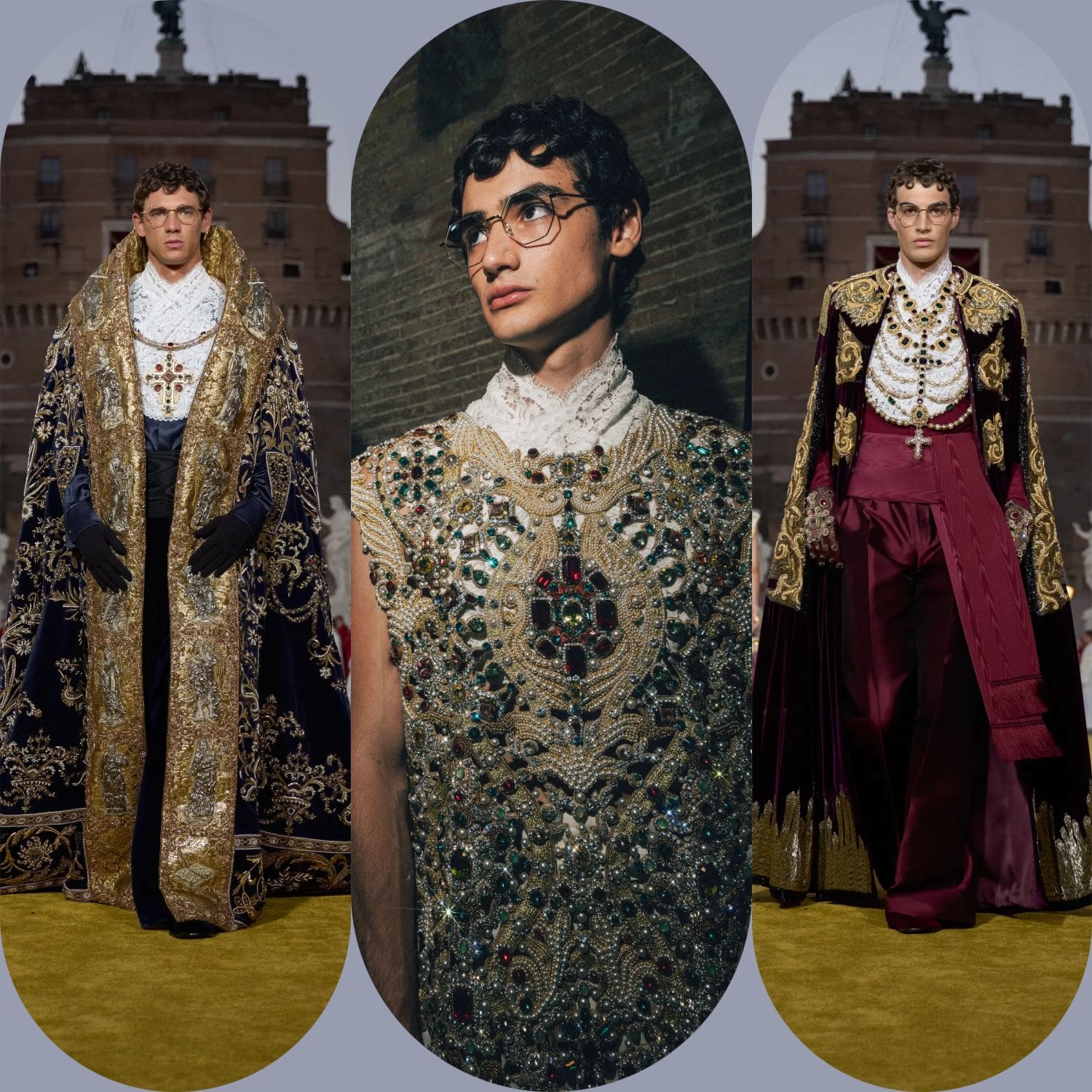
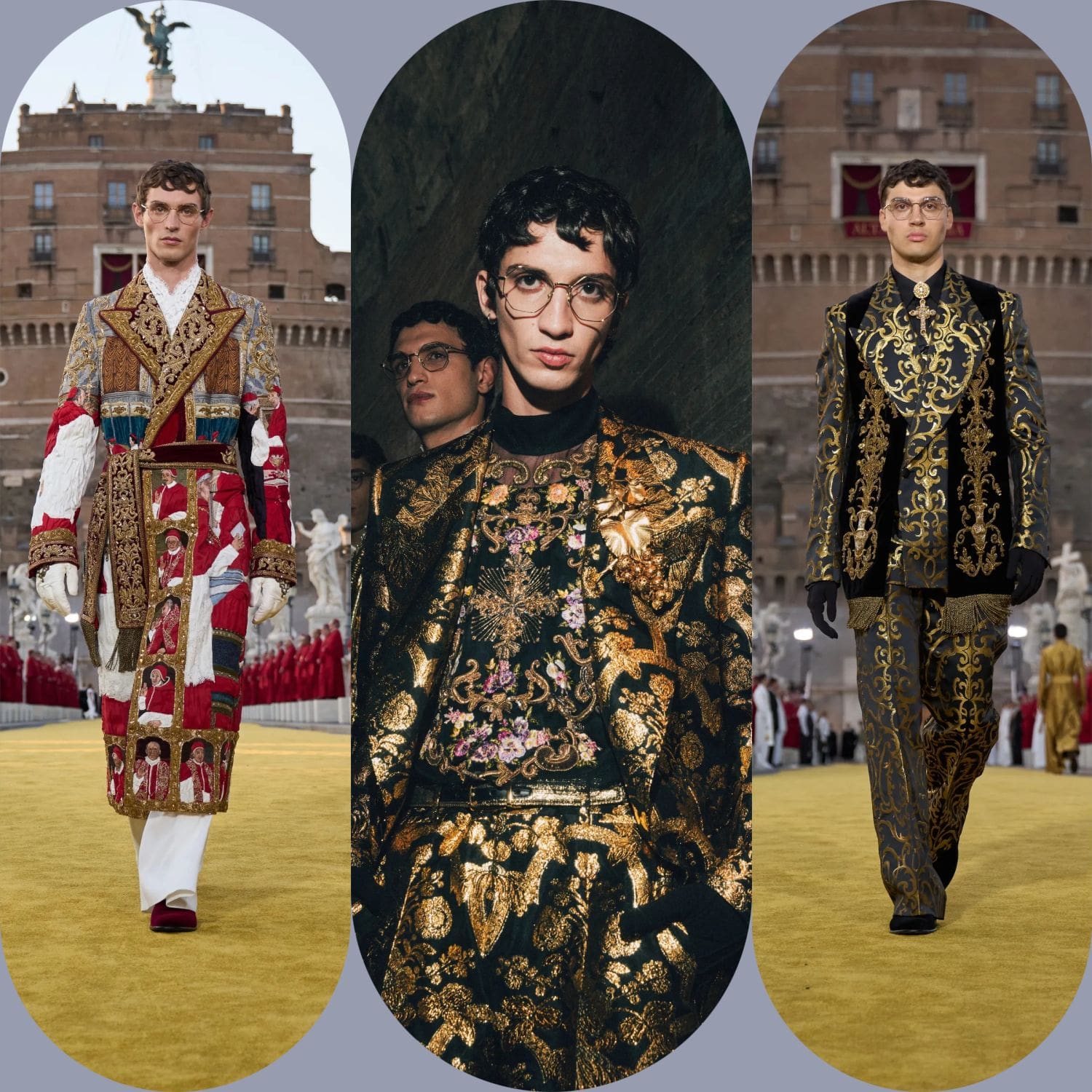
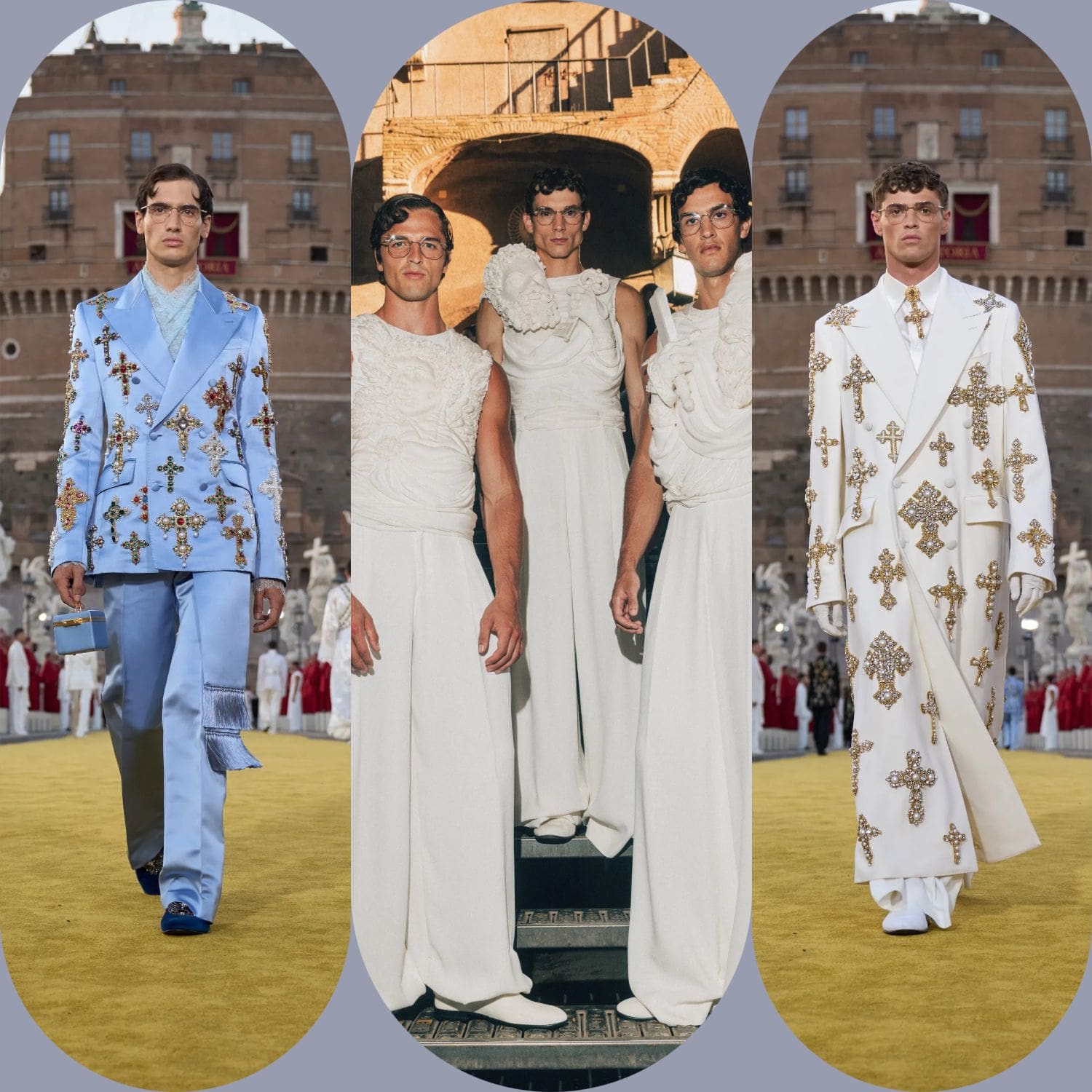
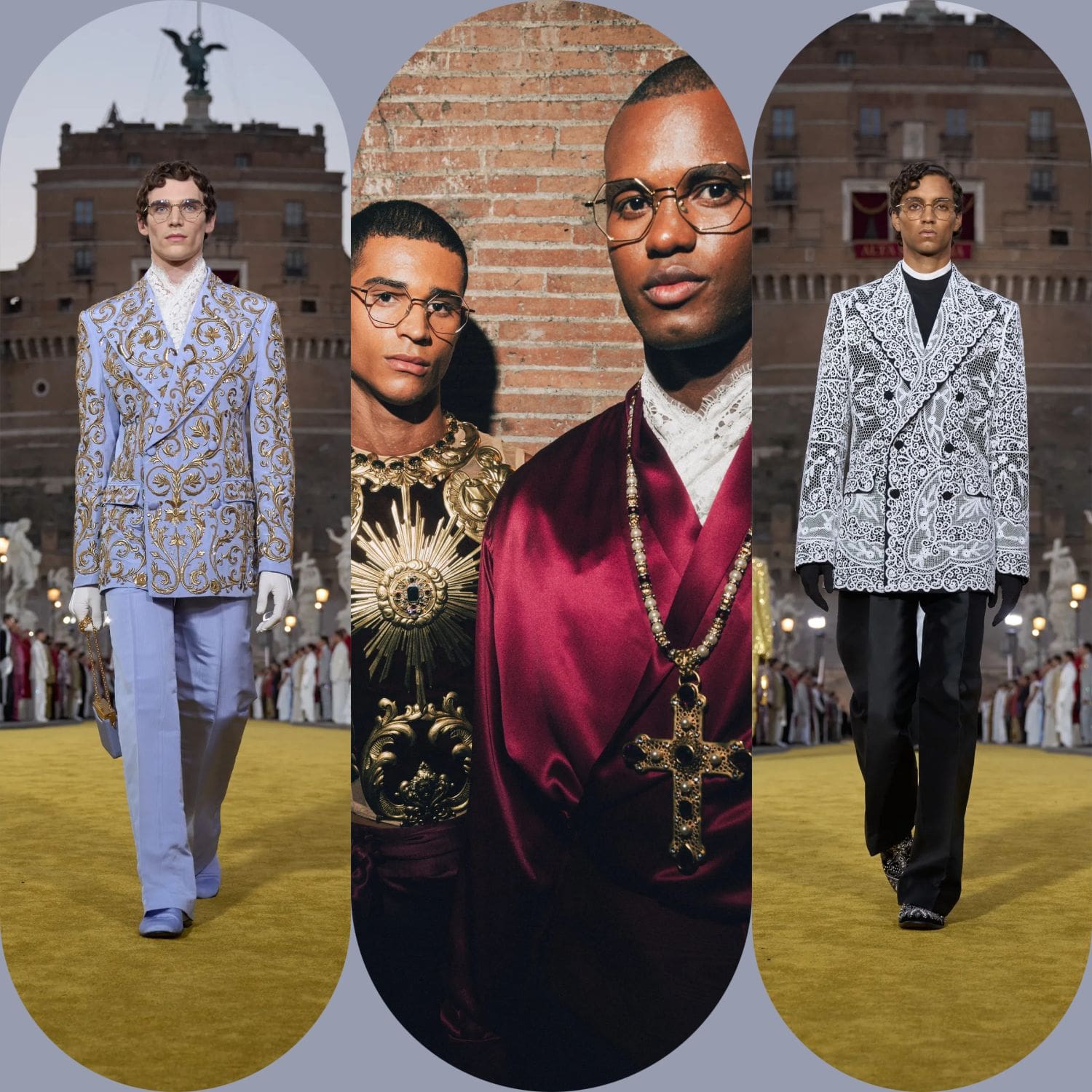
Dolce & Gabbana have long turned to the symbols of Catholic iconography—not as spectacle, but as language. They do not quote religion; they speak its visual poetry. This season, they returned to the vestments of faith: ascetic lines, papal splendor, and the codes of ecclesiastical dress—reinterpreted, revered, reborn.
The opening look set the tone: a cape, baroque in dimension, depicting the 1903 conclave with the precision of a Renaissance fresco. From there, the collection unfurled like an illuminated manuscript. Surplices in starched white linen were elevated into monastic minimalism. Double-breasted suits bore jeweled crosses with the restraint of relics. And then—splendor: embroidered papal robes, capes heavy with crystals, bodices forged in brass filigree, sculpted as if for saints.
Alta Sartoria did not simply borrow from the church—it consecrated craftsmanship itself. Each garment, wrought by hand under the DG Fatto A Mano seal, was a relic of devotion. One bodice, etched in gold bullion and gemstones, bore the face of Saint Peter, his features emerging from the fabric like chiseled marble, his keys draped across liturgical folds. It was not fashion. It was an offering.
Silhouettes echoed reliquaries—structures meant to protect what is most sacred. And that is precisely what Alta Sartoria has become: a sanctuary for Italian excellence. There is no irony here, no postmodern smirk. Only devotion. Every stitch is deliberate. Every stone placed with reverence. Every light reflected through a crystal is a whisper of faith—in beauty, in discipline, in heritage.
This is not about religion. This is about ritual. The ritual of the atelier, of legacy, of the Italian hand at work.
On Ponte Sant’Angelo, Dolce & Gabbana offered not a show, but a solemn procession of elegance. They reminded us that menswear can still speak in hushed tones, in gold thread and carved brass, in echoes of glory. And in Rome—the city of emperors and martyrs, of saints and cinema—Alta Sartoria stood like a cathedral built from cloth.
It did not need to declare itself sacred. It simply was.
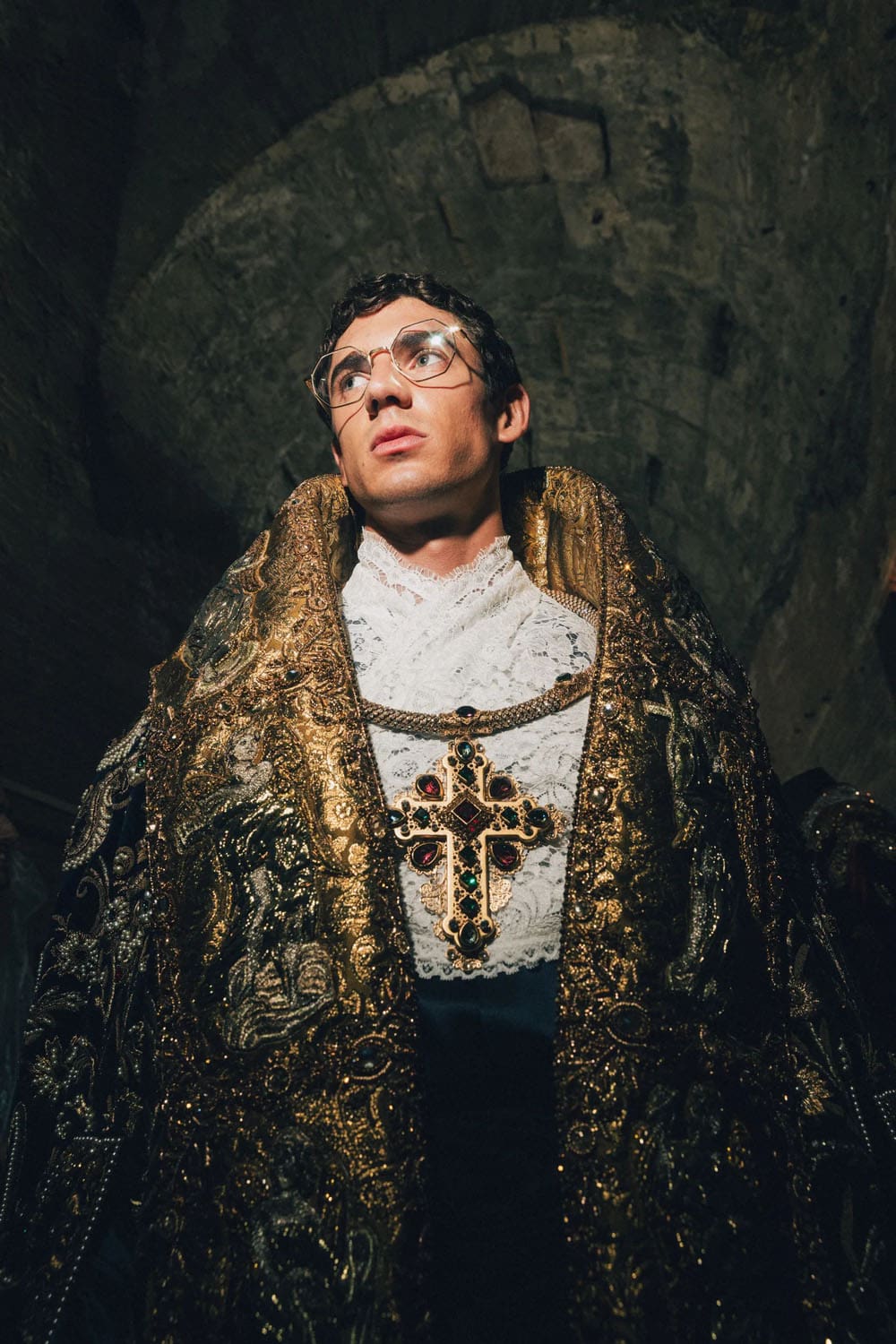
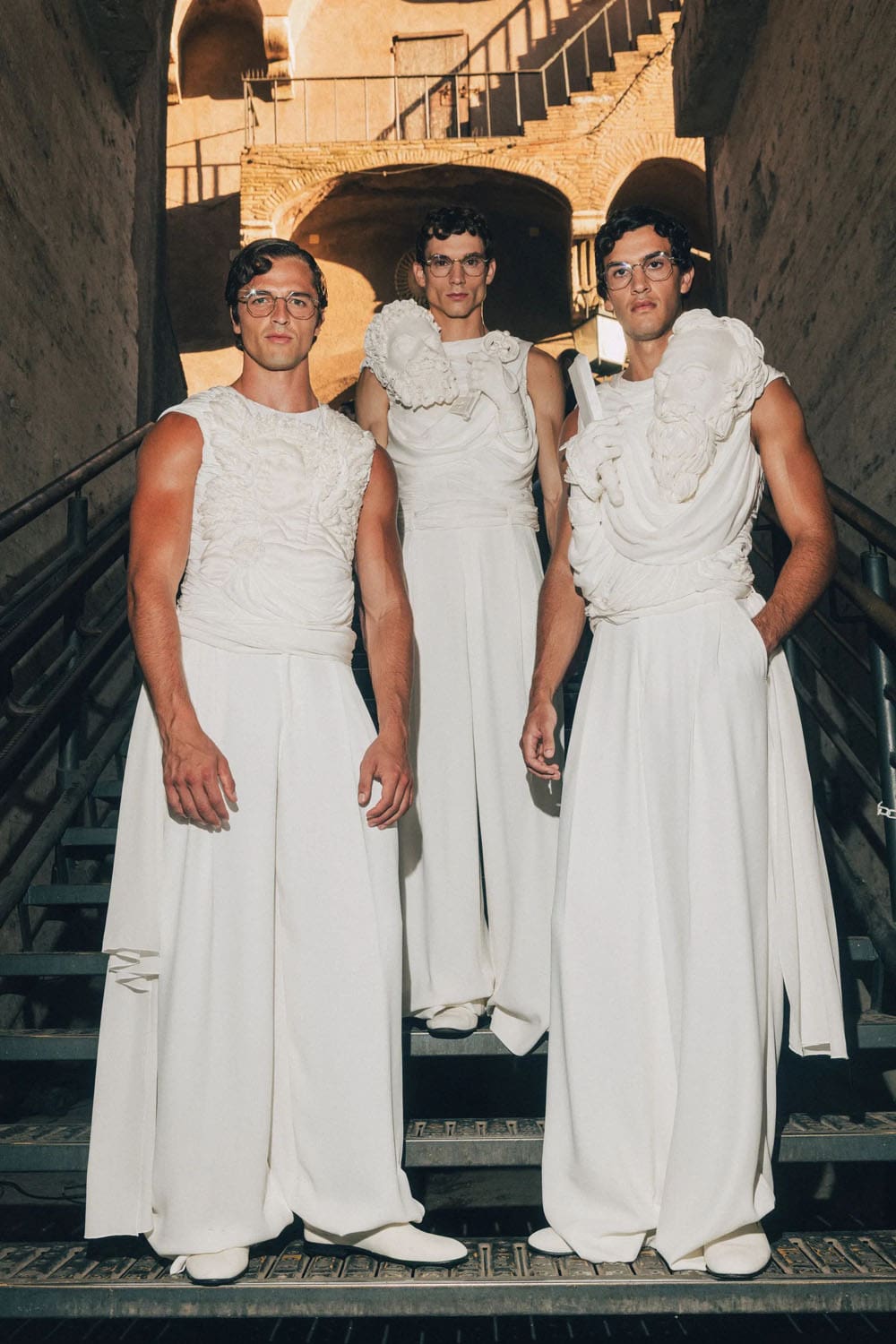
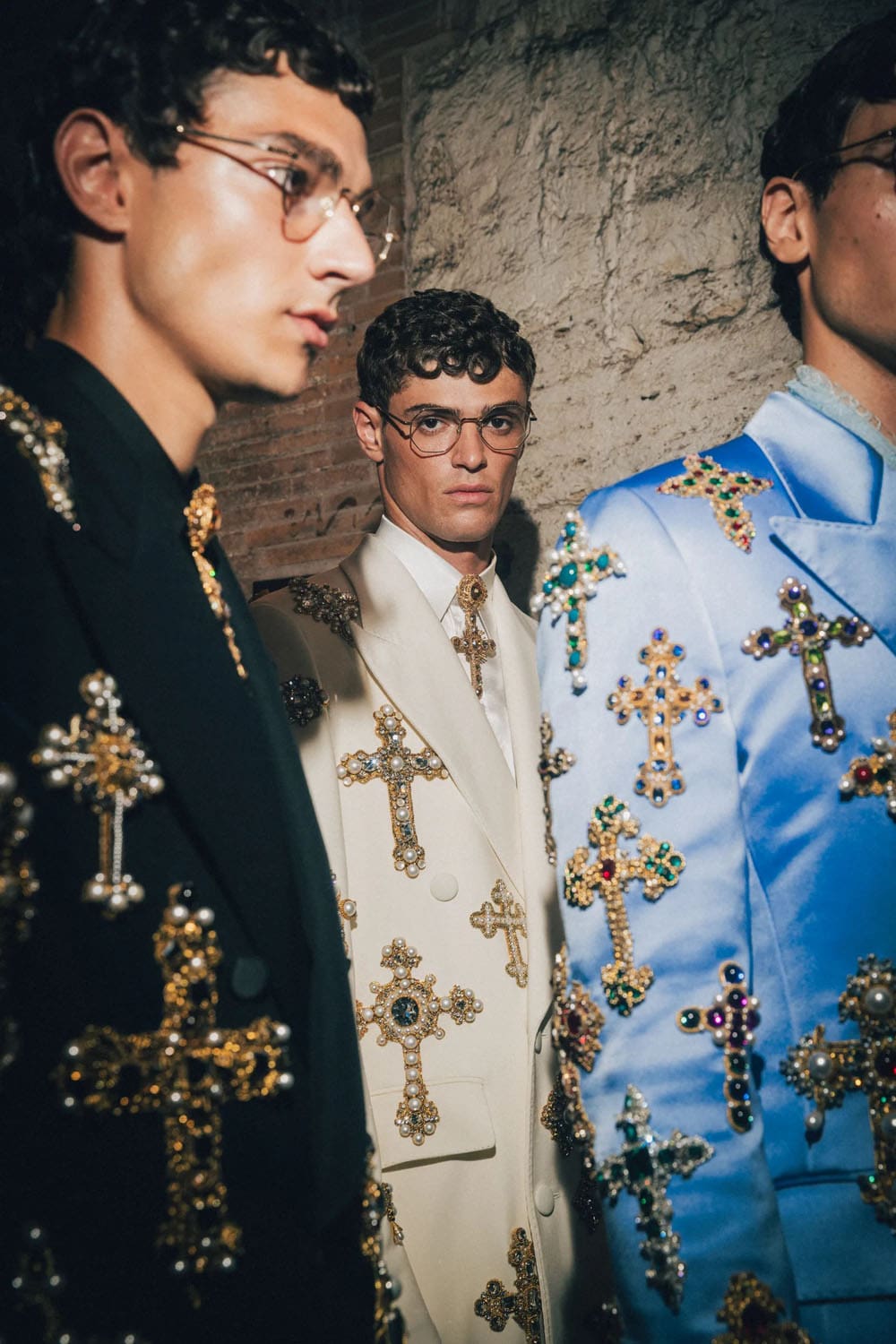
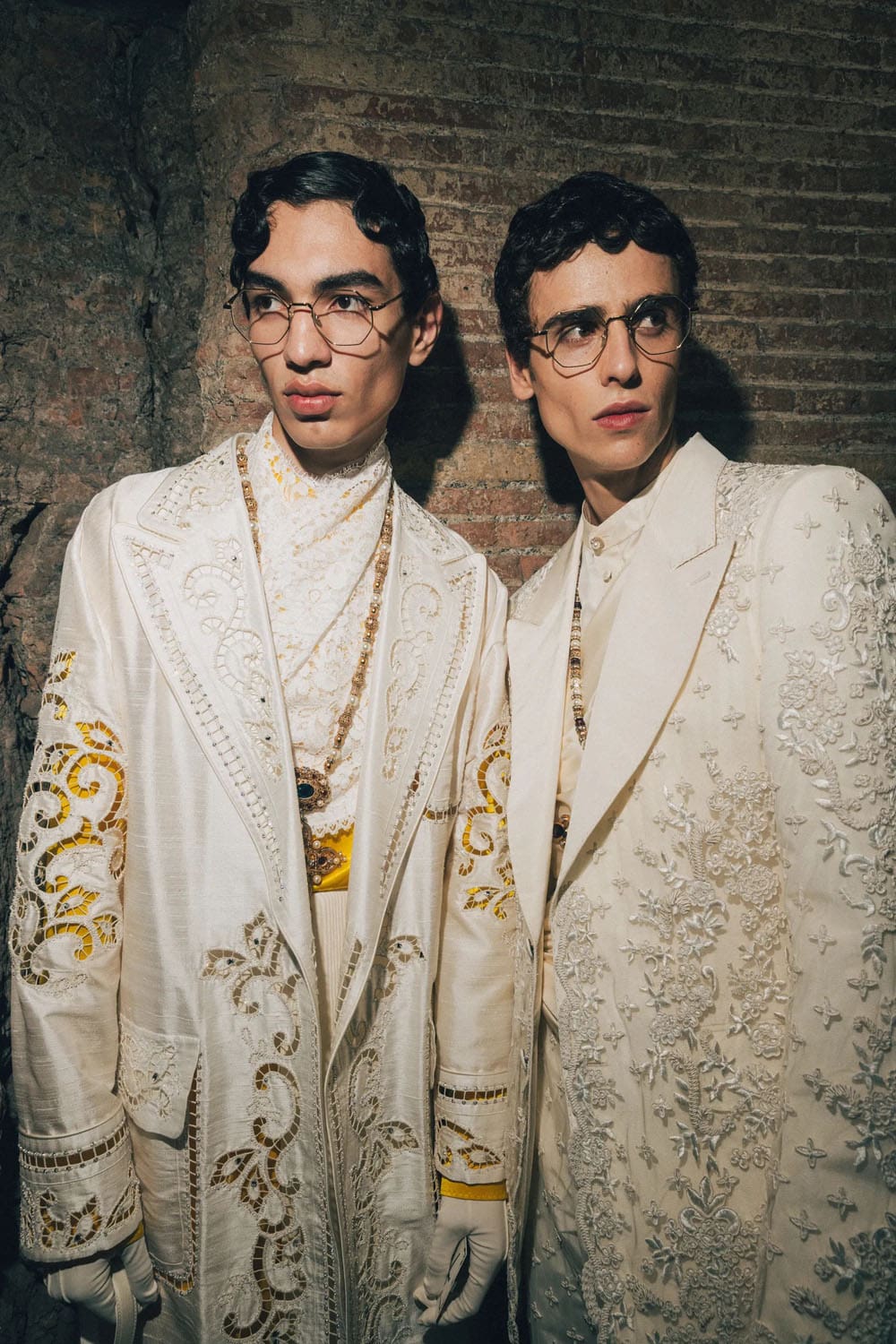
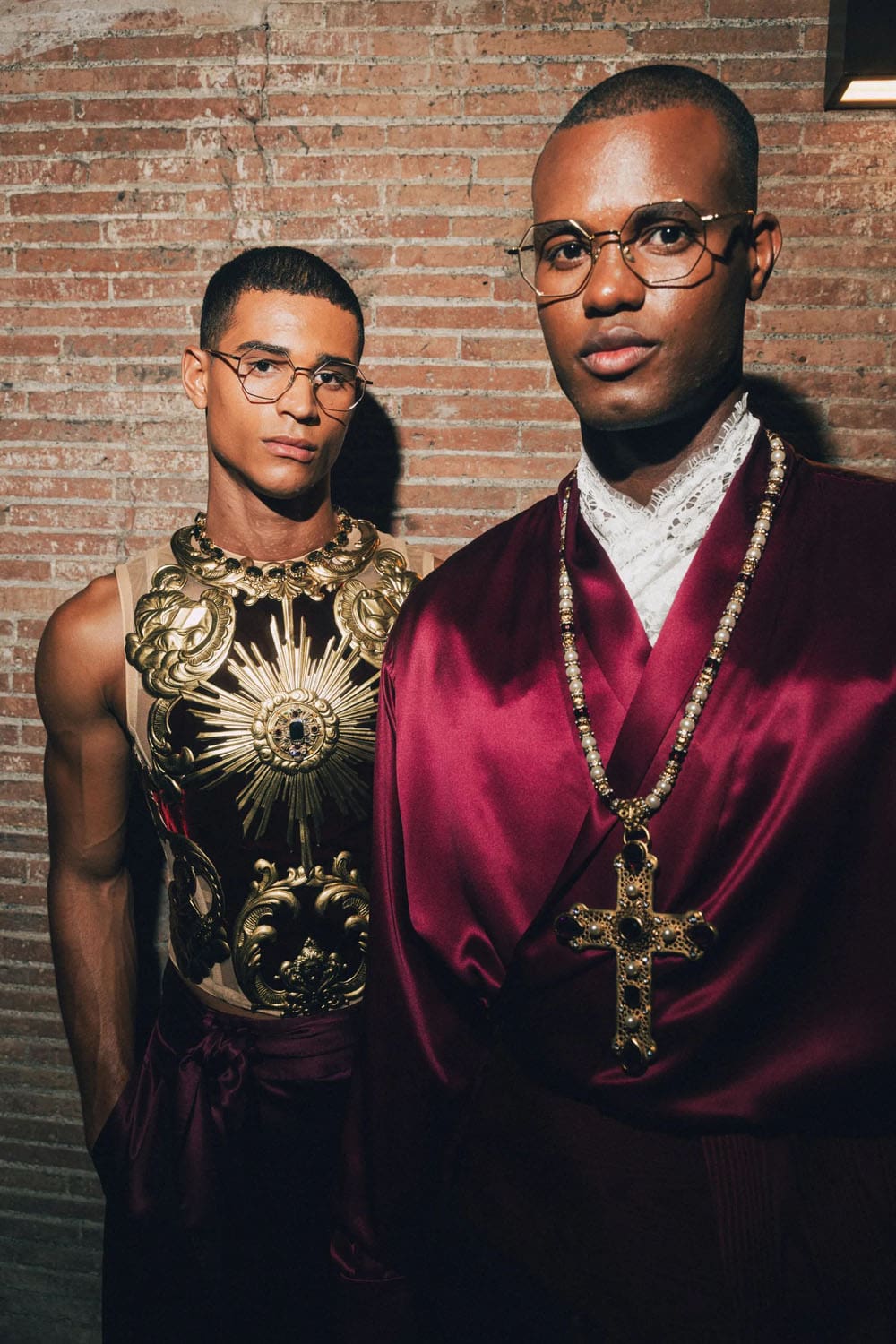
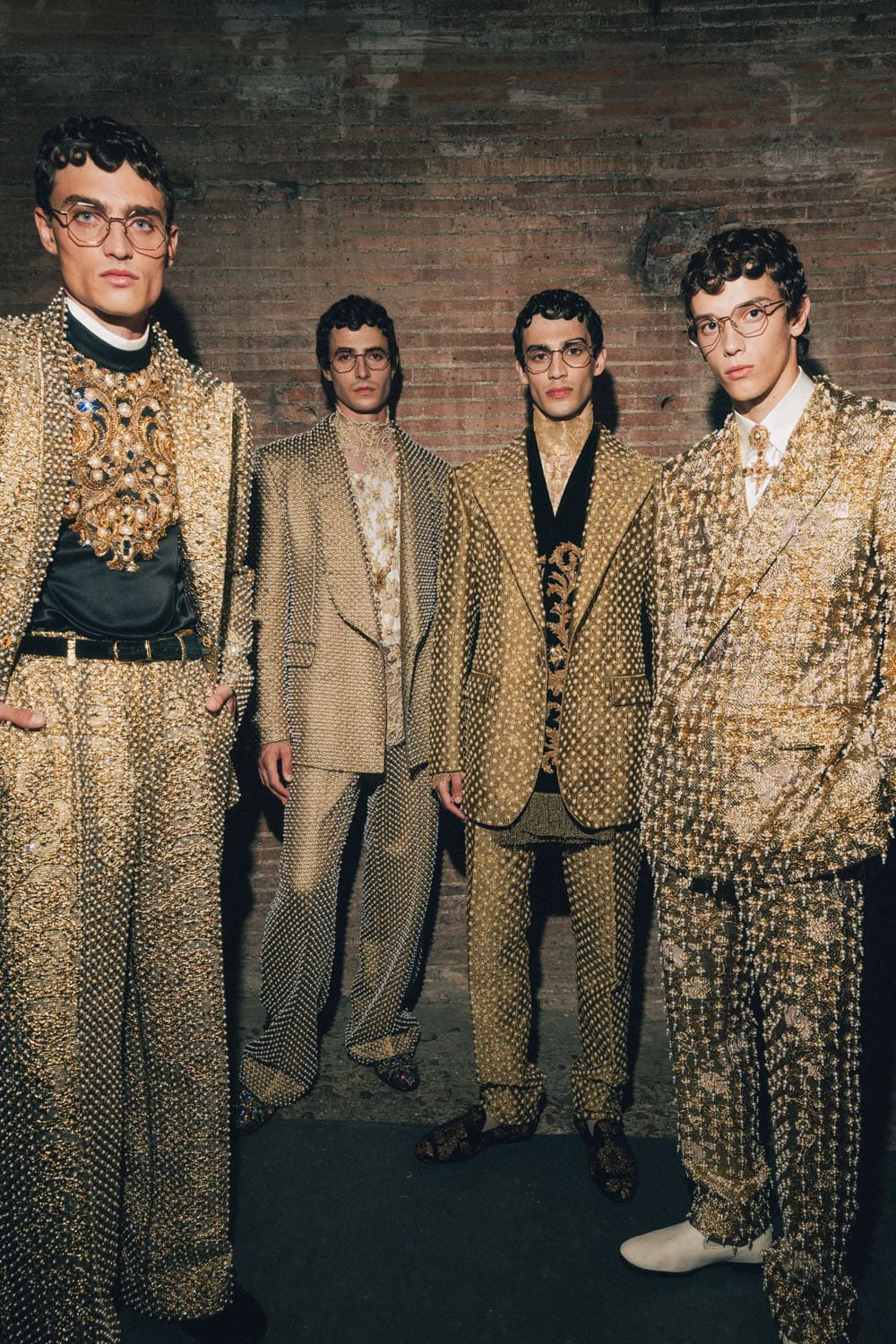
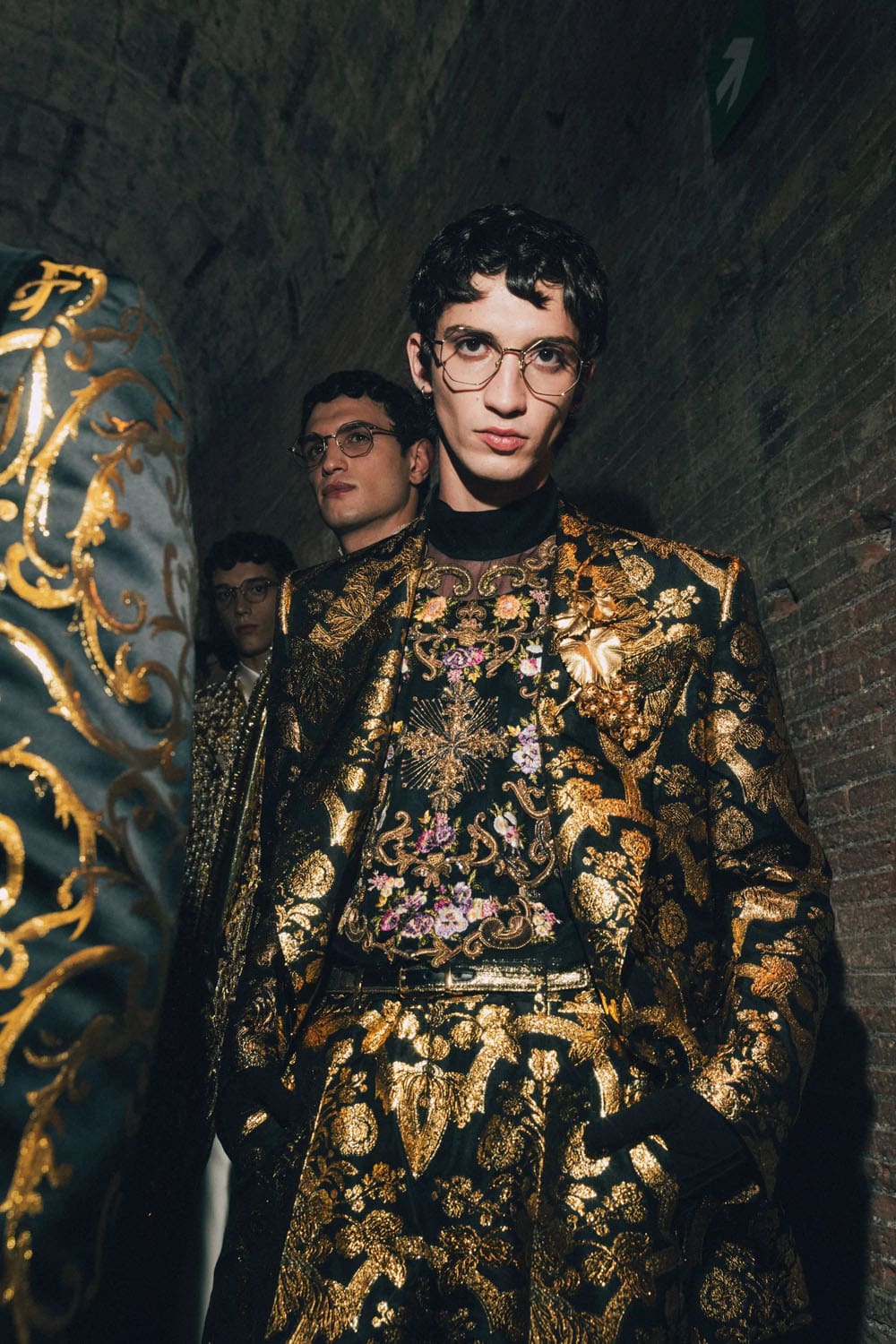
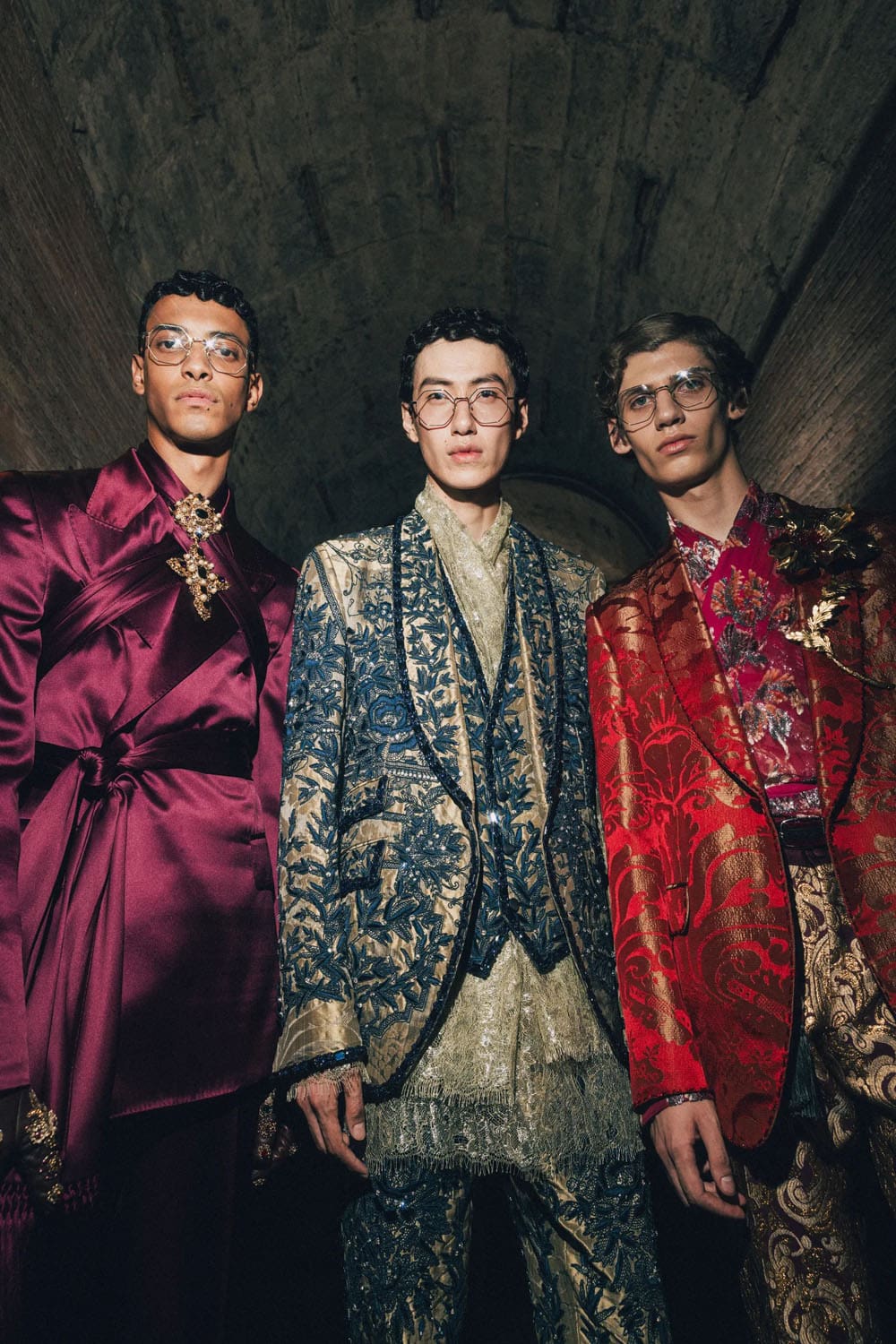
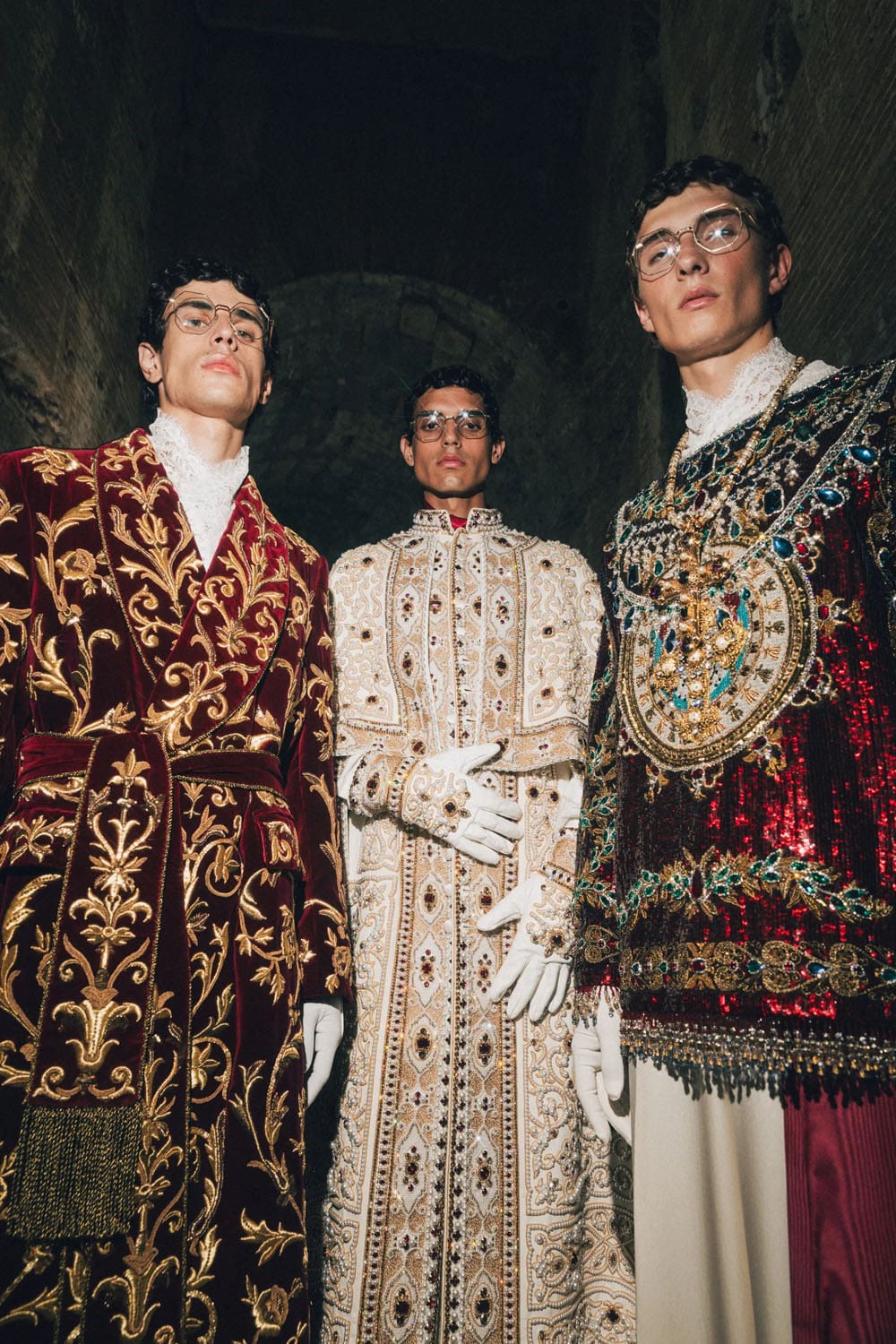
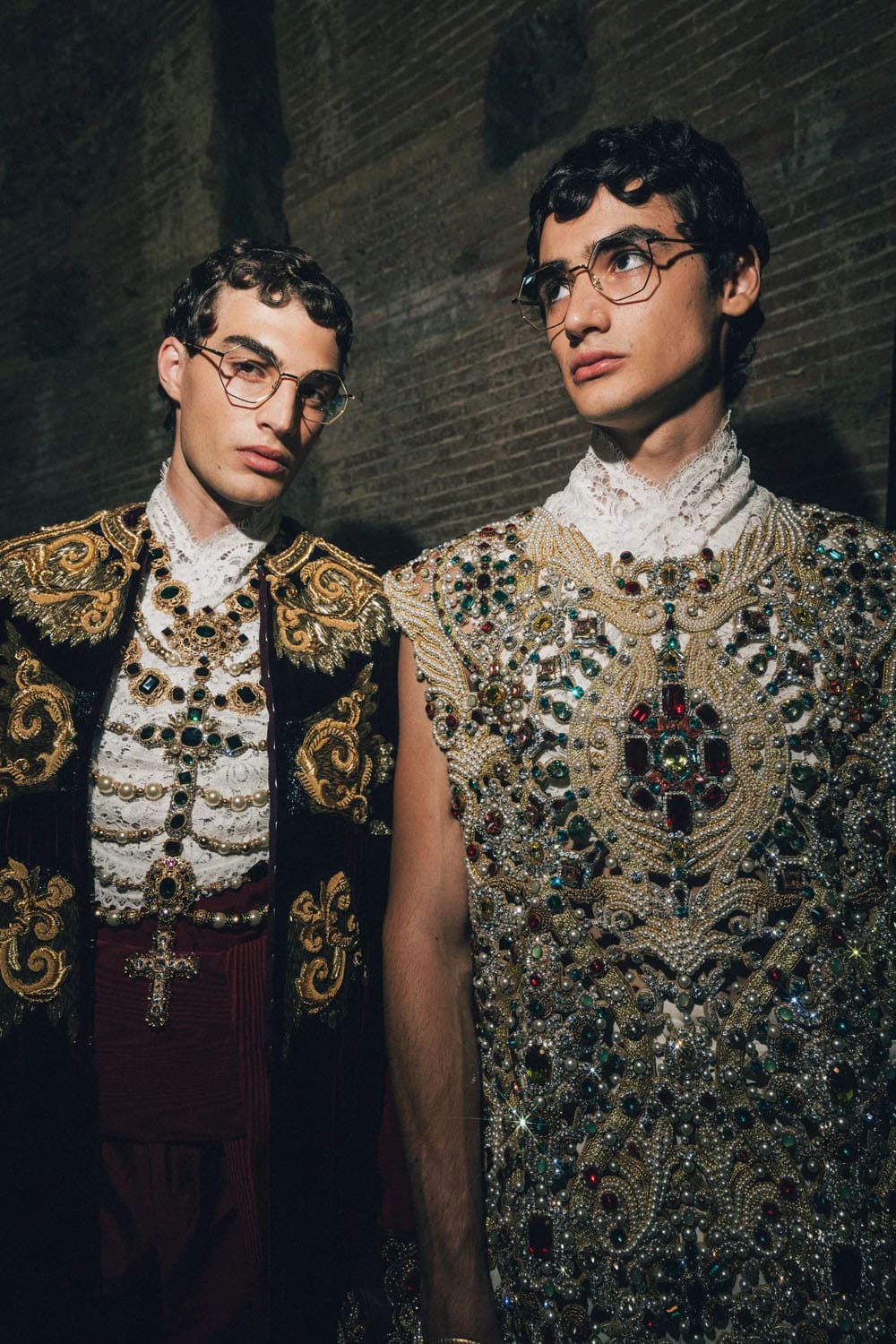
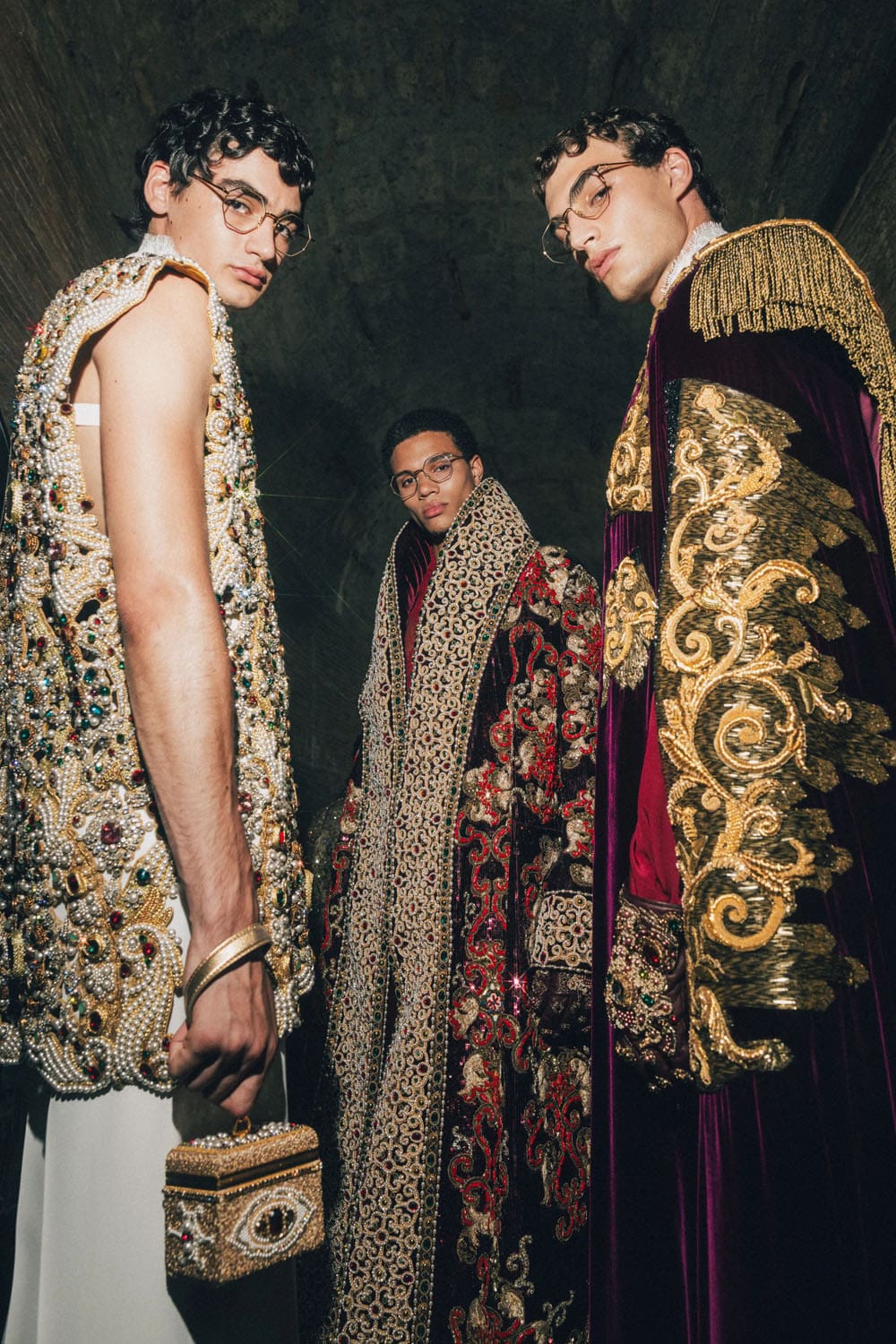
See All Looks Dolce & Gabbana Alta Sartoria 2025 Roma
